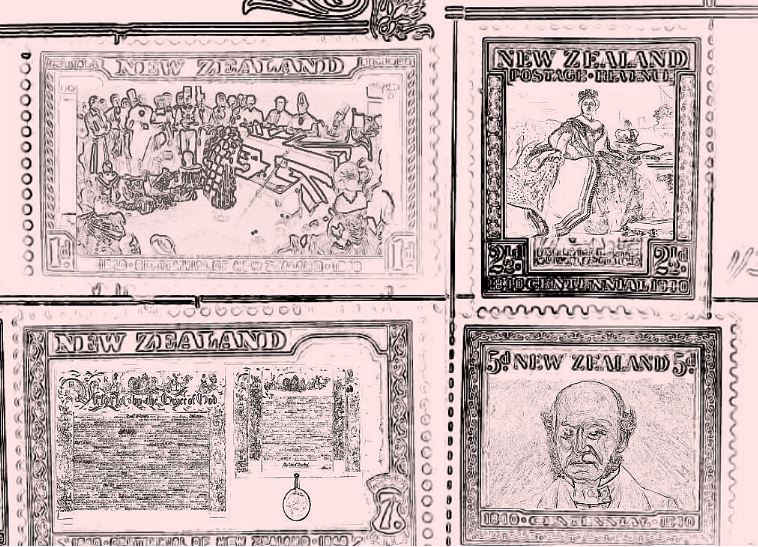How the British Take-over of New Zealand Happened
Overview: In 1839, by her royal seal, Queen Victoria authorized the perfect power crime to swindle full sovereignty from an entire aboriginal and indigenous peoples by pen-quill, parchment paper and treaty theater for the expansionist British Masonic Empire.
Moreover, two parallel tracks — a ‘Treaty Theatre Track’ and a ‘Colonial Law Track’ — were laid during the British takeover of N.Z., as this heretical exposé proves. The Treaty would save face for the Monarch, at a time when annexations drew rebuke.
The Treaty Theatre Track began in June 1831 when future British Resident James Busby essentially outlined his dream job description to make treaties with Māori.
In deed and in design, the 1840 Waitangi Treaty parchments spun with unseemly speed on a fulcrum of deceptive language translation differences, poorly recorded oral promises and a simulation of a sacred covenant. In the language of the imperial power, sovereignty was construed to be willingly transferred.
All the while, full sovereignty was retained in the native language version. The stage production of the ‘Waitangi Treaty Theatre Company’ supplied the documentation to create the nation’s founding myth: cession by treaty.
This epic swindle of bi-lingual innovation was necessitated by the fact that the aboriginal and indigenous people of New Zealand would never consent for their chiefs and chieftainesses to give away their sovereign authority. The Treaty Cliqué later construed that the Treaty Chiefs had consciously and freely signed away sovereignty, without mentioning Māori relied heavily on lying, unprincipled missionaries.
Whereas, the Colonial Law Track was the primary route through which the completion of the annexed title claimed by Freemason Bro. Captain James Cook actually occurred. Indeed, the ‘Endeavour Voyage’ in 1769-1770 was New Zealand’s first travelling theatrical production, while the Waitangi Treaty Theatre was the second big budget show staged to distract, divide and defeat.
The main trunk line of new ‘Colonial Law Track’ was laid in 1839, 1840, and 1841, with the roll-out of legal instruments prior, during and after the hasty hawking of the nine Treaty parchments around New Zealand coast-lines; a feat that swindled signatures and marks from 527 Māori rangatira (or chiefs) and 13 wahine (women). The legal instruments included proclamations, new commissions, swearing-in officials, letters patent, legislation, gazetted notices and a royal charter that solidified the establishment of New Zealand as a separate colony of the British Masonic Empire.
Therefore, this exposé “Deep History of Waitangi: The Queen Victoria Connection”, looks at the 1840 Waitangi Treaty clustered events as part of a broader innovation of trickery — treaties with aboriginal and indigenous peoples. This “Deep History of Waitangi” also reveals the novel twist of swindling full paper sovereignty from an entire people, with the brazen expectation that a chiefly majority would not be gained by peddling the parchment copies around the coastline of the South Pacific Archipelago.
Meanwhile, the final stage of crucial chess moves along the Colonial Law Track were started and finished by the hand of Queen Victoria, of the House of Saxe-Coburg and Gotha. Her Majesty’s seal of approval to circumvent the British Parliament meant that under English Law, her claim of title to the newly erected colony was unchallengeable, despite the inherent fraud.
Four ‘Clanker Moments’ at Waitangi demonstrate that a Treaty Cliqué consciously avoided fully disclosing to Māori there was trickery afoot, while the ‘theatre production’ proceeded with unseemly haste. The contextual facts of these clanker moments remained unspoken at Waitangi and, therefore, they remained ‘at-large’ for historians to piece together later. Until now, however, the four clanker moments have not been identified as such and their deep significance reveals the rivalry between four empires that intersected at Waitangi.
Moreover, Māori at Waitangi were unaware that a secret piece of international law, known today as the Doctrine of Discovery, was applied during the 1840 Waitangi Treaty Theatre. This Discovery Doctrine was ‘transported’ on both tracks, and intersected briefly at Waitangi, where time had been weaponized to gain control over a new territorial-jurisdictional space for the British Masonic Empire.
Steve ‘Snoopman’ Edwards locates his study of this epic heist in empire literature, the revolutionary dynamic model and power crime theory.
The key finding of the “Deep History of Waitangi: The Queen Victoria Connection”, is that the British takeover of Aotearoa occurred by the two parallel tracks — a ‘Treaty Theatre Track’ and a ‘Colonial Law Track’ — and were innovative cunning tricks in statecraft to gain full paper sovereignty over an entire aboriginal and indigenous peoples that could never be repeated, lest the perfect crime became obvious. The decision to opt for a Treaty was pursued to save face for the British Monarch, by achieving the appearance of sovereignty cession to Queen Victoria.
Getting legislation passed in the British Parliament would have attracted the attention of the French, American and Vatican Governments, thereby risking the enterprise to gain a far-flung colony on the cheap, without firing a shot. Amid the complications of running the British Masonic Empire, the imperial ‘need’ to acquire sovereignty over New Zealand occurred at a time when the high priest of British Freemasonry, Lord Palmerston, was planning the first of two wars with the civilization that invented the very medium upon which the fraudulent bi-lingual Treaty copies were written: China.
The significance of the Waitangi Treaty as a theatrical production, or théâtre usurp d’état is the object itself, as a literary device, was designed to distract from the Colonial Law Track. This finding means the 1840 compact was, in fact, a red herring mechanism to sponsor logically fallacious arguments to divide and defeat. The intention was to lead its audience to a false conclusion. The Waitangi Treaty Theater was, in effect, a simulation produced to create a copy of reality to eventually forge subject race pacification.
The Treaty Cliqué responsible for the British takeover of paper sovereignty in the period leading up to, during, and in the immediate aftermath of ‘The Great British Waitangi Treaty Swindle’ are identified as they appear in the narrative. The supposition proven here is that while the Treaty Cliqué raced toward the endgame to capture new political space via a sovereignty payload, they acted like a travelling theater company to weaponize the one physical dimension they could control though emotional hijacking, Orientalist swagger and novelty: time.
“Kua mau tātou ki te ripo. Kāti ka taka ki tua o te rua rau tau ka tū mai te pono ki te whakatika i nga mea katoa”.
“We have been caught in a whirlpool. Alas, it will last for beyond 200 hundred years when the truth will stand to put everything right”.
– Prophet Penetana Papahurihia after the signing of Te Tiriti o Waitangi, 1840 [1]
By Steve ‘Snoopman’ Edwards

British Takeover by Two Parallel Tracks
Māori chiefs, hapū and iwi were manipulated by British agents, missionaries and other settlers, to trek along a track, through incremental steps, to the 1840 Waitangi Treaty, which was a theatre production that traversed the coasts of New Zealand — with unseemly speed.
In the pre-colonial era, many among the aboriginal and indigenous peoples of the South Pacific Archipelago, New Zealand, were led to believe that by their own agency in such steps, that they would retain their mana and tino rangatiratanga, or sovereignty authority, as self-determining people.
A revolutionary long-game was played, where time was ‘quickened’ around such events so that the British side achieved their objectives at every incremental step, amid set-backs. By weaponizing time dawn to dusk, and dusk to dawn, this periodically sped-up fourth physical dimension became the key mechanism to gain a new territory for the British Masonic Empire, until the job was ‘done and dusted’.
It turns out, two parallel tracks — a ‘Treaty Theatre Track’ and a ‘Colonial Law Track’ — were laid during the British takeover of New Zealand.
The main trunk line of new ‘Colonial Law Track’ was laid in 1839, 1840, and 1841, with the roll-out of legal instruments prior, during and after the hasty hawking of the nine Treaty parchments around New Zealand coast-lines; a feat that swindled signatures and marks from 527 Māori rangatira (or chiefs) and 13 wahine (women). The legal instruments included proclamations, new commissions, swearing-in officials, letters patent, legislation, gazetted notices and a royal charter that solidified the establishment of New Zealand as a separate colony of the British Masonic Empire.
Crucially, when Queen Victoria’s Royal Prerogative Powers were used on three instrumental occasions prior to and after the Waitangi Treaty signings, none of the three legal devices made under the Great Seal of the United Kingdom, mentioned the mode of sovereignty acquisition. The three legal devices were: Letters Patent of Boundary Extension to expand the jurisdiction of New South Wales to envelop the islands of New Zealand on June 15th 1839; Letters Patent of Amended Commission, which appointed New South Wales Governor George Gipps as the first Governor of New Zealand, and appointed Captain William Hobson as Lieutenant Governor over the new dependent colony of New South Wales by Her Majesty’s Command on July 30th 1839; and a Royal Charter for Severance (or Charter of 1840), which was signed by Queen Victoria to establish New Zealand as a separate colony on 16th November 1840. Thus, the Treaty was omitted from these legal devices.
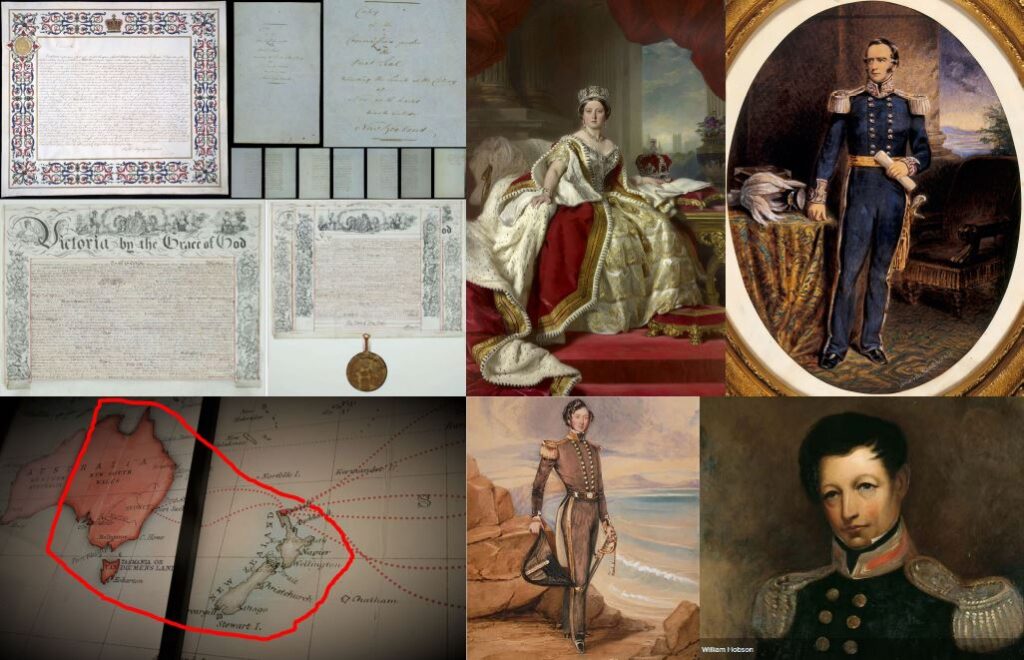
The ‘Treaty Theatre Track’ began in June 1831, when James Busby outlined a policy he published in England, titled “Brief Memoir Relative to the Islands of New Zealand”, in which the future British Resident wrote his dream job description. As a wannabe British agent, he aspired to have the power to make treaties with Māori. This sketch for a Treaty Theatre Track advanced on October 5th 1831 with a letter signed by 13 rangatira asking King William IV for his protection.
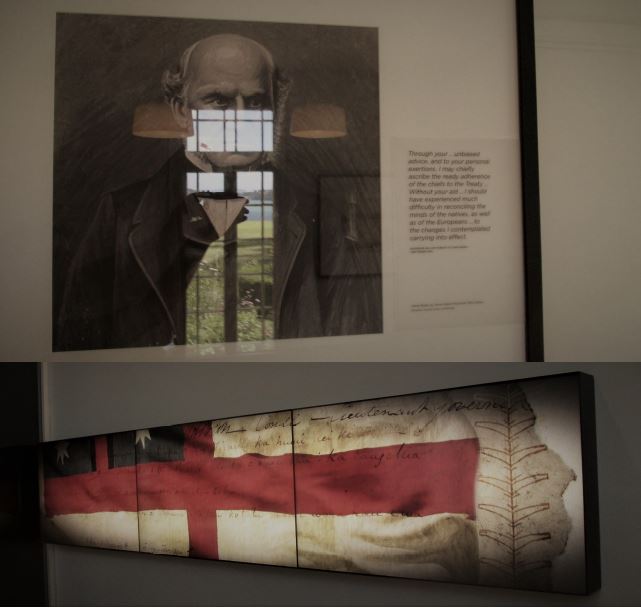
The Treaty Theatre Track took form with the ‘apparent’ joint British Resident-rangatira initiative to reach an ‘agreement’ over a National Flag for Shipping in 1834. Busby’s subsequent goading of Chief Rete soon after should have raised alarm bells that Busby’s pretensions to authority were a thorny matter that needed to be nipped in the bud. Busby had interfered with the logging trade of the rangatira’s hapū (or family group), which led to the precedent-setting punishment that was New Zealand’s first British-inflicted land confiscation.
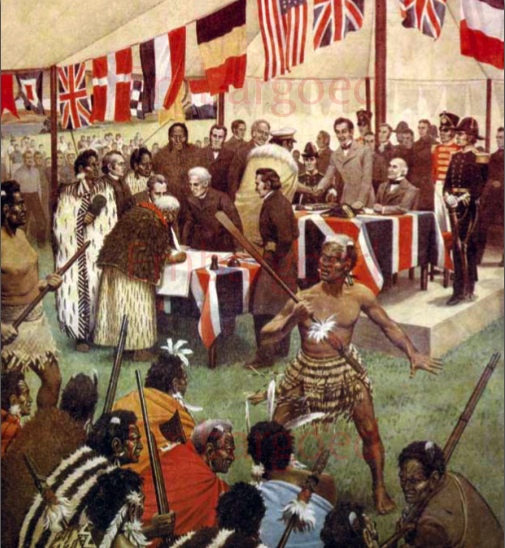
This track to the treaty was further advanced with the 1835 ‘Declaration of Independence of the United Tribes of New Zealand’, creating the edifice of an ‘independent state’. More Treaty track was laid by Captain William Hobson’s Factory System plan of 1837 which proposed a treaty for settlements, although the plan itself was not implemented.
All of these moves culminated in the 1840 Te Tiriti o Waitangi, accompanied by its evil English language non-identical twin. The Treaty Signing Rituals not only served to defuse Māori resistance by tricking the Treaty Chiefs and Chieftainesses that they would retain their sovereign authority and power, while saving face for the British Parliament, the British Monarch and the British Crown’s fraternal crown twin, the City of London Municipal Corporation.
The incontrovertible fact is that the Waitangi Treaty Signing Rituals were a hostile stage production performed to takeover the Māori nations, or a théâtre usurp d’état. The object itself was a literary device designed to distract from the Colonial Law Track upon which the tenuous claim to sovereign title was first acquired by boundary extension with a Letters Patent and subsequently ratified with a Royal Charter to erect a colony. This finding means the 1840 compact was a red herring mechanism to sponsor logically fallacious arguments to hook enough Māori, and — subsequently — divide and defeat the tribal race. The intention was to lead its audience to a false conclusion, whom would not comprehend the Waitangi Treaty Theater was, in effect, a simulation produced to create a copy of reality intended to eventually forge subject race pacification during and after the consolidation stage of what was, in fact, the New Zealand Masonic Revolution.
In his 2006 book, Waitangi and Indigenous Rights: Revolution, Law & Legitimation, Emeritus Professor of Law at Auckland University, Jock Brookfield, argued the Treaty signings set in train a revolutionary seizure of power with Captain Hobson’s proclamations of May 21st 1840 — that upended Māori customary law and pulled off “a large scale robbery”. Brookfield asserted it was implausible that Māori agreed to the full transfer of sovereign power that the British Crown claimed in 1840 and subsequently enforced by various acts. Moreover, the British Crown took from chiefs who did not sign the Treaty, and therefore power was assumed and exerted over those hapū who ceded nothing. The Auckland University professor makes the case that the seizure of power was a silent revolution and legal from the perspective of British law at the time, but a breach of Māori customary law.
In fact, the seizure of power was usurpation since a revolution is the upending of a social order by people already living in the society.
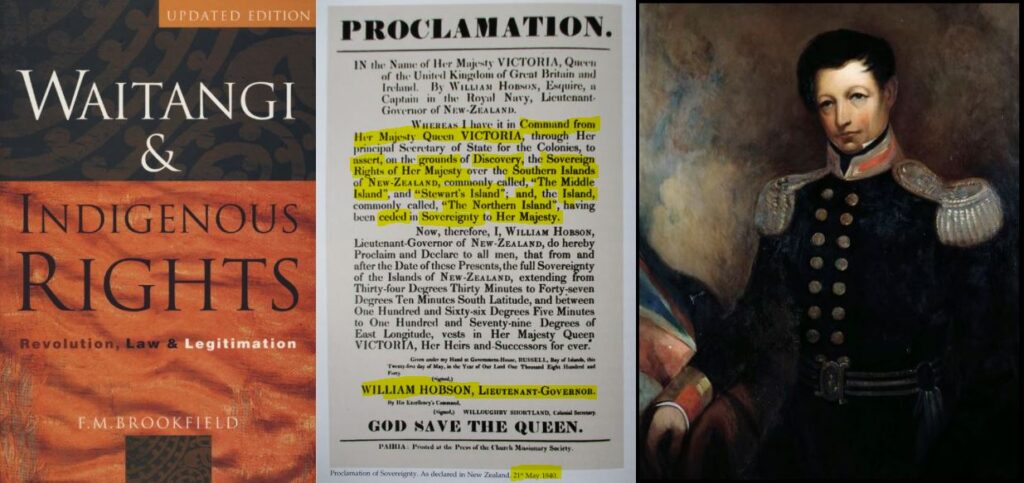
Therefore, the usurpation that occurred in 1839 and 1840 was a usurp d’état rather than a coup d’état, which is a sudden violent seizure of power of a state. Because Māori outnumbered settlers and foreigners by 50 to one in 1840, and because Britain did not have any apparatus in place to sustain a takeover, an attempted coup d’état would have drawn the wrath of Māori and any chance of colonization would likely have gone to the French. Similarly, concocting a false flag coup d’état, such as assassinating a Māori chief, with blame cast on the French would have been more complicated, highly risky and likely quickly unravel.
But, the British takeover of New Zealand still required trickery.
More precisely, a théâtre usurp d’état was opted for, in which a cliqué formed to orchestrate, in essence, a Treaty Theatre Production Company that would script the trickery, hire a theatrical troupe and commandeer improvisational actors to assist in the mission to persuade.
Meanwhile, the legal mechanics of the heist occurred by a parallel track.
This parallel track was detected by Norman Arthur Foden, whose 1938 work — The Constitutional Development of New Zealand in the First Decade (1839-1849) — proved that New Zealand was acquired by the British Empire on the basis of occupation on June 15th 1839, when the South Pacific archipelago became a dependent colony of New South Wales. By means of a Letter Patent device to erect a dependent colony, the British Crown adopted the unauthorized British settlements, and therefore sovereignty was wrested by usurpation through the Colonial Law Track legal moves.
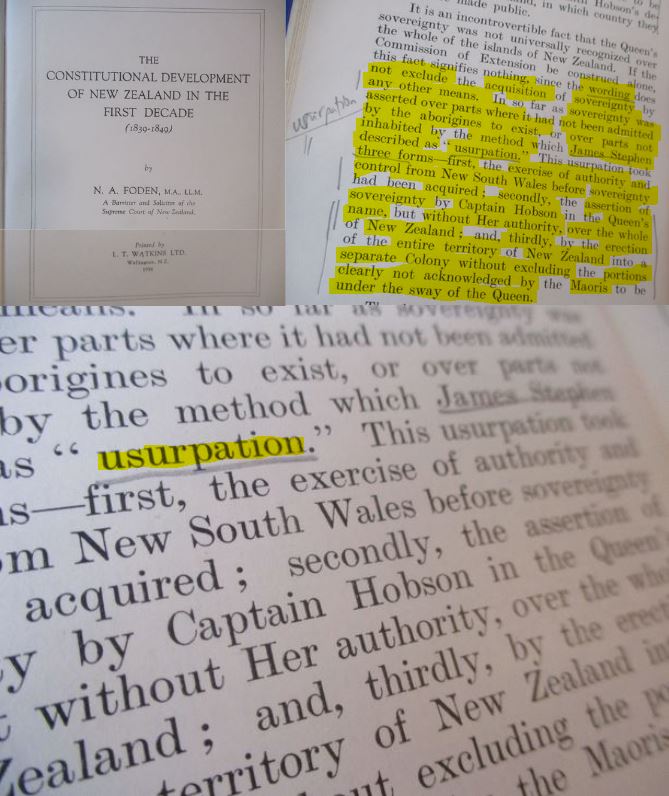
Although Foden — who was a barrister and solicitor with the Supreme Court of New Zealand — did not name a parallel Colonial Law Track as such, he identified the legal moves that were consistent with English Constitutional Law. The legislation for the acquisition of the Colony made it legal for the Monarch to sign the Royal Charter of New Zealand on November 16 1840. The accompanying Letters Patent device to erect a separate colony was timed to occur after the treaty sheets arrived in London — to make it appear the Treaty was the means by which sovereignty was acquired. Once Queen Victoria’s Letter Patent of Severance and the Royal Charter of New Zealand were ratified with the Privy Seal of the United Kingdom, the British Crown’s title became unchallengeable by British subjects, under English Constitutional Law, and was recognized by other nations under International Law.
This re-framing of what occurred in 1839 and 1840 does not mean a revolutionary dynamic was absent. Since a seizure of power occurred in 1839-1840, power crime theory provides a critical lens to view these historical events, which occurred in haste.
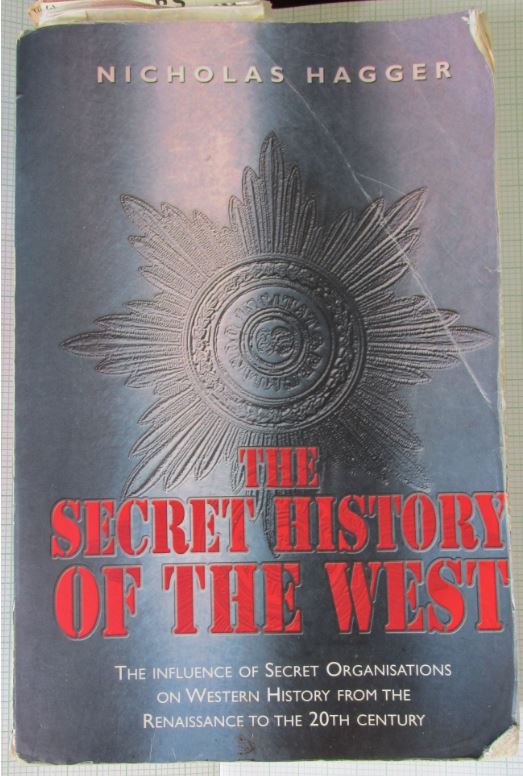
In his epic 2005 study, The Secret History of the West, English historian Nicholas Hagger modelled the patterns of revolutions, how subversive secret societies plotted them and the reasons for the subterfuge. Drawing upon 550 years of revolutions, Hagger shows that all revolutions have four distinct stages with four archetypal characters. An Occult Idealist expresses a heretical vision, which is given an intellectual expression by an Intellectual Interpreter. A Political Actor takes this blueprint into the political realm, where it is corrupted by the ruling regime, and led by a Consolidator, those secret groups most invested in the occult vision plot physical repression to realize their utopia.
Since a seizure of power occurred in 1839-1840, power crime theory provides a critical lens to view these historical events, which occurred in haste. Élite criminal groups exploit the speed of high-velocity engineered events to distort perceptions about the facts of events that overtake “low velocity political deliberation and public accountability”, as Monash University senior lecturer of public international law Eric Wilson has explained. In the process, the splicing of space and time and kinetic image sequences depicted in newsreel frames mask the speed-politics with a copy of reality, thereby rendering the in-built power crimes invisible. Although Wilson’s exploration of power crimes is located in a modern context of violent coups d’état committed with scripted false-flag cover-up scenarios, his modelling is applicable to the Waitangi théâtre usurp d’état. Since the mission to Treat with ‘the natives’ was intended as an epic heist of sovereignty over Māori, whether they signed or not, the witting players of Waitangi Treaty Theater Production were acting as a criminal group in breach of Māori customary law.
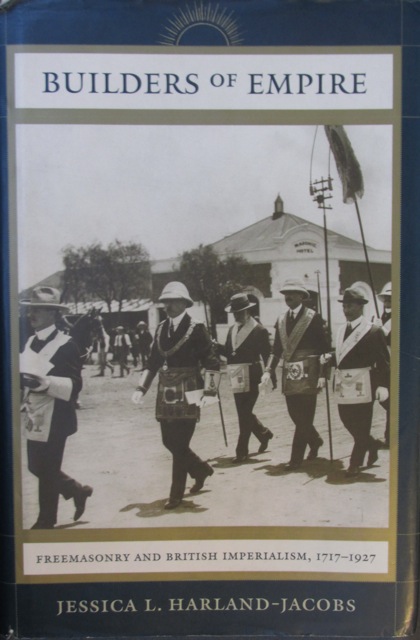
This historic travelling theatre production is perhaps best viewed as a Masonic imperialist expression of applied ‘Orientialism’ masked by a humanitarian mission to formalize the mechanisms wherein New Zealand would be coded, chronicled and conquered under a British banner. The primary secret mechanism by which the British Empire spread throughout the ‘New World’ was through the subversive secret society of Freemasonry. In turn, Freemasonry was spread mostly through the military regiments, including the navy, as Jessica Harlands-Jacobs stated in her book, Builders of Empire: Freemasonry and British Imperialism, 1717-1927.
The Masonic lodges created a private model, mechanism and mask for public affairs that multiplied by warranted dispensations, or licensed charters, to operate a secret membership based on a closed system of constitutional government, whose key oath was to always follow orders from above. At its core, the Masonic Lodge System served the ideological function of activation to unite against a common enemy with a subversive private parallel political, commercial, martial and cultural structure that spread from the ‘Old World’ to operate in new ‘Masonic jurisdictions’ of the ‘New World’ for its re-ordering either by Masonic Capitalism, Masonic Socialism, or Masonic Communism. This meant Freemasonry became a key conduit for the marketing ideas of European superiority among an international network of loyal men whom forged the capacity to act as a subversive confederacy to undermine aboriginal and indigenous nations for their subjugation, de-tribalization or extermination — depending on the circumstances.
In his seminal 1979 book, Orientalism, Edward Said, observed that events in the Orient of the Near, Middle and Far East, North Africa and the ‘New World’ were repeatedly turned into theatre to save the events from oblivion by ‘Orientalists’, or Europeans aiding the categorizing, Christianizing and colonizing projects. The modus operandi of the Orientalist, was to consult ‘the natives’ for a text whose usefulness was not to aboriginal and indigenous peoples; a practice that stretched back to at least the second century B.C.
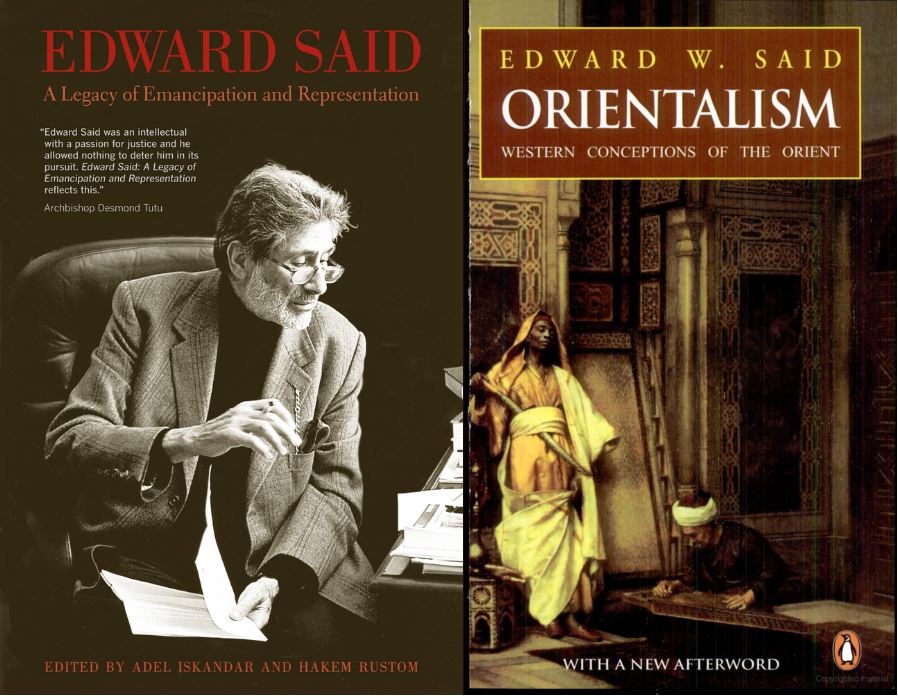
Said summarized Orientalism’s tropes that condescendingly cast aboriginal and indigenous peoples of the Orient and consequently the ‘New World’ as being depraved, childlike, irrational, barbaric savage natives, whom were considered inveterate liars, gullible, devoid of energy and initiative. The Western habit for domination, restructuring and having authority over the Orient, involved surveying a civilization from its origins, its prime and its decline to gain and possess knowledge of a civilization, with the result that such surveys could translate into dominating and holding authority over a civilization and denying such a people any substantial autonomy. For example, deviations from behaviours expected of ‘subject races’ were considered unnatural, promiscuous or criminal since the Orientalist paradigm viewed ‘Orientals’ as backward in comparison to the ‘self-evident truth’ of European superiority.
The Orientialist tropes were weaponized as a technique to faster, friendly terms with ‘the natives’, while extracting the wealth of resources, exploiting the labour of aboriginal and indigenous peoples and dispossessing their ‘wild savages’ of lands. In these stealthy ways, occupied lands became a laboratory, a theatre and the province for appropriation of knowledge in projects of subject race pacification for more profitable sequences of information to produce wealth, power and control.
Poignantly, Said contended that it is crucial to examine European recordings of the Orient as a discourse in order to comprehend the enormously systematic discipline, management and reproduction of the Orient politically, sociologically, militarily, ideologically, scientifically, and imaginatively during the post-Enlightenment period, from 1800A.D. onward. Fascinatingly, Said noted that though the French and British were at times hostile rivals with great empires, they were at other times, allies and partners, whom also shared land, profit, or rule and crucially intellectual power, in effect, through creating a library or archive.
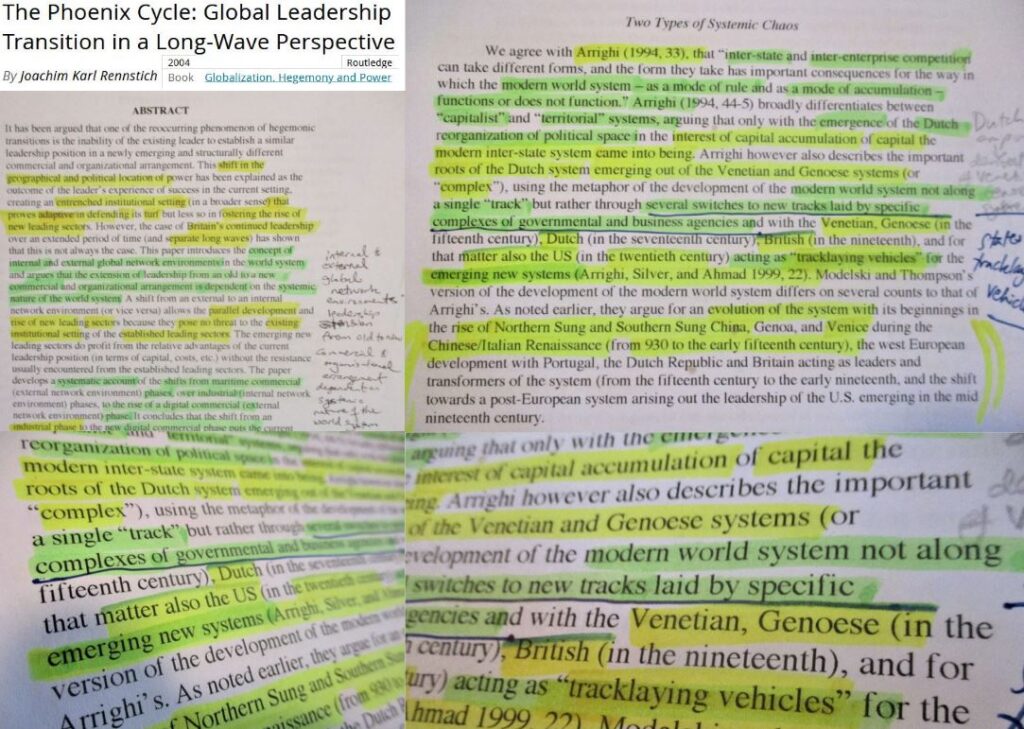
To this end, I — Doctor Thunk Evil Without Being Evil — have applied Giovanni Arrighi’s metaphor of ‘track-laying vehicles’ in state formation from his 1994 book, The Long Twentieth Century: Money Power, and the Origins of Our Times that Joachim Karl Rennstich drew upon in his paper, “The Phoenix Cycle: Global Leadership Transition in a Long-Wave Perspective”. Arrighi described how the modern world system was constructed by public state and private enterprise complexes that activated ‘switches’ to new ‘tracks’. Rivalrous major powers invent new tricks to gain supremacy. With this triangulated approach of empire and power crime revolutionary theories, I present a model with sharply focused lenses to reveal the internal revolutionary logic, dynamism and cast of conspiratorial characters underpinning the Waitangi théâtre usurp d’état.

Treaty Theatre Track – From Busby’s Dream Job to Te Tiriti o Waitangi 1840
In his 2014 book, Beyond the Imperial Frontier: The Contest for Colonial New Zealand, historian Vincent O’Malley stated, “Busby’s role as an agent of socio-cultural and political change among the northern tribes” had for a long-time escaped the scrutiny that his machinations deserved. In the chapter “Manufacturing Chiefly Consent? James Busby and the Role of Rangatira in the Early Colonial Era”, O’Malley wrote:
“from the outset Busby had set about challenging existing northern leadership and governance structures in his efforts to manufacture a more centralised form of government, open to his ready manipulation on behalf of the British Crown.” [2]
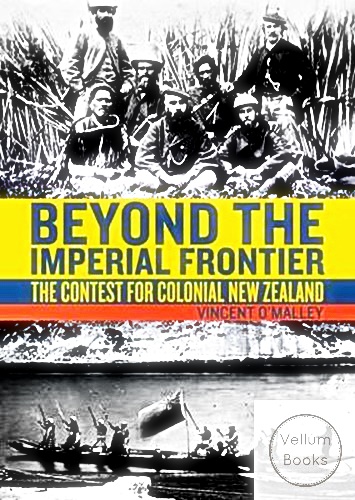
Tellingly, in a letter to his brother, Alexander, James Busby explained he intended to gain “almost entire authority over the Northern part of the island” by developing ties with rangatira — as O’Malley recounted.
The British Resident was likely advised by the Protestant missionaries of the Church Missionary Society that his objective to construct a Confederacy would only succeed if the chiefs believed they were authors of such collective action — as Samuel D. Carpenter found his 2009 report — “Te Wiremu, Te Puhipi, He Wakaputanga Me Te Tiriti Henry Williams, James Busby, A Declaration and The Treaty” commissioned by the Waitangi Tribunal.[3]
Busby assumed Māori had never conceived the ‘idea of confederating for any national purpose’ and he believed New Zealand to be territories of tribes whose independent-minded chiefs could be lured into forming the appearance of a national government.
In a field-study commissioned by Kuia and Kaumātua of Ngāpuhi, Ngāpuhi Speaks, it was asserted that the Northern Alliance chiefs had maintained a custom of gathering known as Te Wakaminenga that dated back to 1808, following the Ngāti Whātua tribe’s victory over Ngāpuhi in the Northland battle of Moremonui at Maunganui Bluff, in 1807, at the beginning of the Musket Wars (1806-1845). Other issues arising from European contact were also discussed at the Te Wakaminenga meetings, including international trade, land loss and challenges to tikanga, or cultural practices. These Te Wakaminenga gatherings, which are referenced in Article One of the Māori language He Whakaputanga o 1835, did not usurp or over-ride hapū autonomy, and if there was consensus reached, the agreements were not binding – the ground-breaking Ngāpuhi Speaks study found.[4]
In June 1831, James Busby outlined a policy published in England as a “Brief Memoir Relative to the Islands of New Zealand”, in which he wrote a job description for a magistrate to live among Māori. Busby proposed to acquire a modest piece of land by contracting with the chiefs, and to be empowered to make treaties with rangatira, and to set up a trade prohibition to exclude Europeans from such a district.[5]
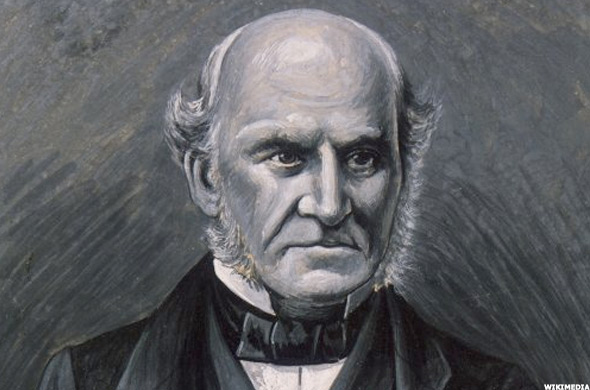
Later in 1831, a letter of petition that was signed by 13 Māori chiefs by way of moko drawings, was sent to King William IV asking for the King’s protection.[6] The petition of October 5 1831, which was likely drafted by William Yate and Eruera Pare Hongi, has the clear hand of a Protestant missionary’s agenda, specifically Reverend Henry Williams. In September 1831, a rumour had spread that a French ship was coming to invade and evidently caused much alarm in the Bay of Islands, and several rangatira approached Reverend Williams to seek protection from King William IV. A French corvette, La Favorite, arrived on October 3. The ‘Letter to King William IV’ emphasized the concern of Māori chiefs who had been manipulated into thinking ‘the Tribe of Marion’ (the French) was at hand, coming to take away their land.[7]
In an oral and traditional history report, “He Rangi Mauroa Ao te Pö: Melodies Eternally New”, Associate Professor Manuka Henare, Dr Angela Middleton and Dr Adrienne Puckey state that ‘Northern Māori oral tradition … does not record any alarmist tendency from among Māori about French intentions to take over the country’.[8] This 600-page report, which was received by the Waitangi Tribunal in 2013, frames this event as a continuation of ‘a dialogue of equals’, in this case between the thirteen signatories — Wharerahi and Rewa (Patukeha), Te Haara, Patuone and Waka Nene (Ngāti Hao), Kekeao, Titore, Tamoranga, Matangi, Ripe, Atuahaere, Moetara and Taunui – and King William IV.
However, this ‘dialogue of equals’ is bunk rhetoric that short-fuses critical thinking brain circuitry.
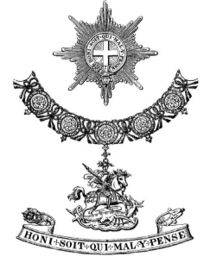
For one thing, William IV was the Sovereign Head of the English Order of the Most Noble Order of the Garter, which is England’s most prestigious dynastic order. The Order of the Garter was founded in 1348, by King Edward the Third, eleven years into the First Hundred Years’ War fought over the Kingdom of France, and marked the decline of feudalism and the rise of nationalism and the commercial revolution, which was enabled by the credit revolution innovated by the Knights Templars. The core of Western Civilization was conquered by an imperialist state: by Henry V’s England around 1420 resulting in chivalry being circumvented with commercial capitalism. This Order of the Garter features the St George’s Cross, St George and the Dragon, and not surprisingly, given the Cult of St George, this legendary character is the patron of all knighthoods, according to Orders and Decorations, written by Václav Měřička.[9] Indeed, new knights are often announced on St George’s Day. The Royal Monarch always becomes Sovereign Head of the Order upon ascension to the British Throne, which is located in the British House of Lords in Westminster City.
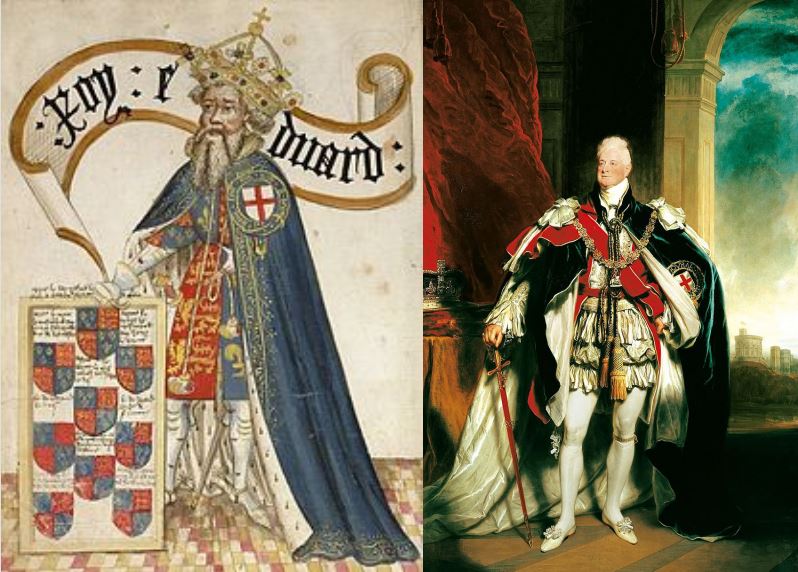
Meanwhile, in a letter dated November 10th 1831 that Busby wrote from London to his brother, New Zealand’s future British Resident proposed that he become “the authorised agent of the British Govt. in treating with the Native Chiefs [of New Zealand] for the Mutual protection of their own people and of the Europeans…”, and in doing so, signaled that through his agency, the Treaty Track could advance.
In March 1832, Busby sent his Brief Memoir Relative to the Islands of New Zealand to the Secretary of State for War and the Colonies of Britain, Lord Viscount Goderich, in which he hinted at French designs to takeover New Zealand and also of Russian interest in the South Pacific archipelago. With the support of missionaries, and the favourable impressions he made on the Colonial Office, and helped along with a tasty bribe of 40 bottles of wine produced at his vineyard in New South Wales — Busby was awarded the post as British Resident.[10]
Thus, the appointment of New Zealand’s first British Official occurred through the grand imperial tradition of bribery, fear stoking about imperial rivals and missionary testimonials to pass the political hygiene test.
Busby would be afforded the protection from the Vice-Admiral of the Indian Squadron, Sir John Gore, who was ordered to deploy ships to visit principal harbours of New Zealand as frequently as possible.[11] This protection was symbolic, since the ships would simply act as a presence to remind all foreigners that the British Royal Navy were the water police of a transmarine empire.
The response attributed to King William’s ‘mind’ came through a letter written by the high-ranking Secretary of State, Lord Viscount Goderich, who feigned to accept the rangatira communiqué of “friendship and alliance with Great Britain”. This letter carried the same date, 14 June 1832, as Goderich’s instructions for the British Residency appointment. Busby had suggested an audience with the King before his departure to elevate his esteem in the eyes of the chiefs. However, such a meeting risked embroiling the British Monarchy in the machinations Busby would author.
This idea was rebuffed.
The logic of power suggests it would not suit the British Empire’s long-game to have the King so directly endorse their point-man for reeling in their big catch, with so little expended in fishing tackle and bait. It was Goderich’s letter that Busby read on his arrival to a gathered audience of rangatira.


After all, rangatira had been led to believe that the encounters between chiefs Hongi Hika and Waikato with King George IV in 1820 signified the beginning of this ‘dialogue of equals’, rather than of two fish taking the bait on two hooks of a very long imperial line. Chief Hika attempted to forge an empire by escalating the Musket Wars upon his return by trading the gifts he and his nephew Waikato had received in London, for muskets, gunpowder and cash.
By the time of his arrival in Peiwhairangi, the Bay of Islands, on May 5th 1833, Busby “resolved to bend the whole strength of my mind to effect this object” toward a Confederation of Chiefs.[12] After twelve days of badly behaved weather, Busby came ashore and read Goderich’s letter to an audience of 22 high-ranking rangatira and more than 600 other Māori.
By exquisite serendipity, New Zealand’s first British official had learned of the woes of Māori shipping before departing for New Zealand at Port Jackson, Sydney, from a ship owner, Joseph Hickey Grose, who sought his help to get his impounded ship registered. Customs Authorities had a ship, named the New Zealander, impounded in January 1833 for failure to be registered as a trading vessel and to fly a national flag.[13] This incident followed the November 1830 impounding of the Sir George Murray, with the Hokianga high chiefs and part-owners, Patuone and Te Taonui, on board.[14] Because New Zealand had become a foreign territory to the Colony of New South Wales in 1823, and was not a recognized power, the aboriginal and indigenous-owned vessels could only be placed under the flag of a ‘friendly power’ once all the signatory chiefs’ marks were gathered, and provided, the ships were three-quarters crewed by ‘natives’ — then such ships could ply their wares under the Reciprocity Act.[15]
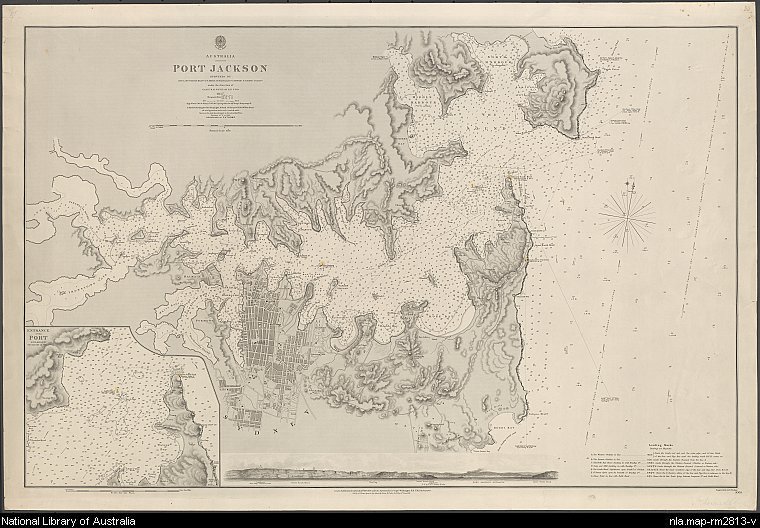
As the Waitangi Tribunal noted in its 2014 report, “He Whakaputanga me te Tiriti’:
“Busby astutely recognised that the issue provided an opportunity for him to draw the chiefs – who would probably never have contemplated ‘confederating for any national purpose’ – into working in concert. After his arrival in New Zealand, therefore, and a few days even before he was presented to Bay of Islands Maori, he outlined his plans to the Secretary of State of War and the Colonies, for the rangatira to come together and choose a national flag for New Zealand-built ships. He himself would undertake to certify the chiefs’ registration of the ships, but only if two-thirds of them agreed upon a flag design and petitioned King William to have it respected. Through this precedent he hoped the chiefs would ‘consent that they will henceforth act in a collective capacity in all future negotiations with me’, with the ensuing ‘confederation of chiefs’ providing the basis for an established Government’.”[16]
Evidently, Māori maritime commerce needed saving from the maw of the British Dragon of Maritime Traffic Infringements and it was lucky that British Resident James Busby just happened to ‘hear’ of its peril while at Port Jackson. After this serendipitous encounter, Busby exploited the matter to get a national flag for Māori shipping as a cause célèbre mechanism to weld rangatira into a formalized collective federation of national purpose.
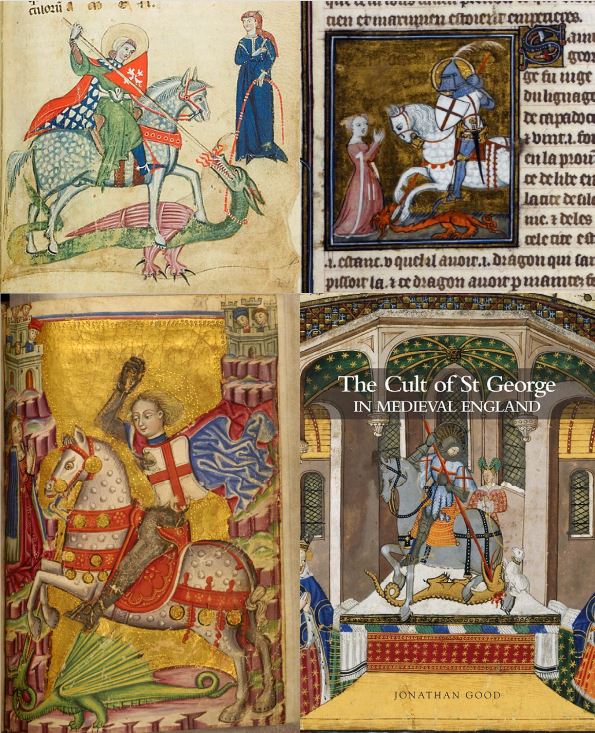
To this end, Busby, in essence, cast himself as the heroic protagonist in the Cult of St George. The popular legend of St George valourizes his role as a soldier who saved a princess from the maw of a hungry dragon that won the customary right to eat sheep and children. The princess had been drawn in a ballot for sacrifice. With exquisite synchronicity, St George the Christian Knight just happened to be passing through the terrible scene. Saint George astutely saw an opportunity to expand the Church’s franchise and offered to save the princess on condition that the traumatized people convert to Christianity. In keeping with the legend of St George, Busby only did so by extracting a ‘pound of flesh’ from ‘the Natives’.
In January 1834, Busby sent three flag designs, drawn by the Church Missionary Society Reverend Henry Williams, to Sydney to be produced as prototypes.

A hui was hastily called for March 20th 1834 to convene on the front-lawn at Busby’s house at Waitangi, with about 750 Māori in attendance.[17] Busby’s design was to subvert Māori agency without the rangatira knowing the track he was leading them down. Embedded in Busby’s machinations were the gaining of submission of 26 selected principle chiefs, whom he lured to prostrate themselves to reach the exclusive cordoned off area to make their selections, by crawling under a British shipping rope inside a white make-shift ‘tent’ made of sails.[18]
Busby called the chiefs by name, whom included Waikato who had met King George IV, along with Hone Heke who had not met a British King, thereby creating a division “between the noblesse and the canaille (or common) of New Zealand … [causing] … no small discontent of the excluded”, as William Barrett Marshall recounted in his 1836 book, A Personal Narrative of Two Visits to New Zealand in His Majesty’s Ship, Alligator, A.D. 1834.
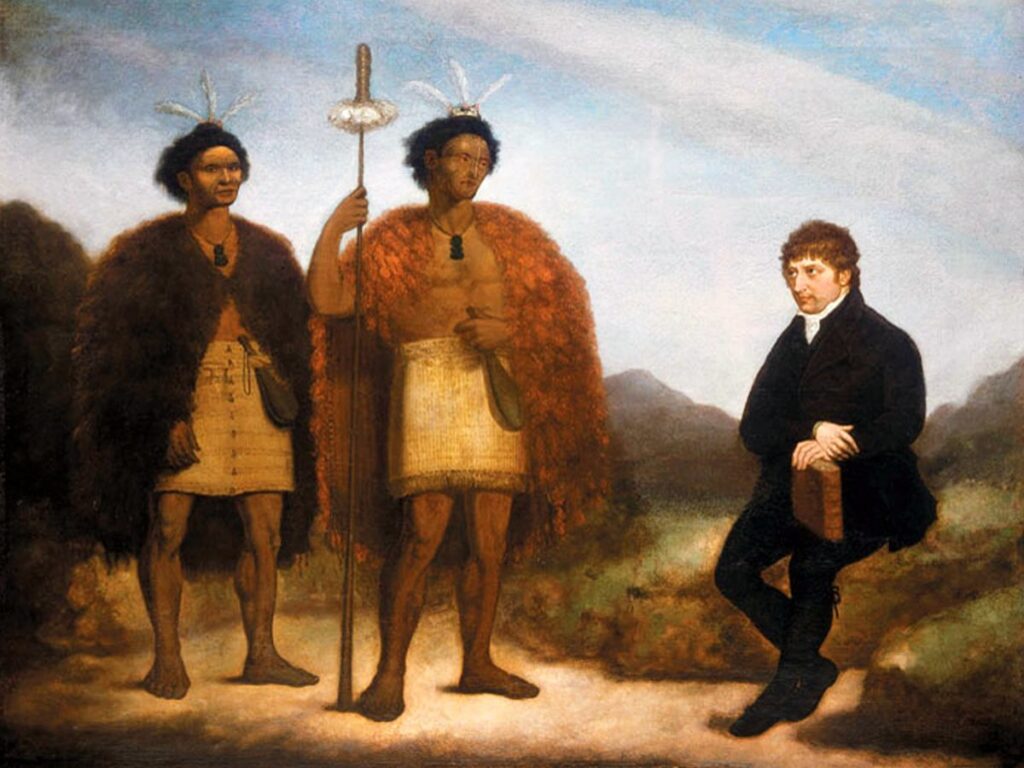
The chiefs were baffled by Busby’s vote casting process to choose a shipping flag in 1834, as the Waitangi Tribunal in 2014 reported.
At this point, a servant of the missionaries, Eruera Pare, pressed each chief to make a choice and by this coercive method, he was able to tally up the score — according to Von Huegel’s account. The rangatira were indifferent to what was on offer. According to Busby’s own muddled speech, the rangatira were being pushed to make their preference while at the same time they were to confer with the chiefs in other parts of the country, “so that your decision would be the decision of the majority.”[21]
An observer, the Austrian Baron Karl von Huegel, who had come ashore from a Royal Navy ship named after a species of tropical reptile, HMS Alligator, noted that some chiefs queried the logic of these proceedings. On the one hand, the chiefs reasoned, King William was said to be extending his friendship, while on the other hand they were being told the King’s men would seize their ships if they did not accede to a flag.[19] Von Huegel recounted that the first three chiefs each chose a different flag, while the remaining chiefs, “did not care which flag was chosen”.[20]
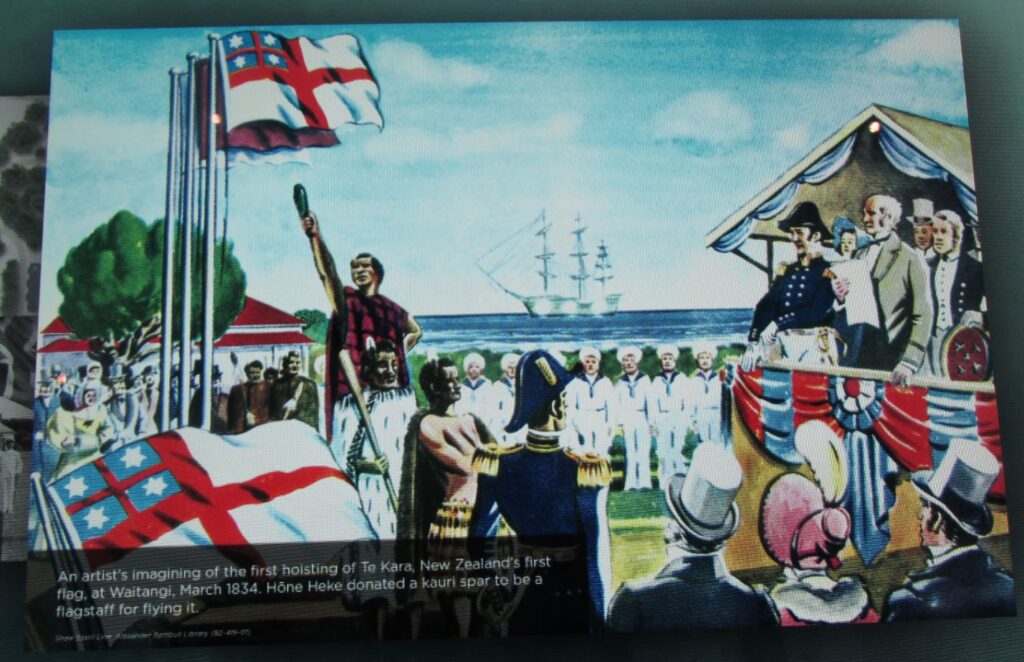
Twenty-eight votes were cast, with twelve votes taken for the chosen flag, ten for the next choice and six for the third-place flag. Two chiefs abstained, “apparently apprehensive lest under this ceremony lay hidden some sinister design on our parts”, as Marshall described.[22]Marshall observed that “freedom of debate” was discouraged, since Busby invited no discussion, and he claimed a friend, called Chief Hau, evidently asked Marshall what flag was his preference. Hau subsequently voted for Marshall’s preferred flag design, with the St George’s Cross on it and apparently Hau canvassed other chiefs for their votes also. The new Te Kara flag, complete with the St George’s Cross motif, was raised on a poll next to a taller flagstaff flying the Union Jack, and a 21-gun salute fired from the HMS Alligator followed the vote[23].
The 21-gun salute was the traditional pomp to mark a sovereign and on this occasion, evidently to construct the illusion that the British had recognized the islands of New Zealand as a state.
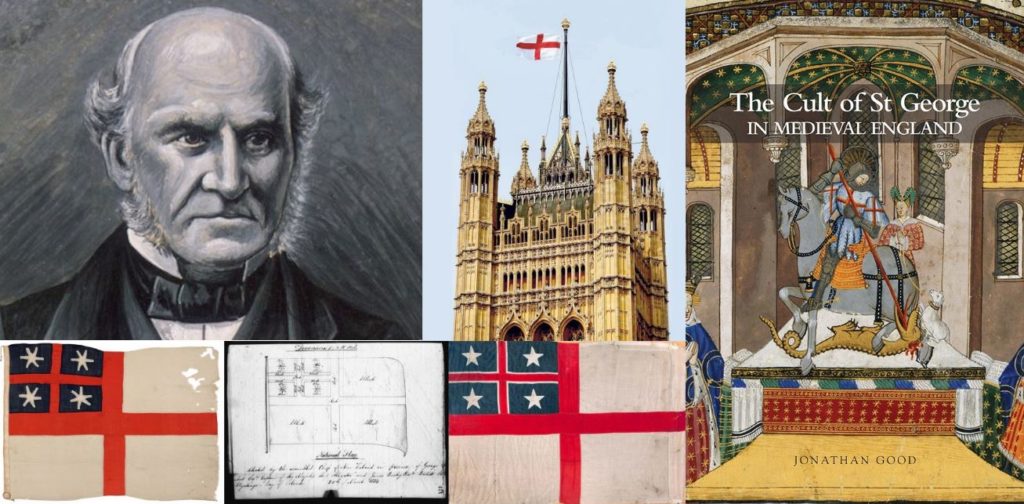
Forebodingly for Māori, Busby invited about 50 European guests into his Residency for a meal, while his Māori guests were served outside with a ‘meal’ of ‘stir-about’, which was a thin paste of flour and water. Busby had deliberately under-catered to discourage Māori from turning up in large numbers and had also sought to place his aboriginal and indigenous guests in a lower status by excluding them from his table. By serving them what was fed to prisoners and the homeless in England, or what was, essentially, children’s glue as food, these insults demonstrated Busby’s machinations. The land-rich rangatira were tricked into participating in a precedent-setting Westminster Parliamentary-style of voting, to select a flag design out of a slim set of three choices.
While the Europeans were dining, rangatira performed fiery speeches outside. Chief Kiwikiwi spoke:
“How have we come into this situation of having to hoist a flag on our boats to ensure our own safety? It is through our own fault that we have to do it, if we had been more united among ourselves, if we had had no enmity of one horde against another, we would have been able to oppose their landing.”[24]
With such exquisite serendipity, and by a narrow margin, enough of Busby’s selected chiefs just happened to choose the one with the St George’s cross on it, the very same cross on the Church Missionary Society flag and which appears on the flag of England. Busby gained their conversion to the cult of British Maritime Law, with their ascent to the adoption of a national flag, complete with the red St George’s Cross motif for abundant replication and a shipping register to entangle Māori maritime commerce. This ‘winner’ only occurred after the chiefs were pressed to pick a preference. The firing of the 21 gun salute from HMS Alligator was theatrics and the dirty details of this episode in gaming Māori were excluded from Busby’s report.
The chiefs’ ‘choice’ gets more curious when it is learned that the Templar Knights adopted the Red Cross in 1145, and French troops used it during the Third Crusade or the Kings’ Crusade, that was co-sponsored by Phillip II of France and Henry II of England, while English troops used a White Cross in 1188. Philip II, Henry II and Count Phillip of Flanders met at Gisors in northeast France on January 13th 1188, to choose the three colours of crosses to be worn by their respective soldiers. The colour of three crosses signified which language to communicate with the troops.[25] George of Capadocia (modern day Turkey) or St. George, the Patron Saint of England, is venerated as a legendary champion of Truth and defender of the Christian religion.

With this chiefly ascent, Busby successfully riffed off Crusades history, by embedding the red version of St George’s Cross used by the French in the Kings’ Crusade, or the Third Crusade. Doubtless, these machinations entertained Busby greatly, particularly as this red cross was subsequently adopted by the English. Busby was, therefore, mocking the French. Simultaneously, Busby was signaling that fears were stoked in Māori about France as a perennial potential enemy, which was a tried and true means for manipulating people into alliances to serve rulers more interested in state formation. In his role as ‘British Resident’, New Zealand’s first official was luring Māori chiefs to ascent to the jurisdiction of British Maritime Law, which meant Busby was formalizing the assertion of a Discovery Doctrine element known as Tribal Limited Sovereign and Commercial Rights.
The Doctrine of Discovery was a secret piece of international law that emerged during the Crusades, which targeted the ‘Holy Lands’ between 1096 and 1271, when the Vatican Empire asserted a worldwide papal jurisdiction to justify Holy Wars fought by the Knights Hospitallers, the Knights Templars, and the Teutonic Knights.
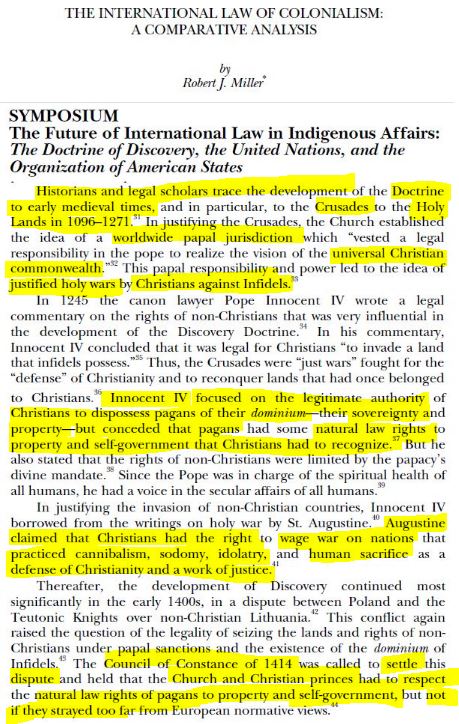
Muslim Saracens were cast as ‘Infidels’ and Christians could ‘legally’ reconquer their lands by divine mandate, which limited the property rights and self-government of non-Christian peoples, to serve the diabolical ambition to forge a universal Christian empire.[26]
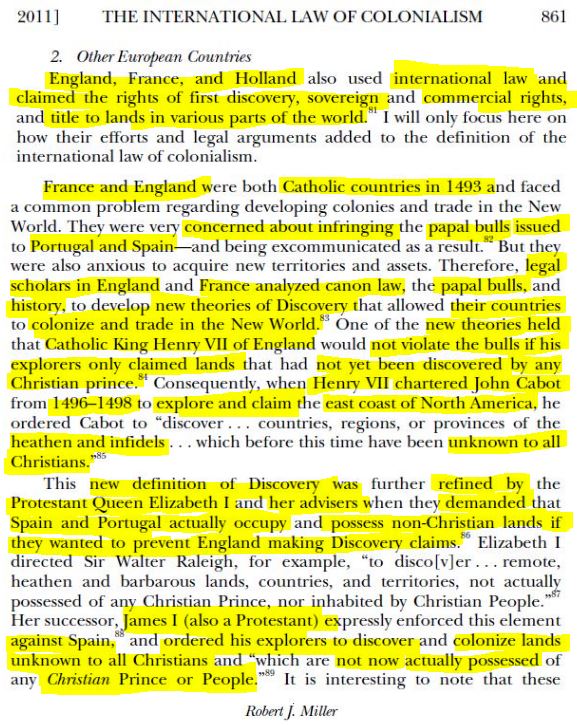
The Discovery Doctrine was further developed between European nations in the 15th Century, from whence they were forging maritime empires, and was designed to mitigate the chances of competing nations making expensive war with their technologically-even European competitors at the cost of much ‘blood and treasure’. The European Maritime Powers thought it would be easier to gain territory off ‘New World’ aboriginal and indigenous peoples, whom were cast as ‘savages’.
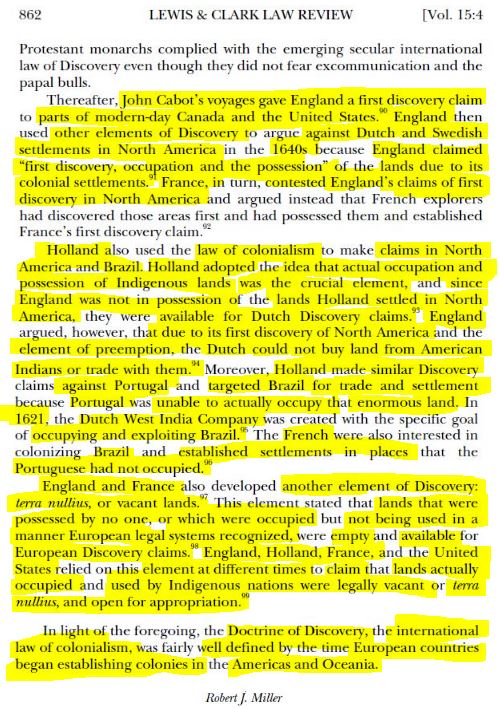
Historian and legal scholar Steve Newcomb stated that a doctrine in international law known as terra nullius, derived from Roman law, legalized territorial expansion of ‘uninhabited’ lands by holding that enemies had no rights to land and property as the documentary, The Leech and the Earthworm shows. Newcomb, a Shawnee and Lenapa Native Canadian, argued that the Catholic Church altered this doctrine to terra nullus — meaning people living in the New World were deemed too ‘primitive’ to be considered ‘sovereign’ because they lacked Christian mythology and therefore had no legitimate legal or political status. Newcomb’s position is corroborated by Robert Miller, Jacinta Ruru, Larissa Behrendt and Tracey Lindberg in their 2010 book, Discovering Indigenous Lands: The Doctrine of Discovery in the English Colonies.
In her book, Tears of Rangi: Experiments Across Worlds, Anne Salmond located Captain Cook’s surveys and charts of the ship’s course around coastlines that were traced onto gridded paper to fix latitude and longitude in the Discovery Doctrine. With brilliant prose that captured the essence of the collisions of ‘two worlds’ that had already occurred and would happen again, Salmond wrote:
“In the alchemy of hydrography, the land was reduced to coastline, stripped of most of its features and emptied of people — a terra nullius. With its inhabitants erased, the sea was similarly abstracted into a blank, two-dimensional watery wasteland — a mare nullius, waiting to be discovered and claimed by European powers.”
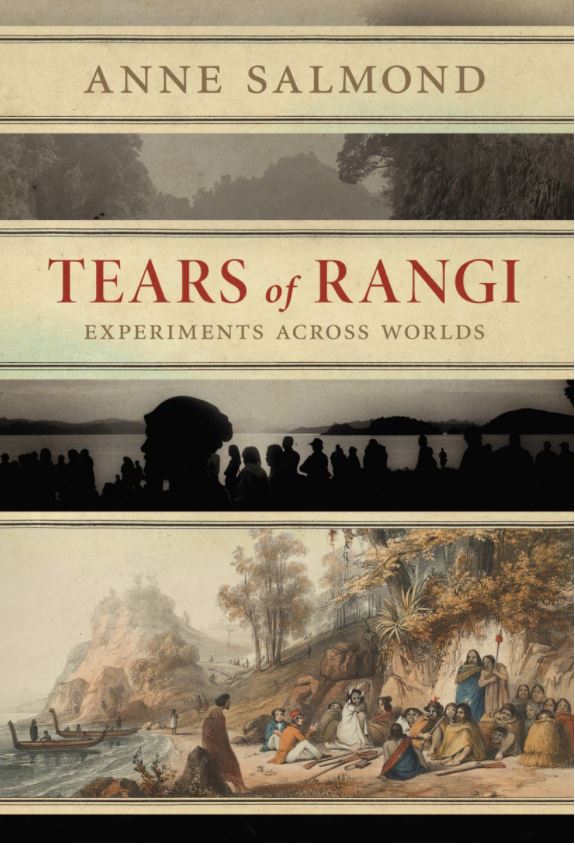
Although Salmond did not explore the unfolding events that led to a compact between the British Crown and Māori in 1840, and its impacts, as elements of the Discovery Doctrine, the ethnographic historian did capture the uneven playing field of a world power applying its will over aboriginal and indigenous peoples.
On the American continent, the English colonizers went further and got around the law of terra nullus by invoking another doctrine, vacuum domicilium. This doctrine claimed that because the ‘savages’ ranged rather inhabited the ‘unmanned’ wild country and had failed to cultivate and farm land with livestock as ‘God’ had evidently intended, landgrabs were justified, as the account of “That Unmanned Countrey” — cited in Samuel M. Wilson 1999 book, The Emperor’s Giraffe: And other Stories of Cultures in Contact — explained.
As indigenous law scholars Robert J. Miller and Jacinta Ruru stated in the West Virginia Law Review:
“When Europeans planted their flags and crosses in these ‘newly discovered’ lands they were not just thanking God for a safe voyage; they were instead undertaking the well-recognized procedures and rituals of Discovery designed to demonstrate their legal claim over the lands and peoples.”[27].
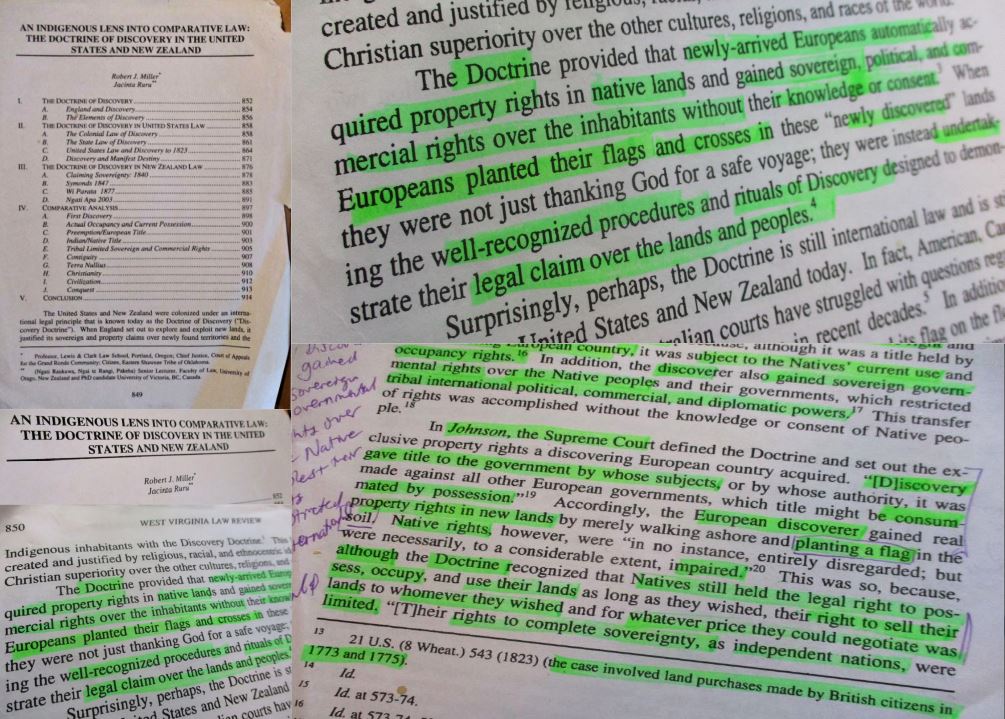
Indeed, after conning Māori chiefs to ascent to a flag that incorporated the Crusader’s Cross of St George, Busby wrote to New South Wales Governor Burke:
“As this may be considered the first National Act of the New Zealand Chiefs it derives additional interest from that circumstance. I found it, as I had anticipated, a very happy occasion for treating with them, in a collective capacity, and I trust it will prove the first step towards the formation of a permanent confederation of the Chiefs, which may prove the basis of civilized Institutions in this Country.”[28]
The British Resident’s official correspondence was sanitized and at odds with his private words and his ‘public’ deeds. By civilized institutions, he really meant public and private sector organizations controlled by British Settlers, and by British élites doing stints to control the colony’s development and, either returning home with newly forged fortunes, or establishing large estates to rival those of the aristocracy.
Next, Busby antagonized a local chief, Rete, by bossing him and his hapū around about how to conduct their logging commerce. Rete was also annoyed that Busby had taken control of large tracts of land. Brazenly, Busby lobbied for Rete’s execution after the evidently ‘insubordinate’ chief ransacked Busby’s storehouse,[29] and the British Resident copped a wood-splinter wound to his face when a musket shot hit the back-door frame, from where Busby had disturbed the intruders one night. Chief Rete and his accomplices were in the midst of exacting a muru, or ritual compensation, for Busby’s ill-received foray into authoritarian rule.[30] By inflicting the muru, Chief Rete was carrying out Māori customary law for Busby’s transgression. Reverend Henry Williams advocated land forfeiture and banishment from the district.
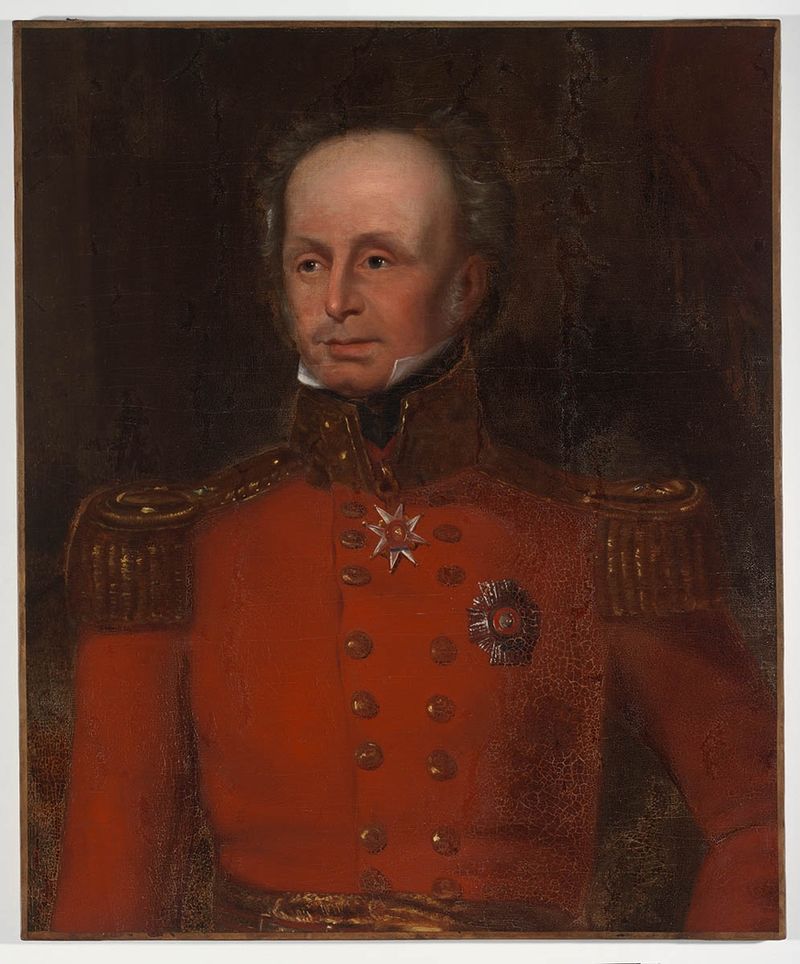
Sir Richard Bourke permitted James Busby to inflict a retaliatory punishment against Chief Rete, thereby setting in train New Zealand’s first official land confiscation, eviction and village razing by fire in 1834.
Instead of execution, New South Wales Governor Sir Richard Bourke permitted, with the authority of the Executive Council in Sydney on 27 January 1835, inflicting another humiliating retaliatory punishment. After calling a hui with 20 chiefs on 14 March, Busby gained the cooperation of 12 chiefs to attend the confiscation after he bribed them with blankets. Busby timed this hui occur while a ship of war, the HMS Hyacinth, was in the Bay of Islands, just the HMS Alligator was present when Busby convened a prior hui to commit the chiefs to punish Rete, in late October 1834. On both occasions, Busby had asked the ships remain while he convened his meetings with the chiefs. Rete’s huts were burnt, he was banished and 200 to 300 acres of his village, Puketona, were confiscated, which Busby renamed Ingarani, the Māori transliteration for England.[31] Busby later burnt down traditional fishing huts on land at Waitangi he had ‘purchased’ when he found out that Rete and his friends had been using them. Busby had ‘allowed’ continued use of the huts by Māori, but set fire to them without notice and this action further strained relations.
The incontrovertible fact is that Busby acted as an agent provocateur seeking to antagonize Chief Rete and other chiefs, having gained chiefly recognition of British Maritime Law. Busby’s provocation occurred after he had conned chiefs to ‘vote’ for a flag of national shipping and therefore, volunteer their submission to British Maritime Law, and join in the system of international law. The calculus of Busby’s machinations was to provoke the chiefs through his land-swindling, interfering and symbolic assertions of authority in order to train the rangatira into submissive acts. These machinations would sooner or later justify holding a de facto court, which would add to the British Government’s ability to justify annexation by settlement.
Thus, the first British Official, who gained his Resident Magistrate post through bribery, inflicted New Zealand’s first official land confiscation, first official scorched earth village razing and first official evictions — while supposedly under British ‘protection’.
Having successfully inflicted the first land confiscation with the participation of a dozen rangatira, three quarters of whom were bribed with presents, Busby then deployed his defining confidence trick: gaining chiefly participation in signing the 1835 ‘Declaration of Independence’, or He Whakaputanga o te Rangatiratanga o Nu Tirene.
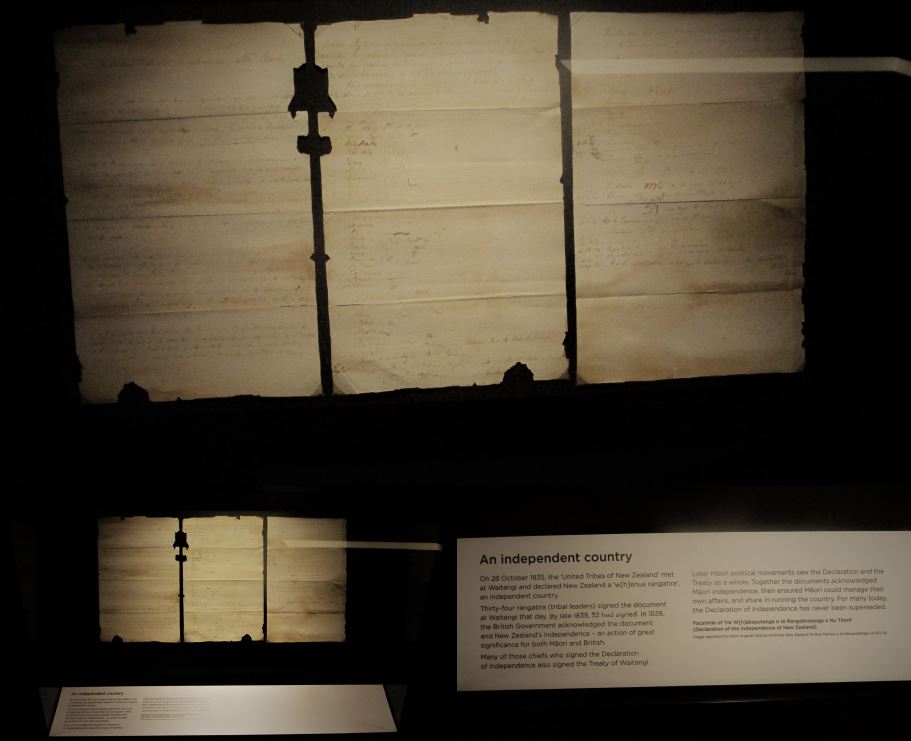
Busby stoked fears that Māori would be enslaved on the basis of a letter sent to him by a delusional Frenchman, Charles de Thierry, who claimed to declare sovereignty. Busby’s modus operandi was to turn any threat, real or perceived, into an opportunity and was part of the British strategy to game Māori.
Indeed, the origin of this ‘Declaration of Independence’ can be traced back to the ‘Letter to King William IV of October 5 1831’, which had been triggered amid widespread rumours of a French ship coming to take lands. Following the first signings of the 1835 ‘Declaration of Independence’ — 33 in all on October 28th — Busby eventually gained a full deck of cards worth of 52 chiefly marks and signatures over a four-year period, including chief Te Wherowhero.[32]
In regard to whether the 1835 Declaration was Busby’s initiative, or that of Ngāpuhi rangatira, Ngāpuhi kaumātua Erima Henare challenged the credit that Pākehā historians have bestowed on Busby. In the Ngāpuhi Speaks report, it was conveyed that Erima Henare pointed out that proof of Ngāpuhi agency in He Whakaputanga is the fact that when the iwi gathered at Busby’s residence at Waitangi in 1835, they fed themselves, while five years later, the missionaries stumped up for the food. Granted, there was clearly far more rangatira agency in the discussion that resulted in the composition of the final texts for the 1835 Declaration, than with the both versions of the Treaty, which were composed entirely by Pākehā.
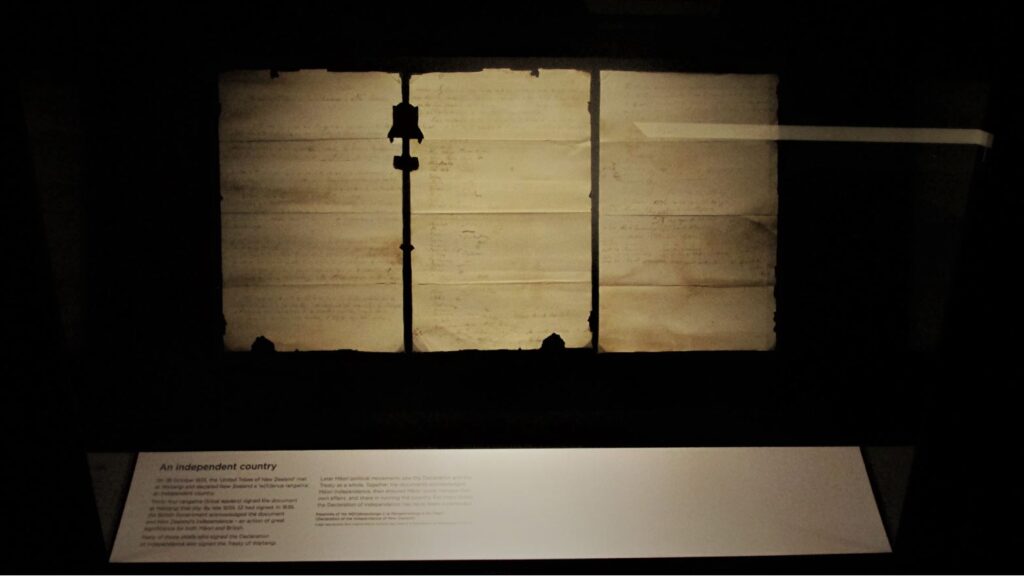
However, it is ultimately a fallacy of evidence to suggest that who laid on the kai for the home crew is proof of who had control of the foreign ship’s rudder carrying the dispatches, with the ‘all-important’ English versions of any letters, declarations or treaties carrying the marks of rangatira, as well as the Māori language versions. Particularly, as Busby had deliberately under-catered for the festivities following the vote for the Te Kara flag and the creation of a shipping register on March 20th 1834. Busby did not want to ever have to cater for Māori because he saw himself as above ‘the Natives’ and he was intent on establishing imperial customary rights with himself as Crown Agent.
That occasion of under-catering in 1834 — which followed the staged theater in a tent constructed of shipping sails, wherein chiefs were coaxed to prostrate themselves in order to pass under a British shipping rope — led directly to the chiefs bringing their own catering for the signing of the 1835 ‘Declaration of Independence’. And because Busby was, in effect, conjuring more tracks and sleepers that would eventually culminate in an improvised fast-speed Waitangi Treaty track section, where Māori would not see the events moving around them on the slower Colonial Law Track. Indeed, Prophet Penetana Papahurihia correctly sensed after the signing of Te Tiriti o Waitangi that the travelling Waitangi Treaty Theater Production Company had caught Māori in a ‘whirl-pool’ — as the quotation cited at the start of this illustrated essay succinctly captured.
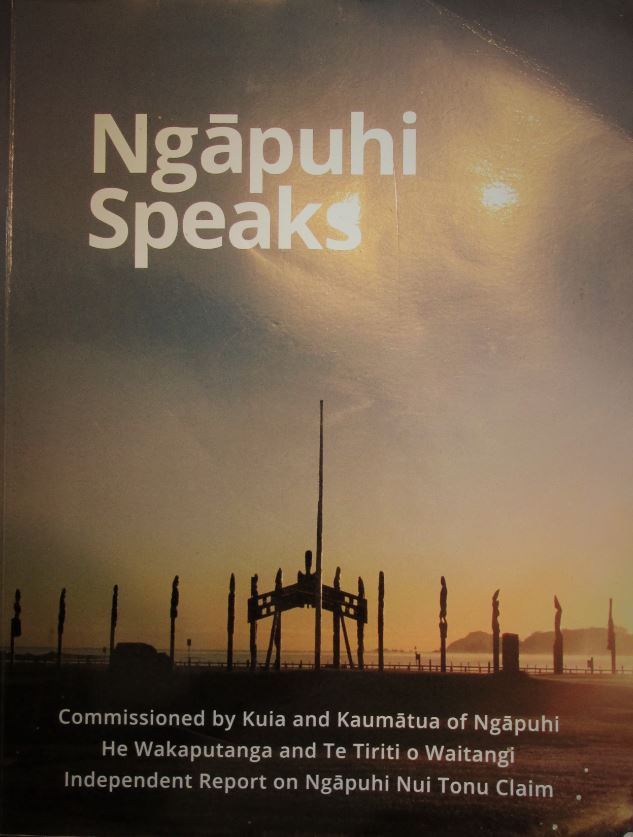
The significance of Busby’s machinations can be brought into sharper focus when it is recalled that the British Resident and his servant, William Moore, were shot at when they disturbed Chief Rete sacking his storehouse. In nearly all accounts of this incident, the reason why Rete was stealing Busby’s stores is omitted, thereby rendering the Ngāti Tautahi chief as a common thief. The Waitangi Tribunal omitted Chief Rete’s reason, missed the reason altogether, and essentially uphold Busby’s framing of the event as a plunder and attempted murder. Even Ngāpuhi Speaks misses the full significance, despite this report recounting that Chief Rete was inflicting a muru, since Busby was land speculating and threatening to stop the logging trade — as Pairama Tahere recounted.[33]
Ironically, after the first 1840 Waitangi Treaty signings, Chief Hōne Heke was no longer able to charge anchorage fees because authority had shifted to the Crown’s officials and Hobson moved the capital from Kororāreka to Auckland, which caused significant economic decline. Heke’s rangatiratanga, or chieftainship, was being interfered with and decisions were being made without Māori. Chief Heke had failed to care that Chief Reke had sensed his rangatiratanga was being breached by Busby and failed to see that Busby’s actions were about laying a two-trunk line comprising of a Treaty Track and a Colonial Law Track.
The Ngāpuhi Speaks writers miss the point about why exactly Busby’s first reaction on learning the identity of the culprit, was to insist for Rete to be executed. And, Ngāpuhi Speaks, along with O’Malley in Beyond the Imperial Frontier, also omitted that the informant to Henry Williams was Ngāpuhi chief Hōne Heke Pōkai, of the same village, Puketona, following his relative and wife of Rete unbraiding the chief in a quarrel. Rete’s wife had discovered a rug of distinctive make that Reti possessed, as R.A.A. Sherrin’s account, “The Growth of British Authority” in Early History of New Zealand revealed in 1890. According to Sherrin, Reti had beaten his wife and she disentangled the argument by uncovering the origin of the rug.
Yet, the Shakespearean irony of Rete’s wife unbraiding her husband with the discovery of a woven threaded-mat of European make — that had been taken from William Moore’s room — was lost on Sherrin, whose account was filtered by a Colonial-era mindset. The friction of new imperial machinations rubbing up against aboriginal and indigenous culture already frayed by the altered power relations underpinning the sexes, hapū kinship, and trade as family groups were compelled to relocate villages to be near swamps to harvest flax as a consequence of the arrival of muskets. It would appear Rete inflicted a muru upon Moore for sneaking into the storehouse to retrieve Busby’s ammunition belt. Hōne Heke failed to unbraid the complexity of the event, and likely let the emotional roil of Rete beating his relative become entangled with the pressure that Busby, and other colonists, had asserted to find the culprit.
Thus, the first recorded ‘domestic’ that was entangled with the machinations of New Zealand’s first British official, escalated into an entire village being razed, as well as land of an entire hapū being confiscated and its people becoming the first homeless ‘natives’ by a decision of the Executive Council in Sydney, whom officially it would appear, knew nothing of the British Resident’s culpability. Therefore, Chief Hōne Heke would later surely have rued the day, October 27th 1834, that he had ever performed the role of a ‘tell-tale-tit’, since he later, rather famously, was driven to cut down the flag-staff on Maiki Hill above Kororāreka (Russell), four times, in 1844 and 1845 to challenge the British take-over.
Because the muru that Rete was trying to inflict on Busby was construed as an act of theft, the result is that the Busby-Rete Events Cluster has often been overlooked. Therefore, the full extent of the irony embedded in Heke’s flag-pole chopping has also been lost on earnest historians, Treaty scholars and Treaty workshop teachers. Particularly since Heke’s tell-tale-tit activities led directly to Busby burning the fishing huts at Waitangi where the homeless Rete had taken refuge. Thus, Busby’s machinations are also the story of Britain’s first official inflicting vindictive systemic homelessness in Aotearoa New Zealand.
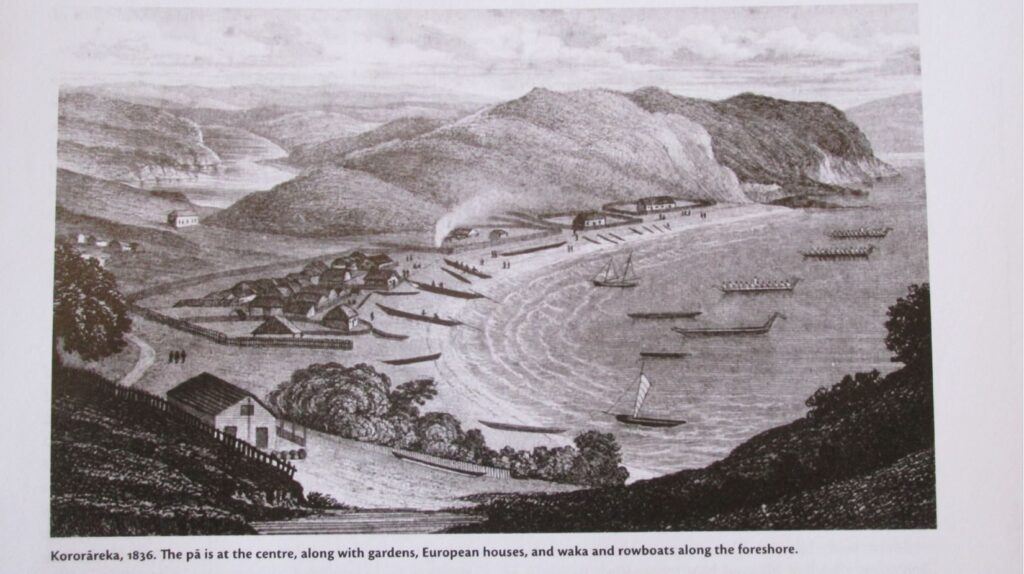
In other words, New Zealand’s first British official wanted the life of the one man who was an immediate threat to his power, however limited, to be snuffed out in 1834. Because, if the truth got out in official or published accounts that Busby’s bossiness over Rete’s business — as well as his sly land acquisitions from chiefs unfamiliar with European conceptions of private land tenure — then the Discovery Doctrine logic of Busby’s mindset would have been laid bare.
These are the reasons why Rete’s ransacking action of Busby’s storehouse were rendered as a ‘theft’, and why — like so many crucial details in history — Busby’s interference into Rete’s log-trade was only carried in oral accounts by the ‘little people’ whom historians have a tendency to overlook. Even Anne Salmond misses this detail that Rete was inflicting a muru not simply over Busby’s unscrupulous land acquisitions such as the property at Waitangi, in her epic, Tears of Rangi, despite her reading Ngāpuhi Speaks.
In his letters, Busby’s real attitude toward Māori rangatira is revealing. In a 16 June 1837 dispatch sent by Busby, the British Resident proposed the British Crown make a treaty with Māori and sought to persuade British to establish a protectorate government in New Zealand.[34] Busby referred to the 1835 ‘Declaration of Independence’ to explain his logic:
“that the congress of chiefs … is competent to become a party to a treaty with a foreign power, and to avail itself of foreign assistance in reducing the country under its authority to order; and this principle once being admitted, all difficulty appears to me to vanish.”[35]
Moreover, Busby claimed that a treaty would be regarded by the chiefs as an acquisition of power rather than a surrender of power because:
“the New Zealand chief has neither rank or authority but what every person above the condition of a slave, and indeed the most of them, may despise or resist with impunity. It would, in this respect, be to the chiefs rather an acquisition than a surrender of power.”[36]
Busby construed Māori civilization as disorderly. This trick of psychological projection, which is common habit of highly functional psychopaths employed by empires, meant he conveniently did not akcnowledge the sleight of hand of European agency underpinning the disruption of Māori civilization. In particular, the British agency behind structurally baiting Māori, such as Hongi Hika and his nephew, Waikato, to lure them toward the path of internecine warfare. Such structural baiting would predictably and eventually bring some of the aboriginal and indigenous peoples to the table to negotiate an alliance to stabilize matters, especially amid heightened fears of an external enemy.
Therefore, the structural racketeering that underpinned state formation over the islands of New Zealand is one of the forces that had stirred the whirlpool that Prophet Papahurihia had sensed would take beyond 200 years to be widely known and corrected after its decipherment.
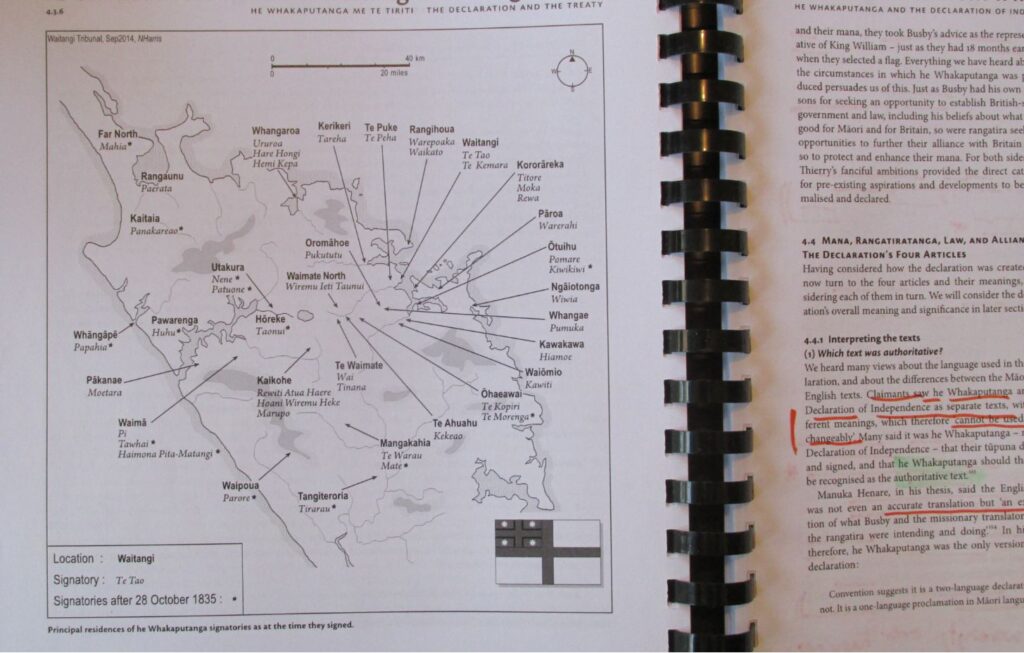
The Māori language version known as He Whakaputanga o 1835 bestowed authenticity to the English language version since this version was derived from the te reo Māori version, which was primarily drafted by Henry Williams, and polished by Eruera Pare Hongi.
To the British Crown, the English language version of the 1835 ‘Declaration of Independence’ formalized New Zealand as an independent state controlled by a confederacy of chiefs. It was recognized as such by the British Crown in 1836 and the British Parliament in 1838, but more accurately applied to the Northern parts of the North Island, as well as the Waikato and Hawke’s Bay. The British were able to construe that New Zealand was an ‘independent state’ — while, curiously, at the same time the entire islands of New Zealand became a protectorate of the British Crown.
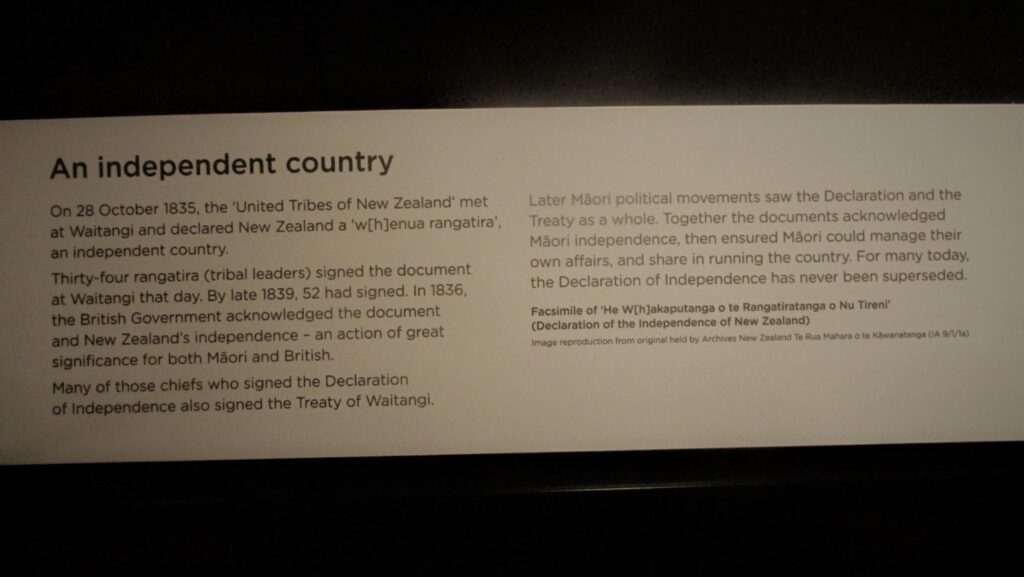
While family groups and tribes exercised independence, their capacity to defend themselves against the full force of a foreign power, whether French, English or American, over several years was questionable. To the rangatira that signed He Whakaputanga o 1835 (or ‘A Declaration of New Zealand’s Māori Sovereignty’), the paramount sovereign power and authority that they asserted was derived from the sustaining and nurturing of whenua, or land. Because the United Tribes sought an alliance with the King William IV in return for protection from foreign invaders, as well as trade opportunities, New Zealand, in effect, became a protectorate of Great Britain.

The 1835 ‘Declaration of Independence’ (He Whakaputanga o 1835)
Snapshot: The 1835 ‘Declaration of Independence’ was designed to lure Māori chiefs into a British Protectorate jurisdiction, and to forestall French missionary influence, as part of a long-game to perfect the incomplete title claimed by Freemason Bro. Captain James Cook, by stealthily gaining full paper sovereignty by a hidden track.
The key points and differences between the Māori language He Whakaputanga o 1835 version and the English language ‘Declaration of Independence’ of 1835 version, are as follows.
In Article One of He Whakaputanga o 1835, the chiefs claimed paramount sovereign power and authority, which was derived from the sustaining and nurturing of wenua, or land. This assertion to absolute authority meant that the rangatira exercised customary law and their responsibilities anchored in the well-being and mana in their hapū regions. The Te Wakaminenga gatherings maintained by the Northern Alliance chiefs are referenced in Article One of the Māori language He Whakaputanga o 1835. As I mentioned previously, the institution of these Te Wakaminenga gatherings dated back to 1808, following the Ngāti Whātua victory over Ngāpuhi in the Northland battle of Moremonui at Maunganui Bluff, in 1807, at the beginning of the Musket Wars (1806-1845). Crucially, they did not usurp or over-ride hapū autonomy, and if there was consensus reached, the agreements were not binding. While in Article One of the English language version of the 1835 ‘Declaration of Independence’, the rangatira asserted a confederacy of Tribes that constituted an ‘independent state’.
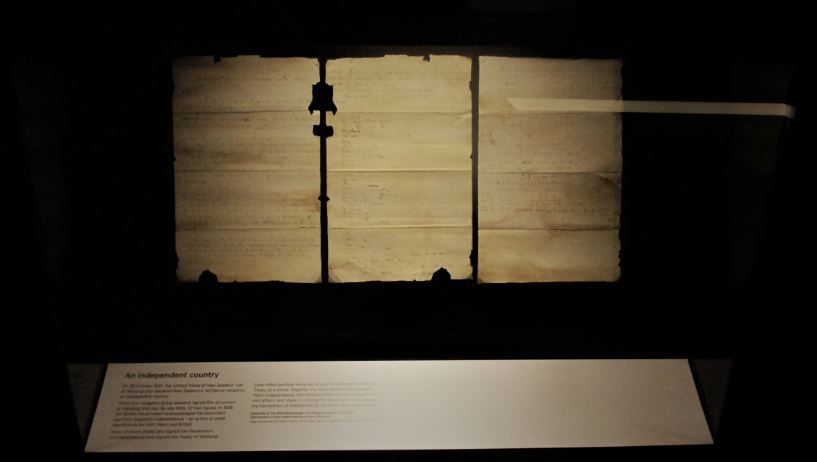
The Second Article of the 1835 He Whakaputanga states this hierarchy of authority, expressed as kingitanga, mana and Tino Rangatira are derived from the land and hapū, or extended whanau units. Therefore, the authority of the paramount chiefs is grounded in wenua, or land, and whakapapa, or genealogy. The chiefs declared that they were responsible for framing laws and only persons appointed by them would be authorized to set down laws consistent with the Confederation of New Zealand’s meetings, such that a governor could not make laws in conflict with the rangatira laws. In the English language version, Article Two render “all sovereign power and authority” to its hierarchical effects of mana to exert control, whereas in the Māori language version, mana’s source is derived from the land. Therefore, in the English language version, there was a perceptible sleight of hand to incrementally shift power upward and away from the source of chiefly power – the land and genealogy — to construct a hierarchical model for later de-construction by pen-quill and parchment paper.
In Article Three, the paramount chiefs resolve to meet each year in the autumn at harvest time, under the auspices of Te Wakaminenga gatherings. The intent of these annual Runanga was to dispense justice, ensure peace and confront wrongdoing and lawlessness and facilitate fair trade in commerce. Article Three also called upon iwi and hapū in other areas to join Te Wakaminenga and quit inter-tribal warfare, which reinforced the northern rangatira of Ngāpuhi declaring that the ‘land [was] in a state of peace’.
Article Four of He Whakaputanga emphasized an extension of friendship and alliance with the British monarch and Britain, which had its roots with chiefs Hongi and Waikato visiting England and King George IV on November 13th 1820. The rangatira expressed appreciation for the King’s recognition of their shipping flag and then promised to extend friendship and care toward British settlers and traders. The Tribal Confederacy entreated to the King of England to be the Protector from all attempts upon their mana and sovereignty. Rather crucially, in the English version, mana and sovereignty was rendered as independence. In seeking the King to act as ‘matua’, rangatira were actually asking the King to be a parent to his own British ‘family’! While in the English version, this parent or protector role was rendered to frame the independent state as a candidate for protectorate status of the British Empire.
In his 2009 review for the Waitangi Tribunal, Samuel D Carpenter correctly critiqued that the English language version rendered the chiefs’ intention for friendship and alliance into a meaning that fitted the imperial paradigm, or mindset. Carpenter wrote that such “protectorate language was a prominent code for British control at the time.”[37]
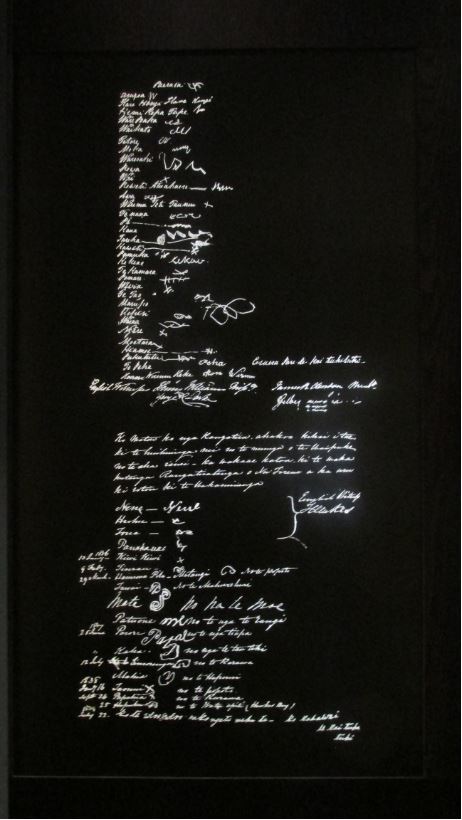
In the drafting of this 1835 Declaration, the crucial differences in stating chiefly sovereignty belies Busby’s machinations to construct the edifice of national autonomy for later de-construction. In the English language version, chiefly sovereignty is construed as a confederacy comprising a small number of chiefs whom essentially are placed — unwittingly — in a position to over-reach their authority to claim an independent state, with a binding hierarchical power structure that sought protectorate status within the orbit of the British Empire. Whereas, in the Māori language version, He Whakaputanga o 1835, hapū autonomy remained intact since chiefly authority was anchored in the well-being and mana in their hapū regions that signed.
The crucial differences between the drafts of the Māori language and English language versions of the 1840 Waitangi Treaty is not simply because Busby recruited the help of Eruera Pare Hongi, to draft the Māori language version of 1835 ‘Declaration of Independence’. The real reason is because the British game had been to erect the edifice of an independent sovereign state for its deconstruction at a later date either by legislation, or treaty.
To the British Crown, the 1835 ‘Declaration of Independence’ formalized New Zealand as an independent state supposedly controlled by a confederacy of chiefs precisely because its Māori language version known as He Whakaputanga o 1835 – could be construed as the authentic origin of the English language version. It was recognized as such by the British Crown in 1836 and the British Parliament in 1838, but more accurately applied to the Northern parts of the North Island, as well as the Waikato and Hawke’s Bay.
To the rangatira that signed He Whakaputanga o 1835 (or ‘A Declaration of New Zealand’s Māori Sovereignty’), the paramount sovereign power and authority that they asserted was derived from the sustaining and nurturing whenua, or land. Because the United Tribes sought an alliance with the King William IV in return for protection from foreign invaders as well as trade, New Zealand, in effect, became a protectorate of Great Britain.
Crucially, the one account that survives is Busby’s report — which is rather telling since some ‘unhelpful’ independent accounts of the Te Kara national flag of shipping event of 1834 had been produced, that contradicted Busby’s propaganda. This is despite Reverend Henry Williams, a prolific diarist, and CMS printer James Clendon, being present.[38]
This sparseness in accounts was to be repeated when the Treaty Theatre Track advanced to its historic production at Waitangi in 1840, with Captain William Hobson as the Waitangi Theater Company director.
And, as we shall see, the genealogy of language text versions was switched when the compressed time came to compose the 1840 Waitangi Treaty parchments.
Key Finding: Britain’s first official, James Busby, incrementally drew rangatira into British jurisdiction. First, by conning chiefs in 1834 to select a flag of national shipping that displayed England’s orientalist St George’s Cross, to save them from the maw of British Maritime Law. Second, by getting them to inflict New Zealand’s first British-endorsed village razing to establish a confiscated parcel of land named England. And then, Busby conned rangatira to sign the 1835 ‘Declaration of Independence of the United Tribes of New Zealand’, to create the edifice of an ‘independent state’, for its later deconstruction.

The 1840 Waitangi Treaty (or Te Tiriti o Waitangi o 1840)
Snapshot: The Treaty Theatre pivoted upon a fulcrum of deceptive translation differences in the 1840 Waitangi Treaty texts that hid the deceptive power crime to win native signatures and paper sovereignty by weaponizing the physical dimension of time.
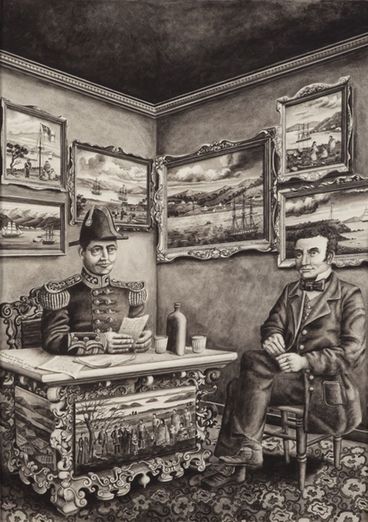
Like James Busby, Royal Navy Captain William Hobson was volte-faced in his dealings with Māori. Behind the friendly mask, was a scheming face and an ambitious egotistical mind.
Captain Hobson, who was a mid-ship man in the Napoleonic Wars, first came to New Zealand in 1837, when he commanded the fittingly-named frigate, HMS Rattlesnake, to answer Busby’s dispatch to Sydney for help to quell fighting between two warring chiefs Pomare II and Titore. While briefly in New Zealand between May and July, he visited other parts of the North Island during which time he gleaned information to serve the British Masonic Empire.
The Royal Naval Captain had envisaged a ‘factories scheme’ for New Zealand that described a system of naval-protected trading posts owned by the British Crown, following a treaty. Captain Hobson’s 1837 plan envisaged the factory enclaves would be controlled by a British Governor, whom would have authority over Pākehā and Māori. In effect, this scheme meant the Secretary of State for War and the Colonies, Lord Normanby, and Secretary of State for Foreign Affairs, Lord Bro. Palmerston, well-knew that Captain Hobson’s Factory Scheme was based upon the factory trading system used by the British East India Company.
That factory trading system had been copied from the Portuguese to gain a foothold in India in 1668, first on the Island of Bombay, its port and its harbour. Governor Bourke wrote to the Colonial Office conveying that Hobson’s proposal was premised on ‘Māori’ conceding to the factory plan on terms of mutual interest. Thus, the factory plan relied on the compact of treaty. However, Hobson was evidently less confident than Busby that a treaty would work, because he felt Maori had no form of government and any hui with chiefs claiming to be the heads of the United Tribes would likely result in bloodshed, as Matthew S.R. Palmer pointed out in his 2008 book, The Treaty of Waitangi in New Zealand’s Law and Constitution.[39]
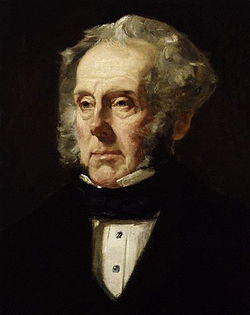
Thus, when Lords Normanby and Bro. Palmerston tasked Hobson in 1839 to treat with the ‘Native Chiefs’ for their willing and conscious cession of sovereignty and informed consent to grant monopoly rights to extinguish native land estates, they were sending in 1839 no ordinary Royal Naval Captain. They also knew the value of gaining control over the entire islands of New Zealand. To wit, Lord Normanby’s written instructions handed to Captain Hobson on the 14th of August 1839 in England, opened by stating:
❝We have not been insensible to the importance of New Zealand to the interests of Great Britain in Australia, nor unaware of the great natural resources by which that country is distinguished, or that its geographical position must, in seasons, either of peace or war, enable it in the hands of civilised men to exercise a paramount influence in that quarter of the globe. There is probably no part of the Earth in which colonisation could be effected with greater or surer prospect of national advantage.❞
To achieve this strategic end – which essentially restated the occult Masonic vision of Captain Bro. Cook – Lord Bro. Palmerston and Lord Normanby made the conscious decisions to sign-off on the trickery of appearing to gain an agreement to establish a governor to rule over white settlers, while slyly gaining paper sovereignty to rule over ‘Māori’ and Pākehā alike. In the British quest to achieve the appearance of sovereignty gained by treaty cession, Hobson had been instructed by Lord Normanby to rely on the protestant missionaries as “powerful auxiliaries” to persuade ‘the Natives’.
Normanby’s propagandist instructions implicitly ordered Hobson to lie by omission, talk up the benefits and emotionally hijack the rangatira with the novelty of contact, including presents of tobacco and blankets. The details of how exactly they would pull off the epic swindle would be left to that part of the Treaty Cliqué that were in, or would travel to, the South Pacific. The trickery was designed to eventually lead to structural entrapment – to justify a war of sovereignty by construing any Māori who fought back as being in rebellion, since British Freemasons and Protestant settlers would maintain supremacy over the public and private systems of propaganda in Britain and New Zealand.
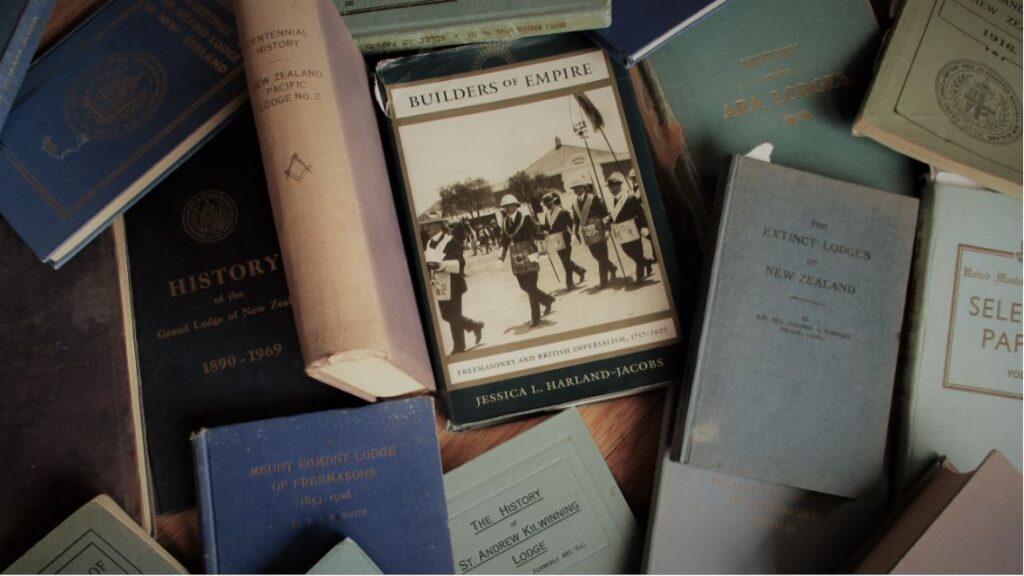
That structural entrapment would take the form of provoking Māori into reacting to incursions on their sovereignty, lands and customs, and would be the catalyst for the Northern War of 1845-46[40] and the New Zealand Masonic Revolutionary War of 1860-1872.[41]
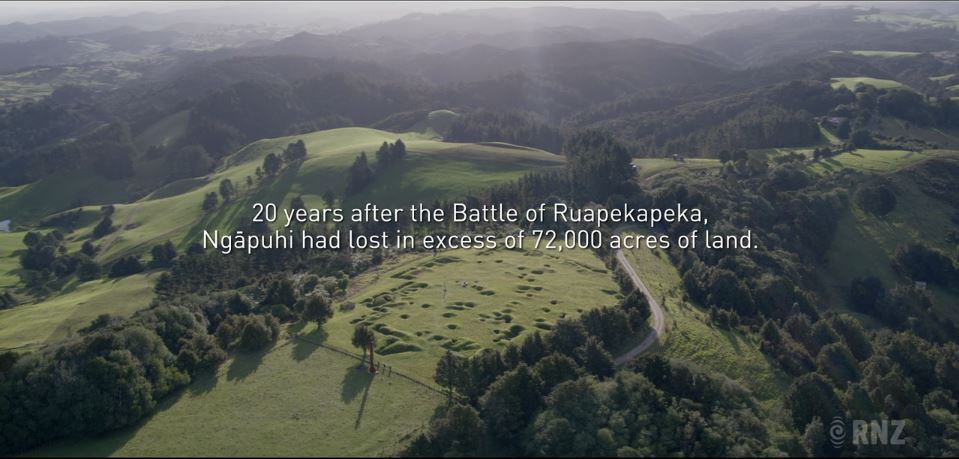
Much important research has been conducted since the emergence of the Māori sovereignty and land rights movement in the late 1960s and early 1970s. Before those works emerged, however, the New Zealand Government’s Department of Internal Affairs changed course on a historical project that historian Ian Wards was working upon. He was planning to show the interplay of military, political, and social affairs with their impacts on racial conflict and military development in New Zealand’s history, but the project was claimed to be too ambitious in 1966. Subsequently, a decision was made to scuttle the army research. Fascinatingly, these decisions and indecisions meant there was no major historical works published on the Northern War of 1845-1846 and what was really the New Zealand Masonic Revolutionary War of 1860-1872, between James Cowan’s two volumes, The New Zealand Wars, of 1922 and 1923, and James Belich’s, The New Zealand Wars, of 1986.
The result of Ian Wards’ truncated research was the Department of Internal Affairs’ 1968 book, The Shadow of the Land: A Study of British Policy and Racial Conflict in New New Zealand 1832-1852. The decision to change course appears to have been to manage the revision of history at a time increasing numbers of Māori were beginning to find their feet walking the grounds of New Zealand’s universities. To this face-saving end, Government historian Ian Wards wrote that on February 5th 1840, about 500 northern chiefs gathered at Busby’s property, Waitangi, where:
“it was explained in return for their cession of sovereignty and their guarantee that the Crown would have the sole right of pre-emption over such lands as they wished to sell, they would have full rights of British citizenship and the uninterrupted enjoyment of their lands and other natural resources which had previously contributed to their livelihood”.
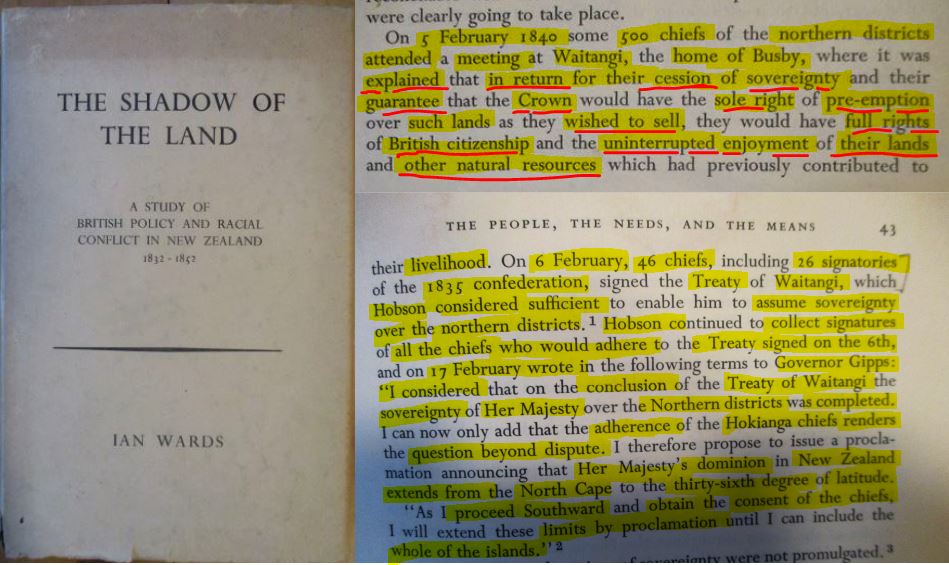
Granted that Wards wrote this epic falsity before the deliberate language translation differences had been proven following Ruth M. Ross’s ground-breaking, Te Tiriti o Waitangi: Texts and Translations in 1972. However, the practice of ruling class historians not bothering to ask the descendants of the aboriginal and indigenous signers for their accounts had long been a bone of contention. Wards was also well aware of the calls at the time to revisit the Treaty history. Given that the compact was between representatives of a monarch, who was the commander-in-chief of a vast transmarine empire, and the out-gunned aboriginal and indigenous peoples, whose deal-making valued the spoken word, Wards failed to aim an arrow at the bulls-eye with the critical research question: what was the real purpose of the Māori language version?
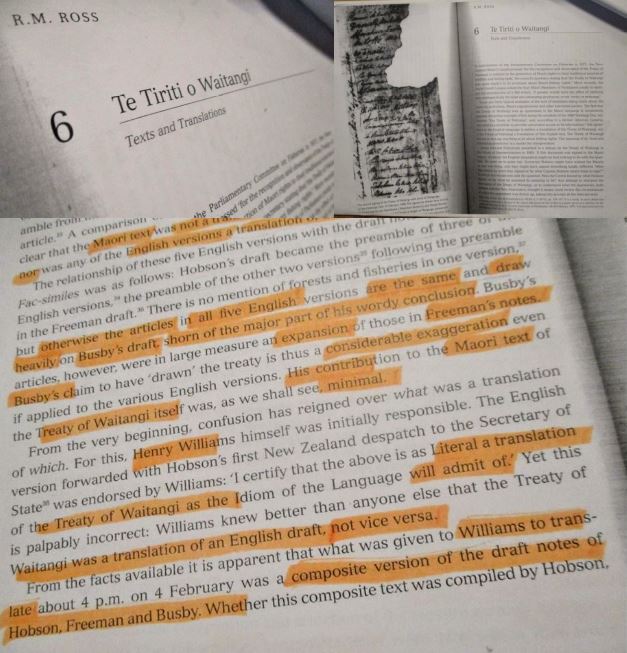
Claudia Orange’s 1987 book, The Treaty of Waitangi, supplied rich context that the New Zealand public had been missing about the competing forces, events and players that led to the historical compact. The mission to persuade the ‘Treaty Chiefs’ were located as deceptive and the ‘regrettable’ justifications for Britain’s intervention in 1840 were found to be — essentially, a cover story for a stealthy imperial takeover — by Professor Ranganui Walker in his 2004 book, Ka Whawhai Tonu Matou – Struggle Without End, and by the Te Kawariki & Network Waitangi Whangarei in their groundbreaking 2012 book, Ngāpuhi Speaks: He Whakaputanga o te Rangatiratanga o Nu Tireni and Te Tiriti o Waitangi, and by Matthew Wright in his 2019 book, Waitangi: A Living Treaty.
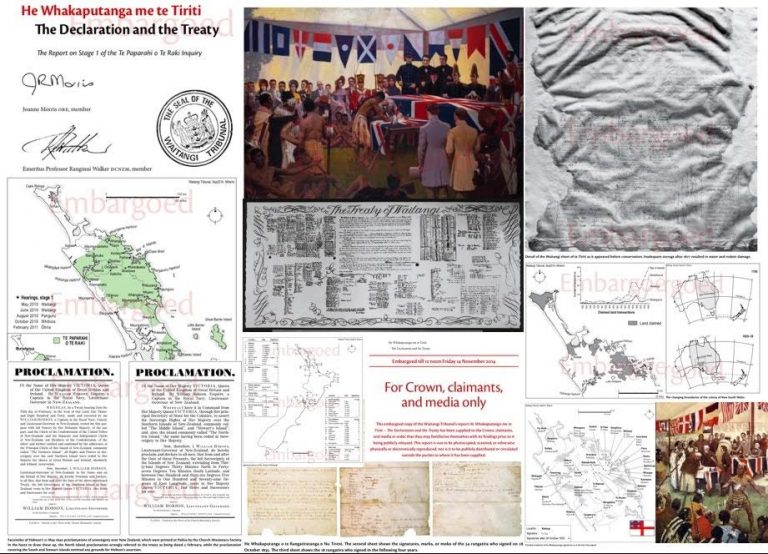
The received sanitized story is that Britain’s ‘hand was forced’ by the second New Zealand Company and other land swindling syndicates making extensive claims to soil, over which Britain had no jurisdiction, to prevent ‘evil’ upon the Native New Zealanders, as Paul Moon and Peter Biggs argued in their 2004 book, The Treaty and its Times: The Illustrated History. In 1837, convicted heiress abductor Edward Wakefield had published his book, The British Colonization of New Zealand, in which he gave intellectual shape to Lord Durham’s vision to establish settlements among a ‘savage people’ to lead ‘the natives’ in higher civilization through advanced religion, language, laws and social norms rather than a policy of extermination, as Anne Salmond noted in her 2017 book, Tears of Rangi: Experiments Across Worlds. Concerns that the governments of France and the United States would likely send ships to beat Britain to take possession and sovereignty if a legislative bill in the British Parliament were worked upon, also underpinned the haste, since the proceedings would draw the attention of rival states, as Wards surmised in The Shadow of the Land.
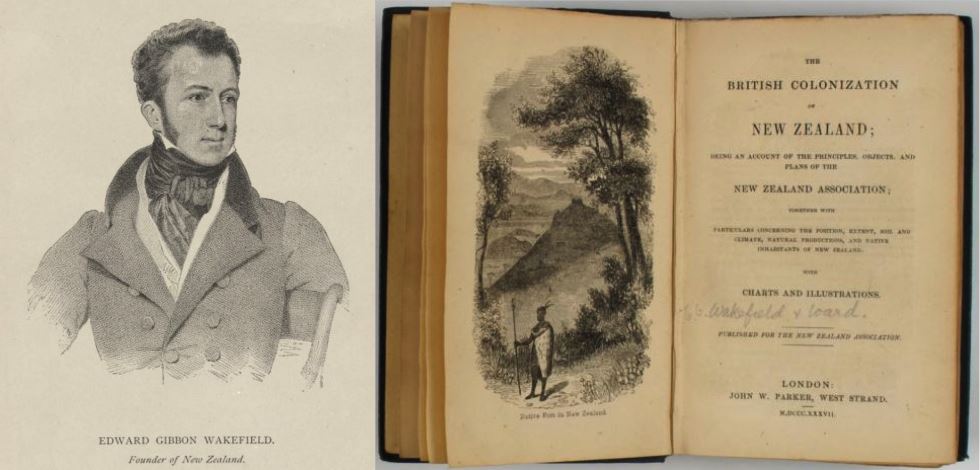
As enlightening as these efforts have been, faults included, a gap remains in recent Treaty literature that overlooks the phenomenology in the three major categories outlined above, as the ‘physical parts’ for the anatomy of an epic power crime. Those three major categories – the Discovery Doctrine deployed in a two-track route, the Treaty Theater spinning on a fulcrum of language translation differences, and the clanker moments – together reveal the witting deception required to keep the Imperial Elephant in the Treaty Tent invisible to the rangatira, the cheiftainesses and hapū gathered.
It was officials in the Colonial Office ‘brain’, led by Secretary of State for War and the Colonies, Lord Normanby, whom appeared to have hatched this political conspiracy essentially as a traveling theatre show, and was carried on by his successor, Lord John Russell. It was aided by the body of the Lords of the Treasury, Her Royal Navy and the Protestant Anglican and Wesleyan missionaries – to give the ‘free hand’ reign to extend the British Empire’s extremities. And it was abetted by ‘the head’ – the Crown Lawyers, as well as the Secretary of Foreign Affairs, Lord Palmerston, whom may have been the occult source of the conspiracy, along with the complicity of the two above-mentioned Secretaries of State for War and the Colonies, and also British Parliamentary Under-Secretary of State for the Colonies, Mr R. Vernon Smith. And, crucially, these ‘heads’ were also abetted by the visible Victorian ‘face’, since Her Majesty of the British Masonic Empire was required to authorize the ruse of swindled sovereignty.
This gap in Treaty literature remains, I think, due to a squeamishness to go for the Royal jugular, an absence of solidarity across the Māori and Pākehā cast as Human Cattle, and a lack of visionary imagination about possible futures. The nature of this humungous shortcoming regarding the epic rort can be glimpsed as a kind of ‘man behind the curtain’ moment at the end of long journey along the ‘Yellow Brick Road’ that leads to a figurative ‘Emerald City’. Except, the ending keeps being recorded with mis-takes, like in a movie where what really happened is warped by Victorian voodoo, first-hand account cover-stories and oath-bound Freemasons controlling a parallel power system capable of casting brainwashing spells – so the mis-takes make the final film edit every time, whether wittingly or not.
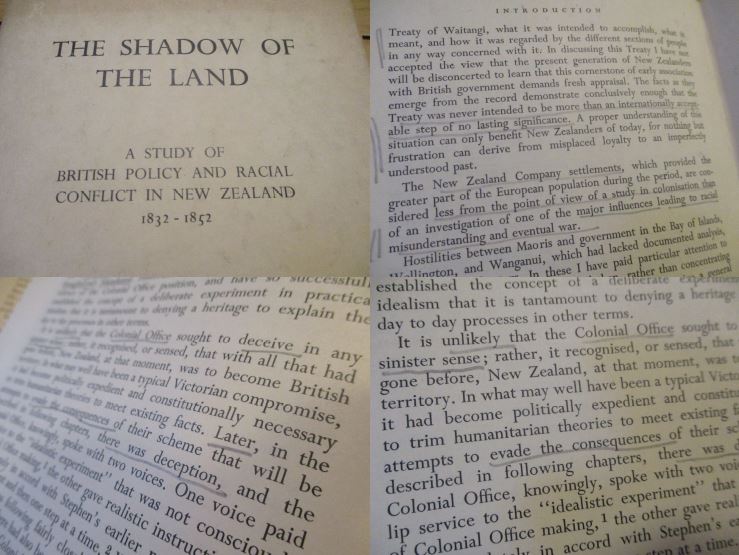
In 1968, the ‘man behind the curtain’ was, in essence, Ian Wards, who in writing, The Shadow of the Land, reached the view that from the British end, the Treaty was simply intended to be “an internationally acceptable step of no lasting significance” and that it was “unlikely that the Colonial Office sought to deceive in any sinister sense”.
Evidently, the deception was benign.

The first claim is akin to blurting, “Pay no attention to that man behind the curtain”, and the second can be likened to saying, “The Grand Oz has spoken”. As I shall show, Wards’ claim about there being nothing sinister underpinning the Colonial Office’s strategy to set in motion a mission to treat was, in effect, an inoculation ritual. The performer of such inoculation tactics admit the inherent weakness of a position, then downplay its significance as though the matter is of no lasting importance. The target audience is supposed to think nothing more of the matter.
Essentially, Wards’ logical fallacy was to argue from ignorance, since the position taken claimed there was no evidence or proof to the contrary and seemed predicated on the inability of opponents to present convincing evidence to the contrary. Therefore, its difficult not to reach the view that The Shadow of the Land was commissioned by the Historical Branch of the Department of Internal Affairs in Wellington New Zealand to construct a text that could be deployed to confront the challenges underway for revisiting the events of New Zealand’s state formation.
With similar ignorance, the ‘Grand Oz’ who spoke for the Great Depression-era generation, T. Lindsay Buick. He claimed in his 1933 tome, The Treaty of Waitangi – How New Zealand became a British Colony:
“the thing that proved the determining influence in the negotiations – more than the inducements offered by the Crown, or the persuasions of the missionaries – was that the chiefs had acquired a clear grip of the primal fact that whatever it took from them, the treaty left them in secure possession of their lands.The sovereignty was the shadow, the land was the substance; and since the shadow was already passing from them by force of circumstances over which they were powerless to exercise control, they consented to its surrender with all the less regret.
The Treaty of Waitangi therefore became what it professed to be, a yielding of the supreme political power in the country to the British Crown, and when the last signature had been put to it, Britain’s right to colonise and govern in New Zealand was incontestible before all the world.”
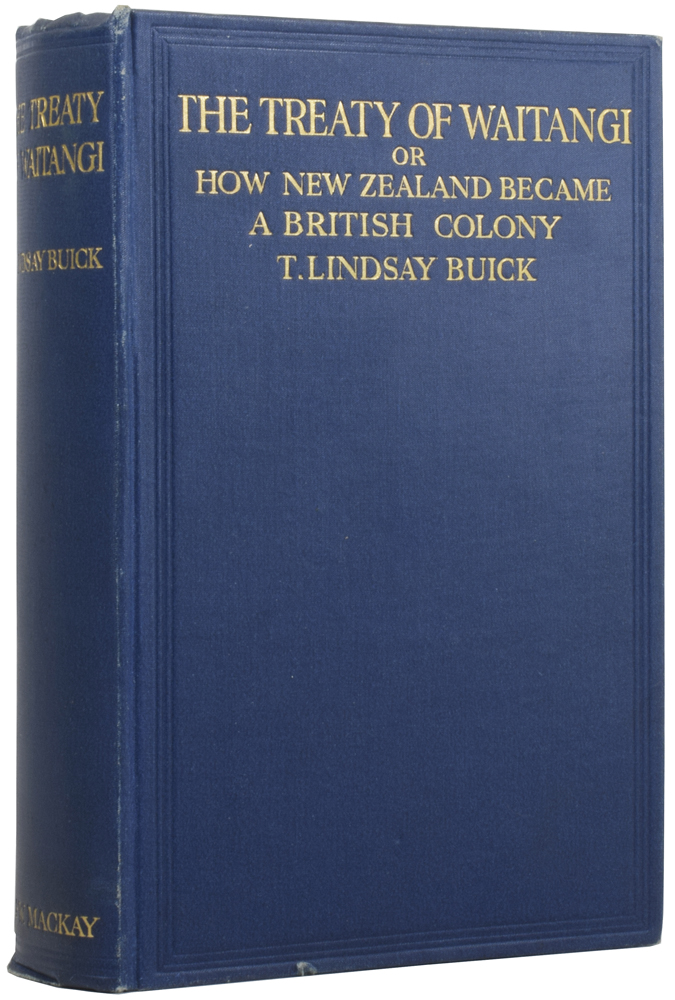
By framing his book, The Treaty of Waitangi – How New Zealand became a British Colony, with the ‘myth of cession’, it is not surprising Buick treated the English version of the Treaty as governing class gospel, even though the book included a te reo Māori version. By downplaying contradictory matters, such as Hobson claiming sovereignty over the South Island by right of Cook’s discovery, Buick maintained the spell cast by colonial officials, military officers and Anglican and Wesleyan missionary alchemists as they hawked the Māori language version, Te Tiriti o Waitangi, around the coastlines of Aotearoa.
The Treaty of Waitangi was not an experiment in humanitarianism, nor a legitimate effort to mitigate the impacts of European contact on a co-habitating aboriginal and indigenous culture. Rather, it was an epic fraud executed, improvised and expedited as a perfect crime of power, with unique elements that made the brazen swindle un-repeatable. In this way, the 1840 Waitangi Treaty could not be an experiment, because such precedents imply repeatable tests to replicate the heist of paper sovereignty.
Therefore, the gap identified in recent Treaty literature reveals an ironic Orwellian Doublethink stance. Voices sympathetic to Māori defend the agency of Māori as an industrious, intelligent, and intuitive indigenous people – which they were. But, crucially, they were clearly cast as naïve natives by highly functional psychopaths working as a confederacy to deceive. Deception was the primary purpose of going to the trouble of writing the Māori language version, since it would supply a mirror-like symmetry to the 1835 ‘Declaration of Independence’, which was drafted originally in the vernacular of Protestant Missionary Māori.
Simultaneously, many such sympathetic voices also continue to fail to call out Queen Victoria, the British Monarchy’s sovereign head over the House of Lords, the Church of England and the most prestigious imperial Order of the Garter, as well as Patronness of English Freemasonry – and the pre-eminent Wicked Witch of the West in her time.

On the one hand, Māori were deceived into unwittingly partaking in Treaty proceedings that had deliberate translation differences, such that the all-important English language version could be held up as proof that a cession of sovereignty had occurred in 1840. Yet, this position also implicitly or explicitly maintains that Queen Victoria unwittingly acquired a colony the size of Great Britain by fraud. We’re supposed to believe that somehow the Chieftainess of the world’s dominant empire lacked witting agency when she authorized the erection of separate colony in mid-November 1840, after the Treaty parchments were returned to London with its brazen claim that the chiefs ceded sovereignty without reservation, forever. In other words, the ‘myth of cession’ requires grown-ups to believe a fairy tale that casts the 21 year-old Queen Victoria as dim-witted for authorizing the initiation of the machinations on June 15th 1839, and subsequently ratifying the stealthy seizure of power with unseemly speed from an entire people whom were unfamiliar with ‘paper sovereignty’ — in all its bearing.
Because – the Anglo-Saxon world of grown-ups have been fed a childish tale of colony acquisition that is, essentially, from the Smurf Universe. Only naïvely optimistic Smurfs could believe the aboriginal and indigenous peoples would freely, consciously and generously sign away sovereignty to a blue-blooded Smurf Queen. If there was no ‘visible’ coercion, there had to be trickery afoot, which meant fraud, conspiracy and a challengeable claim against the British Monarchy itself.
And yet, with all the myopic focus on obtaining full sovereignty on paper, we are supposed to believe the officials at the Colonial Office, and other parts of British State apparatus were like naïvely optimistic Smurfs devising a benign way to claim sovereignty over the once-‘Lost Land’, mapped some seventy years prior by Captain Cook Smurf, due to the pressing circumstances tabled in Lord Normanby’s ‘humanitarian’ propagandist memo. Normanby’s instructions to Captain Hobson — which opened by essentially reiterating Captain Bro. Cook’s Masonic occult vision that New Zealand was strategically important due to its geographical location and resources — also switched on the ideological function of activation, to face the threat of a common enemy: the evil spoilation from lawless emmigration from the nations of Christendom, including Britain.
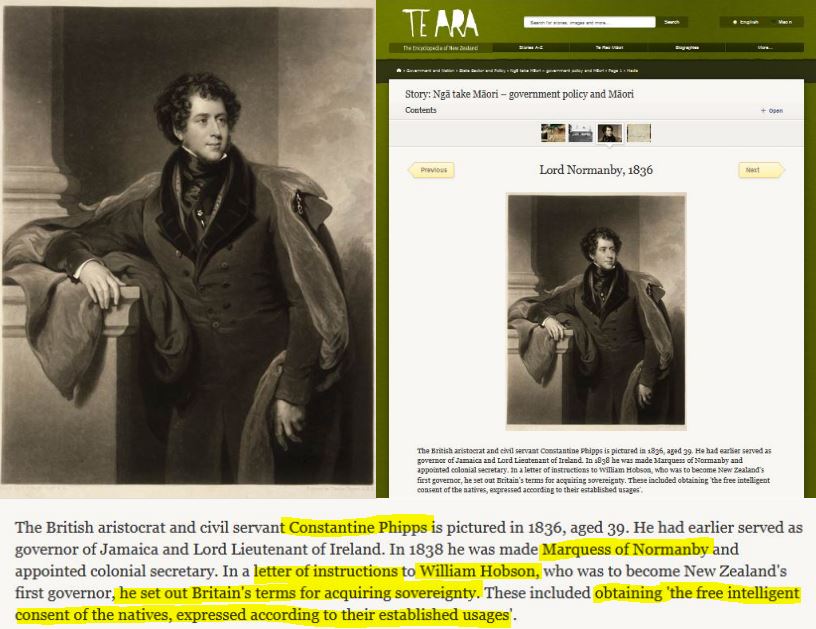
With such regretful intervention, they needed to use the Smurf Queen’s special stamp to authorize such a scheme at both ends of the final stage.
But, that special Privy Seal stamp belonged to the only female from their own village of London, who lived in a fancy palace, so they ran the idea past her after the Crown Lawyer Smurfs worked out they could extend the boundaries of New South Wales, as they had done to acquire Norfolk Island. (Good thing there was a constitutional precedent to draw upon to make the scheme appear legitimate). And then, the London Government Smurfs arranged for the Queen of the Smurfs to ratify a Charter of Maoriland after the Treaty parchments came back signed by a fraction of chiefly inhabitants from the once-‘Lost Land’ — to make it seem like Chiefs’ tattoo marks mattered.
In the Smurf Universe, it seems, volte-faced duplicitous performance were the kind of behavior that earned knighthoods. Luckily, those naïvely optimistic Smurfs all happened to be male, schooled in the ways and means of an empire that essentially wore a religious face mask to distract from the directions over marionettes, machinations, and military manoeuvres from unseen puppet masters in guild halls, country mansions and a fancy palace.
To make sure the ruse worked, Captain Hobson Smurf was sent to perform the theater of acquiring sovereignty without any military support. But, this lack of coercive backing was downplayed and attributed to costs, since Smurf mythology was being created in the records department where official Smurfs beavered away as if baking a cake made of mix of witting stealth, pensive skepticism and narcissistic cunning and topped with delicious naïve optimism icing.
On a stopover in the village of Sydney, the Captain Hobson Smurf lost his nerve when he was told, again, by the Smurf Governor Gipps he could not have 100 soldiers. The icing of naïve optimism had been completely licked off the cake. Doctor Smurf of Sydney recorded that Captain Hobson Smurf was stressed and had lost his Smurfness. He needed rest. This stress, we can detect, was due to him being tasked with lying to the Native Chiefs of Maoriland. Captain Hobson Smurf was told he mustn’t tell the Native Chiefs he was there to assert Smurf rule. Nor was he allowed to tell the Maoriland Chiefs that their village, and lands and rivers and the lands of their cousins and even their enemies, were already within the jurisdiction of the Smurfs from Sydney, whom were working for the Queen Smurf in London.
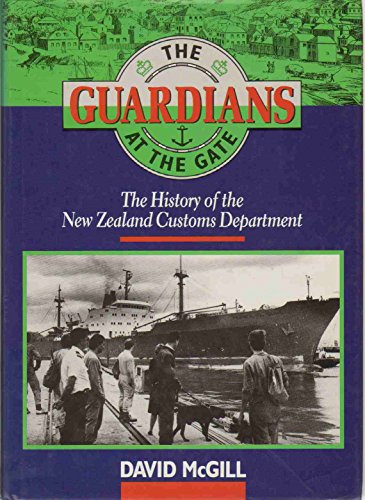
his 1991 book, The Guardians at the Gate, David McGill avoids mentioning that the Customs Department of New Zealand was established by New South Wales Governor George Gipp’s Proclamation on January 5th 1840, meaning the date when the course for one of the three sure things in life, taxes, was plotted — remained uncertain.
After all, the Monarch’s reserve Royal Prerogative Powers had also been previously applied to authorize the erection of a dependent colony in June 1839. That move meant the annexed islands fell within the jurisdiction of New South Wales, like New Zealand had been attached to Australia by a lasso in a heist of territory belonging to heathen aborigines in need of British Christian Civilization. During the heist in progress, the Customs Department of New Zealand was established by New South Wales Governor George Gipp’s Proclamation on January 5th 1840, or one full month before the first signings at Waitangi. The establishment of ‘Customs’ was highly symbolic and became the mechanism to establish ordinances for the taxation of commerce, prevent chiefs from charging ship tolls and a legal precedent to eventually transform landless Māori into Human Tax Cattle. Thus, taxes became a ‘sure thing’ in the life of New Zealand a month before any mortal chiefs were to meet at Waitangi on land swindled by Britain’s first official resident: the magical and wonderful Wizard of Waitangi, James Busby.
And when Captain Hobson declared himself as Lieutenant-Governor of the British Settlement in Progress in New Zealand in an Anglican chapel, Christ Church, in Kororāreka before 300 settlers and 100 Māori, by reading a Proclamation on January 30th 1840 – the death-knell of Māori sovereignty was sounded. In spite of Captain Joseph Nias of HMS Herald refusing to fire a 13-gun salute for a lieutenant-governor to mark Captain Hobson’s arrival on shore in his gold lace, Hobson still declared himself Lieutenant-Governor. Instead, the HMS Herald fired an 11-gun salute befitting a British Consul arriving on shore, in keeping with instructions from Lord Normanby, that had stated he was to proclaim himself as Lieutenant-Governor over any territories ceded by the chiefs as he moved about the country. Hobson’s decision to assert this higher status from the outset, in part, may have stemmed from his knowledge of the Puketona land confiscation of March 1835, which appears to have been construed as a ‘cession’ to the Crown.
In his 2006 book, The Governors Gavin McLean fixed the date of 30 January 1840 as the day when George Gipps Governorship of New Zealand commenced. But, because he maintains the fiction that sovereignty was accrued by treaty cession, the government historian avoids saying Captain Hobson became Lieutenant-Governor by the performance of his proclamation at the Christ Church chapel in Kororāreka.
In 2014, the Waitangi Tribunal noted that Hobson appeared to have believed that through this cession of Rete’s village — British sovereignty had been established in one (admittedly small) corner of the country. Busby evidently disagreed, and told Hobson that the land at Puketona had not ceded in the sense of a voluntary cession of authority of a like kind that Lord Normanby’s instructions had proposed. In other words, Busby was conveying to Hobson that he needed to be consistent with the thrust of Normanby’s instructions, which were the brief to successfully carry off the improvisational theater of the Treaty Tour Production.
Recent scholarly efforts have located the takeover of aboriginal and indigenous territories in the so-called ‘New World’ by European powers and also the United States, within the Doctrine of Discovery paradigm, such as a 2009 study, “An Indigenous Lens into Comparative Law: The Doctrine of Discovery in the United States and New Zealand”, by Robert Miller and Jacinta Ruru published in the West Virginia Law Review. This addition to colonization scholarship provides the analytical tools to categorize the phenomena, the mindset, motives, and behaviours. And, in particular, the Discovery Doctrine sub-field supplies a sharpened lens to explain why the 1840 Waitangi Treaty as a compact between two peoples had no in-built longevity from the colonizing power’s perspective — except as a mechanism that purported the territory had been willingly ceded without coercion to the British Monarchy in the English language version.
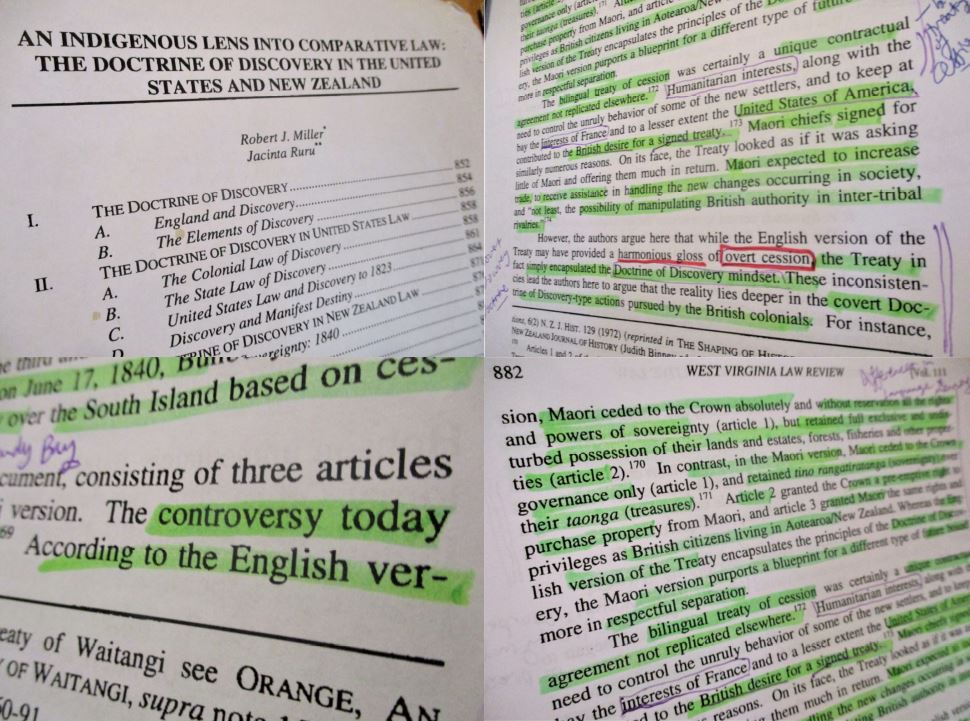
All the European Maritime Powers, and the United States, constructed treaties with indigenous peoples in the formation of their imperial colonies, as Matthew Wright found while researching Waitangi: A Living Treaty.[42] These treaties were drafted at the conclusion of ‘little wars’, to establish commerce, and territories. However, Wright states that the 1840 Waitangi Treaty was the only one that the British used to gain full sovereignty by paper with an indigenous people. The 1840 Waitangi Treaty is also unique for being bi-lingual, which was likely the result of Reverend Henry Williams having sounded out chiefs prior to the February 1840 signings, about the use of the word mana, which equated with chiefly authority. Rev. Williams realized the chiefs would never agree to its use in a mana-surrendering context. That kōrero with rangatira seems to have been pivotal to the decision to construct a translations ruse. Both versions were read out at Waitangi; first in English, by Captain Hobson, and followed by Rev. Henry Williams, in Māori. Since Reverend Williams did not speak a literal translation of the English text, the Church Missionary Society chief’s performance was one of lying by omission.
Thus, to key people present who were fluent in both languages, the deception that sovereignty would be lost in translation was obvious. The confidence trick rested on the fact that Māori were not fluent in English at that time. The ruse could not work, if anyone spelt out to Māori that the respected Reverend Henry Williams, as chief scribe of the Māori language version, had switched words to hide the swindle of sovereignty — as Mike King’s documentary, Lost in Translation, makes clear.
Because this innovation contained the trick of language translation deceptions, I argue, it could only work once. Because, if it were repeated, the cover-story of a hastily-drafted treaty in a far-flung location – amid pressure of immigrant-laden ships arriving with land speculating syndicates swindling ‘Māori’, and with the looming threat of the French bogeyman showing up — would have long ago collapsed.
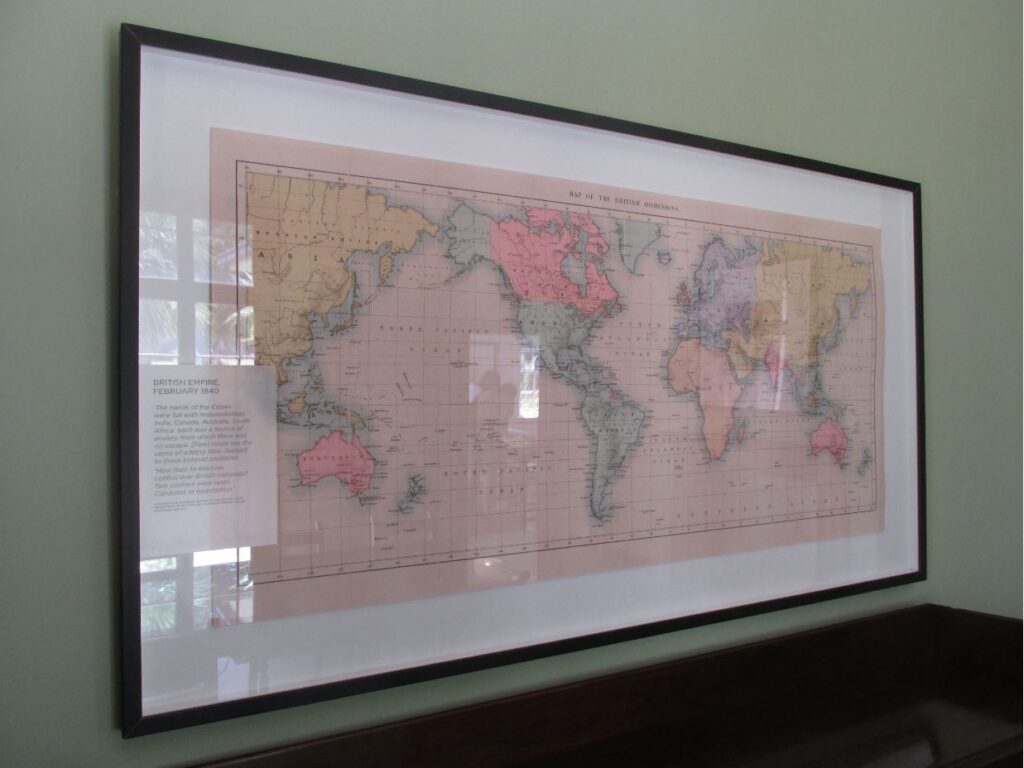
The decision to circumvent the British Parliament, and get the job done to take possession and sovereignty by a swifter route with freshly laid Colonial Law Track, also meant activating the British Monarchy’s reserve Royal Prerogative Powers. That swifter route, which had the advantage of creating an unchallengeable title from an English Constitutional Law perspective*, compelled the British Government to commission Captain Hobson to treat with ‘the Natives’ to save face for Queen Victoria. Thus, the swifter route was double-tracked and the Treaty Track would carry a ‘Treaty Parchment Contraption Engine’.
In 1840, the 39 Māori signers of English language version of the Waitangi Treaty and the 473 Māori signers of Māori language version, Te Tiriti o Waitangi – intended that their paramount authority would remain intact.
In the lengthy 217-word sentence that comprises the Preamble of the English version, Queen Victoria was alleged to have extended “Her Royal favour” to invite the Aborigines to cede sovereign authority to her, and signaled the formation of Civil Government and also justified this move to avert evil consequences of unregulated emigration. This rambling Preamble stated Her Majesty was “anxious to protect … [the] just Rights and Property” of the “Natives Chiefs and Tribes of New Zealand”.
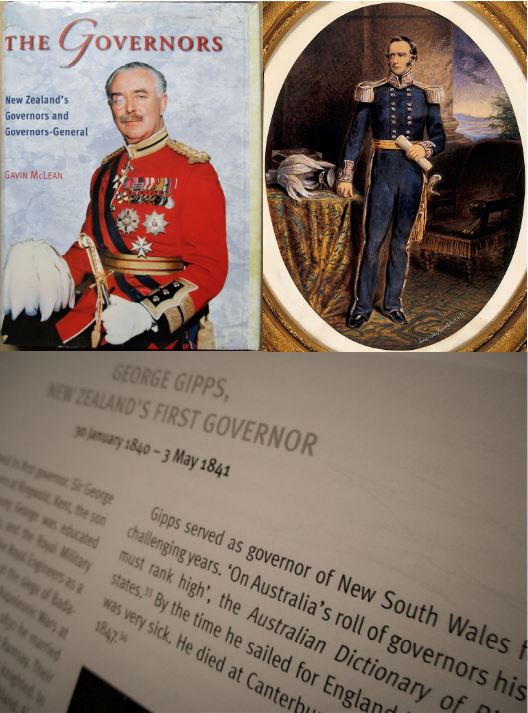
This politically hygienic rhetoric was plagiarized from Lord Normanby’s instructions. It would appear that Queen Victoria knew of the plot to swindle sovereignty, because when it came time for the Monarch to authorize the paper heist, this same politically hygienic rhetoric was copied into the Queen’s Royal Charter of November 16th 1840, which erected New Zealand as a separate colony. The Charter of New Zealand empowered the governor to grant lands deemed by European eyes to be waste or uncleared lands to settlers and their corporate bodies, to establish towns, counties and public buildings and other infrastructure.
Yet, when Hobson’s Commission was authorized on 30th July 1839 by Lord Normanby on Her Majesty’s Command at the Court of Buckingham Palace, with the device of Letters Patent, it can be seen from the wording that New Zealand was regarded as either already, or in the future, a British Crown territory, acquired in Sovereignty. The method of acquisition was neither stated in this Letters Patent of 30th July 1839, nor in the Letters Patent of 15th June 1839.
The ruse to gain the appearance of the chiefs ceding sovereignty to Her Majesty at Waitangi on February 6th 1840, can be seen by the date at which New South Wales Governor George Gipps became Governor of New Zealand: 30 January 1840.
In other words, the chiefs were conned into agreeing to the appointment of Captain Hobson as Governor of New Zealand, when he was already Lieutenant Governor, and unbeknown to the rangatira, George Gipps had become Governor of New Zealand on 30 January 1840, when Hobson read the Proclamation of his commission in the Anglican chapel, later named Christ Church, at Kororāreka. Captain Hobson’s performance of his Proclamation as Lieutenant Governor was in accordance with English Colonial Law’s application of the Discovery Doctrine, which had the effect of simultaneously making him deputy to the Queen Victoria’s first Vice-Regal over New Zealand: Governor George Gipps.
Therefore, this politically hygienic rhetoric was part of a humanitarian cover-story that is traceable in the pre-Waitangi, concurrent, and post-Waitangi discourses. This finding means its consistent deployment —even while the exertion of bald power occurred with the Queen’s New Zealand Charter of 1840 — belies a smoke and mirrors tactic to save face for the Protestant Missionaries, whom would be recruited in a mission to persuade.
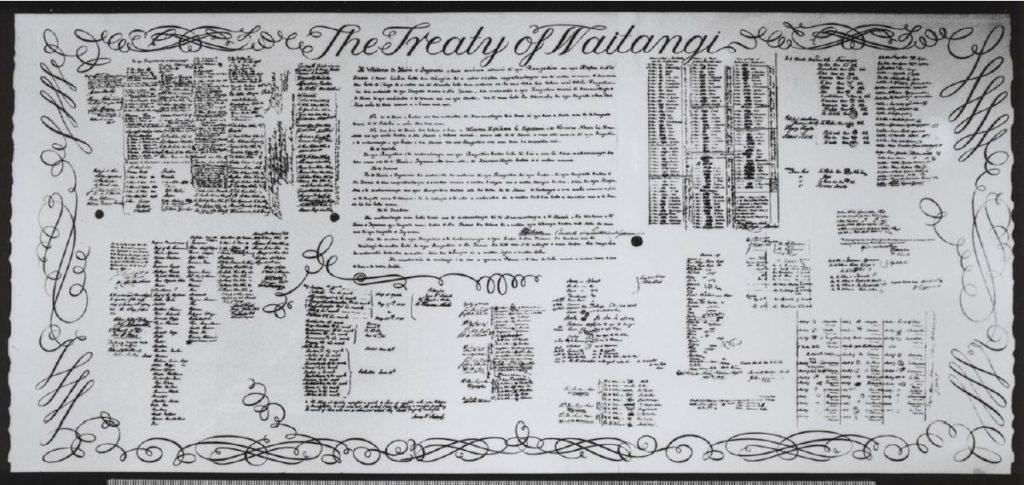
Crucially, in the te reo version of the Preamble, “just Rights and Property” are rendered as “o ratau rangatitiratanga, me to ratau wenua”, which meant “their chieftainship and their land”. The bearing of this difference is significant because “Civil Government” and “sovereign authority” were translated by Rev. Henry Williams into Māori as “kawanatanga”, or governance/governorship. Also, Rev. Henry Williams translated “functionary” as “kai wakarite” which meant an administrator, mediator, negotiator or adjudicator. This meant Hobson’s role would have been understood by Māori as an official appointed by the Queen to make decisions sitting with or below rangatira, not above.
In Article One of the Māori language Te Titiri o Waitangi o 1840, the chiefs conferred the right of governorship, meaning authority was granted to the Queen to appoint a Governor to rule over Pākehā only. Meanwhile, in the English text, the chiefs signed away, or ceded, complete sovereignty over their territories. Rev. Henry Williams achieved this sleight of hand by rendering Kawanatanga or governorship to mean sovereignty.[43] The effect was that Kawanatanga was essentially construed to mean that Māori ceded sovereignty over New Zealand to the Queen of England, and to her heirs — forever![44]
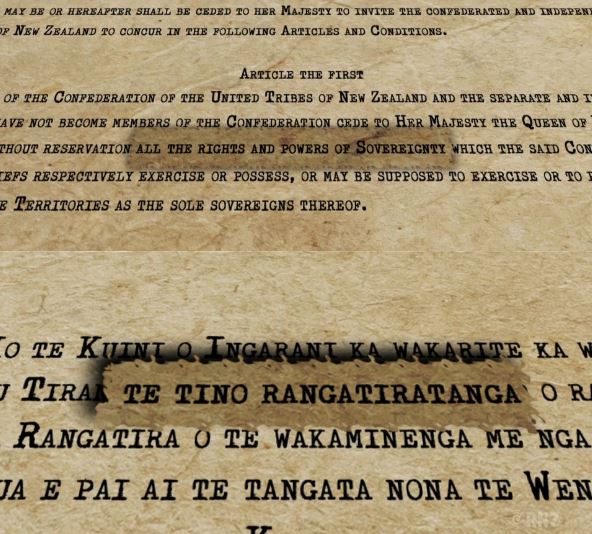
Māori chiefs thought they retained their chieftainship, or independent authority, with the crucial term — tino rangatiratanga — in Article Two of the Māori language version. Both mana and tino rangatiratanga were regarded as paramount, spiritually sanctioned, inalienable power, as Emily Blincoe noted in her law paper, “The Myth of Cession: Public Law Textbooks and The Treaty of Waitangi”, that endorsed the Waitangi Tribunal’s October 2014 report, The Declaration and the Treaty.[45]
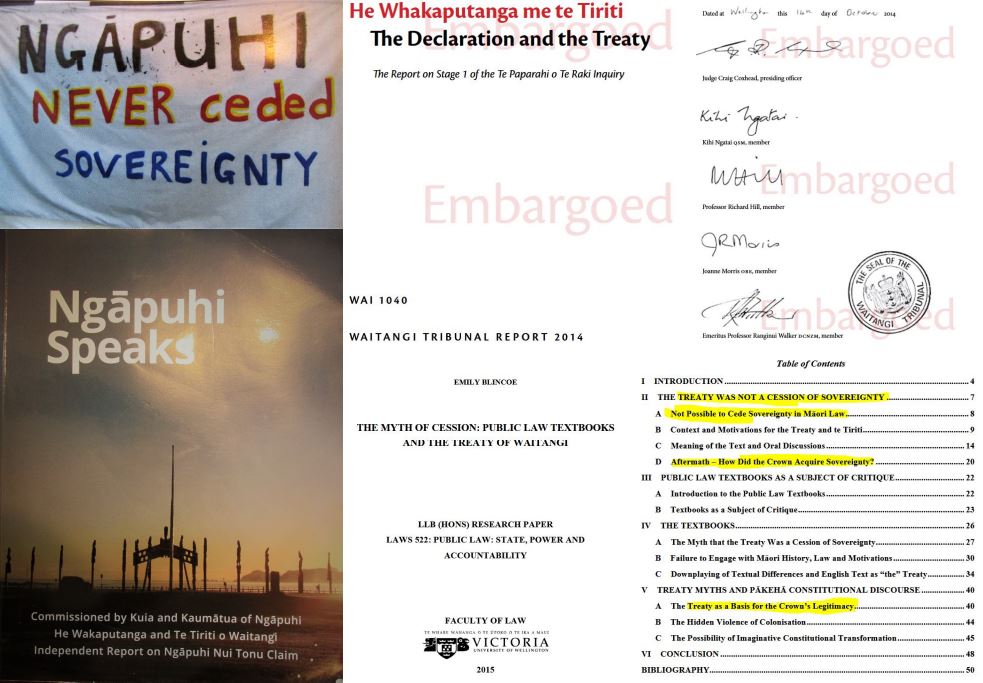
In Article Two of both texts, Queen Victoria upheld the chieftainship over lands, village estates and treasures, while in the Māori language version the British Monarch gained the right to appoint an agent to barter or trade in land. However, the Second Article’s English text conferred the Queen of England the right of pre-emption, which was said to mean granting the exclusive right to purchase Māori lands at agreed prices. This exclusionary blackballing right of pre-emption was poorly understood by rangatira.
This Discovery element of Preemption/European title was a powerful mechanism since it not only created a monopoly for the British Masonic Empire over private British enterprises. By appearing to gain this right, the British Crown constructed the capacity to extinguish Indian or Native Title created on First Discovery. Such Indian or Native Title rights would otherwise have the potential to last forever if aboriginal and indigenous nations never consented to sell to the European Maritime Power claiming the exclusive Preemption/European title right.
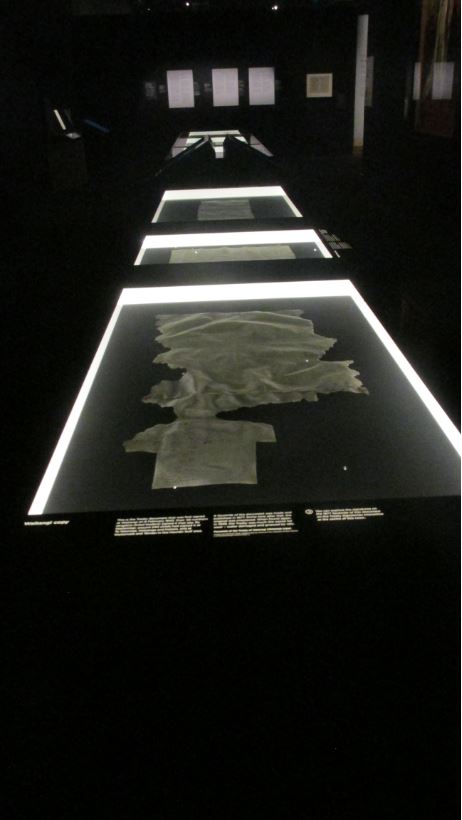
The Second Article also foreclosed rival European Maritime Powers from gaining this right. This Pre-emption right constructed a Crown land-acquisition monopoly, which would mean Māori would bare the burden of being coerced to sell lands at low prices in a new colonial economy where the profits from re-selling land at inflated prices would supply money for public works and emigration. In effect, Māori land owners were forced to ‘pay’ a kind of capital gains tax, as Keith C. Hooper and Kate Kearins found in their study, “Substance but not form: capital taxation and public finance in New Zealand, 1840-1859” published in the Journal of Accounting History.[46]
In the Māori text of Article Three, the Queen contracted to look after the Māori people and was afforded a kaitiaki role of guardian, in recognition of the governorship role accorded to her. In the English text, ‘the Natives of New Zealand’ were given “all the rights and privileges of British subjects”, as consideration for their chiefs signing away sovereignty. According to this version of the Third Article, the Māori signers fully understood the Treaty.
Rev. Henry Williams was well aware of the imperfections in the translation, and framed it in a way that would be agreeable to rangatira, whereby they would be led to believe a protectorate was being constructed and Queen Victoria recognized their independent authority or tino rangatiratanga. In her presentation to the Waitangi Tribunal, Dame Anne Salmond pointed out that Rev. Williams had not made clear the sovereignty being ceded to Queen Victoria in 1840 in the English language version, while he had made clear the sovereignty being retained by rangatira in the Māori version of the ‘Declaration of Independence’, with the assistance of Eruera Pare Hongi as polisher of his final draft in 1835. Salmond stated:
“If Williams had used the terms ‘ko te kingitanga ko te mana’ (as he did in He Wakapūtanga) to translate ‘sovereignty’ in Ture 1 [Article One] of te Tiriti, and asked the rangatira to cede these powers to the British Crown, it is almost certain that they would have been angry and affronted, and that the negotiations would have failed. Instead, he couched the cession to Queen Victoria as a tuku or release of ‘kāwanatanga’ ”.[47]
When vital consideration of the re-examined accounts of the circumstances that preceded the 1840 signings, the discussions rangatira had with Lieutenant-Governor Hobson, his agents and the missionaries, and the sly symbolic cession rituals of empire — are all laid bare — it is evident that rangatira thought they were agreeing to the appointment of a governor to rule over unruly Pākehā, not Māori.[48]
Those Māori that signed were convinced by the sales-pitch of Hobson and Associates, that they were signing a treaty with a great power to not only discipline troublesome Pākehā. But, also to address land-swindling and protect Māori from foreign invaders in exchange for trade, limited immigration and positive co-development.
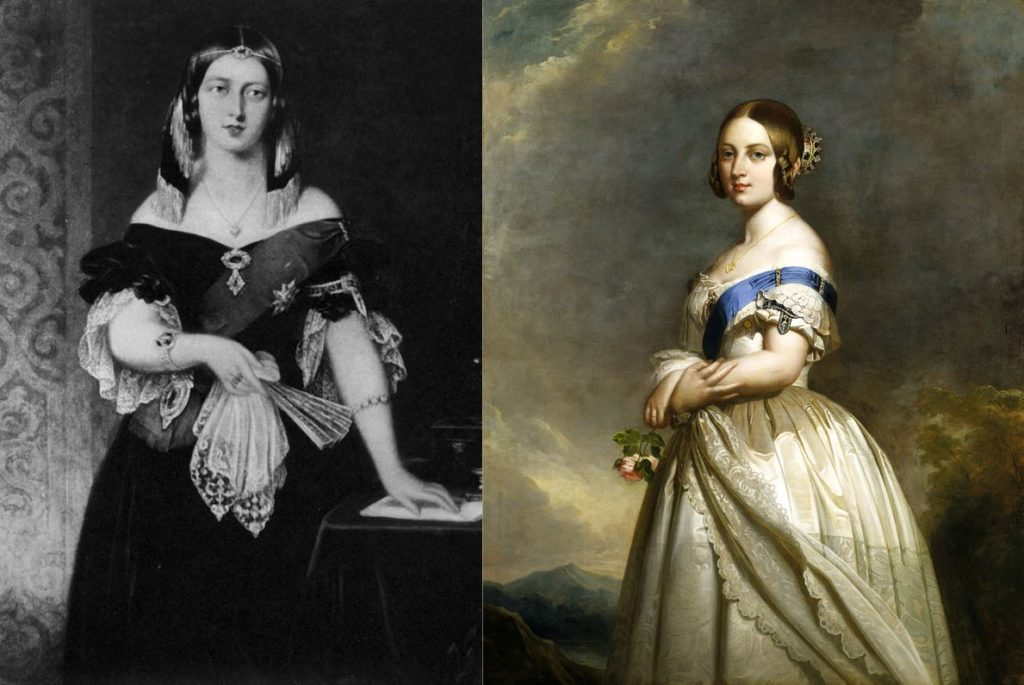
Furthermore, crucial assurances of Royal Navy Captain Hobson, his British Crown agents and the Protestant missionaries were given to rangatira, explicitly stating: (1) Queen Victoria would not dispossess Māori of their lands they did not willingly sell; (2) Māori would not become enslaved; and (3) rangatira would still retain their chiefly authority — as Dame Claudia Orange found in her Goodman Fielder Wattie prize-winning, imaginatively titled 1987 book, The Treaty of Waitangi.[49]
Where Rev. Henry Williams’ hand clearly asserted Māori sovereign power and authority in the native language version of the 1835 Declaration of Independence, that same hand wrote in Protestant missionary Māori version the 1840 Treaty of Waitangi, with more ‘poisoned ink’. Moreover, the freshly retired official British Resident James Busby drafted the English language version of the 1840 Treaty. Busby had worked with his friend Rev. Henry Williams on the 1835 ‘Declaration of Independence’, wherein they performed the same roles. Like Reverend Williams, Busby too had a past, one best described as the covert role of an Agent Provocateur to affect submission, exert authority and spread fear to serve the hidden agenda of British Masonic Colonial-Feudal state formation, as I outlined previously.
Prior to its deployment in the 1840 Waitangu Treaty, the pre—emption term as an exclusive land purchasing monopoly had only appeared in United States court cases in regard to the English colonies. In his 2011 book, Lords of the Land: Indigenous Property Rights and the Jurisprudence of Empire, Mark Hickford stated that New South Wales Governor George Gipps (1837-46) appeared to be the “proximate source” of the pre-emption clause. Hickford said Gipps held an extensive collection of legal and historical tomes that he drew upon to exercise “the entitlement of imperial administrations to manage anglophone settlers and territories in alien locations”.[50]
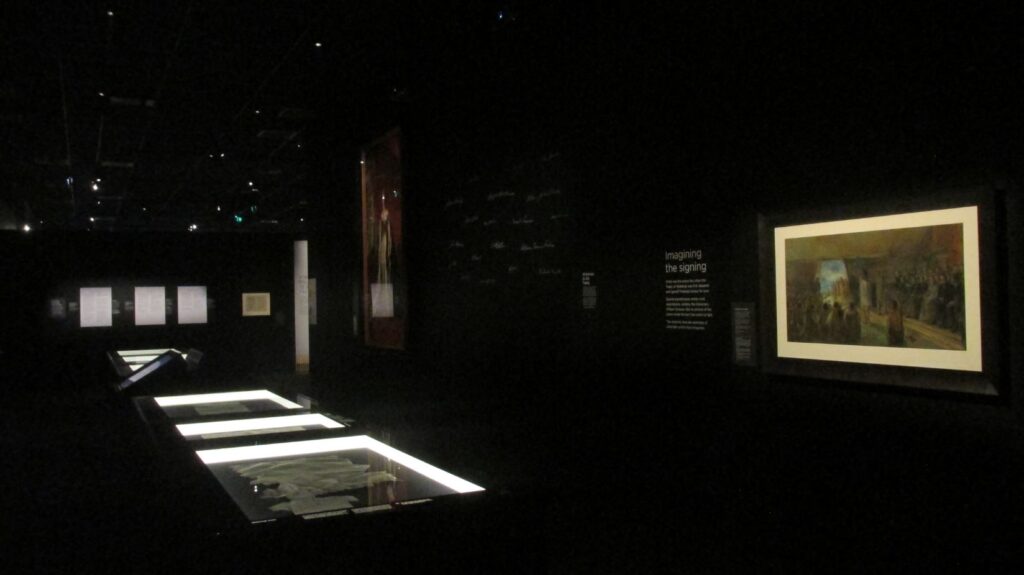
In law, pre-emption has another meaning, whereby a state acts pre-emptively in times of war, for instance, and takes land or resources before law is established. Conspicuously, the 1840 Treaty contained no provision for leasing Māori land, nor for Pākehā being conferred limited rights to use land, sea and other taonga or treasures that rangatira maintained control over. Everything about the authorization of the Treaty, its design and the Treaty Cliqué’s actions speak of an epic heist carried off with an exclusionary blackballing strategy to weaponize time.
Like all criminal plots, not everything went according to plan.
For one thing, Captain William Hobson had expected he could get the Treaty signings at Waitangi done and dusted in one day, on February the 5th. Captain William Hobson’s first Sovereignty Proclamation, dated February 5th 1840, ‘prematurely’ claimed sovereignty over the North Island on the basis of cession by treaty. Although the proclamation was printed prior, and was not published, the significance of the haste cannot be over-stated.
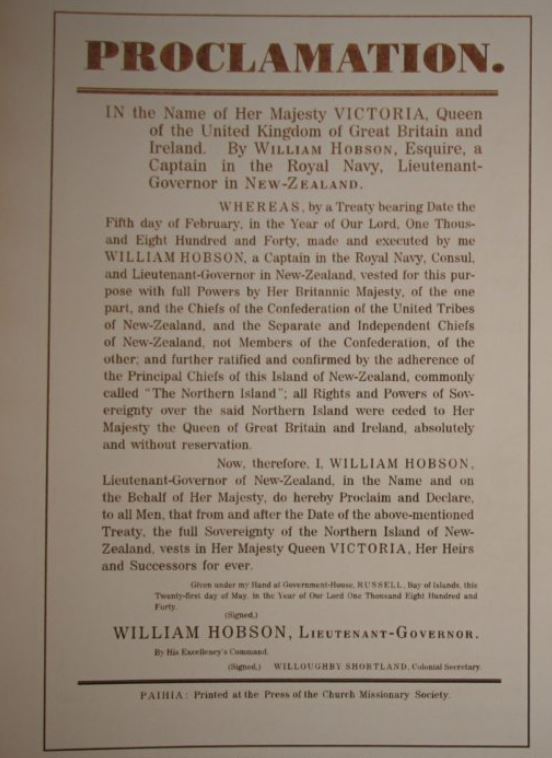
The unseemly hastiness belies the Treaty Cliqué’s modus operandi of speed politics, wherein élite criminal groups construct events designed to overwhelm more deliberative processes in order to gain from the desired results before the target audience can comprehend the far-reaching hidden agendas. This February 5th 1840 proclamation is one of several rabbit droppings that lead to the British Empire’s rabbit holes.
Indeed, four ‘clanker moments’ that occurred during the 1840 Treaty hui at Waitangi required subterfuge by way of awkward improvised theatre to avert the truth surfacing. The awkward improvised theatre performed by the Treaty Cliqué produced more rabbit droppings that also lead back to numerous rabbit holes of the four empires figuratively or literally represented at Waitangi.

Discovery Doctrine & Treaty Cliqué’s Clanker Moments
Snapshot: A hidden Discovery Doctrine was deployed to gain paper sovereignty over New Zealand from Māori as part of a long game that would inevitably lead to war over the far-flung moderately difficult archipelago.
As the ‘stage director’ of what was, in essence, a ‘Waitangi Treaty Theatre Company’, Captain Hobson, leaned on the Protestant missionaries to help him persuade the rangatira about the benefits of a treaty with the British.
Captain Hobson’s mission to persuade was an imperial charm offensive, which occurred with unseemly haste and along with his Treaty Cliquécast and their alluring novel props — that included the treaty sheets, quills and ink — the flaggy scene was set for New Zealand’s second and more audacious premiere of British Masonic theater. The first travelling theater company production occurred aboard the HMS Endeavour at Mercury Bay in November 1769, during Captain Cook’s first voyage of ‘discovery’.
In her 2018 book, Lying for the Admiralty, Margaret Cameron-Ash presented the case that Cook altered his journal, charts and logs to create phantom possession rituals, omit details of encounters and hide harbors, straits, and other details of strategic value to the British Admiralty, after he learned of a French presence in the South Pacific while in Batavia. Cameron-Ash, who presented her findings at the 2015 Power of Maps Conference hosted by the National Library of Australia, suspects that Captain Cook may have constructed a phantom possession ritual at Mercury Bay, meaning his claim of sovereignty in the name of King George III was created after the fact. Cameron-Ash noted Cook’s brief recording ends with two lines of darker coloured ink and smaller script, squeezed at the end of his customary long description of a place, its people and its politics.
Scholar Professor Robert J. Miller, who published his findings in a book titled, Native America, Discovered and Conquered, identified ten elements of the Discovery Doctrine. The ten Doctrine of Discovery elements are: (1) First Discovery; (2) Actual Occupancy and Current Possession; (3) Preemption/European Title; (4) Indian Title; (5) Tribal Limited Sovereign and Commercial Rights; (6) Contiguity; (7) Terra nullius; (8) Christianity (9) Civilization; and (10) Conquest. Because the elements of this Discovery Doctrine are present in the circumstances, texts and intent of the 1840 Waitangi Treaty, as well as the earlier 1835 ‘Declaration of Independence’ — and therefore the Declaration’s hidden bearing of steering Māori toward an eventual loss of substantive sovereignty — these Discovery elements are identified as they surface.
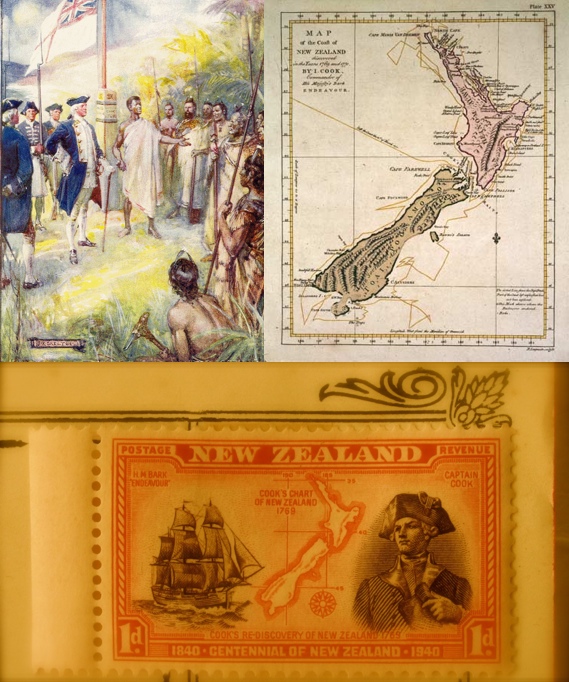
The 1840 Waitangi Treaty was a Discovery Doctrine event brazenly designed as a deceptive power crime to win native signatures and paper sovereignty through the construction of a copy of reality. Once this copy of reality was embarked upon, conspiring players performed a theatre of contrived ignorance, including those who did not necessarily agree with the deception at Waitangi.
When the four clanker moments arose, the Treaty Cliqué uncoupled the issues with screening actions, which were performed to avoid looking, lest the ‘Treaty Theater Train’ became derailed amid the likely hissing of steam. Such screening actions very effectively sponsor subsequent ‘unwitting misdeeds’, as David Luban discussed more generally in his 2007 book, Legal Ethics and Human Dignity, and modelled for his paper “Contrived Ignorance”, published in The Georgetown Law Journal in 1999.
Luban argued the case for modelling the “Structure of Contrived Ignorance” by viewing screening actions and so-called unwitting misdeeds as a unitary whole rather than separated by time-frames. He proposed viewing the version of the self that wittingly performed screening actions to preserve her own oblivion as the principle actor, while the agent is the later self at the time of the unwitting misdeed, who effectively ratifies the earlier self’s choice to compartmentalize, or screen off, potential knowledge of wrongdoing.
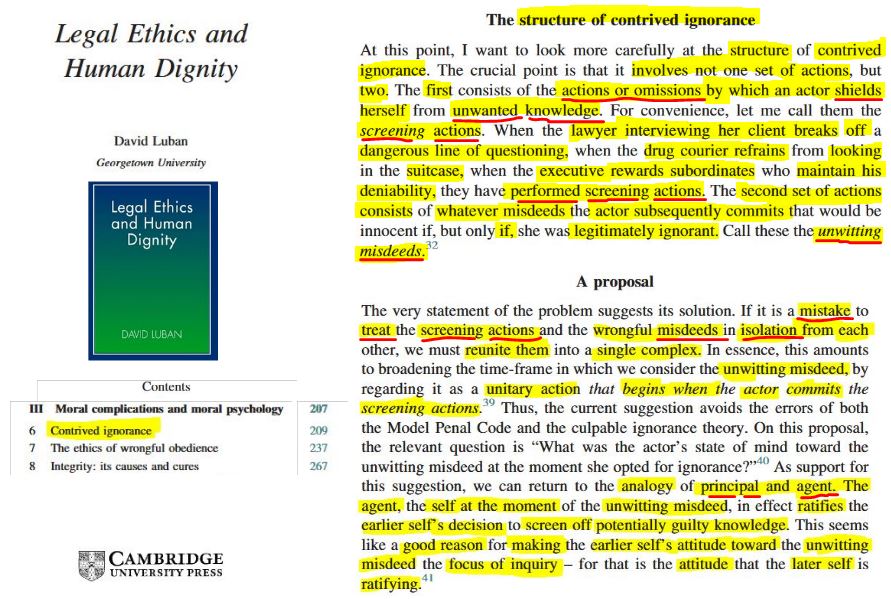
In making his point that, “in criminal law, wilful ignorance is ground for conviction, rather than acquittal,” Luban was in essence, laying out the gaps in catching and convicting group enterprises that contrive ignorance. A quote he drew from a U.S. trial seems apt for this case study of British Masonic Colonial-Feudal state formation:
“Ostriches … are not merely careless birds.”
As we shall see, the ‘Colonial Law Track’ moves to make a boundary extension of New South Wales to envelop all of New Zealand on June 15th 1839 was, in effect, a screening action. The reserve Royal Prerogative Powers were exercised for this move to circumvent the British Parliament, which implicated Queen Victoria. Therefore, when the British Monarch signed the Royal Charter for Severance, that erected N.Z. as a separate colony on 16th November 1840, she not only completed the claim to the title when Freemason Bro. Captain Cook annexed New Zealand in 1769 and 1770.
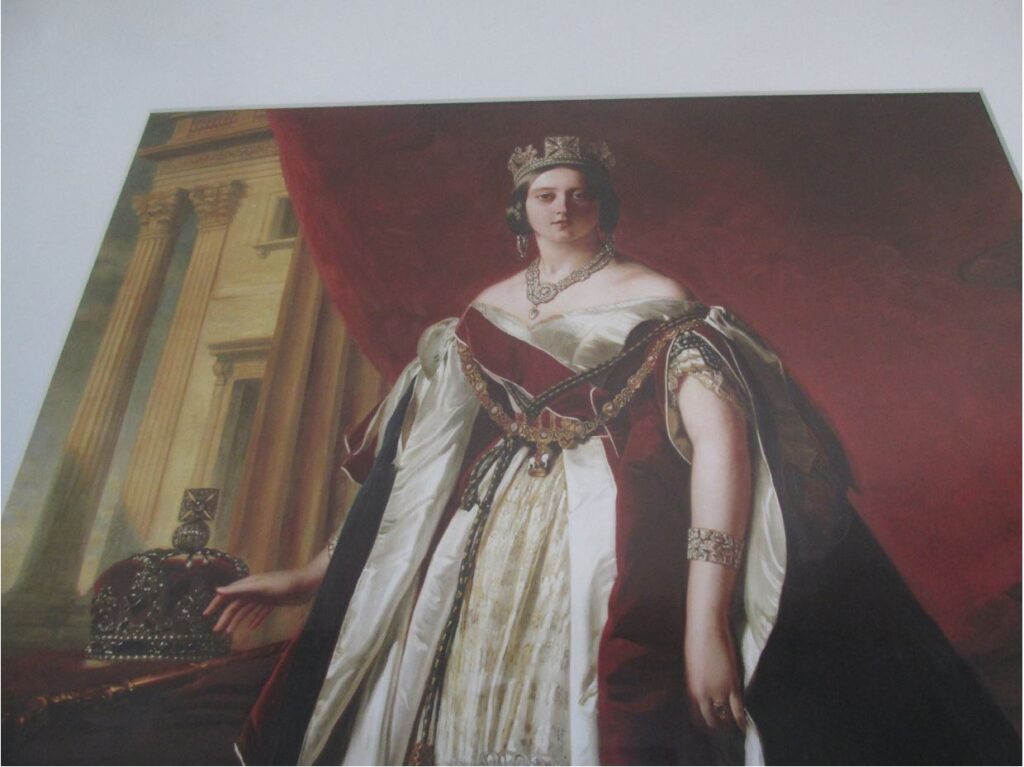
‘Her Majesty’ also performed a ‘unwitting misdeed’ to claim the islands of New Zealand as a royal possession in perpetuity, while participating in the public ruse that ‘the aborigines of New Zealand’ had wittingly and freely signed away sovereignty forever.
“Ostriches … are not merely careless birds.”
To this eventual end, the Treaty Cliqué at the scene of the 1840 Waitangi parchment crime included: Royal Navy Captain William Hobson, who convened a conclave of Protestant Missionaries aboard the ship, Herald; the primary drafter of the English text, British Resident James Busby after Captain Hobson’s Chief Clerk, James Freeman, wrote an initial draft; and the primary translator of the text into Māori, Church of England Reverend Henry Williams, with the assistance of his son Edward, and Reverend Richard Taylor, who hand-wrote the final Māori language copy on February 5th.
This Cliqué also included: Surveyor-General Felton Mathew; the CMS Missionaries, William Colenso, Charles Baker and George Clarke, and French Catholic Bishop, Jean Baptiste Pompallier. Remotely, the Treaty Cliqué included: Secretary of State for War and the Colonies, Lord Normanby and his successor, Lord John Russell; Governor of New South Wales George Gipps; the Secretary of State for Foreign Affairs, Lord Bro. Palmerston, the world’s High Priest of British Freemasonry; and Queen Victoria of the House of Saxe-Coburg and Gotha.
Clanker Moments at Waitangi
The four ‘clanker moments’ that occurred during the 1840 Treaty hui at Waitangi required subterfuge by way of improvised theatre to avoid the entire fiction of the travelling production becoming derailed and careening into a ravine of revelations. The risk of their ‘unveiling’ hinted at the Discovery Doctrine elements.
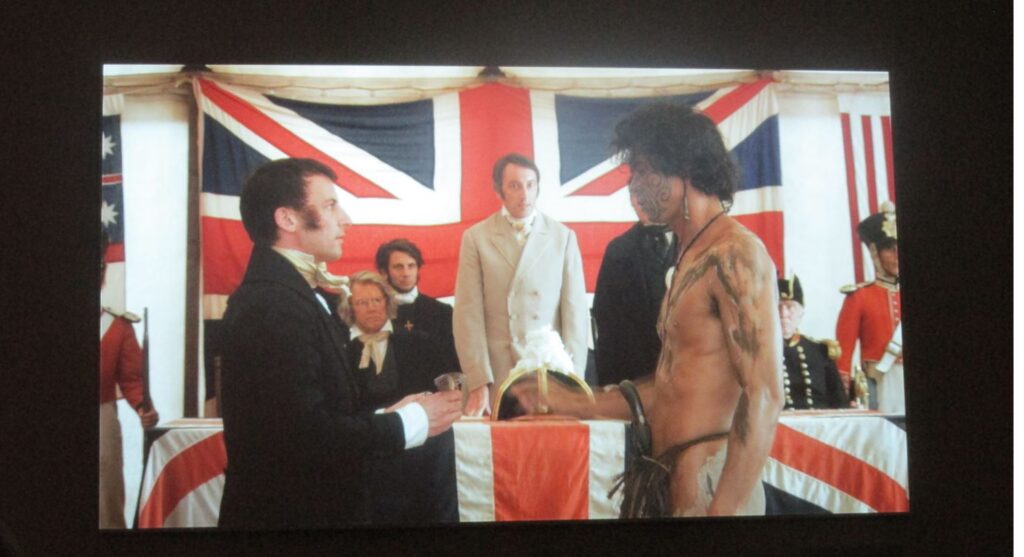
On February 5th, the first ‘clanker moment’ came when Chief Te Kemara of Ngāti Rāhiri hapū complained that the Anglican missionary Williams family had swindled him out of his land, and as well as Busby for swindling him of the land at Waitangi. Ngāti Rāhiri were, in effect, hosting the hui since the meeting was technically and ironically on their land, but exclusively claimed by Busby. Chief Te Kemara’s rebuke was part of an opening volley that included Rewa and Moka, whom focussed their anger on land loss, as part of a broader ill-conceived political strategy to bind Captain Hobson as governor to the Bay of Islands. This opening volley touched upon the matter of land loss.
The same day, the second clanker moment came Chief Te Ruki Kawiti of Ngati Hine, who told Hobson to leave as he expressed his apprehension that Māori would be cast as an oppressed people through slavery, jail or warfare. In this way, Kawiti’s clanker touched upon the matter of sovereignty.
A clanker moment of a third kind happened on February 6th when French Catholic Mission, Bishop Jean Baptiste Pompallier, interjected to ask Royal Navy Captain William Hobson – who was appointed British Consul to gain paper sovereignty – if there would be tolerance for diverse religious teachings under the treaty.
The fourth clanker occurred as Chief Hōne Heke Pōkai got up to sign on February 6th ay Waitangi. Church Missionary Society (CMS) printer William Colenso interrupted to ask Captain Hobson if the “Native chiefs” understood the treaty.
Each of these clankers could have derailed what was, in effect, a track-laying vehicle for the British Masonic Empire to forge a colony out of what had been construed in 1835 as an independent Māori state comprised of numerous hapū and iwi.
That track-laying vehicle was the Discovery Doctrine upon which the Waitangi Theater Company’s ‘Treaty Train’ travelled and was the British Masonic Empire’s biggest budget touring production since Freemason Bro. Captain James Cook’s first voyage of ‘discovery’ around New Zealand in 1769 and 1770. Ever since Freemason Captain Bro. James Cook had expressed the view that Nieuw Zeeland would make an ideal resource-rich base for the British Masonic Empire in the South Pacific Ocean, the New Zealand Masonic Revolution had been incubating.
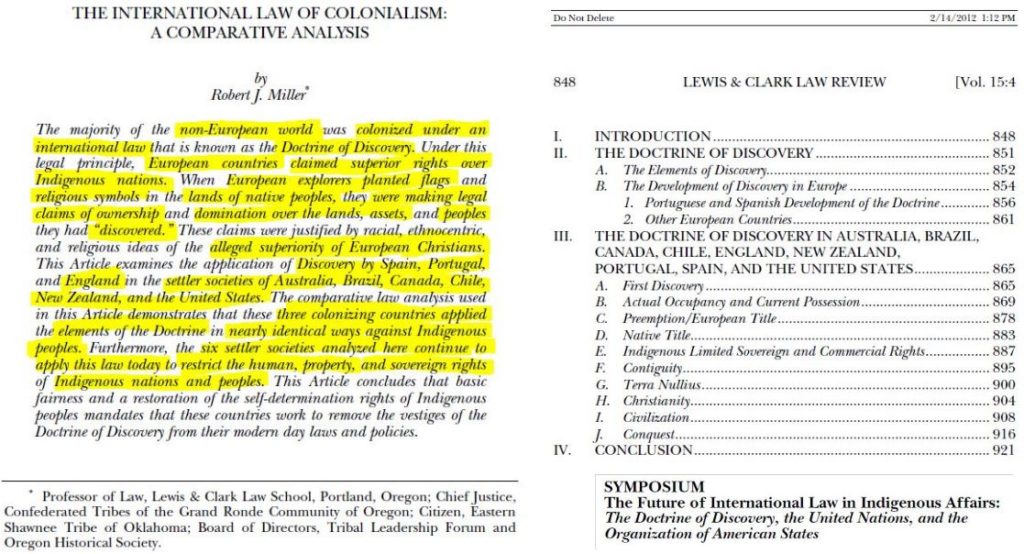
If there had been defections by participants within the Treaty Cliqué during these clanker moments, the elements of the Discovery Doctrine would been exposed and its use as a track-laying vehicle ruined, without the chiefs needing to know about the doctrine itself. If a full-blown mutiny at Waitangi had revealed essential facts of context, it is likely that a total walk out by the chiefs would have ensued, and word would have spread of the hissing steam from inside the Treaty Tent, which figuratively acted as a make-shift Treaty Train Station on Busby’s swindled lawn, which for two days in early February 1840, was the site where the Treaty Train Engine and its Imperial Carriages metaphorically ‘parked’. That steam would have hissed as much from the Treaty Parchment Contraption Engine, as from the representatives and witnesses of the four empires that intersected inside the Treaty Tent, as well as from the chiefs and chieftainesses.
Indeed, the likelihood of Captain William Hobson’s, James Busby’s and Reverend Henry Williams’ heads being skewered on sticks by sunset might have prompted Treaty Cliqué’s surveyor Matthew Fenton to switch allegiances, and offer his artistic skills to sketch and paint their demise for posterity to save his own skin.
The contextual facts of these clanker moments remained unspoken at Waitangi, and therefore, they remained at-large for historians to piece together later.
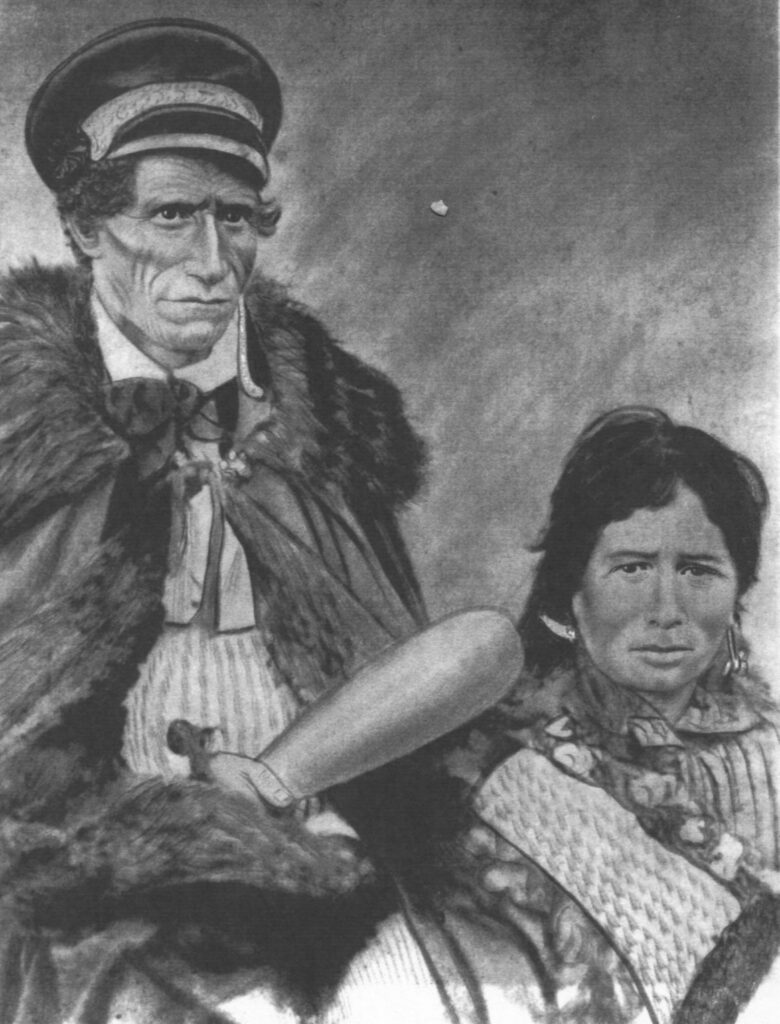
Chief Te Kēmara Tareka supplied the theatrics prior to Kawiti getting up to speak. Te Kēmara, who was Hone Heke’s uncle, aimed his rebuke primarily at Reverend Henry Williams for swindling him of land in 1834, as well as Busby for swindling him of the land at Waitangi, at a time when Māori had little understanding of private land tenure. Similarly, Ngāi Tawake rangatira Rewa shamed reverends Richard Davis and George Clarke, both CMS missionaries, while his younger brother, Moka, blamed CMS Reverend Charles Baker, Clendon and Mair for taking his land.
This opening volley, which appeared to be bona fide clankers, drew the Governor-aspirant, Captain Hobson, to reiterate Busby’s assurance to the chiefs that land commissions would be established, and any lands acquired unfairly would be returned to Māori. Busby’s posturing about a review into land acquisitions seemed to trigger this opening volley that began with Chief Te Kēmara’s performance. The land commission was actually in Lord Normanby’s instructions to Hobson. The real purpose of the opening volley was theater by rangatira in the orbit of Chief Hōne Heke, whom sought to elevate himself by drawing Captain Hobson and other Pākehā near, with a view to binding the new Governor’s administration and the expected international commerce to Heke’s gravitational pull. The volley of land disputes mentioned by Te Kēmara, Rewa and Moka were designed to be a threat, to coerce Captain Hobson to make an alliance with Chief Heke, and those in his orbit from the northern alliance.
Reverend Henry Williams made inaudible and incomplete translations of Chief Te Kēmara’s complaints and similarly those of Rewa and Moka, as well as of Hobson’s remarks. A white man called him out and suggested a Mr Johnson translate instead. But, when Hobson invited Mr Johnson to do so, he declined, although he agreed that much about the transactions and missionaries was not being translated.
The Church Missionary Society’s Reverend Henry Williams, who possessed 11,000 acres, defensively insinuated he was generous by paying a sum equal to the value of twice the acreage, which was still a pittance – especially since it would be lost forever (unless, say, in a future universe, the British Monarchy could be cornered to sell their own lands to pay for such swindles).
The Anglican missionary justified his large land holdings as a means to provide for his children, since the Church Missionary Society had done little to provide cash. Busby also came in for rebuke, and claimed he bought land that Māori pressed him to buy and that he did so to provide for his family once his time in office finished. Yet, Busby’s land holdings swelled to an extensive 143,000 acres at the time of the Treaty signing at Waitangi, due in so small part to the buying spree he embarked upon in early 1840 on arrival of word from Sydney of the impending Treaty.
Slyly, Rev. Henry Williams, as the most senior Church Missionary Society clergyman, was masking his role in implementing an element of the Discovery Doctrine, Actual occupancy and current possession. A European Title could only be produced from First Discovery if the European country occupied and possessed their newly found lands. Fort building and settlements had to occur within a reasonable period, to complete the annexed title. Reverend Williams also complained he and the other missionaries had done so much for ‘the natives’ to lay the groundwork of civilization that his land holdings were justified reward.
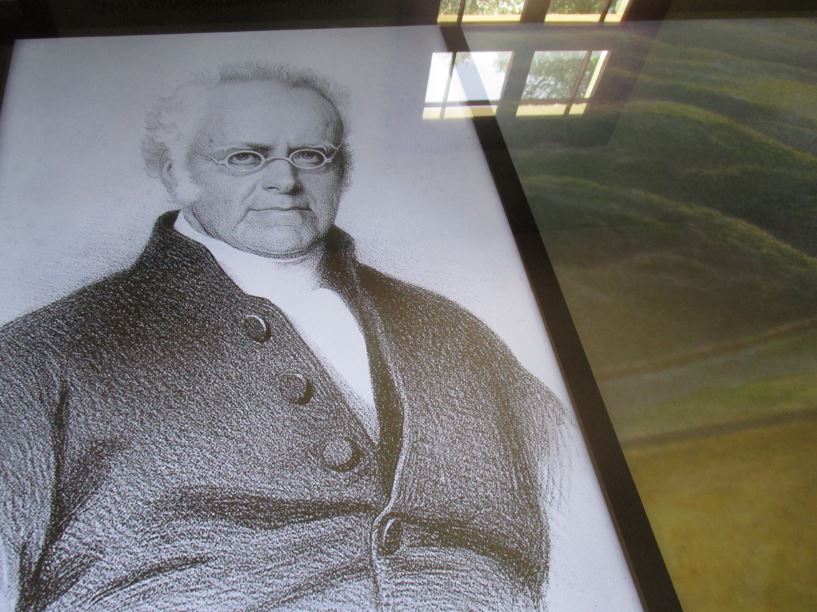
Here, Rev. Williams’s attitude, in effect, belied an activation of the Discovery Doctrine element of Christianity and its conception of Civilization. As Discovery Doctrine scholar Professor Robert Miller states, “[u]nder Discovery, non-Christian peoples were not deemed to have the same rights to land, sovereignty, and self-determination as Christians.” The Discovery Doctrine’s ‘Civilization’ element deemed that settlements were supposed to be surrounded by pastoral farming and crops. This Civilization element, along with the others, was highly subjective, and therefore meant the British Crown would not accommodate or treat Māori land use and tenure on a par with European legal systems. In this way, the first clanker moment hit the Substantive Sovereignty Cog, which could only spin at full torque when the Māori communal economy was destroyed by land confiscations in war, and peace, by swindle in purchases accompanied by ‘sweet-nothing’ promises, and by stealth in legislation, court cases and myriad legal mechanisms cooked up by Pākehā ‘kitchen cabinets’.
The Lords Committee on New Zealand hearings in 1838 asked whether the chiefs had the slightest idea of the probability of Britain taking the sovereignty of their island as a consequence land sales to British subjects. Although a visitor to New Zealand, John Flatt, did not convey clearly the deceptions of British settlers regarding land acquisitions from a people who lacked sufficient comprehension of private property transactions, the telling fact is the question itself was asked by the Lords Committee – as the book, Information Relative to New Zealand Complied for the Use of Colonists, by John Ward, Secretary to the New Zealand Company, shows. This question belies the capacity of a European empire-building nation to acquire a colony on the basis of its subjects meeting the requirement of settlement through land purchase deeds, however fraudulent, unfair and structurally coerced, in keeping with the Discovery Doctrine element of Actual occupancy and current possession.
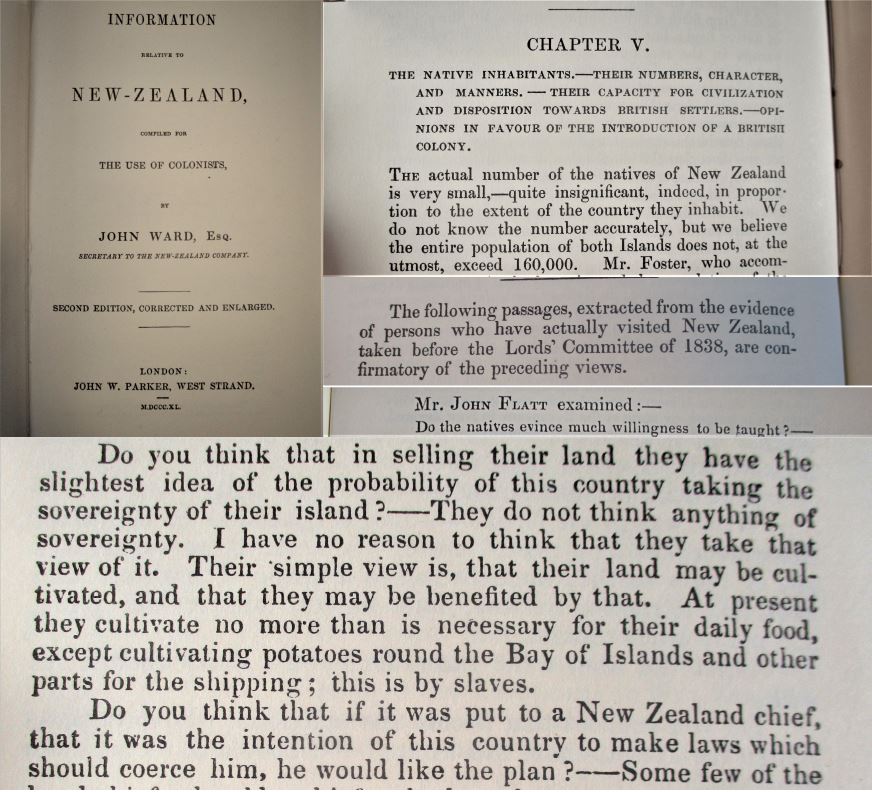
Tellingly, all the drafts of instructions to Captain Hobson mentioned that the chiefs did not comprehend the distinction between sovereign and property rights. According to Ian Ward in his 1968 book, The Shadow of the Land, this statement was deleted from the instructions issued to Hobson on the advice of English politician, Henry Du Pré Labouchère, because it was deemed not politic to make such a public admission. Its retention could have otherwise removed the shadow, or protective cover-story, that the Treaty Cliqué would operate under while touring the Waitangi Treaty Theater Production. The Treaty Cliqué were required to out-play Māori, and that game would require sustaining the myth of cession for long enough to dispossess Māori, and for their successors to de-tribalize ‘the Natives’, and perhaps eventually cause their cultural extinction, if not actual extinction. Therefore, the ‘Imperial Elephant’ in the ‘Treaty Tent’ needed an occult magic spell that sustained its ‘Cloak of Invisibility’. That occult magic spell was largely supplied by Protestant missionaries, whom held powerful sway over the Treaty Chiefs.
The central truth that the Treaty Cliqué were seeking signatures to the artifice of a compact by which to wrest sovereign power to make laws, decrees and wars to control the lands, waters and people — had to remain unspoken, in case it conjured a wrath much like merely saying “Lord Voldemort” out loud in the Harry Potter Universe. Except, the Treaty Cliqué’s magic was black and evil, for it was cast by ruling class white supremacists in the philosophy of oligarchism, which periodically manifests a most virulent pandemic contagion known as ‘world domination’.
So much, then, for Ward’s claim that it was “unlikely that the Colonial Office sought to deceive in any sinister sense” in its decision to send the Royal Navy, Captain Hobson, to New Zealand to treat with Māori. Therefore, a self-awareness is detectable among the Treaty Cliqué in London to censor truths about the scheme to swindle rangatira into appearing to surrender their sovereignty.
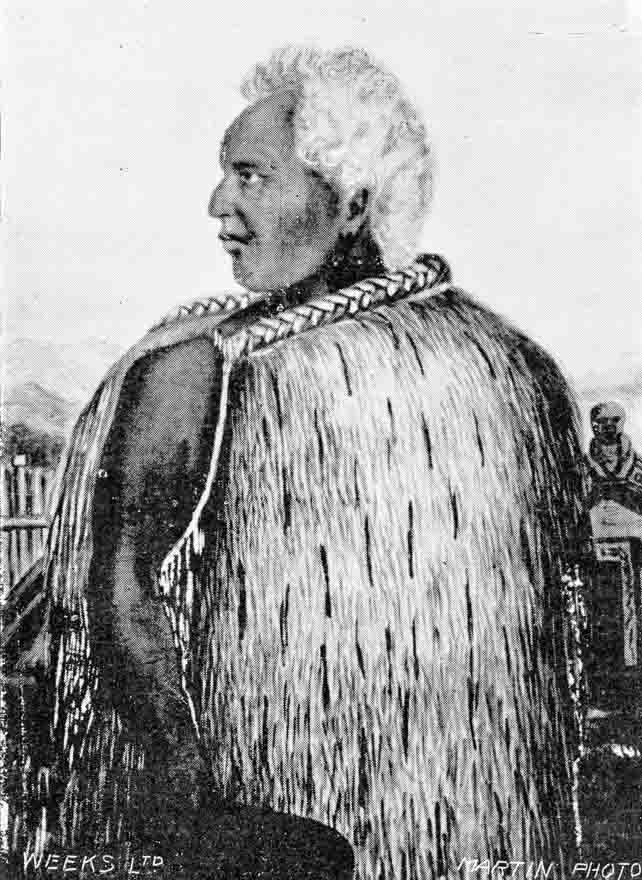
The second clanker moment came when Chief Te Ruki Kawiti of Ngati Hine observed that Māori were a free people and he told Hobson to leave, while he wanted the missionaries to remain. Notwithstanding that some Māori still kept slaves, he foresaw his people would be trodden down, tied up, and shot at from warships under cover of darkness, and would be told which way they could or couldn’t paddle, by the Governor’s soldiers. Chief Kawiti, who had signed the 1835 ‘Declaration of Independence’, did not return on February 6th and did not sign at Waitangi.
In effect, Kawiti had thrown a wrench at the gears of the Treaty Parchment Contraption Engine. But, because no Pākehā present would speak of the ‘Imperial Elephant’ in the ‘Treaty Tent’ — specifically, that the English text stated Māori were being asked to sign away full sovereignty over the islands of New Zealand — the wrench slung by Kawiti bounced off a ‘fender’.
Chief Kawiti lacked support from Pākehā or Māori to swing the discussion. Māori were merely being given the opportunity to debate the issue to each other in front of a foreign audience, address the Governor-to-be and his Treaty Cliqué, without realizing Governor Gipps of New South Wales was already Governor of New Zealand, which had been acquired as a dependent territory. Kawiti’s fears of Māori becoming an oppressed people came to pass, since the matter he touched upon was about paper sovereignty becoming substantive sovereignty as more chess pieces were placed on the far-flung colony’s chessboard.
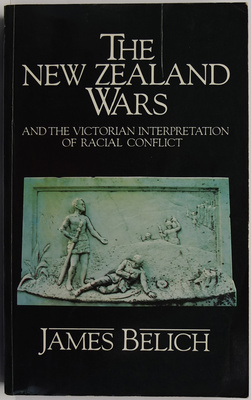
As many scribes have observed, historian James Belich stated in his book, The New Zealand Wars and the Victorian Interpretation of Racial Conflict that the ‘nominal sovereignty’ the British gained on paper in 1840 was consolidated with ‘substantive sovereignty’ in warfare. As Belich noted in 1986, relatively little attention had been given to the meaning of sovereignty in the English text of the Waitangi Treaty. Notwithstanding that Belich assumed the British Crown gained
‘nominal sovereignty’ by treaty cession — however unfairly — this paper sovereignty, he stated, is the theoretical dominion, or territory of the sovereign. ‘Substantive sovereignty’ is the decisive controlling power over a whole territory, which can be wrested by military conquest, or coerced by the legal system which supports the political system, which supports the economic system.
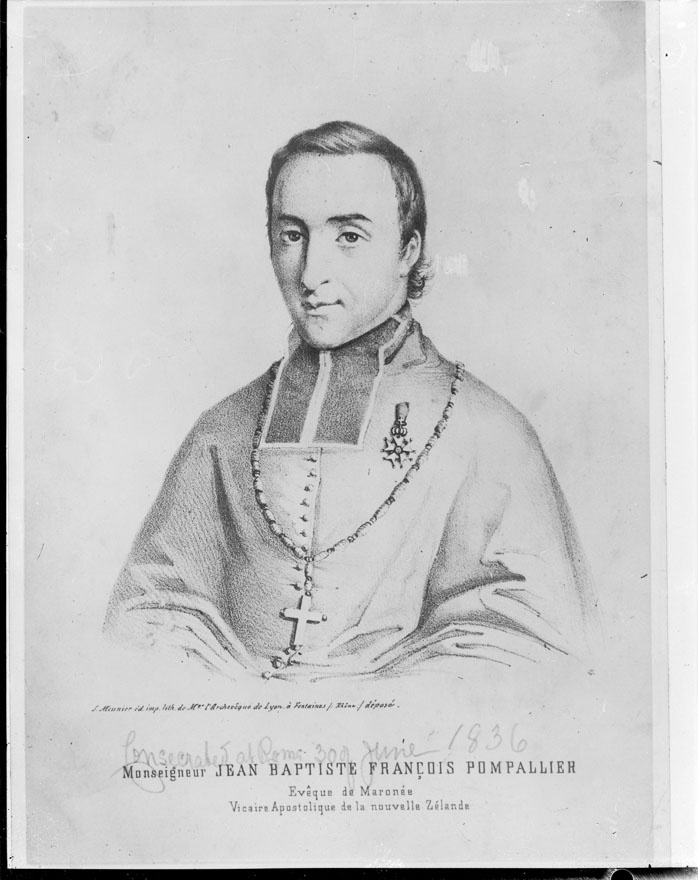
Because the envisaged economic system that fitted with imperialist Britain’s Masonic Mercantile Capitalism, which was an economic framework designed to maximize the exports and minimize the imports for an economy, it was predicated on the eventual demolition of Māori commerce, which was based in control of land. Britain’s Masonic Mercantile Capitalism had numerous hidden mechanisms of social control designed to exclude as many aboriginal and indigenous peoples as possible from having access to land. Thus, Kawiti was sensing there was more behind the compact than merely to confer Queen Victoria the power to appoint a governor.
The interjection of the French Catholic Missionary, Bishop Jean Baptiste Pompallier to ask if all religious creeds would have a place, provided a glimpse of the dark history between the British, French, American and Vatican Empires represented, directly or indirectly, at Waitangi in February 1840. With this third clanker moment, which came on February 6th, Bishop Pompallier could have derailed the criminal proceedings to annex New Zealand by stealth, had he been open with Māori about the rivalrous multi-century antagonisms between Sionist Rosicrucian Freemasonry and French Templar Freemasonry, which had been stoked the Vatican’s militant brotherhoods of Jesuits and Maltese Knights.
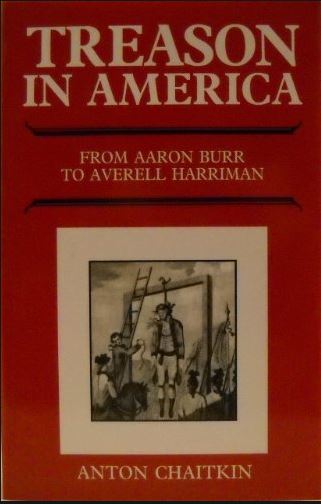
Māori in 1840 knew nothing of the rivalry between English Sionist Rosicrucian Freemasonry and French Jacobite Templar Freemasonry that had underpinned the epic warring between Britain and France. Yet, they were supposed to view the British as a force for the light, and the French as a force of darkness. As such, Māori in 1840 did not know that there were two British Empires, one Christian and comprised of missionaries exerting ‘soft power’ of Anglosized Catholicism in rivalry with the Romanized Catholicism of the Vatican Empire. Under the cloak of the British Christian Empire, was the hidden British Masonic Empire hell-bent on world domination that competed with Templar Freemasonry, whom had skillfully wrested control of America from the British Masonic Empire in the American Revolution and consolidated that win in the War of 1812.
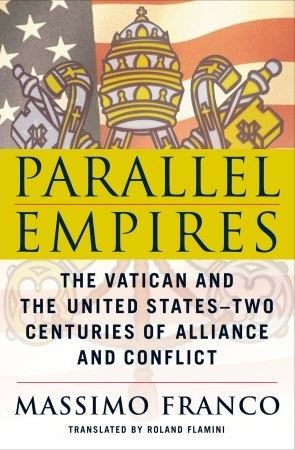
Because Bishop Pompallier had a scheme of his own, he did not explain to Māori that the British and French had been warring for centuries. Pompallier wanted to beat the British and claim the South Island with a treaty for Catholic France, which meant the North Island would have become a British Masonic jurisdiction, while the South Island would have become a territory of the Vatican Empire, in partnership with the French Templar Empire.
Furthermore, French Navy Captain Lavaud in the command of L’Aube, had been sent to New Zealand to claim the South Island as a colony of France, as Lillian Keys recounts in The Life and Times of Bishop Pompallier. When the French naval captain divulged to Captain Hobson on July 20th 1840 that the French settlers aboard the Nato-Bordelaise Company were already en-route to Akaroa, on Banks Peninsula in the South Island, and that he was about to depart to take charge of the colony, his English counterpart made arrangements for the Royal Navy warship, HMS Britomart, to sail with Police Resident Magistrate, Charles B. Robinson. Captain Hobson’s countermove to have a magistrate was an activation of the Actual Occupation and Current Possession element of Discovery, and was an improvised implementation of his Factory System to oversee a commercial settlement.
Captain Lavaud stated in his report, Akaroa, that Bishop Pompallier had said to him he could “press ahead and annex the South Island” and evidently added in reference to the Treaty proceedings at Waitangi, that “the English had done a great conjuring trick there”.[51]
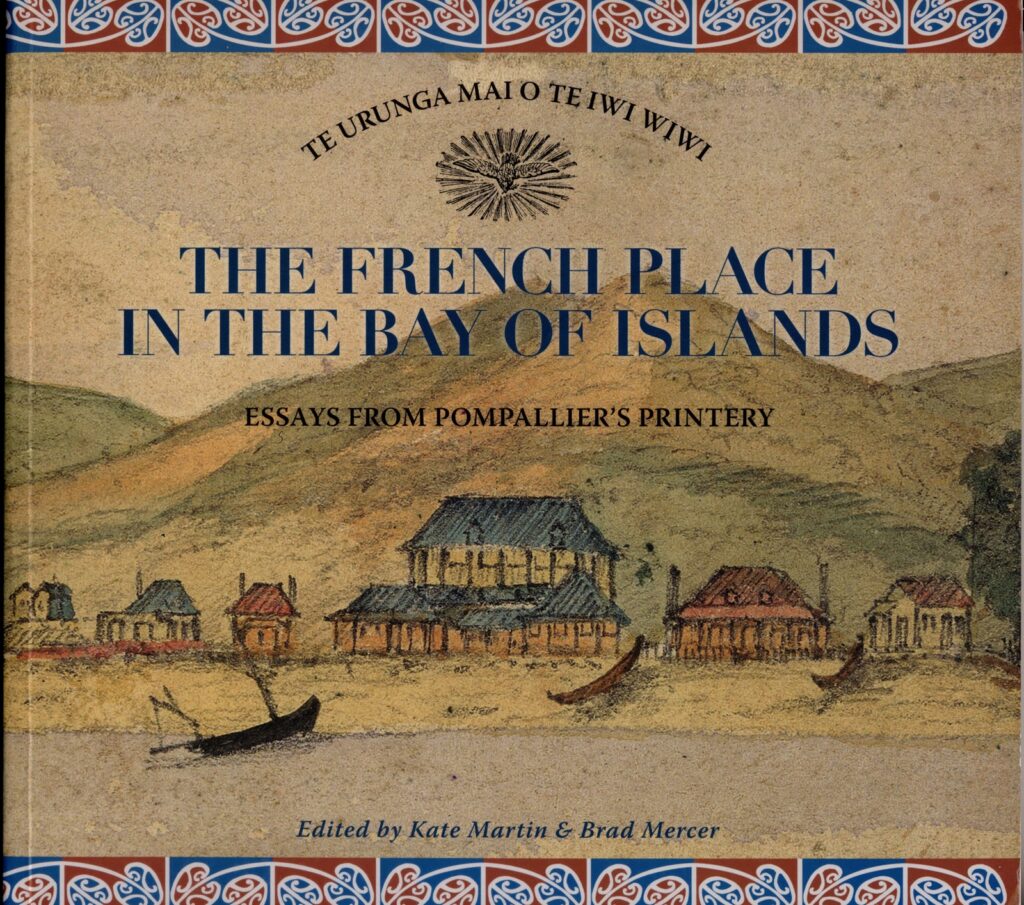
Pompallier claimed later that prior to the February 5th treaty hui, he had disclosed to the chiefs the bearing of the Treaty, and that he had not told them what to do. Captain Lavaud reported Bishop Pompallier claimed to have said he:
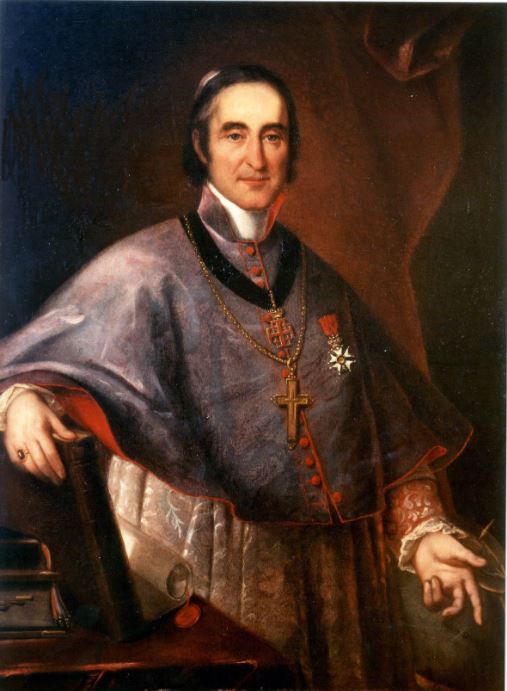
“enlightened the chiefs about what was involved for them and then left them to make their own decision, remaining politically neutral myself… Besides, I was quite sure that the request for signatures was only a pretext, the annexation was decided on …”
In other words, Pompallier had kept what he knew to be true from rangatira, since he hoped, schemed and probably prayed to beat the British to claim the South Island for the Vatican Empire with the French State’s help.
“Ostriches … are not merely careless birds.”
In response to Bishop Pompallier’s request on February 6th 1840, Captain Hobson suppressed the hissing from the Protestant clergy by assuring the Bishop that all creeds would be respected. Pompallier wanted something more than just spoken words. This was a telling development, given that the chiefs relied more on spoken persuasion than on what was written down, and because Māori were unaware of the ruse in play regarding language translation differences — which Pompallier and his bible-translating clergymen were conscious of.
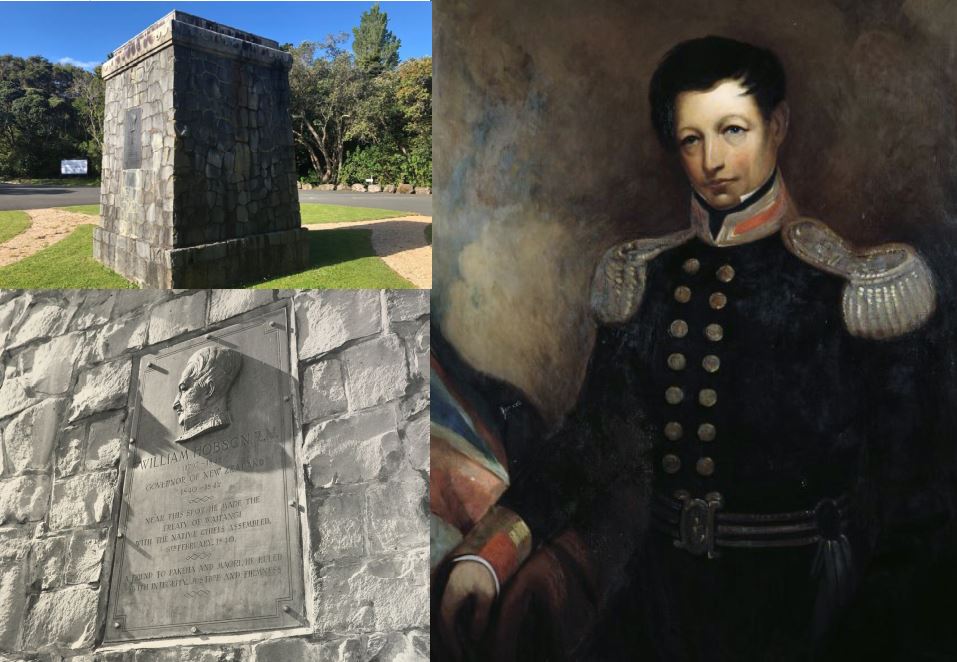
Captain Hobson was astute and could see that this fourth article of the Treaty was needed to gain chief support of those affiliated with Pompallier, since the French Catholic Bishop’s interjection occurred straight after the volley of complaints levelled at the land-swindling Christian missionaries. Pompallier’s clanker question was therefore a veiled threat, since the Vatican Empire’s representative could have slung a huge wrench in the gears. After all, Pompallier could have asked the question when he met privately with Captain Hobson in Busby’s house just prior the commencement of the Treaty Theater.
Ironically, the fourth article appeared on paper to be a counter to bigotry.
Yet, it would become clear by the Northern War of 1845-46 and the New Zealand Masonic Revolutionary War of 1860-72, that the British Crown and the Masonic-Protestant settlers were intolerant of Māori independence exerted through retention of lands, fleets of waka, coastal schooners and ocean-faring ships and capitalist free enterprise fused with communalism.
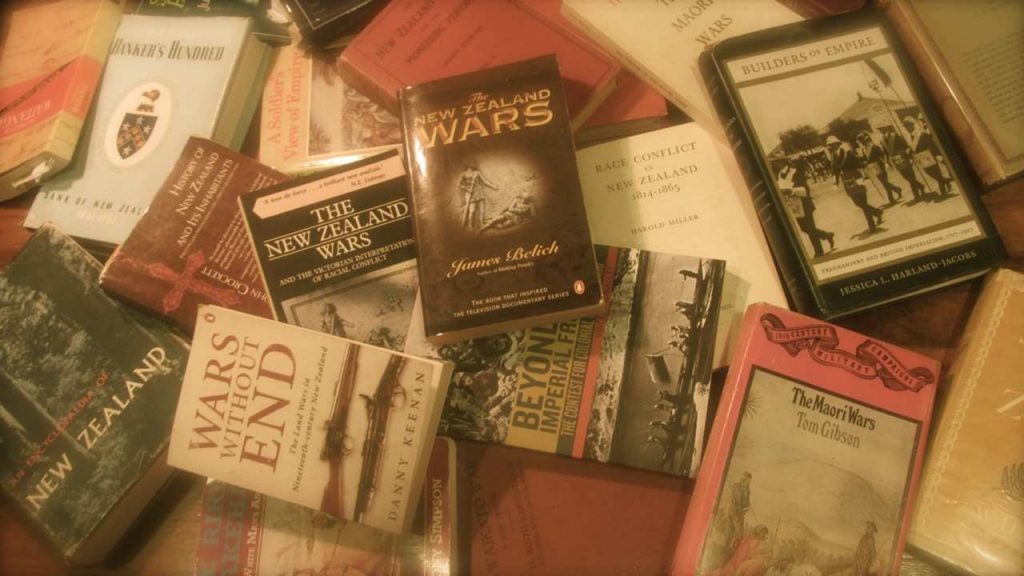
The occult or hidden meaning in the subtext of this third clanker moment was that the ‘fourth article’ represented the semblance of religious tolerance. Bishop Pompallier could well see the Treaty-making was crucial theater, but he could hardly blow the plot wide open.
After all, Bishop Pompallier schemed to gain control of the South Island, or Te Wāi Pounamu, to feed the Roman Catholic God’s insatiable appetite for franchise expansionism, which meant subverting the plans of Head of the Church of England, Queen Victoria, to acquire paper sovereignty over the whole of New Zealand. In other words, if Bishop Pompallier had clearly explained to the Chiefs, with the use of a world map, that the European Powers practiced the same law, that they had aggressively innovated, to disregard the political rights of aboriginal and indigenous peoples’ and that this law was developed from the Vatican Empire’s innovation of the Roman Empire’s legal invention to justify land accumulation of uninhabited lands – the Treaty Theater Production would have been sunk.
Therefore, the ‘fourth article’ of the Waitangi Treaty was a coerced agreement, in which bigotry against aboriginal and indigenous peoples would not only be tolerated. It would be practiced with a refined taste for volte-faced politeness, where the religious theater masked over the underlying truths of ‘the who’ and ‘the how’ of ‘the why’ their respective empires’ exported problems to far-flung territories, and embroiled aboriginal and indigenous peoplesof New Zealand in their egotistical imperial chess games.
The rivalry between the British Masonic Empire, with its British Christian cover story and the Vatican Jesuit-Maltese Empire, with its alliance in the Templar French State, and their presence in the American Templar United States, would pan out to become a territorial carve up of mission stations in the British Isles-sized South Pacific archipelago.
Unbeknown to Māori, the islands of New Zealand had been cast as an ideal experimental test-lab in state-craft due to its far-flung remoteness, persuadable aboriginal and indigenous population, and abundant resources. If the perfect power crime worked, a territory the size of the Great Britain could be acquired cheaply, the inevitable wars to quell rebellion would be only moderately difficult, and the colony could make for an enduringly ideal test lab that would save the British Masonic Empire from making drastic mistakes elsewhere.
A fourth clanker moment at Waitangi could also have derailed the epic rort in play, when Church Missionary Society (CMS) printer William Colenso cautioned the missionaries that they had a duty to explain the treaty “in all its bearings to the Natives” so that the Treaty is “their own very act and deed” (rather than a dark work of criminal fiction).
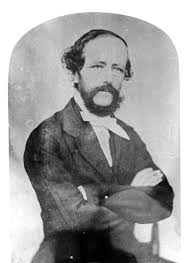
Captain Hobson said petulantly that it was “no fault of mine” if the Native chiefs did not know the contents of the Treaty. Busby interjected to recall Hone Heke’s remark the day prior, when he said the Native mind could not comprehend the matters and had to trust the advise of the missionaries. Colenso even foresaw the consequences when he said that Māori would have every right to confront the missionaries in the future for failing to make clear what the Treaty contained. But, then he claimed he had discharged his duty by conscientiously raising the matter. In this way, Colenso submitted to the deception like a Cowardly Lion actor who lacked courage. The Church Missionary Society printer seemed to lack full comprehension of the irony that his meek little interjection added, to a theater production that lacked a ‘Dorothy’ character.
Colenso’s clanker revealed more improvised screening actions performed by principle actors who would later be the agents of unwitting misdeeds. Conspicuously, Captain Hobson, callously made no effort to explain to Māori assembled that the English version stated Māori would cede forever sovereignty over New Zealand to the British Monarch. Moreover, Rev. Henry Williams ‘failed’ — even after Colenso’s caution — to point out the deliberate differences between the two language versions of the Treaty to the chiefs assembled, since Colenso was fluent in both languages, written and oral.
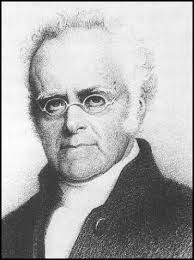
As Anne Salmond noted in Tears of Rangi, Henry Williams emerged as a “pivotal figure” in the Waitangi Tribunal hearings into the 1835 Declaration and the 1840 Treaty events. The battle-hardened naval lieutenant-turned missionary had fought in the Napoleonic Wars, that included the so-called ‘War of 1812’, which was a British attempt to retake the United States.[52] These wars were actually part of British Freemasonry’s war against French Templar Freemasonry – as these conflicts become clear from reading English historian Nicholas Hagger’s epic study, The Secret History of the West, and Anthony Chaitkin’s, Treason in America, since the United States was established as a Templar Masonic State.

This means that in his former career incarnation as a naval lieutenant, Reverend Williams had, in effect, taken part in the Second Hundred Years’ War (1650-1815), in-which France under Napoleon conquered the core area in 1810 establishing mercantilism, that was later circumvented with industrial capitalism, as it became clear from reading Professor Quigley’s 1961 book, The Evolution of Civilization — An Introduction to Historical Analysis. The subtext that underpinned the rivalry between the British Empire and French Empire were their competing utopian visions. The British Masonic Empire — which embodied Sionist Rosicrucian Freemasonry, was a revolutionary force committed to forging a universal empire under the rule of one monarch. French Templar Freemasonry, on the other hand, developed into a revolutionary republican force committed to forge a universal empire under the rule of one federal republic.
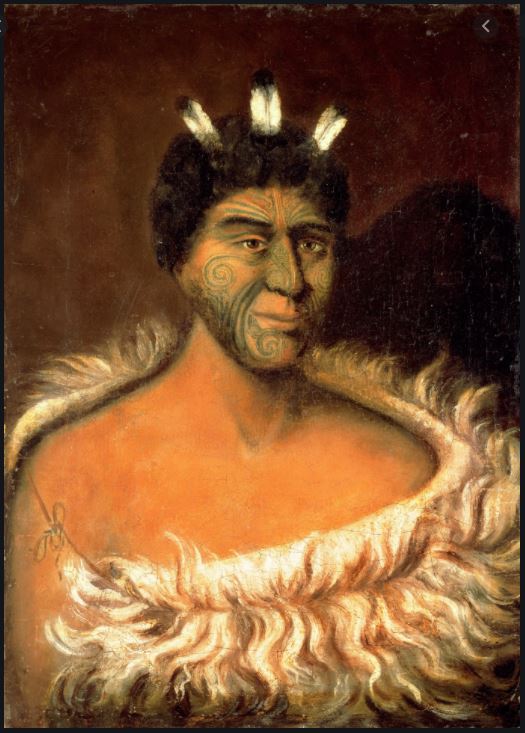
In his speech, Chief Hōne Heke Pōkai said if Hobson were to leave, the French and the rum sellers would ruin Māori and his people would become extinct. Heke, whose second wife was the daughter of Hongi Hika, evidently reiterated the view of others for Captain Hobson to stay as governor, likely on the basis of the benefits in commercial trade that his presence would bring. His rhetoric that “we Natives are children” appears to have been ironic sarcasm aimed at the missionaries patronizing explanations, the emphasis on Britain’s protection from other powers, including the French bogeyman scapegoat, and also a mocking of the British paternalism regarding the evils that they had been exposed to.
Hone Heke can be likened to the Scarecrow in The Wizard of Oz, who needs a brain, since he really should have listened to his uncle. After all, Chief Te Ruki Kawiti was rightly concerned about far-reaching matters, like losing control of their mana and tinorangatiratanga and becoming an oppressed people.
Following Hone Heke, influential speeches by Tamati Waka Nene of Ngati Hao at Hokianga, and his older brother, Patuone — that were also favourable to Hobson becoming governor. They were the children of Chief Tapua, a renowned tohunga in the Bay of Islands, and chieftainess Kawehau of Ngati Hao.
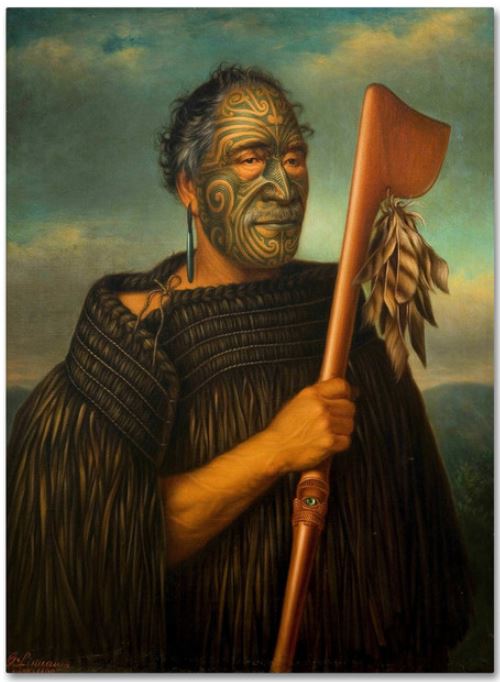
Chief Nene, who was baptized by Reverend Henry Williams in 1839, said to Hobson to sit and remain as a father, a judge and peacemaker after he spoke to Māori saying they could have rightly told the Governor to leave if they had turned away the traders and grog sellers when they came in the years prior. Patuone, who had been baptized by Henry Williams ten days prior, told Hobson to sit and stay, and the missionaries to remain, and referred to Bishop Pompallier as Pikopo, who he said was a “bad man”. Thus, Tamati Waka Nene and and his brother, Patuone, were under the magical spell of Anglosized Catholicism, or Protestantism, and knew nothing of the British Masonic Empire’s epic fights with the Vatican-Jesuit-Maltese Knights Empire to forge a universal utopia supported by down-trodden peoples, who would do the dishes.
Dame Anne Salmond recalls Claudia Orange’s view that if chiefs Pōmare II and Waikato were present to support Chief Kawiti’s bona fide kōrero, or rhetoric, that favoured Māori independence, the debate might not have swung in favour of Captain Hobson becoming the governor. Ironically, on May 20th 1840, Chief Kawiti signed Te Titiri o Waitangi at Henry Williams mission station, after he came under pressure from his nephews, Te Tirarau and Pōmare II, who were concerned they’d miss out on trade opportunities. Chief Kawiti’s name, along with Pōmare and Te Tirarau, appears above the name of Chief Hōne Heke Pōkai on the Waitangi treaty sheet.
Tellingly, Chief Hōne Heke Pōkai joined forces with Chief Te Ruki Kawiti in the Northern War of 1845-1846 (also known as the Flagstaff War). Originally, the spar for the flagstaff on Maiki Hill above Kororāreka (Russell) had been gifted to Busby by Heke to fly the United Tribes’ Te Kaha flag. But, with the British flying the Union Jack on Māori land amid the economic decline that had followed the Governor Hobson establishing Auckland as the capital, Chief Heke reasoned that a flag symbolized authority to the British. Therefore, which flag flapped mattered and the gift had been provocatively re-purposed. Before dawn on March 11 1845, Chief Kawiti supplied a diversion with 200 warriors attacking Captain Robertson’s position in the town, while Heke cut the flag pole.
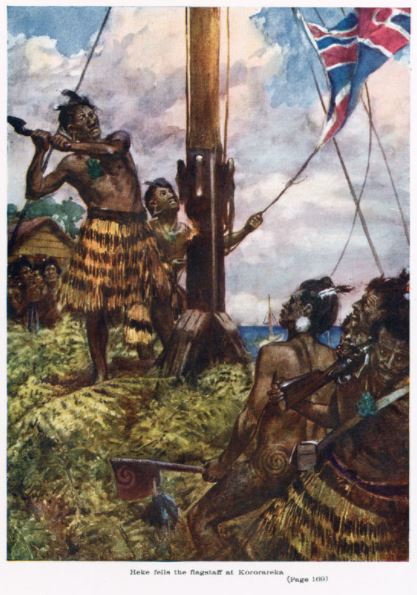
Catholic monk Dom Felice Vaggioli, in his 1896 book, History of New Zealand and its Inhabitants, attributes the subsequent destruction of Kororāreka to Heke’s forces, whom he said were nearly all Protestant. Vaggioli claimed the only part that was spared was the French Catholic section where Bishop Pompallier was based. In contrast to Vaggioli’s account, Tony Simpson in his 1979 book, Te Riki Pakeha/The White Man’s Anger, attributes the conflagration to fires started by gunshot and abandoned stoves, since the buildings were constructed of wood and raupo. The former Radio New Zealand producer says the Protestant churches were still standing since they did not have cooking fires, and therefore the town was not ‘sacked’ by Māori. Simpson claimed Lieutenant Philpotts took command of HMS Hazard after Captain Robertson was wounded, and ordered a bombardment of the town.
In any case, the Northern War of 1845-1846 began with the forces of Chief Hōne Heke Pōkai and Chief Te Ruki Kawiti pitted against the British Army and Royal Navy and local militia.
Therefore, the identification and location of the clanker moments at Waitangi in the deeper historical context of what was left unsaid, are pivotal to comprehending the machinations that underpinned the construction of the Treaty Theatre Track. The Treaty Theatre could only work if all hands, tongues and ‘sincere’ face-masks acted in unison with unseemly speed through the phases of scripting, ritualistic theatrical persuasion performances and the poste haste Waitangi Signing Tour Rituals — lest the imperial intrigue became obvious.
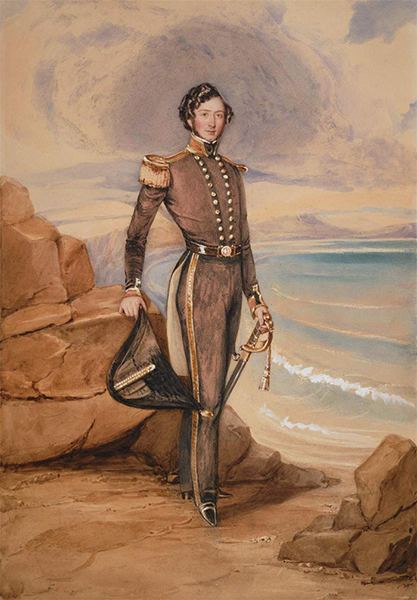
Betwixt the spiraling momentum of deception in the unfolding events — that were embedded with weaponized speed — the Treaty Cliqué’s scheme almost went awry when these four clankers moments emerged during the discussions at Waitangi in 1840. The narrative elements in the Crown’s bed-time fairy tale creation myth of how and why the New Zealand State became a British Colony in 1840 becomes sharper by adding a ‘Masonic lens’ to view these clanker moments. A ‘Masonic lens’ clarifies the events, principle players, and the British Deep State’s machinations to forge a British Rosicrucian Masonic jurisdiction, in part to forestall their perennial rival, French Templar Freemasonry, whom as a secret Brotherhood succeeded in winning the American Revolutionary War (1775-1783) to establish the United States as a Masonic Templar State.
Ironically, chiefs Heke and Te Kemara thought they had played Captain Hobson. The theater in the opening volley started by Chief Te Kemara can be seen when, after five hours of discussion, he once again rose to challenge Captain Hobson. Chief Te Kemara reiterated that his land was all gone, feigning with his hands clasped liked they were handcuffed in the manner of a slave, and then he grabbed the naval captain’s hand, shook it and said repeatedly, “How do you do, Governor?” With this performance, the tent erupted in laughter and the hui was called to a close – as the dramatization, Waitangi: What Really Happened, depicted.
Heke and Te Kemara thought they had successfully gamed Captain Hobson to set up his administration at nearby Kororareka/Russell, but Hobson subsequently made Auckland/Tamaki Makaurau the capital on September 18th 1840, and commerce in the far north slumped. Because Heke and Te Kemara, along with all other Māori, knew nothing of the crucial language translation difference that masked the transference of sovereignty in the English language version, the Treaty Cliqué had successfully played them.
With this sharpened view, works such as former comedian Mike King’s meritorious Waitangi Treaty documentary series — Lost in Translation — could be reworked to explore the parallel tracks, the Discovery Doctrine and the clanker moments to win sovereignty, with a new title, Swindled by Theater.
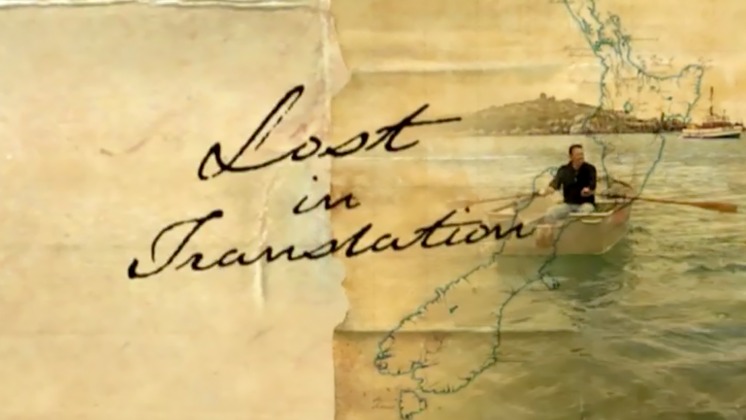
Because none of the Treaty Cliqué present dared to spell out to Māori gathered the deception in play — the central truth, was, in effect, cast as the imperial Elephant in the Treaty Theater Tent. If the imperial Elephant in the Treaty Theater Tent could have spoken, it might have said:
“By the Great Seal of the United Kingdom, the perfect power crime to swindle full sovereignty from an entire people by pen-quill, parchment paper and treaty theater has been authorized by Queen Victoria before the fact, and will be ratified by Her Royal Hand after the fact, creating an unchallengeable claim as supreme ruler over New Zealand.”
For his part, Henry Williams was well aware of the translations ruse. For one thing, he realized that chiefs would never agree to the use of mana in a mana-surrendering context, as I stated earlier. Reverend Williams choose instead to use kawanatanga to convey the idea that the British were asking Māori to agree to a governor to rule over Pākekā. As Moana Jackson stated in an essay, “The Treaty and the Word: The Colonization of Māori Philosophy” in 1992:
“The story of this redefinition, and indeed the whole Pākehā analysis of the Treaty, is one of legal and political gymnastics performed behind a veil of apparently reasoned justification. As such it is a story that has more to do with a continuing but covert colonization than it does with acknowledging the truth; with creating ever-changing myths about the reality of power, rather than establishing honest relations between Māori and Pākehā.”
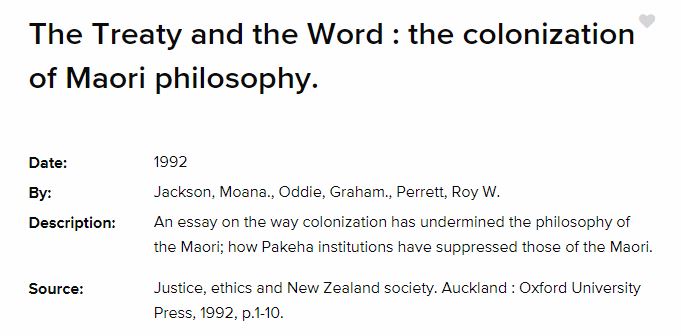
Since both versions were read out at Waitangi and therefore those who were fluent in English and Māori could tell the fraud, then it becomes clear that James Busby, James Clendon, Protestant CMS missionaries Henry Williams, Richard Taylor and William Colenso, and Catholic Bishop Jean Baptiste Pompallier among others, were in on the ruse directed by Captain William Hobson on behalf of Queen Victoria.
“Ostriches … are not merely careless birds.”
Hobson’s Treaty Theatre extended to shaking the hands of each signing chief, saying “He iwi tahi tatou” or “We are now one people”. This ‘One People’ Snake Oil salesmanship was assisted by Colenso’s attentive distribution of the presents consisting of two blankets and a quantity of tobacco to each rangatira. The flags at Waitangi — on land stolen by James Busby — were part of the Discovery Ritual pomp.
Ironically, Captain Hobson would suffer a stroke on March 1st 1840, and it was his Colonial Secretary, the Police Magistrate, Willoughby Shortland, who carried on the Treaty Tour before more ships were dispersed. Perhaps Captain Hobson failed to comprehend that maybe his poor health was due to the fact that he was in need of a good heart. Therefore, Hobson could be likened to the Tin Woodman in the Wizard of Oz.
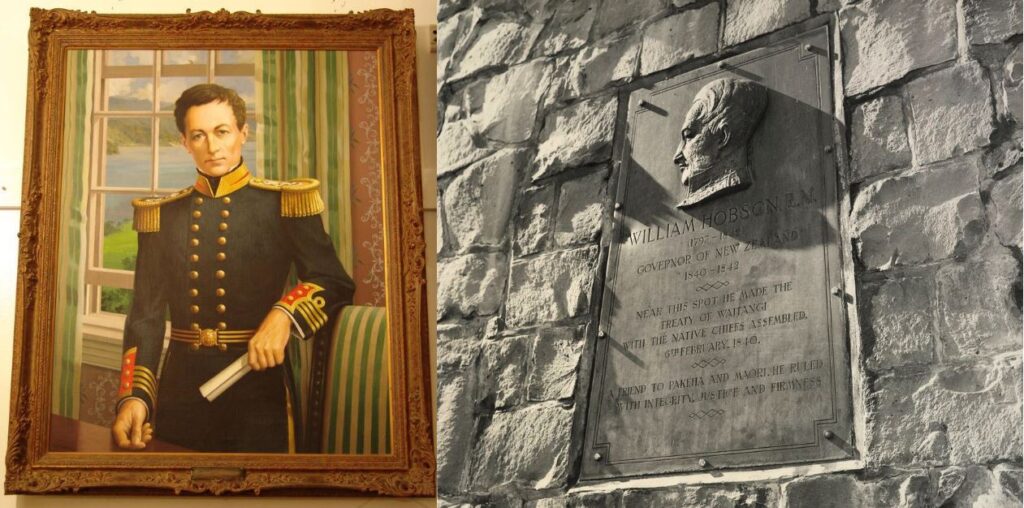
Shamelessly, Busby — who had been deposed from his role as the Antipodean Wizard of Waitangi — had his own slinking agenda for cooperating with Captain Hobson’s direction of the Treaty Theater.
On February 19 1840, or 13 days after the Treaty was signed at Waitangi, James Busby advanced what he claimed was a ‘deed of cession’ for the land he confiscated off Chief Rete at Puketona. In a letter to Captain Hobson, Busby claimed the confiscated land “was offered by the chiefs to me as a compensation, and only confiscated in His Late Majesty’s name to give more solemnity to the transaction”. In early February, Busby and other settlers had been foiled when Captain Hobson had erased his insertion of a clause into his English language Treaty draft, which would have provided for British settlers to have representative rights.
On 19 March 1840, Hobson sent Busby’s documents to Sydney, where Governor Gipps ruled that Busby had no valid claim to the land at Puketona, and in 1843 instructions were issued to the Surveyor General to survey the land for Crown retention. In effect, the original punishment for the incident that took place approximately six years prior to the 1840 Waitangi Treaty signings was re-asserted — as Vincent O’Malley noted in, Beyond the Imperial Frontier.[53]
However, O’Malley appeared to be unaware that Rete was exercising a muru, and he therefore missed the significance of this particular machination by Busby, as an agent provocateur. Busby was exacting the Discovery Doctrine element of Settlement in an attempt to solidify his land claims, which in total swelled to 143,000 acres at the time of the Treaty signing at Waitangi.[54]
In his 2010 paper, “The Pre-History of the English Laws Act 1858: McLiver v Macky (1856)”, historian David V Williams, observed that when Busby brought his land disputes with Captain Hobson to Sydney, Governor Gipps changed the preamble to a bill on the application of New South Wales law in New Zealand. Gipps modified the language, from claiming that Queen Victoria had acquired the Sovereignty over parts of New Zealand, to annexing New Zealand to the jurisdiction of New South Wales.
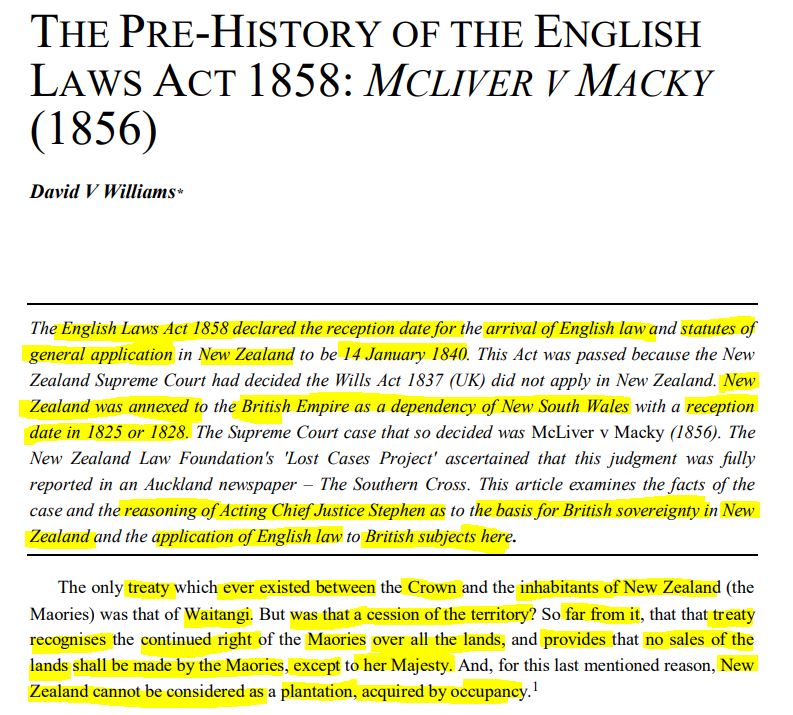
The first drafted to the preamble to the New Zealand Land Claims Bill before the New South Wales Legislative Council in late May 1840, read:
“Whereas Her Majesty hath lately acquired the Sovereignty of a great portion of the Islands of New Zealand, and it hath pleased Her Majesty to place the same, under the Government of New South Wales …”.
As David Williams noted, the New South Wales Governor’s revised wording changed both the tense and the sense of the preamble:
“Whereas Her Majesty hath been pleased to annex Her Majesty’s Dominions in the Islands of New Zealand to the Government of New South Wales … ”.
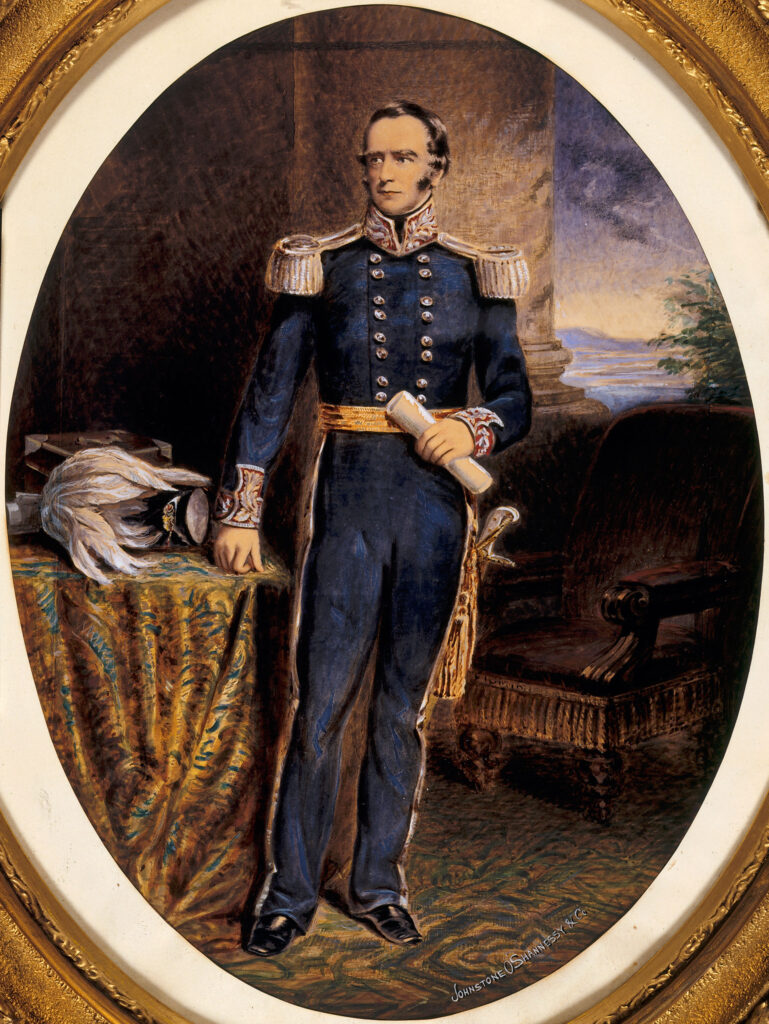
It would seem Governor Gipps realised that if he appeared to attribute Queen Victoria’s sovereignty authority over parts of New Zealand to the collection of Māori signatures, such a move would cause legal problems. David Williams noted that Gipps had read a memorandum from a New South Wales judge, John Walpole Willis, which referred to American case law on the rights acquired by the British Crown by discovery. This finding suggested that New Zealand was already a British possession by right of Cook’s discovery. The problem appears to have been to do with choosing the origin of asserting sovereignty.
If Gipps used the 1840 Waitangi Treaty as the basis, he would soon run into trouble to argue for the British Crowns pre-emption rights as a legal mechanism for extinguishing native title through Crown purchases. The objective of the pre-emption rights was to provide a mechanism to transform nominal paper sovereignty into substantive sovereignty. If Gipps enacted the Treaty as the basis for acquiring sovereignty over Māori, he would essentially be ratifying the Treaty in Statute Law, which would open up the legislature of New South Wales, New Zealand and the United Kingdom to scrutiny of the Waitangi Treaty, and direct challenges in case law, which would likely cause great displeasure to Her Majesty.
Indeed, David Williams made the telling observation that a judge in 1856 found that the Treaty of Waitangi confirmed Māori land rights rather than ceded sovereignty, but that the Acting Chief Justice Sidney Stephen, was unsure what precisely was the origin of New Zealand as a British colony. David Williams wrote:
“Moreover, no decision-maker or judge in imperial or colonial administrations in 1839, 1840, 1841, 1844, 1856 or 1858 is on record as suggesting that the reception of English law as the law of the Colony of New Zealand had anything at all to do with the Treaty of Waitangi.”
The result of that case, McLiver v Macky (1856), caused something of a constitutional crisis, that eventuated in the English Laws Act 1858 that fixed 14 January 1840 as the reception date when New Zealand joined the British Empire. That is the date of Governor Gipps Proclamations notifying the extension of the boundaries of New South Wales to include New Zealand, Captain Hobson’s Commission as Lieutenant-Governor and a notice that land Sales after January 5 1840 would not be valid and land sales before that date would be subject to official scrutiny.
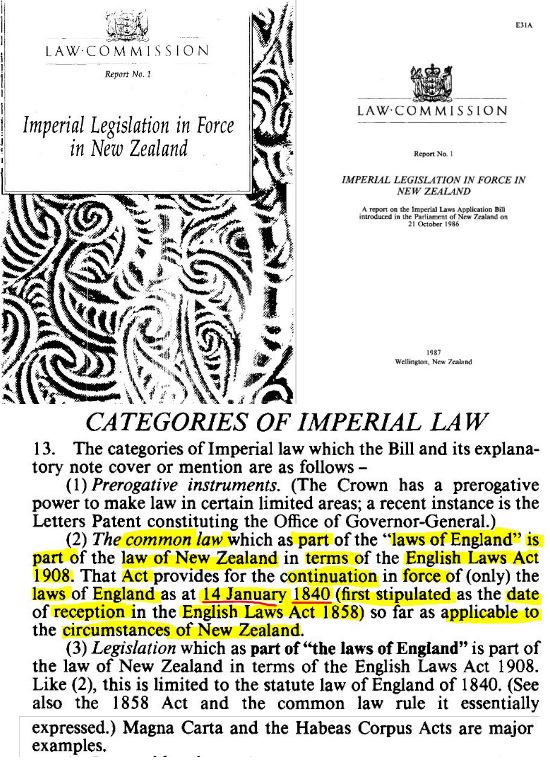
Thus, at that time, New Zealand was deemed to be a dependent colony of New South Wales. As David Williams also notes, the 15th of June 1839 could also be a contender as a reception date, since that was the day when Letters Patent were issued to enlarge the jurisdiction of New South Wales to include the New Zealand islands. He stated that the precise reason why January 14th 1840 was chosen in 1858, was for future researchers to work out, because the notes, drafts and debates for the English Laws Act 1858 were destroyed.
One major reason, I contend, why 14 January 1840 was chosen was because this application of the Discovery Doctrine required a constituted governor in the territory to announce by proclamation the extension of the boundary. The subsequent ratification of the decisions in London that led to the Letters Patent of Boundary Extension dated 15 June 1839, would be require legislation in New South Wales and London, which in turn would be ratified by the Queen’s Royal Charter of November 16 1840 .
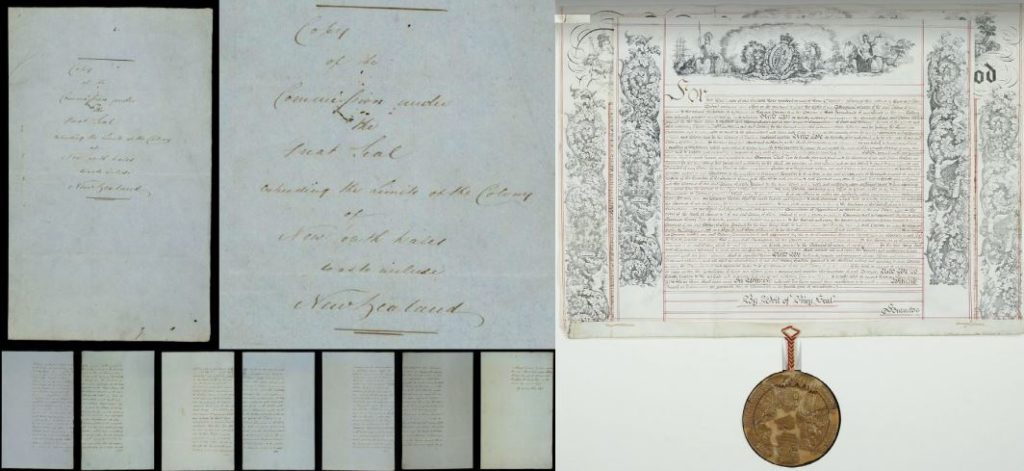
It would appear that Acting Chief Justice Sidney Stephen had created an epic clanker, when he arrived at the view that the:
“treaty recognises the continued right of the Maories over all the lands, and provides that no sales of the lands shall be made by the Maories, except to her Majesty.”
Sidney Stephen added, for this reason, “New Zealand cannot be considered as a plantation, acquired by occupancy.”
By creating this case law judgment, Sidney Stephen created an epic clanker because it potentially opened up the New Zealand Colonial State Legislature to counter-claims from Māori either for co-governance.
Or, a repudiation of the Crown’s presence based on an epic fraud since it could also be argued that Sidney Stephen had the wrong origin of New Zealand being enjoined to the British Empire — because he perhaps did not realize the Treaty was theater. If Sidney Stephen had fixed upon Letters Patent of Boundary Extension dated 15 June 1839, he might have realized that its mirror object — the Letters Patent for Erecting a Separate Colony by Royal Charter on 16 November 1840 was the device that ratified the legal moves made by the Colonial Law Track, including those of 14 January 1840.
In other words, the legal discussions in London that led to the device of the Letters Patent of Boundary Extension, dated 15 June 1839, meant that the basis of New Zealand being acquired as a dependent colony was the establishment of British Civilization by means of plantation settlement.
It would appear then that the English Laws Act 1858, that fixed 14 January 1840 as the reception date for New Zealand joining the British Empire, kept the Colonial Law Track intact. By this shrewd move, the Colonial legislature focused attention on statute law, and carefully avoided ratifying the Waitangi Treaty as the basis of sovereignty. Otherwise, the ruse of the Treaty Theater Track would have entangled the British Crown by opening up the New Zealand legislature to common law court claims regarding the validity of a Treaty with the aboriginal and indigenous peoples, whom were said to have ceded their sovereignty, when it was already regarded that treaties of cession with aboriginal and indigenous peoples were not valid.
This legal fix occurred at a time when Māori of the Waikato-Tainui and Tuwharetoa confederations had just elected paramount to lead the Kingitanga with a mandate to halt land sales. Crucially, Chief Te Wherowhero did not sign the 1840 Waitangi Treaty, while he had signed the 1835 ‘Declaration of Independence’.
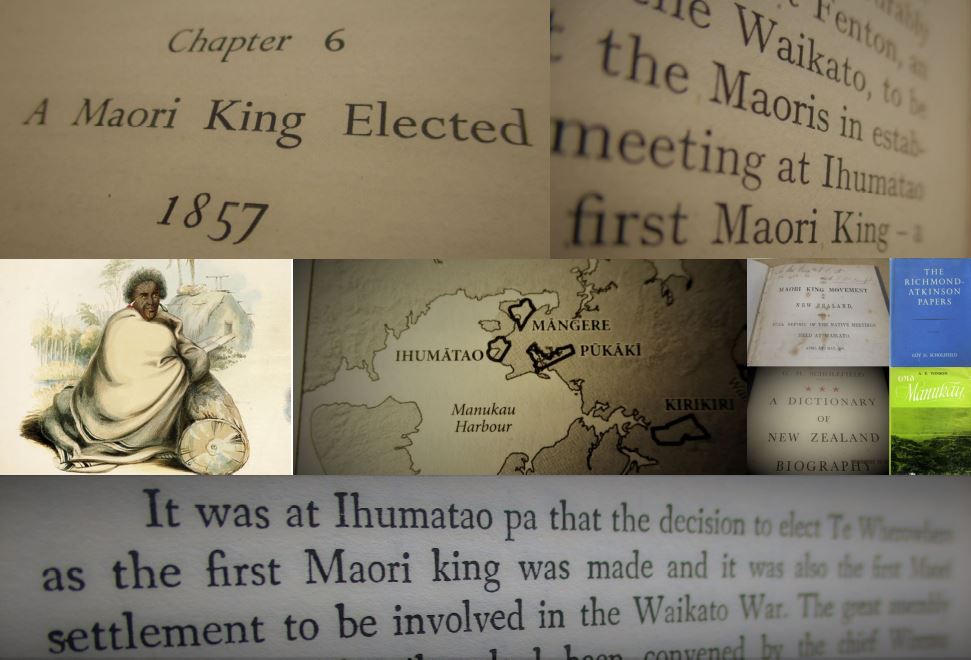
Such an obstacle had to be overcome if the colonists were to civilize ‘the natives’ with just enough education to assimilate, occasionally provide cultural entertainment and do the white man’s dishes.
Key Finding: The Treaty Theatre pivoted upon a fulcrum of deceptive translation differences in the 1840 Waitangi Treaty texts, as well as oral persuasion, that worked to hide the omissions of imperial context, intent and history.
The ‘Colonial Law Track’ – From Captain Cook to Captain Hobson
The ‘Colonial Law Track’ moves to annex New Zealand were started by King George III who signed off on Captain James Cook’s instructions, for the Endeavour voyage that he personally contributed £4000, and which resulted in Cook claiming possession of New Zealand for His Majesty at two places, in 1769 and 1770.
Freemason Captain Bro. James Cook’s secret instructions from the Admiralty was directed to take possession or to seek the “Consent of the Natives”, for the Great Southern Continent, Terra Australis, and for other islands he found inhabited that had not been previously discovered by any other European. In spiteof Abel Janszoon Tasman’s squiggly and very partial map of 1642, Captain Bro. Cook did report he had claimed possession at two places in New Zealand. Fascinating, his written secret instructions from the Admiralty did not state exactly how he might achieve that consent without his head becoming skewered on a stick.
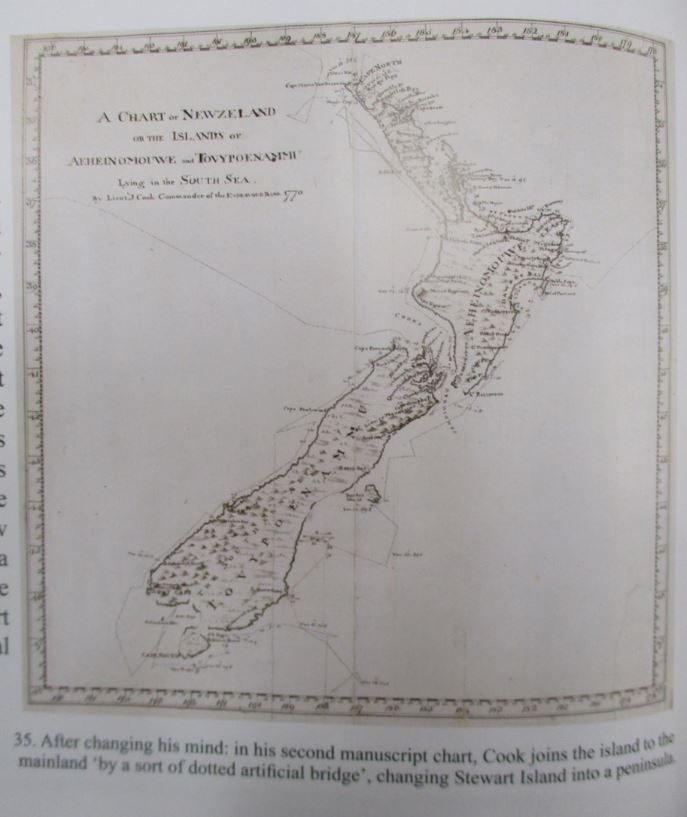
Perhaps there was another set of instructions, since Secretary of State to the Admiralty Lord Shelburne (William Petty) carried King George III’s Royal instructions to the Admiralty, as David Wood wrote in his 1947 book, Cook The Explorer.
To convey an idea of the calculus of the British Masonic Empire during the reign of King George III (1738-1820), Lord Shelburne was the overlord of the British Secret Intelligence Service, which was an alliance between English, Scottish and Swiss ‘noble’ families, as Anthony Chaitkin found while researching his book, Treason in America, which explored their subversion of the United States of America from the American Revolution to World War II. Lord Shelburne would later set in motion an orchestrated subversion of rival states, such as France, Spain and America following the loss of the 13 colonies in 1783 at the end of the American Revolutionary War (1776-1783), which established the United States of America as a Templar Masonic State.
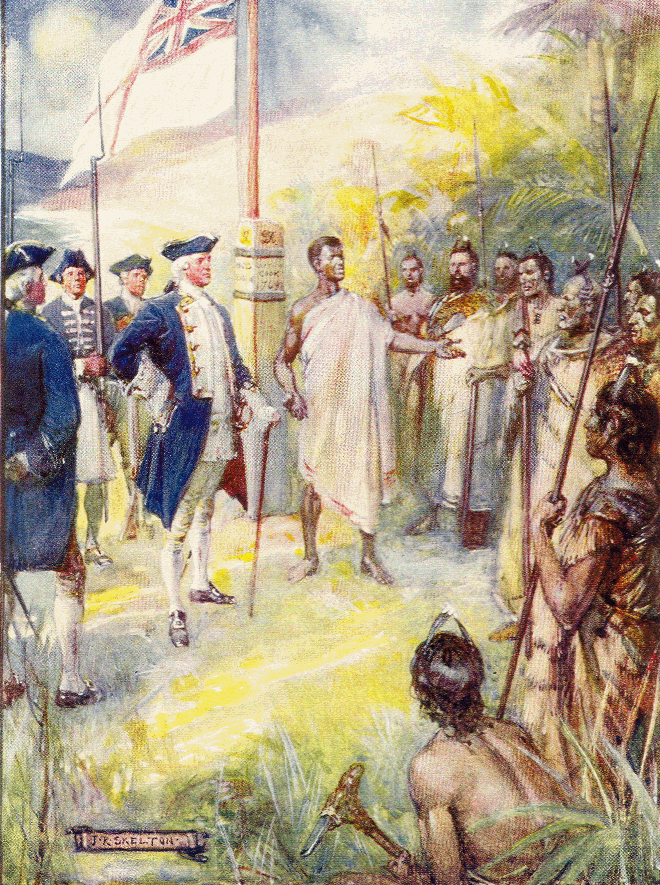
Where the British Admiralty were guarded about the means to gain consent of inhabitants in ‘discovered’ lands in 1768, the Dutch in 1642 were more open about how to construct voluntary assent or submission through means of ‘friendly persuasion’.
The Dutch United East India Company’s instructed Captain Tasman to plant symbols of “actual occupation” which were either a memorial stone or the Netherland’s prince flag. These objects were meant to be erected or hoisted as possession rituals to lay claim to any lands that the Dutch explorer discovered, touched and set foot on.
Crucially, to fulfill the taking of possession of ‘discovered’ lands, Tasman was also supposed to gain the voluntary assent or submission of the people of any inhabited lands through “friendly persuasion”, or “planting a small tree in a little earth”, or “by erecting some stone with the people”, or by way of hoisting “the prince flag to commemorate their consent”.
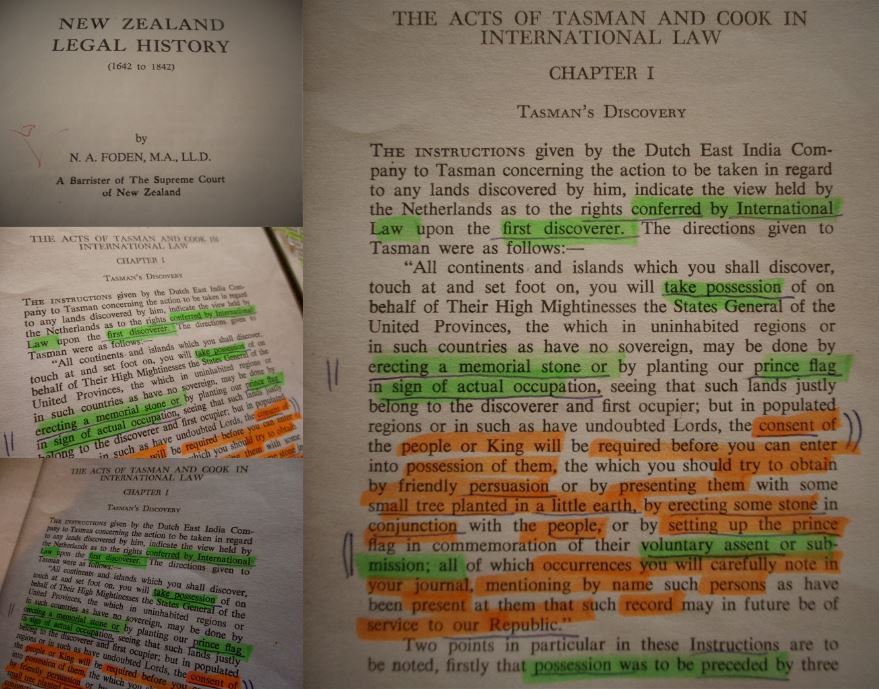
Captain Bro. Cook’s vision that New Zealand would make an excellent base for the British Empire in the South Pacific was advanced when the archipelago was included within the jurisdiction of the colony of New South Wales in 1788 until 1817 or 1823, depending on whose view you take. In his paper, “Was New Zealand part of New South Wales 1788-1817?”, Professor Lyndall Ryan states that in 1817 the British government ruled that New Zealand was not part of NSW. In 1823, New Zealand was taken out of the jurisdiction of the colony of New South Wales, supposedly due a mistake in the islands not being mentioned as part of the territory of New South Wales, which was roughly the eastern half of New Hollande, or Australia. However, in his 1926 book, New Zealand: Its Political Connection with Great Britain, J. I. Hetherington believed the omission was deliberate.
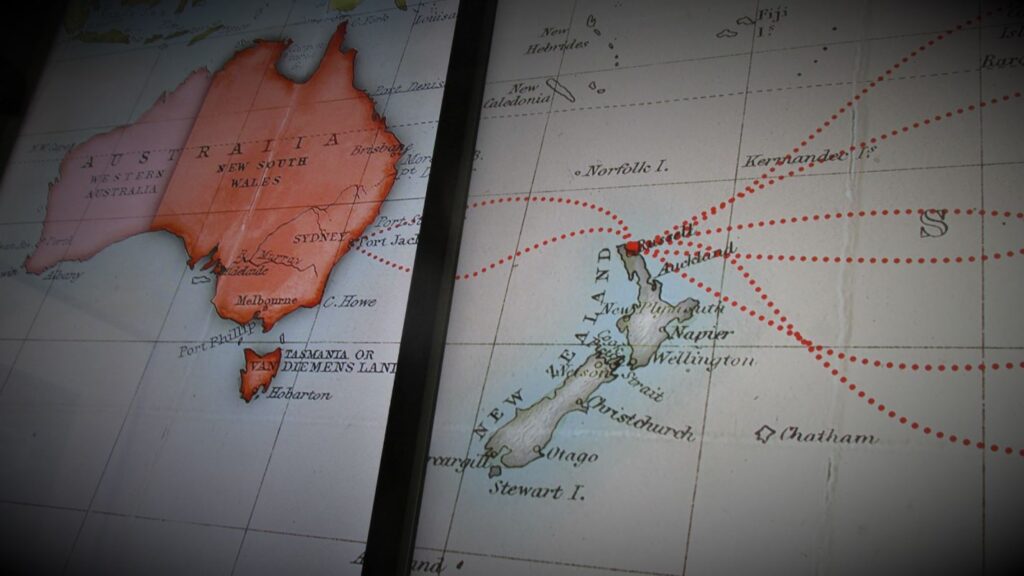
In 1825, the first New Zealand Company was established, to supply organized settlement of Europeans in New Zealand. Although the company’s ships, Rosanna and Lambton, voyaged around the coasts in 1826, the project failed. Some of the first New Zealand Company players would re-emerge in the second New Zealand Company, that sent ships in May 1839 to swindle large tracts of land, precipitating the British Crown to activate the final stage of annexation to claim sovereignty over New Zealand with a series of legal moves, identified by Steve ‘Snoopman’ Edwards as the newly-laid ‘Colonial Law Track’.
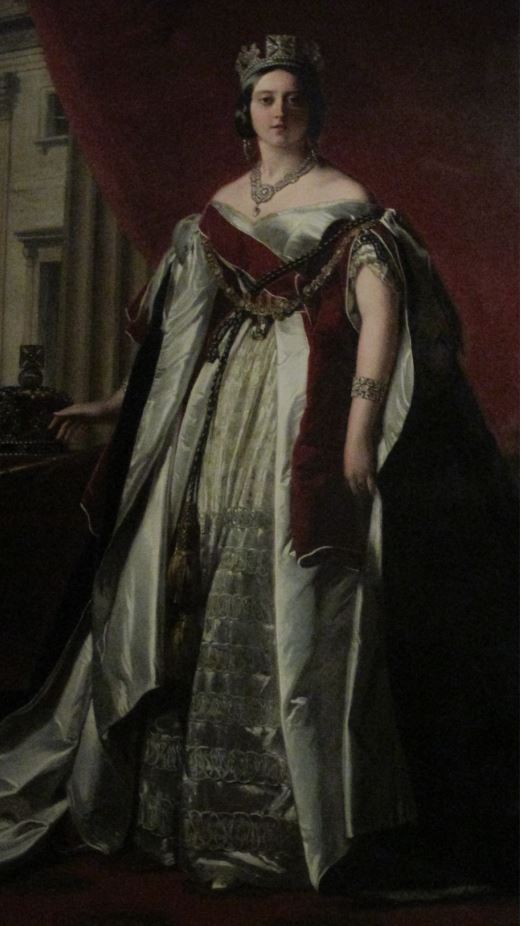
The final stage of the ‘Colonial Law Track’ were started with the Great Seal of the United Kingdom and completed by the inky, feathery quill of Queen Victoria, whom perfected the incomplete title stealthily gained by Freemason Captain Bro. James Cook — as the Snoopman showed in his heretical investigation, “Royal Landlord Possession Rituals”.[55] To that devious end, on June 15th 1839, the British state exercised the Queen’s Royal Prerogative Powers to sign a decree known as the Letters Patent of Boundary Extension that enlarged the boundary of New South Wales, which had the effect of enveloping all of the islands of New Zealand within the jurisdiction overseen by Governor George Gipps.
This parallel Colonial Law Track to the Treaty Theatre Track was essentially completed on 16th November 1840, when Queen Victoria signed the Royal Charter for Severance (or Charter of 1840), establishing New Zealand as a separate colony.
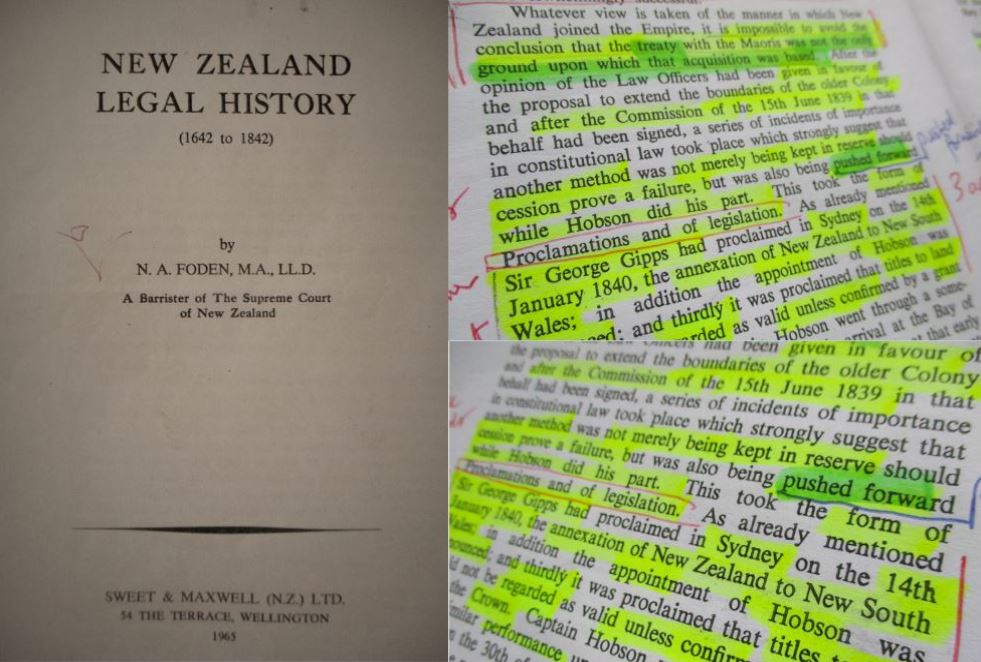
The key pieces of parallel Colonial Law Track laid to the Treaty Theatre Track to gain British paper sovereignty were:
(1) a Letters Patent of Boundary Extensions activated by Royal Prerogative Powers, dated June 15th 1839, which expanded the jurisdictional boundary of New South Wales to include all of New Zealand;
(2) a Letters Patent of Amended Commission to Governor George Gipps making him Governor of New Zealand, a new dependent colony of New South Wales, signed by Her Majesty’s Command bearing Lord Normanby’s name on July 30th 1839;
(3) Governor George Gipp’s Proclamation of January 5th 1840 establishing N.Z. Customs;
(4) Gipp’s three Proclamations of January 14th 1840 notifying the extension of the boundaries of New South Wales to include New Zealand, Captain Hobson’s Commission as Lieutenant-Governor and a notice that land Sales after January 5 1840 would not be valid and land sales before that date would be subject to official scrutiny;
(5) Captain Hobson’s Proclamation of January 30th 1840 declaring himself as Lieutenant-Governor in an Anglican chapel, Christ Church, in Kororāreka before 300 settlers and 100 Māori;
(6) Lieutenant-Governor Hobson’s Proclamation of May 21 1840 claiming sovereignty over the North Island on the basis of cession by Treaty and over the South Island on the grounds of Cook’s Discovery;
(7) the New South Wales Continuance Act (or the “New Zealand Act of 1840”) with a separation empowering clause to sever New Zealand from its status as a dependency of New South Wales without expressly naming New Zealand, was passed in the NSW Legislature on 16 June 1840 as 3 Vic No 28;
(8) in Westminster, London, the New South Wales Continuance Act was passed on 7 August 1840, with a severance empowering clause to erect a separate Colony of out of those islands considered as Dependencies of New South Wales;
(9) Ratification of Hobson’s sovereignty Proclamation of May 21st 1840 in the London Gazette on October 2 1840, after they were received in London on September 28 1840;
(10) the Royal Charter for Severance (or Charter of 1840), signed by Queen Victoria and dated 16th November 1840 establishing New Zealand as a separate colony upon receipt of the Long Roll of Parchment on November 10;
(11) the Governor’s Commission of 24 November 1840;
(12) the Royal Instructions of December 5th 1840; and
(13) Hobson’s oath as Governor and Commander-in-Chief on May 3rd 1841, which was notification that New Zealand was no longer a dependency of New South Wales.
These moves to gain sovereignty over New Zealand made prior to, during and after the signings of the 1840 Waitangi Treaty were the real means by which the British Crown laid claim to paper sovereignty, and perfected the incomplete ‘First Discovery’ title claimed by Freemason Captain Bro. Cook for the British Masonic Empire.
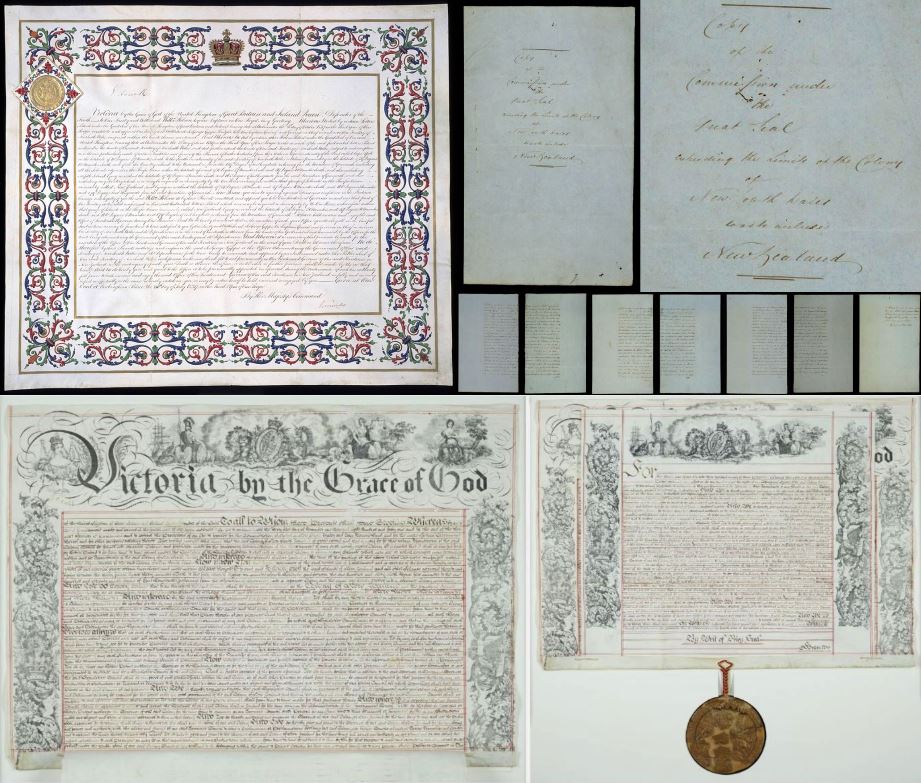
Government historian Richard S. Hill stated in his history of policing in New Zealand, that ‘cession by treaty’ was a pretense to neutralize anticipated Māori opposition, stonewall representative civil government for settlers, and to deconstruct the façade of an ‘independent state’, designed by the British. Of the myth of cession, Hill wrote:
“New Zealand mythology would have it that the basis of annexation was the ‘Treaty of Waitangi’, signed by ‘sovereign’ chiefs: had the majority of chiefs assembled at Waitangi refused to sign, ‘Hobson could not have annexed the country’.”
Hill found New Zealand joined the British Empire on the basis of settlement by the continuous occupation of 2000 Britons, when it was annexed by the Letters Patent of Boundary Extension on June 15th 1839 – while researching Policing the Colonial Frontier: The Theory and Practice of Coercive Social and Racial Control in New Zealand, 1767-1867, which was published in 1986 for the Department of Internal Affairs. Settlement, once formalized by a European Power, became an unchallengeable title.[56]
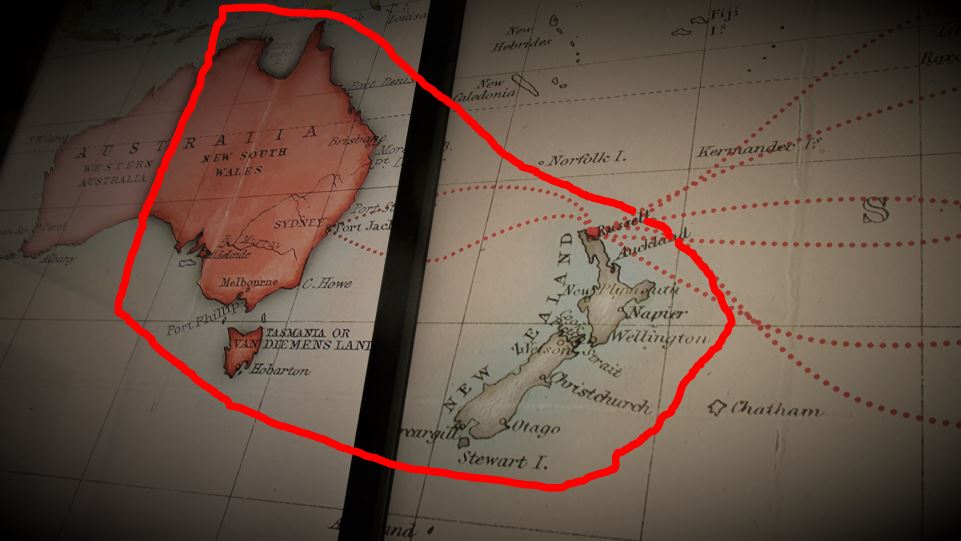
With stinging clarity, Hill continued:
“The pretense of acquisition by treaty cession was a device both to defuse Maori resistance by appearing to sanction their retention of ‘the substance of the land’, and to avoid providing the settlers with the representative institutions to which a ‘colony of settlement’ was entitled. In addition, it was a theoretical deconstruction of the edifice of ‘indigenous sovereignty’ earlier erected by the British for their own purposes. Traditional historians, puzzled by the apparently ‘anomalous constitutional position’ of Hobson announcing himself as Lieutenant-Governor immediately upon landing on New Zealand soil on 30 January, before even the initial ‘Treaty’ signatures were procured, took Waitangi at its face value.”
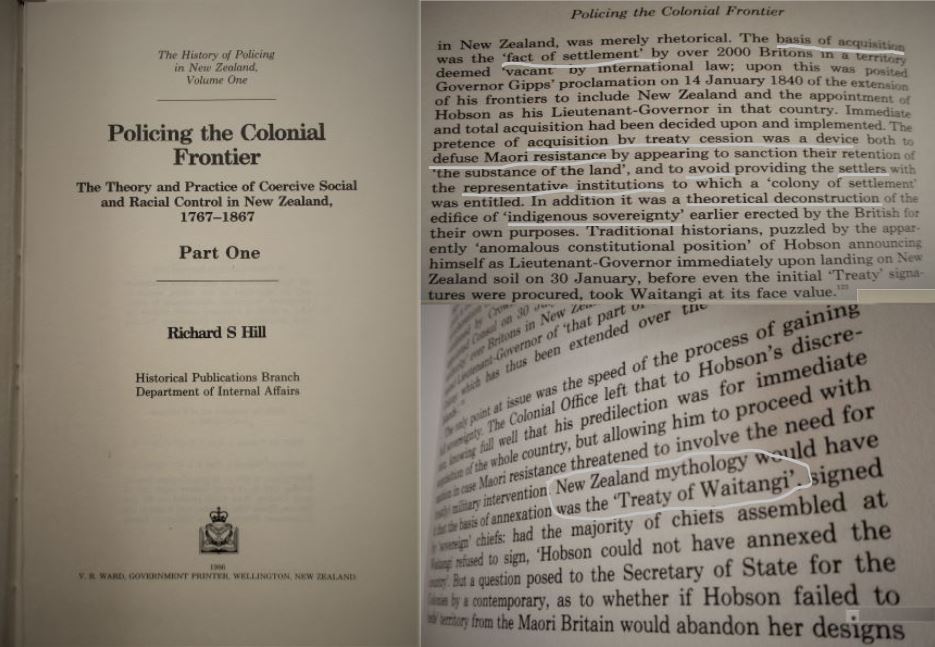
In other words, the 1835 ‘Declaration of Independence’ was regarded as an edifice that could be deemed null and void with the ‘Treaty Chiefs’ appearing to wittingly sign away their ‘indigenous sovereignty’ in 1840. Hill stated that the Colonial Office bestowed Hobson the mission to move with speed to procure full sovereignty with the theatre of native consent by treaty cession, because “immediate and total acquisition had already been decided upon and implemented”.
This finding concurs with Norman Arthur Foden’s thesis in his 1938 work, The Constitutional Development of New Zealand in the First Decade (1839-1849).[57] Foden also found at the time of the British takeover of New Zealand, there were three classes of colonies designated according to their mode of origin: by settlement (or occupation), by conquest and by cession.[58]
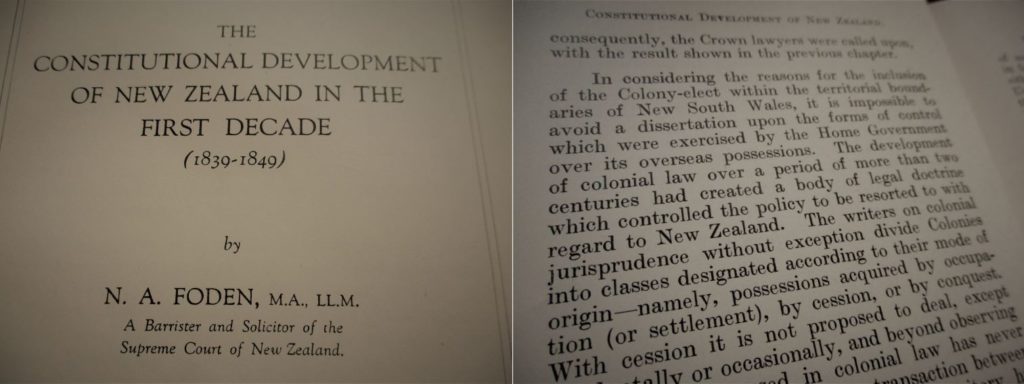
However, cession of territory in treaties by aboriginal and indigenous peoples to a European power was considered invalid in colonial and international law because they were considered coercive. Cession refers to the transference of territory from one belligerent State to another following the termination of hostilities. If territory were gained by force of arms while conflict was ongoing, then the Colony would be categorized as acquired by conquest or capitulation.
Despite producing another ground-breaking book, New Zealand Legal History (1642-1842) published in 1965, in which Foden again explored the parallel track ‘pushed forward’ to claim full paper sovereignty over New Zealand, the former barrister and solicitor of the Supreme Court was unaware of the language differences in the 1840 Waitangi Treaty.[59]
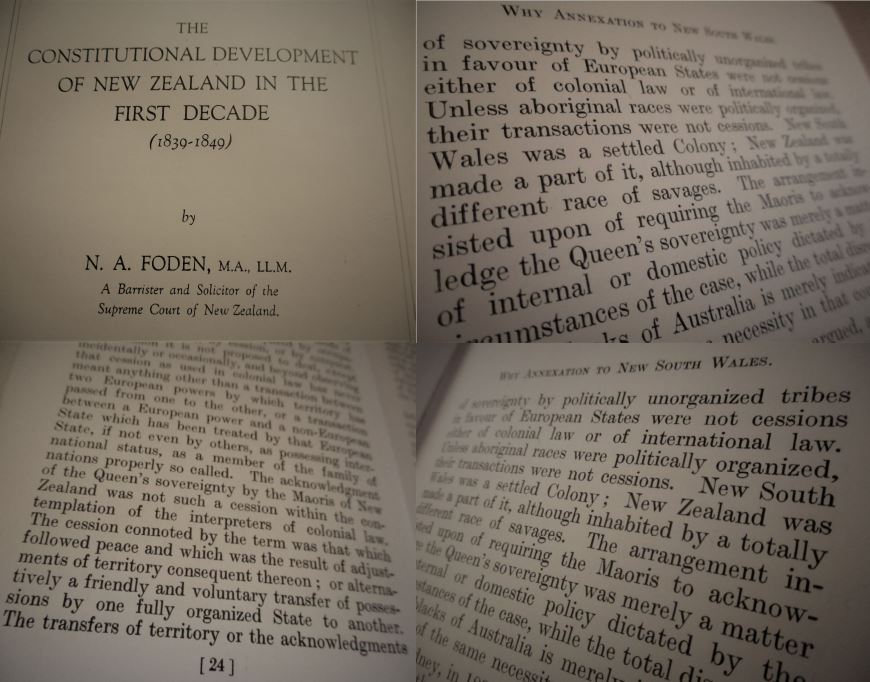
Writing seven years earlier, in 1958, Parliamentary Historian Dr. A. H. McLintock essentially concurred with Foden’s 1938 work, when he stated that the Treaty was invalid as an instrument of cession because it was not possible in 1840 nor even in 1950s for “a convenant between the Crown and a number of savage tribes to be construed into an agreement between sovereign states in accordance with the usages of international law.”
McLintock concluded that “New Zealand therefore lies within the category of colonies acquired by occupation,” since the grounds for acquisition by cession were mixed. As with Foden, McLintock was not only writing at a time before scholarship had moved past the Colonial and Dominion-era of casting aboriginal and indigenous peoples as ‘savages’ and ‘natives’. Both scholars were writing before discourses on the language differences emerged in the public sphere with Ruth Ross’s Te Tiriti o Waitangi: Texts and Translations in 1972. Those discourses on language differences between the texts were finally given validity by the Ministry of Justice’s Waitangi Tribunal in 2014, whom found that no Treaty Chiefs or Chieftainesses ceded sovereignty.

However, this key finding by the Waitangi Tribunal in 2014 was dismissed out-of-hand by the Key Administration, by the Governor-General, and by aloof connection, the British Monarchy, and this dismissal has been carried forward by the English and Ardern Administrations, and the Waitangi National Trust Board, whom neglected to present Prince Charles with a copy of the Waitangi Tribunal’s 2014 report, “He Whakaputanga me te Tiriti: the Declaration and the Treaty,” during his November 2019 visit.
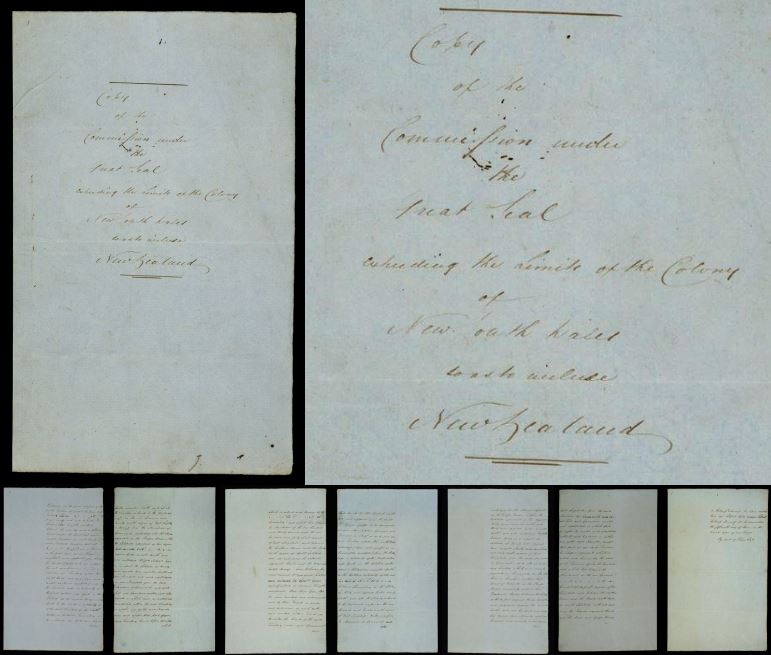
this Letters Patent of Boundary Extension of 15 June 1839 extended the limits of the colony of New South Wales, so as to include New Zealand. Archives New Zealand Archway Item ID:R21434429.
In his 2003 paper, “The Treaty of Waitangi and the Relationship Between Crown and Maori in New Zealand”, Noel Cox of Aberystwyth University claimed that the British Crown acquired legal authority over New Zealand by dis-covery and settlement, as well as by cession, while acquisition of legal title was based on settlement, like Australia. But, for political and moral reasons New Zealand was treated differently. However, Cox’s narrative paddled against the current when he essentially performed an inoculation ritual by dealing with differences between the two sides in one paragraph. Cox stated:
“The British side thought that the chiefs were making a meaningful recognition of the Queen and the concept of national sovereignty in return for the recognition of their rights of property. In contrast, David Williams has argued that the Maori text connoted a covenant partnership between the Crown and Maori, rather than an absolute cession of sovereignty; but this interpretation may be strained.”
Without explicitly stating the language translation differences, Cox avoided the messy business of dealing with the historical power crimes.
When Captain Hobson’s dispatch with the signed sheets arrived in London on November 10th 1840, the Secretary of State for the Colonies, James Stephen referred to the Treaty as ‘the long role of parchment’. James Stephen wrote a minute:
“It seems to me to prove, if proof were wanting, how much wiser was the course taken of negotiating for the cession of the sovereignty, than would have been the course of relying on the proceedings of Captain Cook, or the language of Vattel in opposition to our own Statute Book.”
Emeric de Vattel was a Swiss jurist whose views on the law of discovery and settlement were widely known by the British governing class at the time. As historian David Williams noted in his 1985 paper, “The Annexation of New Zealand”, de Vattel viewed that the ultimate dominion and sovereignty over the soil was conferred on the government by whose authority a land was discovered, or by whose subjects the discovery was made, even if the land continued to be inhabited by ‘aborigines’.
Ironically, Foden sensed it was James Stephen who had cooked up the Deus Ex Machina idea to ‘treat with the natives’ — even though the Stephen family were slavery abolitionists. The Stephen family reputation helped lazy historians accord James with humanitarian credibility, without blushing for either avoiding calling him out for his duplicitous record, or re-examining the treaty operation as a Deus Ex Machina device to resolve a narrative conflict. If the British Masonic Empire failed to complete the sovereign title claim to New Zealand, that failure of action would threaten the transmarine empire’s standing. If however, the British Masonic Empire could win paper sovereignty with innovative theater, its reputation among the pirate sovereigns of Europe and North America as brazen swindlers would be enhanced. Because, the pirate sovereigns of the ‘cannon powers’ would marvel that a cession of territory was construed to have occurred without firing a shot.
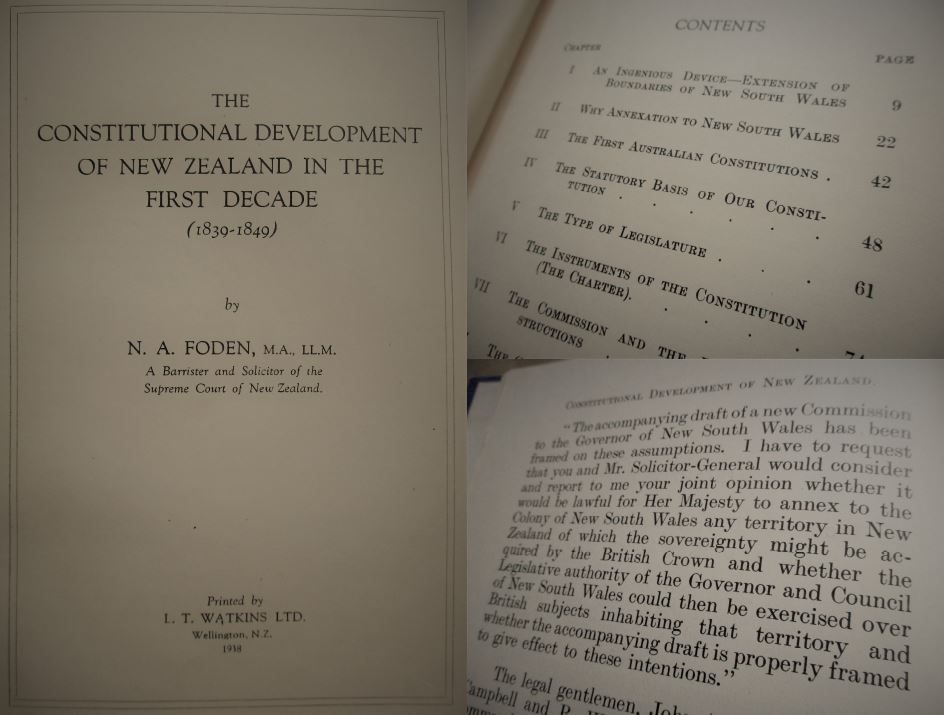
Indeed, the matter of how sovereignty was acquired over New Zealand can now be seen with the sharpened focus that the lenses revolutionary theory applied to imperialism and, in particular, to the British Masonic Empire, now afford forensic journalism.
In his 2007 Auckland University Law Review paper, “An Exploration and Critique of the Sovereignty Assumed by the United Kingdom over New Zealand”, Stephen Windsor explored a fourth mode of acquisition: usurpation.
Windsor explores the legal principle of prescription that Sir Ian Brownlie expressed in Principles of Public International Law “[t]he essence of prescription is the removal of defects in a putative (reputed) title arising from usurpation of another’s sovereignty by the consent and acquiescence of the former sovereign.” Windsor identifies a usurpation as a type of prescription that appears applicable to the Britain’s acquisition of sovereignty over New Zealand. Usurpation is where one state deliberately usurps another’s sovereignty and the former sovereign acquiesces.
In international law, usurpation has four requirements: first, the new sovereign must display state authority; secondly, the possession must be peaceful and uninterrupted; thirdly, the possession must be public; fourthly, possession must persist.
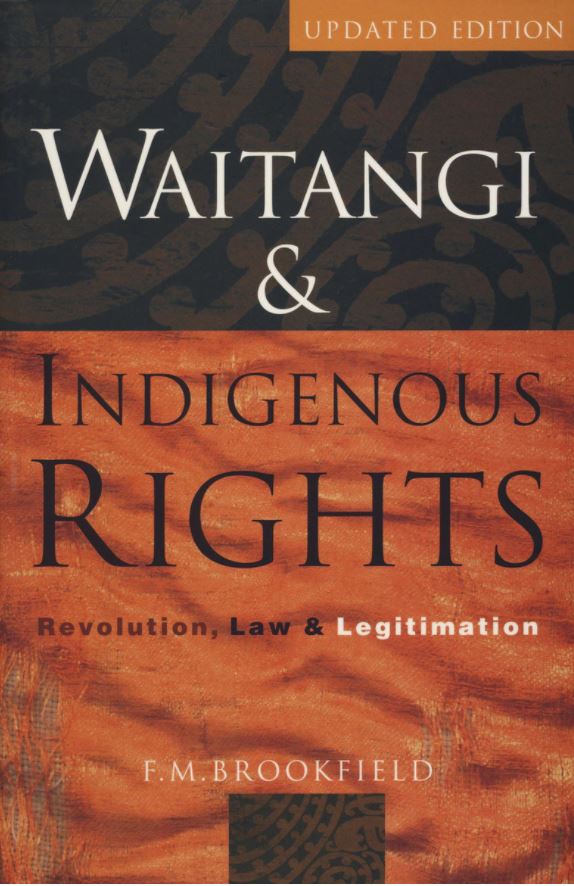
The revolutionary principle is also explored by Windsor, who draws up Charles Tilly’s characterization of period from 1789 to 1848 as ‘the Age of Revolution’, which was defined as “a forcible transfer of power over a state in the course of which at least two distinct blocs of contenders make incompatible claims to control the state, and some significant portion of the population”. Windsor mentions Emeritus Professor of Law at Auckland University, Jock Brookfield, who has argued in his 2006 book, Waitangi and Indigenous Rights: Revolution, Law & Legitimation, that it was implausible that Māori agreed to the full transfer of sovereign power that the British Crown claimed in 1840 and subsequently enforced by various acts. Brookfield asserts that the Treaty signings set in train a revolutionary seizure of power on May 21 1840, by Hobson’s proclamations, that upended Māori customary law and was “a large scale robbery”.
While these works by Brookfield and Windsor are valuable, they both make errors that derive from failing to model for the revolutionary dynamic. Windsor assumes that the applicability of methods of sovereignty acquisition is either usurpation via prescription, or revolution via conquest. Brookfield assumes that Britain’s acquisition of sovereignty in 1840 was a separate revolution from the wars in 1860s, despite recognizing both events as acts to wrest or contest sovereignty. Both events were separate stages of the same revolution: namely the New Zealand Masonic Revolution.
Because both scribes failed to model for the patterns of revolutions, as well as failed to identify the Waitangi Treaty Tour as a theatrical production, or théâtre usurp d’état, that was designed with a red herring construct to distract from the Colonial Law Track. The red herring logical fallacies within and between the 1840 compact bought time while the revolutionary possession was peacefully established, with witting plotting that eventually ‘the natives’ could be construed to be in ‘rebellion’ when they ‘reneged’ on the Treaty.
Thus, the New Zealand Masonic Revolutionary War of 1860-1872 was the consolidation stage of revolution set in motion on June 15 1839 with the Letters Patent of Boundary Extension, which established New Zealand as a dependent colony by acquisition mode of occupation (or settlement), and ratified on November 16 1840 by Letters Patent of Severance and Royal Charter, which erected New Zealand as a separate colony, by acquisition mode of usurpation.
Therefore, the order of sorcery underpinning colonial state formation over the islands of New Zealand is evident from the memoranda, letters patent, commissions, proclamations, legislative acts and a Royal Charter as artifacts of state maneouvuers to forge new Colonial Law Track consistent with English Constitutional Law. Meanwhile, a regime of sematic algebra advanced in a nationwide theatrical production company that would report back a tale of cession of sovereignty over an entire aboriginal and indigenous culture. In this conjuring of a colony, “cession” no longer meant territory passing between belligerent powers following cessation of armed conflict because the only shots fired was to mark the arrival of Captain Hobson, and his pomp to claim cession.
Having enjoined himself in the machinations, Lord John Russell, the new Secretary of State for War and the Colonies replied to memoranda of November 10th 1840, from the Secretary of State for the Colonies, James Stephen. Lord Russell wrote:
“The English and Native both rely on our good faith. Approve Captain’s conduct. Have these despatches printed for the Committee on New Zealand.”
At the end of his chapter, “The Long Roll of Parchment” in his 1965 book New Zealand Legal History 1642 to 1842, Norman Arthur Foden noted the unease felt by the British Parliamentary Under-Secretary of State for the Colonies, Mr R. Vernon Smith, upon reading Chief Nōpera’s now famous line regarding ‘the shadow of the land’.
When Chief Nōpera Pana-kareao of Te Rarawa iwi signed the Waitangi sheet at Kaitāia on 28 April 1840, with his wife, Ereōnora, he said:
“The shadow of the land goes to Queen Victoria, but the substance remains to us; we have now a helmsman; before everyone wished to take the helm. One said, ‘Let me steer.’, another, ‘Let me steer’, and we never went straight.”
By ‘shadow’, Chief Nōpera meant the British Monarch was extending a protective blanket, while the capacity to control sovereignty over the soil was held by rangatira at the hapū level. Chief Nōpera questioned Wesleyan missionary, William Gilbert Puckey, the night before he signed, in particular about the meaning of the word kawanatanga in the Te Tiriti o Waitangi. Puckey translated Nōpera speech, which Ricard Taylor translated.
In London, Vernon Smith had read the dispatch from James Stephen in which the Secretary of State for the Colonies reported Nōpera’s words. Adding in a minute to Vernon Smith, Secretary of State James Stephen wrote:
“This is merely a continuation of the reports relating to the cession of Sovereignty. I commend the accompanying speech for your perusal. There is, I think, great merit in the New Zealand style of public speaking.”
In a dispatch to Lord John Russell, Vernon Smith, replied:
“Yes, but I fear they will discover that the subjects of Queen Victoria have something more than the shadow”.
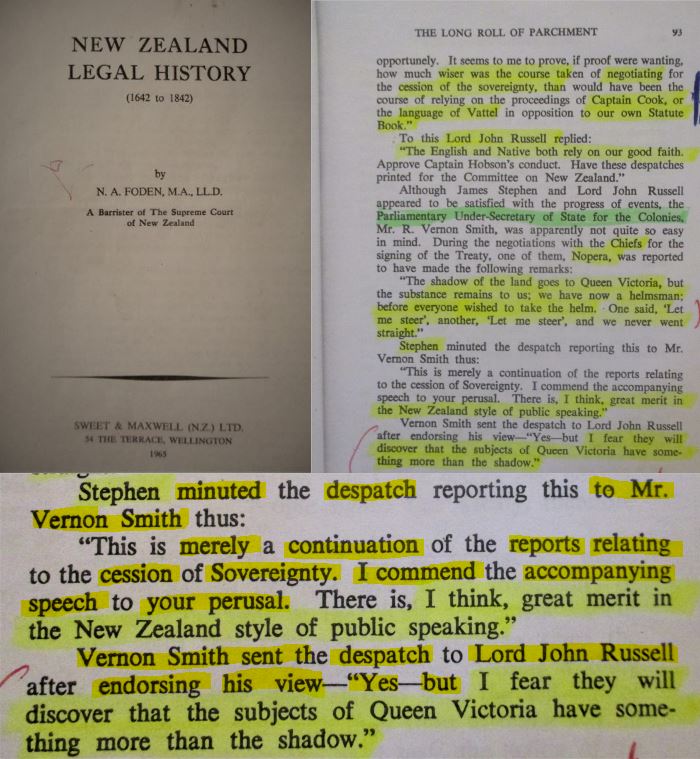
In other words, British officials in London knew Māori had been swindled of paper sovereignty and also that substantive sovereignty over the soil would progressively pass to the British Crown through stealth, swindle and struggle, since the British Masonic Empire gained full colony-forging powers without firing a single shot.
As you would expect from a book titled, The Shadow of the Land: A Study of British Policy and Racial Conflict in New New Zealand 1832-1852, Ian Wards carried the same account of the day when the Secretary of State for the Colonies, James Stephen, and Secretary of State for War Colonies, Lord John Russell, read Chief Nōpera’s speech. And, of Vernon Smith’s fear that rangatira would soon discover that Queen Victoria’s subjects had gained more than ‘the shadow of the land’.
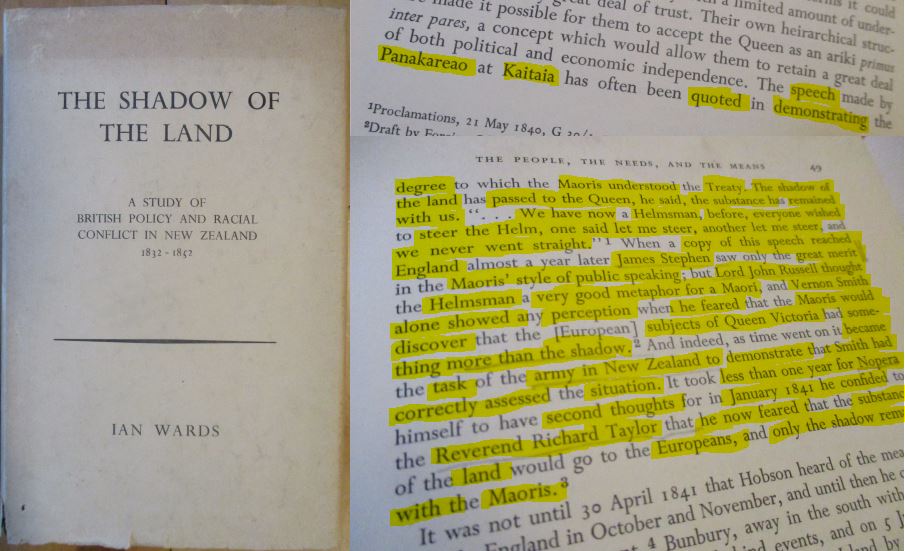
Ironically, Wards also noted that as events transpired, in January 1841, Chief Nōpera confided to Reverend Richard Taylor that he now worried that ‘the substance of the land’ would now pass to the European settlers and that only ‘shadow’ would be left to Māori. Therefore, when Ian Wards of the Historical Branch of the Department of Internal Affairs in Wellington wrote in 1968 that it was “unlikely that the Colonial Office sought to deceive in any sinister sense” in its decision to send Hobson to New Zealand to treat with Māori, the historian was covering-up for the British Crown.
Because – the officials in London certainly knew that the Treaty Chiefs had been swindled of their sovereignty six days before they arranged for Her Majesty’s waxy Royal Seal to authorize the Charter of New Zealand on November 16th 1840. Indeed, as David Williams observed, the formal separation of New Zealand from New South Wales was arranged by the device of Letters Patent of Severance, or the Charter of New Zealand. Yet, the legal authority for this device related to the New South Wales Continuance Act (or the “New Zealand Act of 1840”), which contained a separation empowering clause to sever New Zealand from its status as a dependency of New South Wales without expressly naming New Zealand and was passed in Britain on 7 August 1840. David Williams wrote:
“The Charter’s preamble did not recite the 1839 Letters Patent, nor any of the Proclamations by Gipps or by Hobson, nor the Treaty of Waitangi. The sole basis of authority recited was the Act 3 & 4 Vict c 62 passed on 7 August 1840.”
Therefore, historian Ian Wards’, The Shadow of the Land, turns out to an elaborate work to explain away a conspiracy as merely the duplicity of Anglo-Saxons with superiority complexes.
“Ostriches … are not merely careless birds.”
Had Wards aimed an arrow at the bulls-eye with the research question about the real purpose of composing the Māori language version of Te Tiriti o Waitangi, he might have found that Reverend Richard Taylor was another culprit in the deception. After all, it was Taylor who had copied the final te reo Māori text in the early hours of February 5th 1840. Particularly, because Wards was among those whom comprised the witting deceivers of the Treaty Cliqué, by avoiding to say anything to the chiefs when the CMS printer, Colenso, had warned his fellow Protestant missionaries on February 6th that the chiefs would have every right to call them out in the future for not telling them about the full bearing of what they were being persuaded to agree to. Therefore, it was deeply ironic that the government historian who authored The Shadow of the Land, missed the full significance of Chief Nōpera confiding to Reverend Taylor in January 1841 that he was concerned that Māori had been left with merely ‘the shadow of the land’.
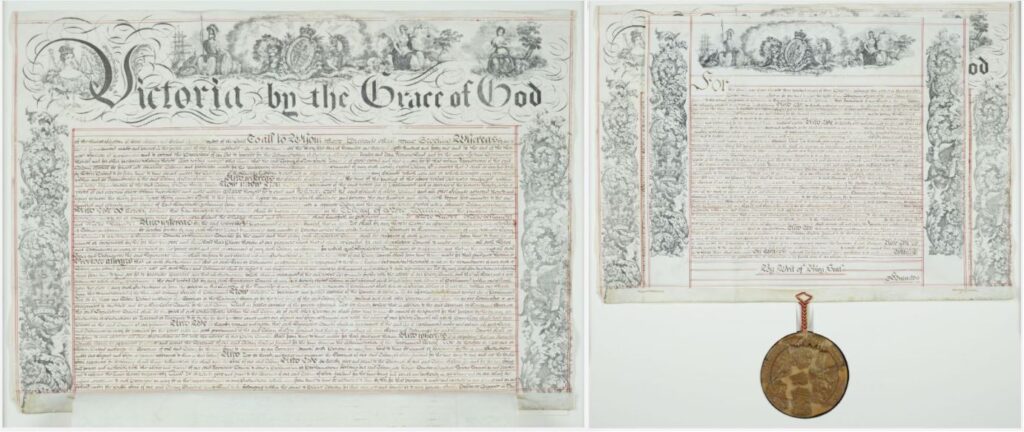
As a result of Hobson’s dispatch to London, dated May 25th 1840, sovereignty over New Zealand was gazetted by Proclamation in London on October 2nd 1840, at the command of Queen Victoria, as The Shadow of the Land notes. Wards observed that Hobson’s dispatch contained his own proclamations of claiming sovereignty over the North Island by virtue of cession by the Treaty of Waitangi and claiming sovereignty over the Southern Islands on the grounds of discovery. Six weeks later, on November 16th 1840, Queen Victoria used the Great Seal of the United Kingdom to authorize Letters Patent of Severance to issue the New Zealand Charter of 1840. In between, on November 10th, the arrival of ‘the Long Roll of Parchment’ and accompanying accounts of the Treaty signings, that included Chief Nōpera’s ‘shadow of the land’ speech, in fact, removed any possible shadow of doubt about the trickery afoot to swindle sovereignty.
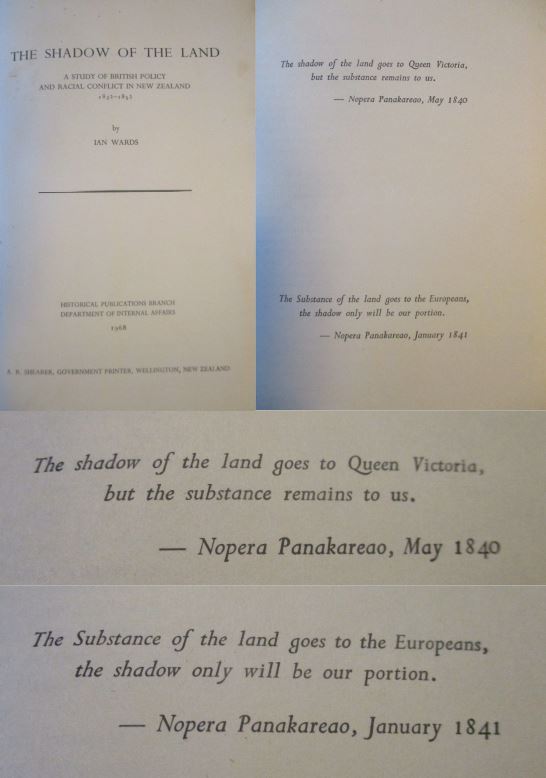
Lord John Russell’s receipt of Hobson’s dispatches pertaining to his sovereignty Proclamation of May 21st 1840, and of the ‘Long Roll of Parchment’ received on November 10 1840, triggered moves to claim sovereignty that belie a strategy to finalize the acquisition of absolute and complete sovereignty with the appearance of chiefly cession. Hobson’s dispatch received on September 28th 1840 in which the Lieutenant Governor justified his sovereignty Proclamation of May 21st 1840, were officially endorsed and publicly announced in the London Gazette on October 2 1840. And of the receipt of the ‘Long Roll of Parchment’ on November 10 1840, Foden wrote in 1938:
“this despatch was the signal for the erection of the separate Colony, for the Charter bears the date only six days later than the Colonial Office acknowledgement of the Lieut.-Governor’s despatch — namely, November 16, 1840.”
Indeed, the fact of Queen Victoria’s Letters Patent of Severance and the Royal Charter of New Zealand of November 16th 1840 is the key vulnerability in the narrative of New Zealand’s ‘birth certificates’. Behind the Imperial Curtain, we get a glimpse of the home state of the British Masonic Empire wittingly performing screening actions to preserve Queen Victoria’s own apparent ‘oblivion’ as the principle actor, while the agent is the later self at the time of the unwitting misdeed, who effectively ratifies the earlier self’s choice to compartmentalize, or screen off, potential knowledge of wrongdoing. Thus, her state officials could instigate Colonial Law Track moves by exercising the Royal Prerogative Powers on her behalf, and by that route circumvent the British Parliament and thereby de-risk foreign powers getting wind of the plan, and after the fact, gain her ascent to the shrewd imperial chess moves.
Yet, the cracks in the théâtre usurp d’état become clear from a re-examination of the rebuke that New Zealand’s Attorney-General William Swainson received from the U.K. Secretary of State in 1843. This rebuke occurred as a result of a debate that took place in the New Zealand Executive Council on 28 December 1842. The debate was about the whether or not the administration in the infant colony possessed authority over chiefs, tribes and territory pertaining to the alleged murder and cannibalism of a number of Ngāi Te Rangi people on Tūhua Island, located off the coast of Tauranga, by rival Ngati Whakaue.
The Acting Governor Willoughby Shortland, wished to exert authority by charging Ngati Whakaue Chief Tangaroa, amid Ngāi Te Rangi people intention to inflict a retaliation, utu. But, like Hobson, the Tin Woodman (whose heart failed), Shortland also lacked military backing to mount an arrest. However, unlike Hobson, Shortland was also concerned about whether the fledgling government had the legal jurisdiction to intervene. Neither tribe had signed the treaty, and therefore it could not be construed the chiefs had ceded any power to the British Crown. Moreover, the alleged crimes had taken place on Tūhua Island, which had not been ceded. Attorney-General William Swainson argued that chiefs who had not signed the Treaty (such as Taraia, Tupaea, and the Te Arawa chiefs) retained their sovereign independence, were not British subjects, and were not subject to English law, as the Waitangi Tribunal stated in its 2004 Wai 215 Report on the Tauranga Confiscation Claims, “Te Raupatu Otauranga Moana”.
Shortland asserted that the whole of New Zealand was British territory, and by that rubric, all aboriginal hapū and iwi and indigenous Māori were under British rule. The British Colonial Office concurred with Shortland’s position, and this soon become the accepted view amongst Crown officials in New Zealand.
Ironically, on that same Wizard-of-Oz day, December 28th 1842, when the New Zealand Executive Council were debating how far British jurisdiction reached, James Stephen insisted in corresponence to a Parliamentary Under-Secretary, that it was: “in virtue of the treaty . . . and on that basis alone Her Majesty’s title to sovereignty in New Zealand at this moment rests”.
Then, once Shortland’s dispatch reached the Empire’s ‘Emerald City’ of London, the Under-Secretary State for the the Colonies, James Stephen wrote disdainfully of Swainson in a minute:
“It is very singular that this gentleman should never once refer to the fact that the Queen, after receiving Captain Hobson’s report, issued a Royal Charter and Commission under the Great Seal for the government of the Dominion of the whole of New Zealand. Mr Swainston [sic] may think this is unjust, or impolitic, or inconsistent with the former acts But still it is done”.
Swainson recieved a reprimand from Lord John Russell’s successor as Secretary of State for War and the Colonies, Lord Stanley, 14th Earl of Derby, who officially replied to Shortland’s despatch:
“I do not think it necessary or convenient to discuss with Mr Swainson the justice or the policy of the course which the Queen has been advised to pursue. For the present purpose, it is sufficient to say that Her Majesty has pursued it.
But it is my duty to deny, in the most unequivocal terms, the accuracy of any opinion, whoever may be the author of it which may deny Her Majesty’s sovereign title to any part of the territories comprised within the terms of the commissions issued under the Great Seal of the United Kingdom for the government of New Zealand … Mr Swainson must be apprized, that neither he, nor any other person who shall oppose this fundamental principle of your Government can be permitted to act any longer as a public officer under the Queen’s Commission.”
As David Williams observed in 1985:
“the Colonial Attorney-General’s grievous error was that he had taken seriously and literally the ‘humanitarian idealism’ in the 1839 Colonial Office policy pronouncements and that he had assumed that the legal justifications for colonization should have been consistent with official policy”.
The Queen’s Charter of New Zealand was a “bald assertion of power and authority”, David Williams added. Yet, such a view is like a voice in the wind in these Waitangi Disney Treatyland times.
The censorship of history has many allies.
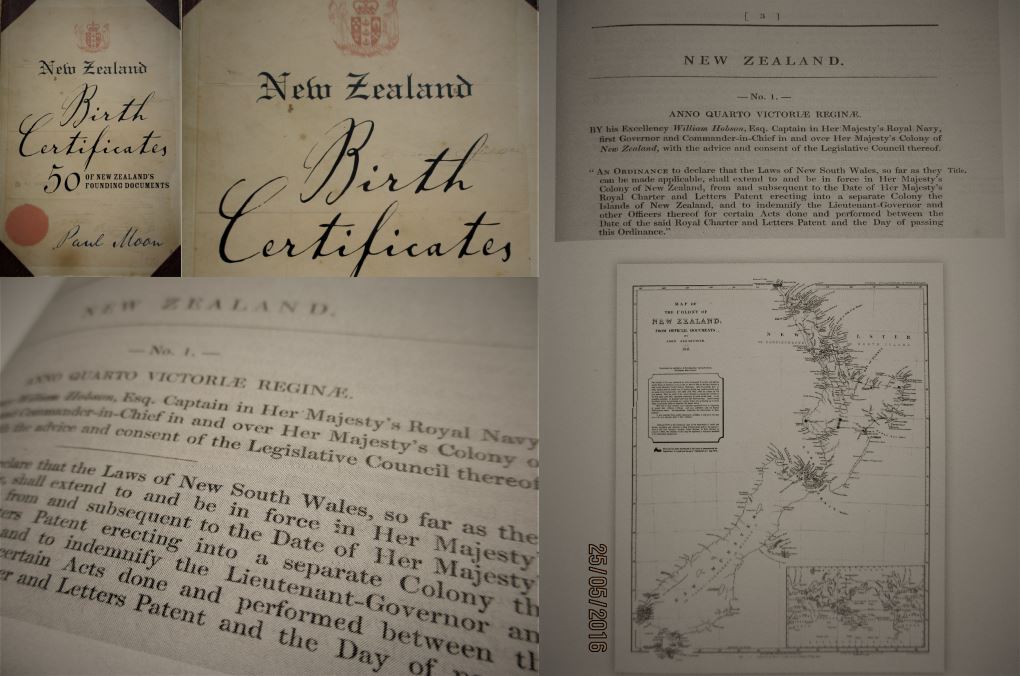
Fascinatingly, Paul Moon’s 2010 book New Zealand Birth Certificates: 50 of New Zealand’s Founding Documents displays Captain Hobson’s Ordinance of May 3rd 1841 declaring himself first Governor and Commander-in-Chief in and over Her Majesty’s Colony of New Zealand.
Yet, Moon only mentions in passing that a “Royal Charter had been signed by Queen Victoria the previous November to authorize ‘this’ [swindle of sovereignty]”. The Professor of History at Auckland University of Technology omitted the Royal Charter, rendering New Zealand Birth Certificates a redacted, sanitized account of what was, in fact, rigorous royal monarchy colony erection by the hand of a female monarch.
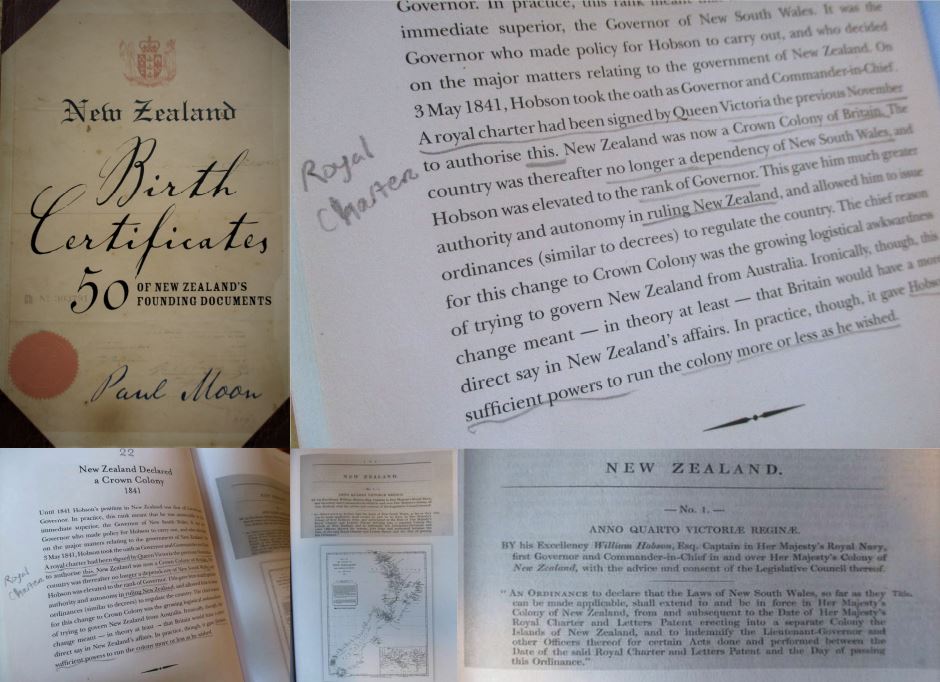
Indeed, Moon sanitized the deftness underpinning the British takeover. He only mentioned Captain Hobson’s May 21st 1840 proclamation, without providing critical context about the Discovery Doctrine, and instead reprinted the Royal navy captain’s modified version of May 25th, which censors the revealing phrase, “on the grounds of Discovery”.
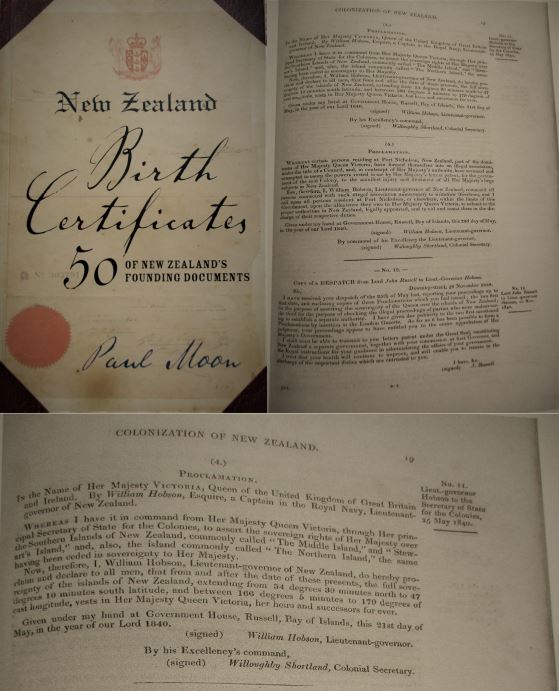
Whereas, in The Treaty and its Times, which Moon co-authored with Peter Biggs in 2004, the Auckland University of Technology history professor was more forthcoming with a commentary on Hobson’s rush to claim sovereignty. Readers of The Treaty and its Times learned that when Captain Hobson proclaimed sovereignty over all of New Zealand on May 21st 1840, he justified acquisition of the South Island and Stewart Island on the grounds of Cook’s Discovery. Hobson’s Proclamation occurred before two treaty sheets hawked at coastal locations around the “Middle” and “Stewart” islands were returned, because he had learned that the New Zealand Company had claimed to establish a constitutional government at Port Nicholson (now Wellington).
Although Moon’s New Zealand Birth Certificates: 50 of New Zealand’s Founding Documents reprinted Hobson’s May 21st proclamation to override the claimed government of the Port Nicholson Council, the historian failed to explain to his readers the anomaly regarding how Hobson could usurp their constitutional claim of March 2nd 1840, when it was not until April 29th that Reverend Henry Williams had hawked Treaty Sheet No. 8 at Port Nicholson. After-all Henry Williams did not finish collecting chiefly signatures for the Cook Strait/Ruakawa Moana treaty Sheet until May 31 1840 at Wanganui. And the New Zealand Company’s Port Nicholson Council had claimed to have gained the conscious consent of two chiefs.
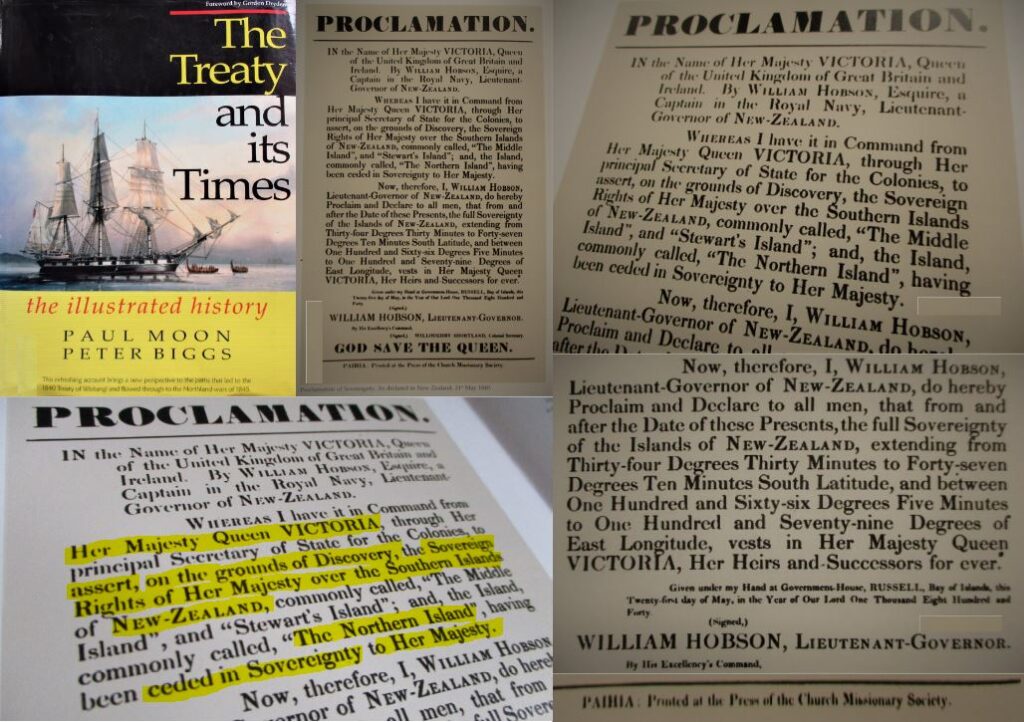
The preservation of the British Monarchy’s scandalous maintenance of the myth of cession also has allies in historians who need to re-skill to detect the anatomy of conspiracies lurking just beyond their noses. For instance, in Tears of Rangi, Salmond wrote:
“rangatira thought they were forging an aristocratic alliance with Queen Victoria, who had promised to uphold their mana; while the Crown’s representatives assumed that it gave them the right to govern the country – a right that the New Zealand Government still maintains. In this way an ontological impasse lies at the heart of the New Zealand state.”
But the Crown’s representativesat Waitangi couldn’t have have been mistaken about the ruse in play, and neither, subsequently, could Colonial Crown figures fluent in Māori, such as Freemason Governor Bro. George Grey and his Chief Native Lands Purchasing Commissioner, Freemason Bro. Donald Mclean. Salmond herself plays the conservative liberal game of avoiding calling a swindle a conspiracy when it came to mentioning Chief Nōpera’s now famous line regarding ‘the shadow of the land’.
Instead of interrogating the record, Salmond’s narrative on the matter is framed in terms of wahine signers, since Nōpera’s wife, Ereonora, also signed and was, therefore, among the few high-born females who were permitted to sign by the English, which didn’t bode well. Yet, with this emphasis on identity politics, Salmond failed to interrogate the record of why exactly it was obvious to Vernon Smith in London that Nōpera’s understanding of the Treaty would likely lead to trouble. In doing so, Salmond let herself off the hook – like so many historians who avoid the bulls-eye truth of the Treaty fraud.**
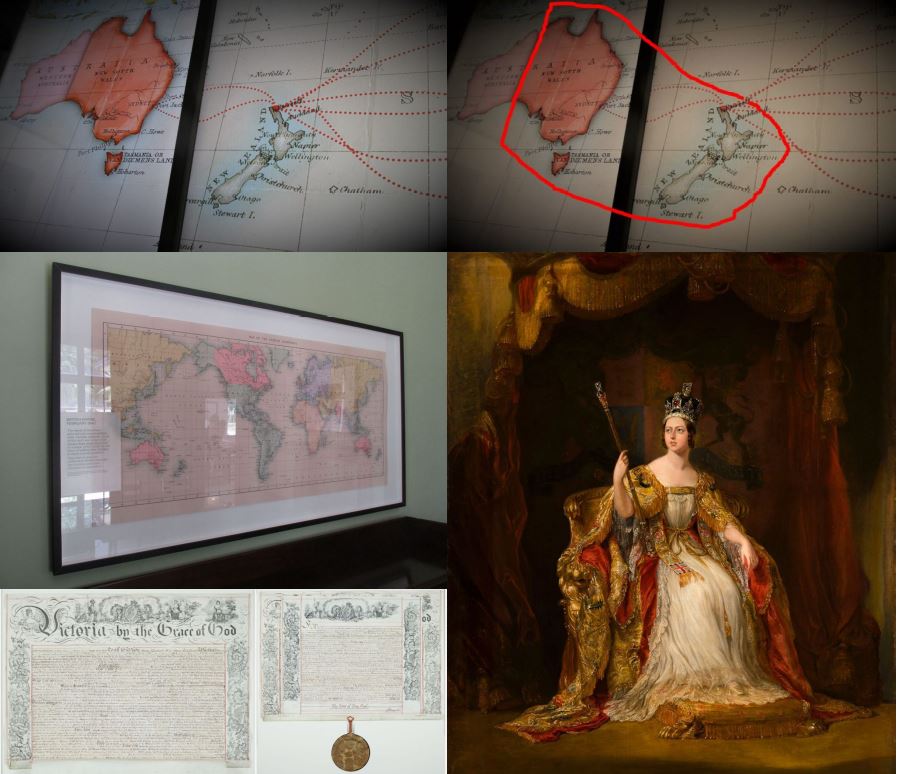
Ironically, sovereignty was stealthily swindled with theater for the British Crown, which at that time was headed by Queen Victoria, meaning New Zealand was metaphorically added to the monarch’s imperial pink bits.
Key Finding: The Waitangi Treaty was a theatrical production whose object as a literary device was designed to distract from the Colonial Law Track. The 1840 compact was, in fact, a red herring mechanism intended to sponsor logically fallacious arguments to divide and defeat. The purpose was to lead its audience to a false conclusion, whom would not comprehend the Waitangi Treaty Theater was, in effect, a simulation produced to create a copy of reality to eventually forge subject race pacification through stealth, swindle and struggle.

C-Word Avoidance: Historian Obtuseness to Call a Swindle a Conspiracy
The British Monarch’s Royal Seal of November 16th 1840 to erect New Zealand as a colony of the British Empire, proves that signatures from half the country, that of Te Wai Pounamu (later, imaginatively called the South Island) and most of the interior territories of Te Ika a Māui (later, imaginatively called the North Island), were not considered necessary.
Rather, the Signature Tour Rituals were an expedient performance in the face-saving theater that served malign purposes to accumulate another territory for the British Masonic Empire, headed as it was by Queen Victoria, as a possession of the Royal Monarch and all her heirs.
The Discovery Doctrine stipulated that ‘savage natives’ lacked full sovereign political rights, and therefore those political rights could be diminished incrementally with time, cunning and the implementation of the Doctrine’s elements. Meanwhile, judiciaries treated treaties between a European power and aboriginal and indigenous peoples as invalid. Therefore, the British Monarch’s Royal Seal was necessary to ensure that no one in the British Establishment, including the judiciary, questioned the British Crown’s sovereign claim over New Zealand.
Moreover, the 1835 ‘Declaration of Independence’ was a British-led construction to game he tangata o whenua of New Zealand by creating the appearance of a sovereign nation capable of treaty making, to set up Māori for subsequent deconstruction of their sovereign powers and authority – by stealth.
In spite of the 1840 Waitangi Treaty’s pretensions in the preamble that Queen Victoria (of the House of Saxe-Coburg and Gotha) was evidently anxious to protect the chiefs and the inhabitants of New Zealand from evil, the systematic parallel track screams loud, clear and for all time, of an exquisitely evil imperial take-over stratagem. Indeed, Lord Normanby’s Instructions to Captain Hobson on 14 August 1839 to construct the extenuating circumstances justifying his Treaty-making mission were written to save face for both the British Parliament and the British Monarch.
As Foden pointed out, treaties between a European Power and an indigenous people could only make it through the courtroom hoop, if a judiciary could be convinced that the particular circumstances were justified. Because there was an obvious unseemly haste and a parallel track of Colonial Law instruments, the pretense of concern for the Aborigines of New Zealand in the preamble would surely have been rather obvious to a bench of judges that an exquisite piece of theatre had been deployed with props of paper, pens and presents to persuade Māori to happily, generously and unreservedly give away their sovereignty forever to a Germanic Queen who had come to England just three years prior, and whom they had never met.
A learned bench of judges would also surely have seen the Waitangi Treaty Tour left little time to consult, reflect or propose counter-solutions, among a people unaccustomed with the entanglements of European laws, written words and the acceptance of presents. The involvement of Māori in the construction of drafts was precluded by detectable exclusionary blackballing stratagem authorized by Lord Normanby’s instructions to Captain Hobson. Specifically, Captain Hobson was directed to commandeer the assistance of the Protestant missionaries as “powerful auxiliaries” in his mission to persuade the chiefs to sign. The head of the Church of England was Queen Victoria, after all.
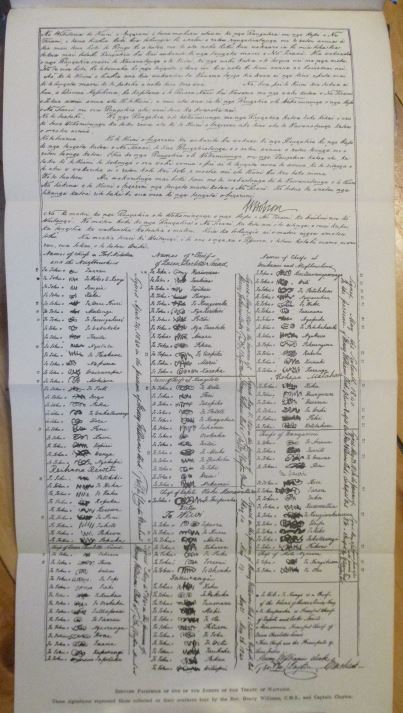
For the most part, consultation, let alone negotiation, with rangatira who lived among the heavily feathered and highly roastable moa in the interiors was forestalled or forgone, because it would have been counter to the Treaty Theatre’s linchpin strategy: the weaponization of time.
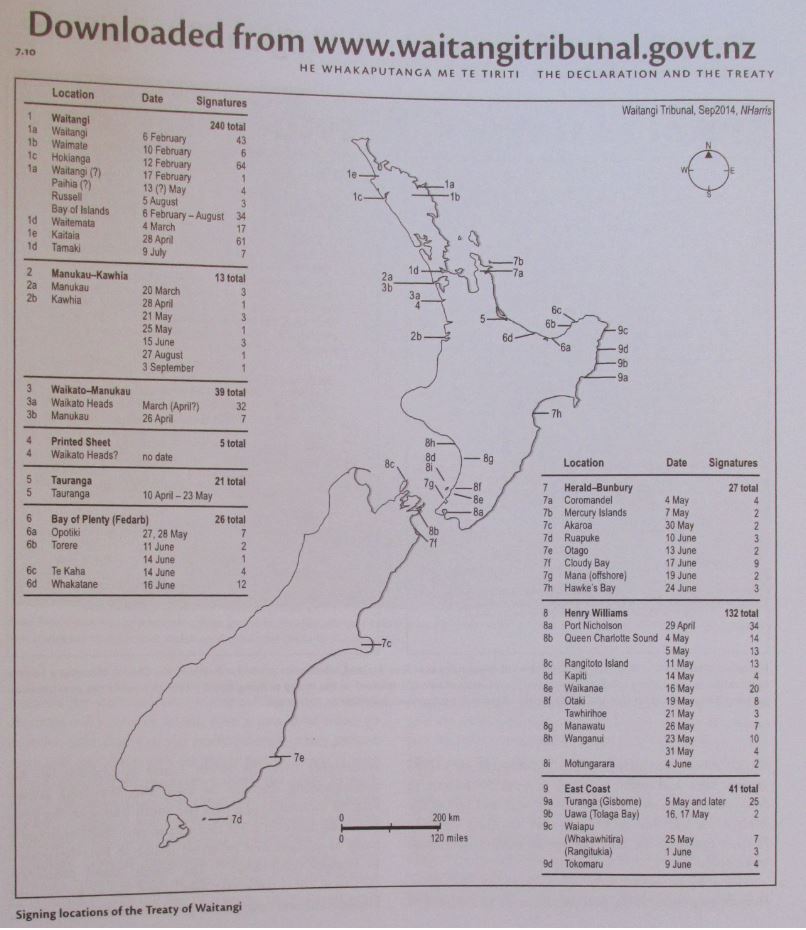
Even without being aware that the Treaty spun on the innovative fulcrum of deceptive translation differences, the Treaty would have been deemed null and void in English courts. This ‘dead in the water’ result for any treaty claiming full sovereignty over entire aboriginal and indigenous peoples, is precisely why new Colonial Law Track was laid with Queen Victoria’s authorization of June 15th 1839 that joined up the Colonial Law Track first laid by Captain Cook in 1769 and 1770. That Colonial Law Track intersected at Waitangi in 1840 with the Treaty Theater Track that Busby envisaged in 1831, and had advanced with his appointment as the British Masonic Empire’s first official stationed in New Zealand. Even though Busby wouldn’t have known its eventual timetable and journey, the commissioning of Busby in 1832 for the job of British Resident demonstrates the British State’s dexterity, or nibble fleet-footedness, to recombine cunning ideas to improvise or script new plays from its Imperial Bag of Tricks.
The innovation of the two trick-laden language versions of the 1840 Waitangi Treaty to gain sovereignty over an entire ‘nation’ meant that, in essence, the parchments were spun on a fulcrum that pivoted upon deceptively-crafted translation differences in the texts. By this swindle, a territory the size of Great Britain was gained on the cheap with presents, persuasion and unseemly post-haste. Had the Treaty Cliqué fully disclosed to Māori that they sought to drastically diminish their mana, accumulate their hapū political structures into tribal units for later de-tribalization and transfer their tino rangatiratanga to Queen Victoria, the Treaty Cliqué’s heads would likely have been skewered on sticks at someplace and sometime before autumn of 1840. Therefore, the fulcrum of deceptive translation differences in the 1840 Waitangi Treaty texts worked to hide the omissions of intent, imperial context, and history.
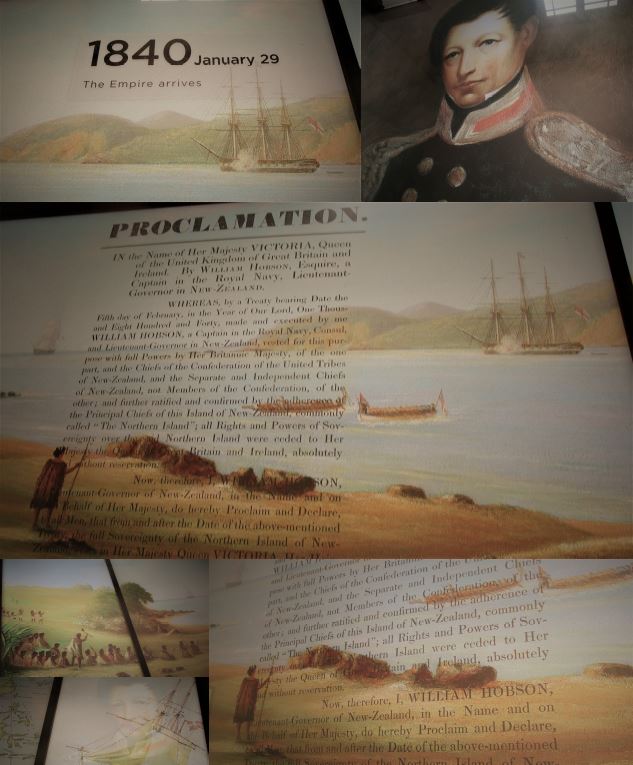
The circumstances, language translation differences and deceptive roles of the Treaty Cliqué were, in fact, the praxis of the Doctrine of Discovery, forged during the Crusades between 1096 and 1271 to justify taking the Muslim-controlled ‘Holy Lands’, and reworked in the 15th Century between the European Maritime Powers to extinguish aboriginal and indigenous sovereignty and property rights. This European international law had been designed, agreed and re-negotiated between the European Maritime Powers on rules, rituals and rights for establishing territorial claims in the ‘New World’ to mitigate Europe’s empires fighting one another, while they gained territory off aboriginal and indigenous peoples by swindle, stealth and struggle.
For their part, the British settlers — which included British Protestant missionaries from 1814, and as well as British Resident James Busby, who was officially-appointed in 1832 — together played Māori for time with a series of moves that were, in effect, Discovery Rituals calculated to incrementally wrest sovereignty from Māori without ‘the natives’ fully understanding how exactly it had occurred. This included gaining large parcels of land on a scale comparable to the aristocratic feudal estates in Britain. Displaced chiefs thought they were granting land-use rights to share the territorial resources akin to a rent payment for a lease, rather than a poultry payment for eternal exploitation, exclusion and enjoyment. The beneficiaries of these stealthy land transfers included a former Royal Navy lieutenant appointed as Anglican missionary to the Bay of Islands, Reverend Henry Williams, who along with his Cambridge-educated brother William, worked busily from the time of arrival in 1823 and into 1830s, saving savage souls and acquiring an 11,000-acre estate in Northland.
By swindle and stealth, the Protestant missionaries had gained a foothold while feigning to be friends with ‘the natives’. Furthermore, their participation in moves to coax Māori to participate in signing the 1831 Letter to King William IV asking for his protection, which made it seem like the act was more an expression of their agency, were part of a deception that fused Christianity with the retarded, class-based development inbuilt into white supremacist British Masonic Civilization, which was programmed to sabotage independent aboriginal and indigenous communities. The 1831 Letter to King William IV was a trick to invite British Officials to begin an incremental takeover that would buy time before the major chess pieces were required to put-down the inevitable ‘rebellions’ of yet another ‘savage’ race.
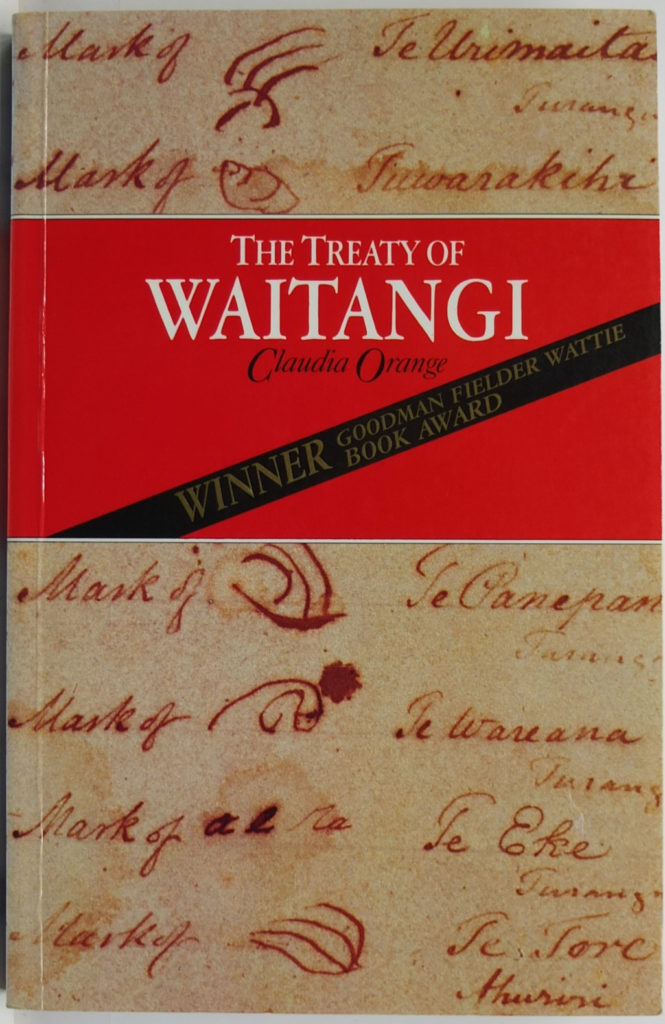
In this view, Chief Makoare Taonui deftly grasped the British game play at Mangungu, Hokianga at a Treaty Signing Ritual on 12 February 1840, where 56 chiefs signed after a full days’ debate and decisive assurances from Protestant missionaries that the Treaty would be positive for Māori. Taonui — who had been aboard the Hokianga-built barque, Sir George Murray, when it was seized at Port Jackson in 1830 — pointed out that the British Crown had sought by stealth to gradually solidify its position in New Zealand. First, through the presence of the Protestant missionaries, then official British Resident James Busby’s initiative to entice the Māori chiefs to choose a national flag for Māori shipping on 20 March 1834, and also pacification through gift-giving and then the arrival of Royal Navy Captain William Hobson (1792-1842), as Dame Claudia Orange stated in her seminal 1987 book, The Treaty of Waitangi. In other words, these Discovery Doctrine rituals were anchoring new norms to draw the Māori chiefs incrementally into the British Empire’s jurisdiction.
“Ostriches … are not merely careless birds.”
Chief Taonui was conscious of the importance of the written being recorded, when as requested Hobson’s speech be committed to paper. Hobson evasive reply that written copies of the Te Titiri o Waitangi would be printed and distributed, was a screening action to sponsor subsequent ‘unwitting misdeeds’. Historians Claudia Orange and James Belich have placed emphasis on the oral deliberations, since discussion was the key mechanism for communicating Māori customary law. The Waitangi Tribunal quoted Belich, who wrote in Making Peoples, the ‘historical treaty’ were oral transactions:
“among chiefs, as well as between them and those speaking for the Governor, which must have varied from treaty meeting to treaty meeting.”
In effect, these poorly recorded oral ‘sweet nothing’ promises were spun on a pivot that flung the spoken word into the whirlpool detected by Prophet Papahurihia, where they would either be preserved by local hapū, or family groups, in their oral histories. Or, they were recorded and sent to London and Sydney in the dispatches, or later published in dispersed accounts of colonists.
Importantly, most historians, legal scholars and Treaty teachers fail to see the spike in Discovery Rituals in the form of proclamations, legislation and letters patent produced between the June 15th 1839 boundary extension of New South Wales and through to May 3rd 1841 — when Captain Hobson declared himself Governor and Commander-in-Chief of the colony — as the crucial parallel Colonial Law Track to the Treaty Theater Track. These legal moves as expressions of the Discovery Doctrine were the real mechanisms to transform Actual Occupancy and Current Possession into European Title.
At times, those moves were accompanied by Discovery Rituals, such as the occasion when Captain Hobson declared himself Lieutenant-Governor in the Anglican Christ Church chapel, in Kororāreka, by reading a Proclamation on January 30th 1840 before 300 settlers and 100 Māori. That assertion of power was claimed by fact of British settlement at Kororāreka, as well as Protestant missionary land purchases and the establishment of buildings such as churches in the Bay of Islands. And also, it would seem, the first land confiscation at Puketona, that Busby had claimed in name of King George IV in March 1835, seven months before the Northern Alliance chiefs proclaimed their independence.
The premiere performance of the Treaty Theater was also a Discovery Ritual. The flags at Busby’s Waitangi property, surrounding the scene of parchment props, quill and ink, were graphic symbols of theater to pull-off a heist of sovereignty in broad daylight. The improvised acting by the Treaty Cliqué as they dueled in words, gesture and facial expressions with the British Masonic Empire’s latest aboriginal and indigenous prey at this flaggy scene were active symbols of two cultures performing to the norms of their respective cultures. A duplicitous performance of Europeans was practiced in the sense that characters were improvising in what they knew to be set-pieces orchestrated from afar to achieve one over-riding objective on an uneven playing field: wrest paper sovereignty by deceptive theatrics.
As the late-executive director of the Flag Research Center in Winchester, Massachusetts, Dr. Whitney Smith (1940-2016), stated in his exquisitely executed 1975 book, Flags through the Ages and Across the World — the most potent symbols are those which simultaneously combine all four groups of symbols of a given symbol system. These are: active, verbal, concrete and graphic symbols.

Since the flaggy scene took place at Busby’s Waitangi property where the Te Kaha flag had been selected in 1834 and the ‘Declaration of Independence’ was signed in 1835, the British Resident’s house had become a concrete symbol with historical significance. Captain Hobson’s performance of the line, “He iwi tahi tatou” (“We are all one people”), after each signer had made a mark on the Treaty parchment, was a verbal symbol designed to emotionally hijack the rangatira into group-think submission.
Thus, amid the flags acting as graphic symbols of theater, the heist of sovereignty in broad daylight was most potent since the swindle occurred in the presence of Busby’s whare acting as a concrete symbol of the selection of Te Kaha flag in 1834 and the signing of the ‘Declaration of Independence’ on land Busby swindled in 1833. Moreover, despite the more colorful duel of words, gesture and facial expressions coming from Māori, their earnestness was mirrored by the volte-faced performances from the British side, and the reticence of the French Catholic missionaries and as well as Americans present, to spell out the true objective of the proceedings.
In spite of the clanker moments, the Treaty Cliqué’s improvised acting capitalized on the uneven playing field that underpinned the power relations between the two cultures. The act of the participants performing to the norms of their respective cultures rendered the duel of wits as active symbols of an historic day that comprised one of the Treaty Clustered Events. Those clustered events resulted in Māori being sucked into the whirlpool conjured from afar by Masonic Imperial alchemy and detected by Prophet Papahurihia after the Waitangi signings.
The 21-gun salute ordered by Captain Hobson on February 8th 1840 to mark the claimed cession by Treaty of northern New Zealand was another active symbol, and marked the assertion of European Title in accordance with the unspoken Discovery Doctrine.
Whereas, Hobson’s declaration of sovereignty over the South Island and Stewart Island on the grounds of discovery, proves that the parallel track pushed forward was done so in accordance with brutal exercise of international law, colonial law and English constitutional law — and were consistent with the Discovery Doctrine.
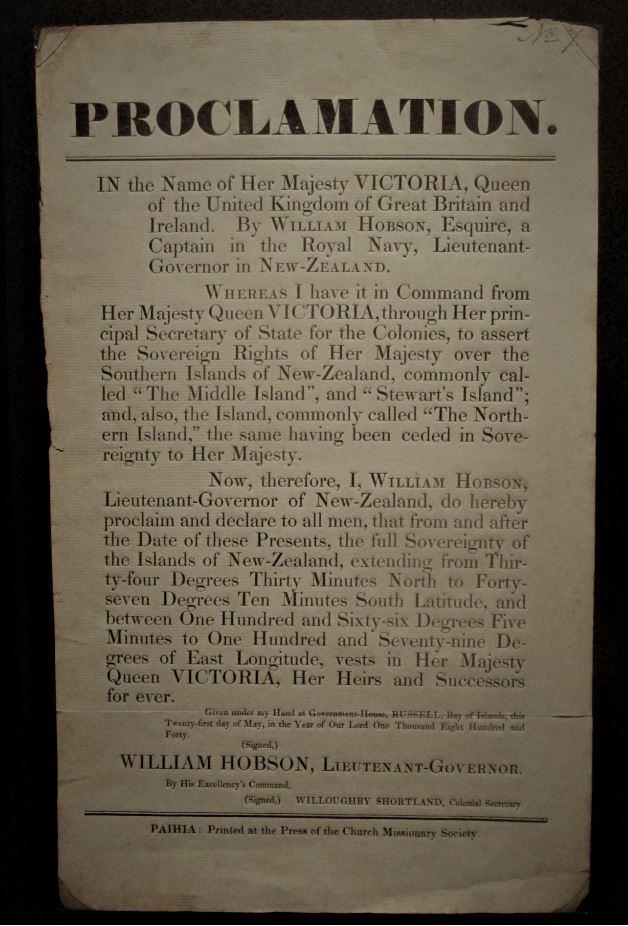
Because those legal mechanisms were laying the parallel track to forge a colony out of independent Māori nations, and because a treaty between a European Maritime Power and a native race would ordinarily not be accepted by the English Courts as a legitimate exercise of international law, the appearance of cession by treaty hinged upon the innovation of a native-tongue parchment. That way, the Treaty Cliqué could claim the English language version was a copy of the Māori version, thereby reversing its actual whakapapa, since the Te Tiriti o Waitangi o 1840 was a deceptive translation of the 1840 Waitangi Treaty.
With that fiction, Her Majesty could save face for herself as the ultimate sponsor of subsequent unwitting misdeeds set in motion by officials of Her Majesty’s Government by ratifying the process. Because Her Majesty had circumvented the power of Her Majesty’s Parliament to authorize or block such moves, Queen Victoria was also saving face for the British Parliament. Not even the British Parliament would over-ride the Monarch’s double-handed moves to sign off on a mission to treat with the Aboriginees of New Zealand, while simultaneously authorizing the Colonial Law Track already laid.
And — besides — God’s ‘men of the cloth’ would not deceive ‘natives’, so there was clearly nothing to see down there in the Antipodes.
In this naïve, or perhaps intentionally, obtuse view, historian Michael Belgrave emphatically stated in Historical Frictions: Maori Claims and Reinvented Histories, it was not in Reverend Henry Williams’ character to deliberately deceive the Māori chiefs.
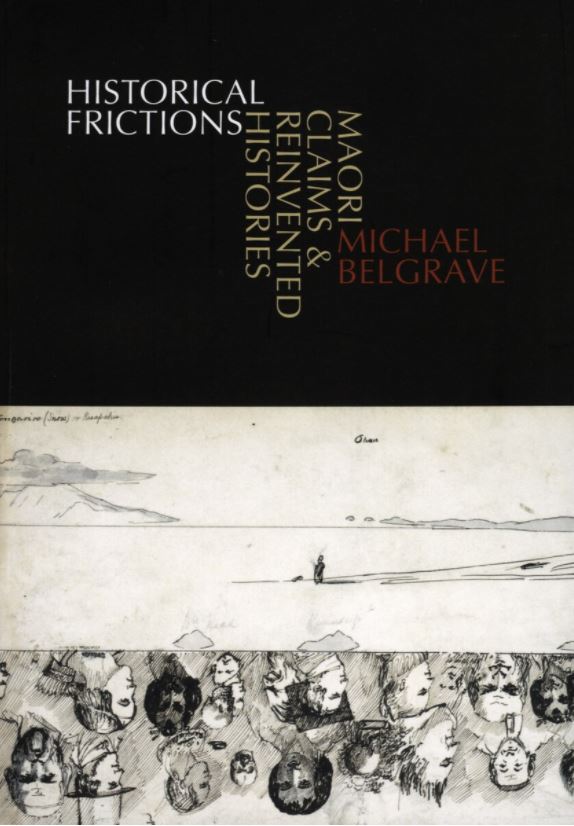
Rather ironically, Belgrave explains away Williams’ failure to use ‘mana’ and ‘rangatiratanga’ to denote sovereignty because, evidently, those words would have been “inappropriate” to describe the transference of power. The failure of Williams’ to use his words to describe the stealthy export of sovereign authority is precisely the point that scholars such as Ruth Ross, Ranginui Walker, Anne Salmond, Claudia Orange, Margaret Mutu, Moana Jackson, and Robert and Joanna Consedine have explained clearly enough.
Tellingly, when the Royal Navy Captain Hobson, as Lieutenant-Governor, proclaimed sovereignty over Te Wai Pounamu on the grounds of Cook’s discovery on 21 May 1840 — he did so before the HMS Herald and the Cook Strait treaty copies, with signatures and marks of chiefs from the Middle Island (or South Island), were returned to him. Captain Hobson moved to declare sovereignty over the entire country not simply because the Treaty sheets were taking too long to return.
Hobson panicked when he received news the same day, that the New Zealand Company settlers had declared a constitutional government at the settlement of Port Nicholson (now Wellington City), which was said to have been ratified by ‘native chiefs’ on March 2nd 1840 — as the Waitangi Tribunal noted in its October 2014 Report, “He Whakaputanga me te Tiriti: the Declaration and the Treaty”. Hobson evidently regarded the settlers moves as “high treason”. Hobson sent a dispatch to the Colonial Office in London, justifying the proclamation for sovereignty over the North Island on the grounds that there had been “the universal adherence of the native chiefs to the Treaty of Waitangi”. This universal adherence claim was untrue. Hobson asserted in his dispatch that the proclamation of sovereignty over the Southern Islands was justifiable due to his “perfect knowledge of the uncivilised state of the natives”. Ironically, Major Brunbury proclaimed sovereignty over the South Island on June 17th 1840.
Hobson’s panic left more Treaty Cliqué rabbit droppings.
The failure by many historians, legal scholars and Treaty teachers to see the 1840 Waitangi Treaty as theatre to mask the separate track set in motion with the Letter Patent to make New Zealand a dependent colony of New South Sales on June 15th 1839 — in effect, renders Captain Hobson’s move to declare sovereignty over the South Island and Stewart Island on the basis of Cook’s Discovery, as simply a curious phenomena — if it gets mentioned.
For instance, in his 2018 Waitangi: A Living Treaty historian Matthew Wright noted Captain Hobson’s May 21 1840 declaration actually claimed the North Island was ceded by treaty while the South and Stewart islands were gained by right of discovery. Wright also notes this haste declaration followed the Royal Navy captain learning of the New Zealand Company’s settlers at Port Nicholson, whom gained chiefly signatures for their written constitution.
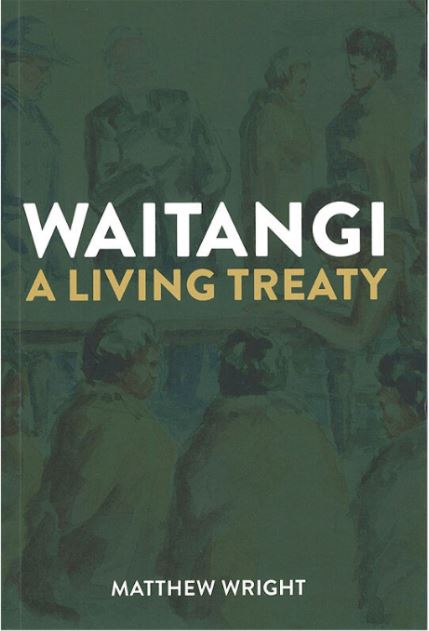
However, Wright downplays Hobson’s grounds of discovery claim over the South Island and Stewart Island by stating “in some ways it made no great difference because, in general, Major Thomas Brunbury’s efforts aboard the HMS Herald to gain signatures from South Island chiefs “were dismal”. Because Wright failed to locate his Waitangi: A Living Treaty in the Discovery Doctrine, he failed to correctly identify the phenomena he was examining. If he had, he would have realized that Captain Hobson claiming sovereignty over the Southern Islands on the basis of Cook’s Discovery was, in effect, the key post-Waitangi clanker ‘Man Behind the Curtain’ moment that we can see clearly now — forever.
This clanker ‘Man Behind the Curtain’ moment reveals the parallel Colonial Law Track that activated the Discovery Doctrine’s element of First Discovery and stretched the settlement element of Actual Occupancy and Current Possession out to its theoretical limits, since most of the 2000 Britons living in New Zealand at the time were located in the Far North region of Bay of Islands, near where Waitangi was located. Never mind that 70 years had passed since Captain Bro. Cook had worked out that the large body of water he viewed from Arapawa Island in Queen Charlotte Sound/Tōtaranui was actually a strait that separated the South Island/Te Wāi Pounamu from the North Island/Te Ika a Māui. That ‘discovery’ led the Freemason navigator to claim possession of Te Wāi Pounamu in the name of King George III and in the presence of Chief Topaa on nearby Motuara Island on January 31st 1770, without the rangatira comprehending what was really occurring, in spite of Tahitian navigator and interpreter, Tupaia, being present during the performance of Discovery Rituals, which included erecting the King’s flag.
Crucially, 70 years later, the Royal Navy captain’s claim that sovereignty over the South Island and Stewart islands occurred on the basis of Cook’s Discovery was also a ‘Man Behind the Curtain’ moment, because it was the unscripted scene in which Hobson tossed his copy of the Treaty Theater script over-board.
Hobson wasn’t the only one who metaphorically threw his Treaty Theater script over-board.
The son of Reverend Henry Williams, Edward, who accompanied Major Brunbury on the mission to treat around the coastlines of the Southern islands, ‘jotted the moment in his diary’ when the crew of HMS Herald took possession of Stewart Island, by right of Cook’s discovery. Wright recounts:
“… after the men had had their dinner, the officers, and some of the ship’s company, together with the marines, went on shore, and after the proclamation was read and the flag hoisted, the marines fired a feu de joie’ (‘fire of joy’ salute), after which we gave three cheers to the Queen … when the ceremony was over, we rambled about the bush till three o’clock, and then returned on board … ”
Wright goes on to say that on June 10th 1840, Brunbury sailed to nearby Ruapuke Island where they gained the signature of Chief Tuhawaiki, who was evidently dressed like a British Aide de Camp (or batman to an official, aristocrat or royalty), whom had just returned from Sydney. But, because Wright’s book, Waitangi: A Living Treaty, is not located in the Discovery Doctrine, nor power crime theory, nor the revolutionary dynamic model, his readers were not really enlightened to what was really going on.
With the commonplace tardiness of so many New Zealand Pākekā historians, Wright said that with a little over a dozen signatures for the entire South Island (which is roughly 58,000 square miles), Major Brunbury declared ‘cession of the Middle Island was completed’ and that he made this declaration of sovereignty across the South Island — unaware of Hobson’s proclamations made five weeks earlier.
And because Wright – like the Waitangi Tribunal and many others, failed to model the British takeover as a crime of power involving deceptive tricks, stratagems and devices — he also failed to detect, code and categorize the phenomena as proofs of conspiracy complete with contrived ignorance screening actions and unwitting misdeeds working as a unitary whole, as a robustly modelled study located in power crime theory would prove. For instance, the journal record of Edward Williams, who co-drafted with his father the Māori text translation from Busby’s English language draft of the Waitangi Treaty, is rife with an account of Discovery possession rituals as active symbols of sovereignty performed on Stewart Island, in the absence of any Māori.
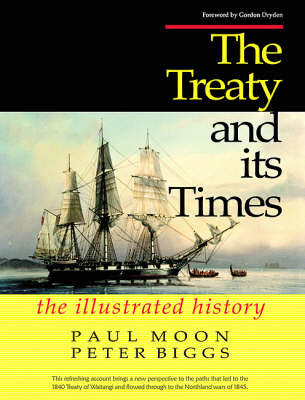
In The Treaty and its Times, Paul Moon and Peter Biggs printed Hobson’s proclamation claiming sovereignty over the Southern islands of New Zealand “on the grounds of Discovery”, by Proclamation on May 21 1840, as well as the same printed in the Great Britain’s Parliamentary Papers. Despite taking Hobson’s phraseology to devote an entire chapter, “On the Grounds of Discovery: Proclamations of Sovereignty”, Moon and Biggs curiously claimed in the previous chapter, “Is the Land Not Gone Already: The Treaty of Waitangi”, that New Zealand could not be annexed by right of discovery. To pull off this feat in intellectual gymnastics, or Orwellian Doublethink, they forgo performing scholastic due diligence by failing to properly research the ‘Terra Nullis’ phenomena that they misspelled, while they mentioned the doctrine in passing as ‘a land without people’.
Yet, as the authors of Political Theory and the Rights of Indigenous Peoples, stated, terra nullius was adapted from terra nullus by the European Maritime Powers to claim territories of the ‘New World’ already occupied by aboriginal and indigenous inhabitants.
To re-iterate for the benefit of obtuse Pākehā historians, such aboriginal and indigenous peoples were considered to lack full political rights because they were not Christians busy cutting vast swathes of forests for sheep and cattle to graze, and by extension, failing to slaughter whales and seals to the brink of extinction to gas-light cities, and therefore they were deemed too ‘primitive’ to be considered properly ‘sovereign’.
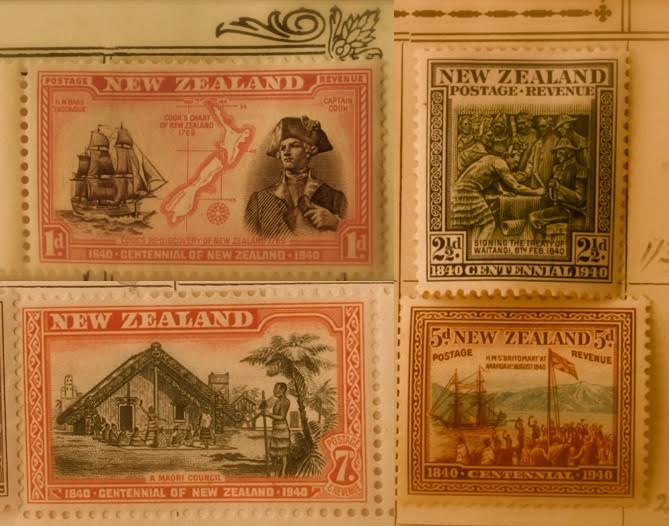
European legal scholars from covetous European nations reworked the Vatican Empire’s terra nullius doctrine determining they could also gain property and sovereign rights over ‘undiscovered’ lands and also aboriginal and indigenous peoples upon First Discovery, in territories claimed by a European Catholic Power such as Spain or Portugal.
However, since the titles were considered incomplete even if the European nation took possession on paper, the performance of discovery rituals such as raising flags and claiming the territory for a royal or papal monarch was required and recorded in personal diaries, ship journals and dispatched deeds. However, a European Title could only be produced from First Discovery if the European country occupied and possessed their newly found lands within a reasonable period, to complete the annexed title. This often occurred by fort building and establishing settlements.
As Miller wrote in his paper The International Law of Colonialism: A Comparative Analysis, presented at The Future of International Law in Indigenous Affairs in 2012, that terra nullius element of the Discovery Doctrine not only meant lands possessed by no one. Terra nullius also referred to inhabitants lands deemed vacant or waste whenua because Europeans either refused to recognize aboriginal and indigenous forms of land use, customary rights and complex subtle relationships with the whenua. Professor Miller stated that Europeans were very radical and inconsistent in their justifications for applying terra nullius to indigenous occupied lands.
The strength of Robert Miller’s and Jacinta Ruru’s comparative analysis of the Discovery Doctrine’s application to gain control over indigenous tribes in the United States and New Zealand, is that the pattern of the 10 identified elements emerge as evidence of the stealth in play for the acquisition of territories in what became the United States, and also in the South Pacific archipelago.
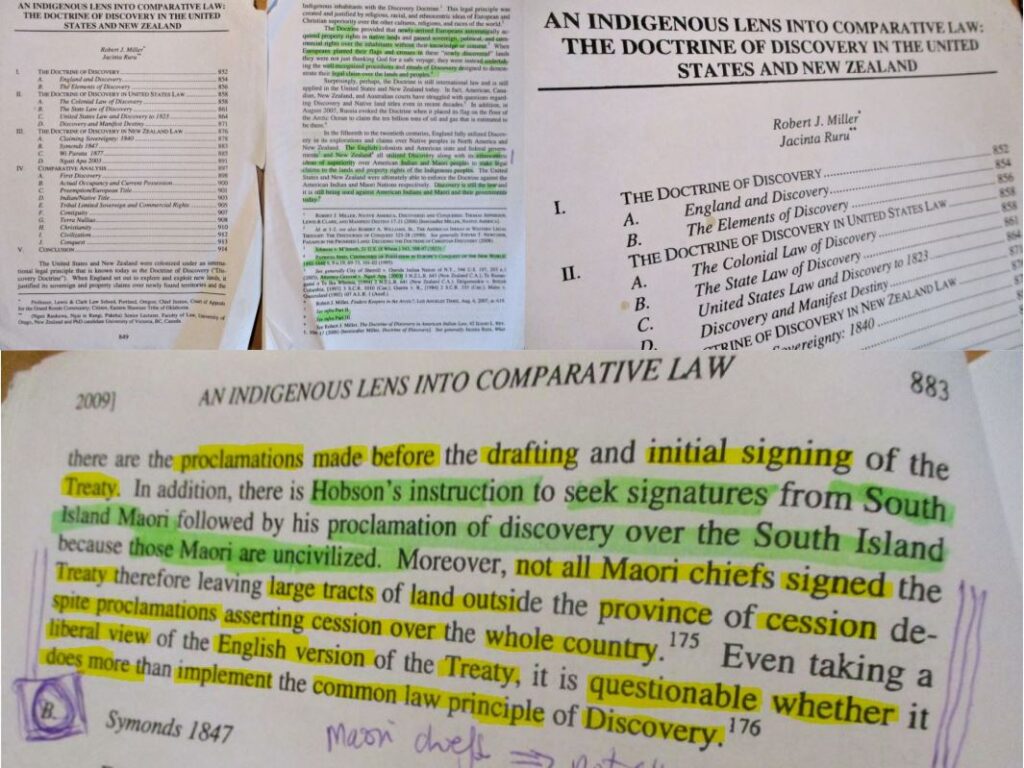
In the New Zealand context, the stealthy legal moves ‘pushed forward’ that were identified by Norman Arthur Foden — in 1938 and 1965 — and that have been named by Steve ‘Snoopman’ Edwards as the ‘Colonial Law Track’, as well as new field studies that draw out old anecdotes, and events recounted by historians, can now be coded as stealthy expressions of the Discovery Doctrine.
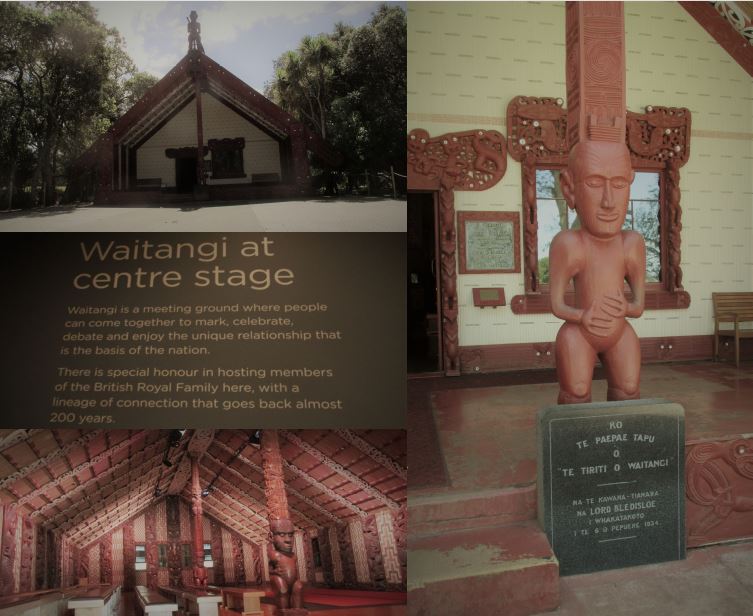
The obtuseness of historians to comprehend this parallel track is remarkable.
Richard Hill’s Policing the Colonial Frontier appears to be one of a few historians outside of the sub-field of ‘legal history’ whom has cited Foden’s work. In his 1985 paper, “The Annexation of New Zealand to New South Wales in 1840: What of the Treaty of Waitangi?”, David Williams cites Foden, noting “no doubt that Foden is correct in pointing to the Letters Patent as the fons et origo (or source and origin) of British sovereignty”. David Williams, who is descended from one of leading culprits behind the ‘myth of cession’, Reverend Henry Williams, added:
“If this treaty-signing process really was considered to be the key to the British acquisition of sovereignty, then one would have thought that the legal steps to confirm the cession could not have commenced until the imperial authorities had approved the Despatch of 25 October, and that was not until 30 March 1841.”
Ruling class Pakeha in the mid-1980s emphasized ‘harmonious race relations’, which was comfortably reinforced by Maori willingly ceding sovereignty in 1840 by signing the Treaty of Waitangi. Therefore, Williams correctly saw in emphasizing the origin and source of British sovereignty lay with the Letters Patent of Boundary Extension of June 15th 1839, that the governing class of New Zealand doubtless felt awkward. With such clarity, the ‘humanitarianism’ and ‘idealism’ ideology that was claimed to have permeated the development of the New Zealand colony, would be eliminated — if it gained sufficient traction. David Williams went on to state that the British Crown’s Proclamations of sovereignty over New Zealand in the London Gazette, dated 2 October 1840, put other European powers on notice that Britain had unequivocally “claimed the entire territory of New Zealand as a dependency of the British colony of New South Wales.”
The glaring duplicity of James Stephen, was decisively called out by David Williams in 1985, when he wrote:
“as late as 28 December 1842 Stephen is on record, when writing to a Parliamentary Under-Secretary, insisting that it was: in virtue of the treaty . . . and on that basis alone Her Majesty’s title to sovereignty in New Zealand at this moment rests”.
Not surprisingly, when Foden’s work is referenced, it is siloed to a ‘minority colony state formation camp’ that, in effect, maintains colonization by stealth.
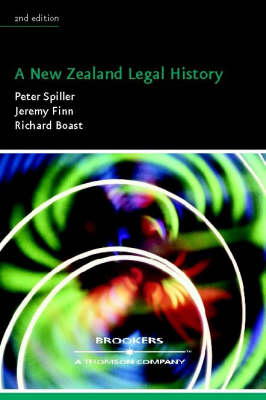
For instance, in A New Zealand Legal History, Peter Spiller, Jeremy Finn and Richard Boast do cite Foden’s two books, they incorrectly claim the country’s legal history can be divided into five periods starting with the Crown Colony government (1841-53). They acknowledge that the British originally governed New Zealand from New South Wales, and stated that the Crown’s interests were set in place by legal structures at the outset of the Colony’s history in various official pronouncements in 1839-40, the Treaty of Waitangi itself, the Letters Patent of Severance of November 16th 1840 establishing New Zealand as separate colony and New South Wales and colonial Ordinances enacted in the years 1840-42. In spite of these legal moves, they not only fail to chronicle them as a sequence of imperial chess plays along with the others I have cited, in the series on the Colonial Law Track that were either planned or were authorized as contingencies, such as the claiming of sovereignty over the South Island by right of Cook’s Discovery.
In other words, they failed to heed, or dismissed, the broad argument of Foden’s book, The Constitutional Development of New Zealand in the First Decade (1839-1849) that there were two ‘legal’ pathways forged by the Crown to gain sovereignty by paper. Spiller, Finn and Boast state that the doctrine of pre-emption underpinned all of these moves, in which “the Crown reserved to itself the right to extinguish Māori customary title to land” and noted this doctrine was written into article two of the Waitangi Treaty and found its way into statute law at the first opportunity (while conspicuously, the Treaty itself was not ratified by legislation).
Because the authors of A New Zealand Legal History failed to locate their book in the Doctrine of Discovery, and ignored Foden’s two ‘legal’ pathways thesis, the British Crown’s moves to acquire paper sovereignty over New Zealand are rendered essentially as the work of one track-laying vehicle to construct a colony without any intended deception.
Similarly, Alison Quentin-Baxter’s and Janet McLean’s ‘groundbreaking’ 2018 book, This Realm of New Zealand – which purports to be a scholarly account of how British sovereignty was gained, consolidated and evolved – let themselves off the hook when they typed, “we are conscious that this is a very bald and incomplete account of events and one told entirely from a colonial and British law perspective”. This was, in effect, an inoculation ritual, which as I stated earlier is a propaganda tactic used to acknowledge the inherent weakness of a proposal, and then quickly move on after jabbing the audience with a brainwashing immunization shot.
With this precarious caveat, Queen Victoria’s acquisition of sovereignty started with Lord Normanby’s 14 August 1839 instructions to Royal Navy Captain Hobson. By their ‘very bald and incomplete account’, their account also failed to state a date or legal instrument when they mention that the Queen had already enlarged the boundaries of New South Wales to include “… any Territory which is or may be acquired in sovereignty by Us, Our Heirs or Successors within that Group of Islands in the Pacific Ocean, commonly called New Zealand”. Quentin-Baxter and McLean also omitted the fact that when Captain Hobson claimed sovereignty over New Zealand, he included the South and Stewart islands by right of discovery.
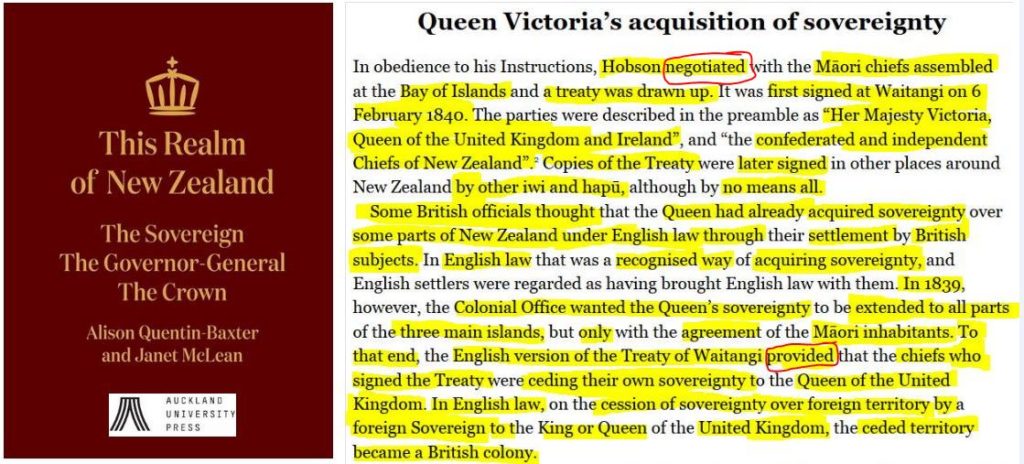
The central fiction of This Realm of New Zealand can be seen succinctly with just one paragraph appearing in the subsection, “The Queen’s Acquisition of Sovereignty” in “Chapter 2: Building the Modern Constitution”. With exquisite economy, in this work published by Auckland University Press, Quentin-Baxter and McLean wrote:
“Some British officials thought that the Queen had already acquired sovereignty over some parts of New Zealand under English law through their settlement by British subjects. In English law that was a recognised way of acquiring sovereignty, and English settlers were regarded as having brought the English law with them. In 1839, however, the Colonial Office wanted the Queen’s sovereignty to be extended to all parts of the three main islands, but only with the agreement of the Māori inhabitants. To that end, the English version of the Treaty of Waitangi provided that the chiefs who signed the treaty were ceding their own sovereignty to the Queen of the United Kingdom. In English law, on the cession of sovereignty over foreign territory by a foreign Sovereign to the King or Queen of the United Kingdom, the ceded territory became a British colony.”
Crucially, Quentin-Baxter and McLean skipped the Māori language version, Te Titiri o Waitangi. To repeat this same critical omission in a scholarly New Zealand law history book – which Norman Arthur Foden made in 1938 and 1965, before the translation deceptions became well known — actually meant Quentin-Baxter and McLean did not have to explain how it was that the Colonial Office “wanted” the Queen’s sovereignty extended to all parts of New Zealand, but only on the basis that the indigenous inhabitants agreed to cede all their sovereign rights and powers, without reservation. Quentin-Baxter and McLean circumvented the central tricky issue that the ‘Treaty Cliqué’ faced as they hawked the nine Treaty sheets around the coasts. Captain Hobson did not negotiate the Treaty with the Māori Chiefs.
The English and Māori texts of the Treaty were written without any Māori participation. Hobson, and his Colonial Secretary, the Police Magistrate, Willoughby Shortland, and other martialized Treaty hawkers, persuaded the signings, in large measure with the assistance of Protestant missionaries, especially Reverend Henry Williams, where their influence extended, as Robert Consedine stated in episode 3 of Lost in Translation: The Waitangi Sheet.
One exception to the pattern of Protestant missionary persuasion was Thomas Chapman Anglican missionary, who it seems spelt out what was at stake with the Treaty more honestly than his northern counterparts when he met with paramount chief Mananui Te Heuheu Tūkino II, of the Ngāti Tūwharetoa Confederation in the central North Island. As Paul and Joanna Consedine noted of Ranginui Walker’s observation, in their book Healing Our History: The Challenge of the Treaty of Waitangi, “Although the meaning of the Treaty was disguised by the word governance, Te Heuheu intuitively understood its true intent.” Indeed, Chief Te Heuheu of Te Arawa iwi said:
— Chief Te Heuheu Tūkino II, quoted by T. Lindsay Buick. (1914). The Treaty of Waitangi – How New Zealand became a British Colony. In: David Williams. (1985). “The Annexation of New Zealand to New South Wales in 1840: What of the Treaty of Waitangi?”
“I will never consent to the mana of a woman resting upon these islands. I myself will be a chief of these isles: therefore begone! Heed this. O ye Arawa. . . Do not consent or we will become slaves for this woman. Queen Victoria.”
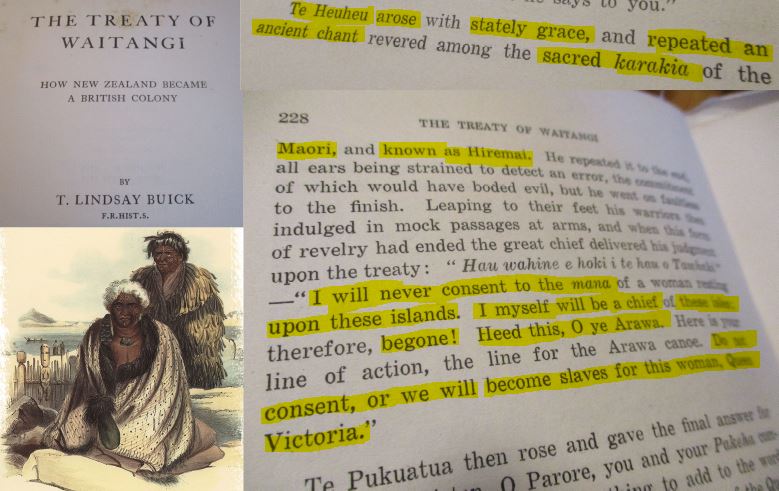
Similarly, the Waikato-Tainui paramount chief Te Wherowhero, who had signed the 1835 ‘Declaration of Independence’ refused to sign. Thus, the lack of agency in the construction of a new parchment purporting to only grant authority to Governor over Pākehā raised Te Wherowhero’s suspicion.
Whereas, in the 1835 ‘Declaration of Independence’, the 52 rangatira who signed appeared to retain sovereignty on paper even while that document, in effect, purported to create a protectorate relationship with the King. (And every historian, legal scholar and Treaty teacher knows, or should know, the extent of Māori participation in the two instruments).
It is, therefore, conspicuous that the operative verb ‘provide’ used by Quentin-Baxter and McLean in the sentence, “the English version of the Treaty of Waitangi provided that the chiefs who signed the treaty were ceding their own sovereignty to the Queen of the United Kingdom” — actually obscures the fulcrum of deliberate language translation differences on which the two versions of the Waitangi Treaty spun. It would have been more accurate to use the verb ‘construed’, since the Waitangi Treaty Cliqué were stealing sovereignty by pen, paper and presents, and providing the Treaty Chiefs, other non-signing rangatira and Māori in general with an epic swindle that contained exquisite layers of evil.
Quentin-Baxter and McLean go on to say that Hobson’s proclamations of May 21st 1840 were “instruments of annexation”. However, they let themselves off the hook about explaining the awkward contradiction of Hobson claiming sovereignty over New Zealand on the basis of cession by treaty for the North Island and by discovery over the South and Stewart islands. This omission meant they were able to state, “recent scholarship suggests that framers of the English text of the Treaty intended government over the settlers, for the protection of Māori” – without blushing. Evidently, Māori customary law and tribal governance structures were to be respected and apparently such plurality was consistent with British sovereignty.
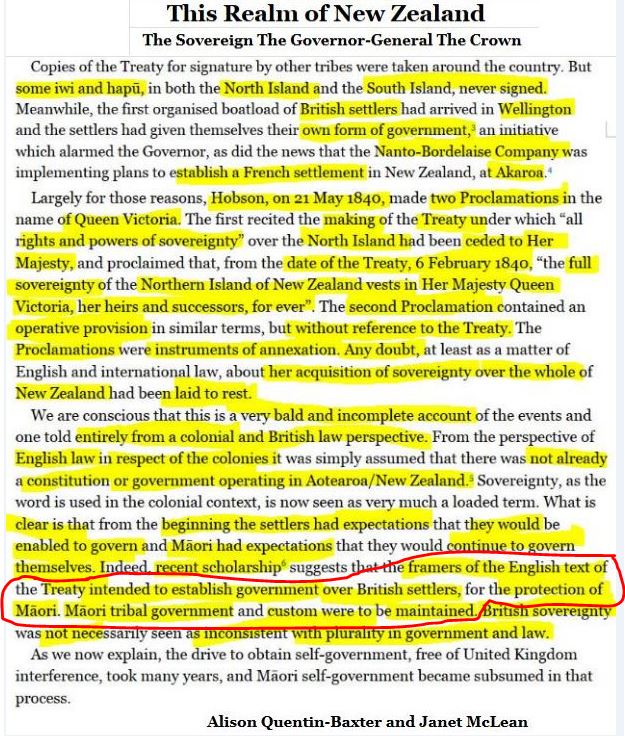
The authors of This Realm of New Zealand were at least consistent in their bunk logic. They omitted mention of the 1835 ‘Declaration of Independence’, which meant they did not have to discuss how Busby’s so-called ‘Declaration of Independence’ served to anchor a new norm for Māori — signing an international agreement. The signing chiefs did not realize the full implications of New Zealand becoming a pseudo-British Protectorate, which was an incremental step on the path to losing substantive sovereignty over the soil.
With these fictions, failings, omissions and caveats, it is not surprising that these authors of New Zealand’s legal history do not cite Norman Foden’s two books, nor do they locate their work in the Discovery Doctrine. For these reasons, This Realm of New Zealand is a faulty work that deserves to be thrown at walls by readers, ridiculed on every marae paepae and completely revised by the publisher, Auckland University Press.
After all, the Waitangi Tribunal’s 2014 report did state historian Ruth Ross’s 1972 essay Te Tiriti o Waitangi: Texts and Translations was a:
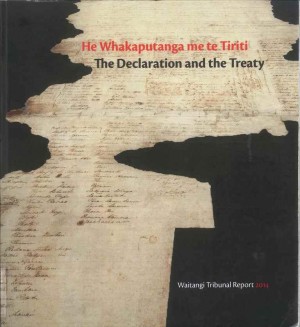
“rigourous empirical examination of the original documents [that] exposed the unquestioning acceptance of myths about the treaty by an earlier generation of scholars. And she left her contemporaries with the uncomfortable realization that a reliance on what was said in the English text alone was no longer intellectually honest.”
With an ongoing failure by many New Zealand’s historians, legal scholars and until recently, Treaty teachers, to firmly anchor their arguments in the British Crown’s stealthily sly application of the Discovery Doctrine to takeover New Zealand, it is not surprising then that the Waitangi Museum displays an edited version of Captain Hobson’s Sovereignty Proclamation of May 21 1840. This version of the Church Missionary Society-printed Proclamation, which omits the phrase “on the grounds of Discovery”, is like many artifacts in the Waitangi Treaty Grounds Museum. In fact, the collection lacks a cohesive, clearly stated position on the British takeover of New Zealand, and therefore reinforces the Myth of Cession (despite a few exhibits and an edited version of Waitangi: What Really Happened that points to the hidden agendas).
In other words, this parallel legal track to the Treaty Signature Rituals — which was first authorized by the Great Seal with Letters Patent of Boundary Extension of June 15th 1839 — became a done-deal with Her Majesty’s subsequent Royal Seal of approval by Letters Patent of Severance on November 16th 1840. At that moment, New Zealand was established as a separate colony from New South Wales with half the country claimed on grounds of Cook’s discovery, while the other half was claimed by construing treaty cession had occurred with ‘free and intelligent consent’ of rangatira.
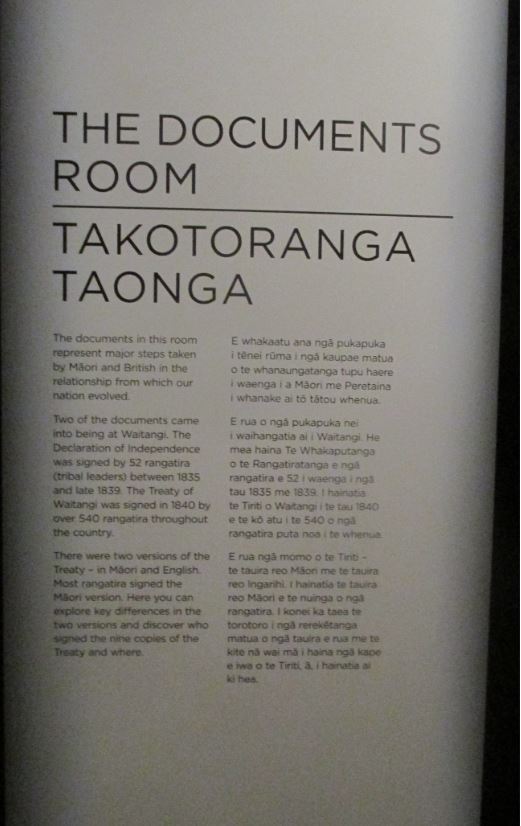
And, absent being forced to acknowledge the in-built weaponization of time to gain new three-dimensional jurisdictional space for the British Masonic Empire, as well as the two parallel tracks as applications of the Discovery Doctrine, and the key evidence withheld from Māori that could have been rectified during the four clanker moments at Waitangi on February 6th 1840 — the current monarch, Queen Elizabeth II, the new Wicked Witch of the West, and her Heir Apparent to the British Throne, Prince Charles are able to get-away with furtherance of conspiracy by carrying on the game of contrived ignorance.
That game is predicated on a structurally engineered contrived ignorance that pervades the mass populace of New Zealand, as well as the British people, who succumb to the sleeping spells and other magic tricks cast by the British Monarchy and their Establishment accomplices.
For instance, it is little known even among scholars that state formation in New Zealand had another hidden layer. As I stated previously, the primary secret mechanism by which the British Empire spread throughout the ‘New World’ was through the secret society of Freemasonry. In turn, Freemasonry was spread mostly through the military regiments, including the navy, as Jessica Harlands-Jacobs stated in her book, Builders of Empire: Freemasonry and British Imperialism, 1717-1927. Harlands-Jacobs, who accessed numerous libraries for her PhD including the British Royal Archives, found that Freemasonry merged with the British Government and the British Monarchy during the 1790s and over a period of three decades re-invented its political leanings and ideology. However, Nicholas Hagger found in his epic 2005 study, The Secret History of the West, that this merger occurred in 1717 with the establishment of British Freemasonry’s United Grand Lodge. Thus, Builders of Empire masks how, why and by whom two British Empires were layered.[60]
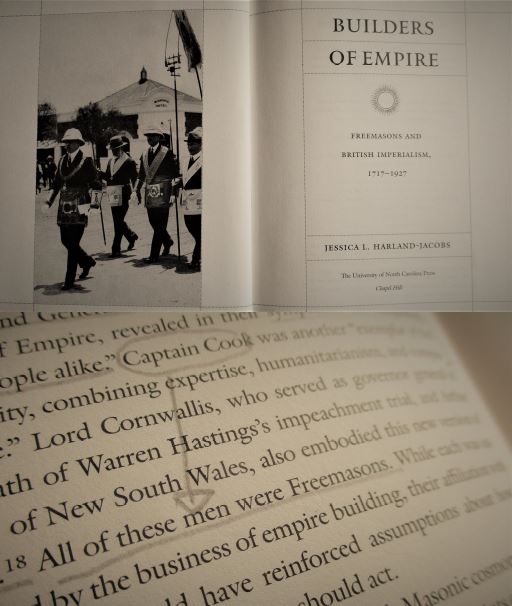
And therein lies the rub.
The British Crown’s bedtime fairy tale nation-creation myth of how and why Māori territories were taken over as a dependent British Masonic Colony of New South Wales in 1839, was deliberate subterfuge to hide how exactly the 1840 Treaty of Waitangi, and its derivative Te Tiriti o Waitangi, were constructed as deceptive Discovery Doctrine devices. Their purpose was to game Māori, to save face for the British Government, and Queen Victoria, and to trick or deter any fair-minded judges who dared to think about challenging the British Monarchy.
This fairy tale – known as the myth of cession in Treaty literature, casts Victoria of the Geulph House of Saxe Coburg & Gotha (without usually mentioning her dynastic origins) as a benevolent Queen, who was anxious to ensure evil did not befall the native Aborigines of New Zealand.
Bestowing the Native Chiefs and Tribes with ‘Her Royal Favour’ – Queen Victoria, in the English language version, very generously invited the Aborigines of New Zealand to recognize her Sovereign authority and to cede their sovereignty to Her on the justification that she could not restrain her abundant, troublesome subjects from emigrating, especially those on the independent-minded New Zealand Company’s ships. However, with their willing consent, Her agent, Captain Hobson, could establish Civil Government to check the behaviour of Her British Subjects. As a sweetener for wisely gifting the British Monarch and her heirs all the rights and powers of sovereignty forever — along with a monopoly to buy land they would willingly sell – Her Majesty would confer Māori with all the rights and privileges of British Subjects.
Whereas, Her Majesty never properly explained why would so many British Subjects want to leave if all the rights and privileges of British Subjects were so awesome. Britain, like the other European Maritime Powers, exported its problems abroad. British life was dominated by the British class system, that included the aristocracy’s hold over vast tracts of land, English Rosicrucian Freemasonry’s networked power in commerce, politics and the military, and an economy whose booms, busts and depressions were regulated by the supply of credit, through the privately-owned Bank of England.
No one bothered to explain to rangatira why a Crown monopoly over land sales was really being secured. By passing such land transactions through the Crown, native titles could be extinguished forever more rapidly, in accordance with the Doctrine of Discovery element of Preemption-European Title. Selected bi-lingual Crown agents were trained to swindle by gleaning information from Māori about whakapapa, backstories of antagonisms and customary linkages to whenua. The most ruthless Crown agent was Freemason Bro. Donald McLean, who was made Chief Land Purchasing Commissioner in 1853 by Bro. Governor George Grey in recognition of his instrumental role in duping Māori into selling 30 million acres of the South Island for the sum £13,000. As the Native Estate diminished, the substance of Māori independence, which was based on land tenure, or substantive sovereignty of the soil — dwindled too.
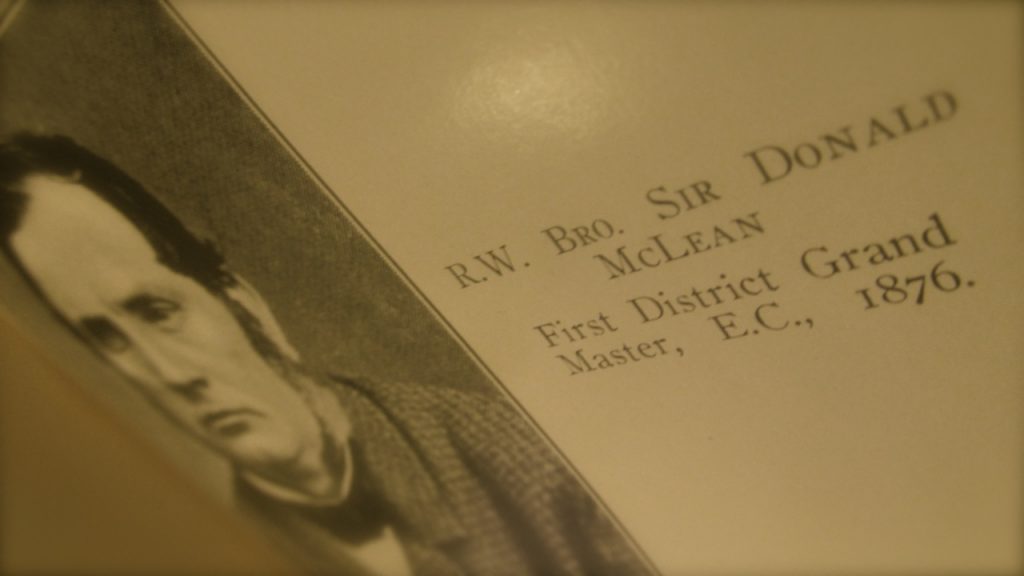
Therefore, the development of New Zealand would be retarded until Māori control over territories was upended, since such economic dynamism could not be tolerated. The House of Rothschild controlled the private-owned Bank of England, and through a network of British Masonic Bankers, the finances of Great Britain and constricted its colonies were controlled. According to historian Anthony Chaitkin in his Treason in America, this state of affairs was resolved upon when an Anglo-Swiss Banking Alliance was reached in 1815 at the Sionist Congress of Vienna at the end of the Second Hundred Years War, after the fall of Napoleon I. It was at the Congress of Vienna, that Switzerland was established as a neutral state under the protection other European countries, and Zurich was established as a Sionist financial headquarters, to oversee mercantilism, which had displaced commercial capitalism.
Indeed, the Rothschild’s tentacles reached into the troubled colony during the New Zealand Masonic Revolutionary War of 1860-72. In 1867, the Bank of New Zealand’s London agent successfully sold £464,200 in New Zealand government debentures to the merchant bank, N. M. Rothschild; an event that signaled the colony had achieved credibility, since the ‘Native troubles’ were mostly over. This sale was part of a £500,000 debenture offer and was the remainder of a £3 million loan which had been authorized by the New Zealand Loan Act of 1863 to finance the escalation of the New Zealand Masonic Revolutionary War.
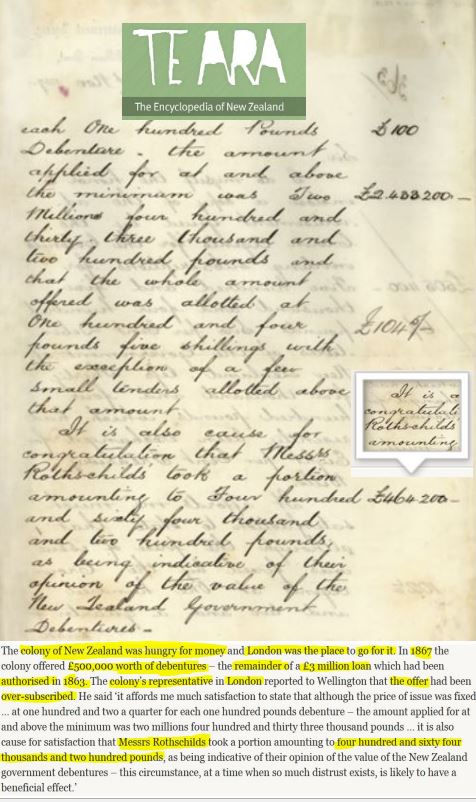
The Bank of New Zealand — which was established by another of Queen Victoria’s Royal Charters and also Colonial Government legislation in 1861 — brokered finance of £3 million from the London and Sydney money markets to escalate the New Zealand Masonic Revolutionary War, which had faltered during the First Taranaki War of 1860-1861, because Māori proved to be a more formidable foe than anticipated. The primary founder of the Bank of New Zealand, Thomas Russell, was also Minister of Colonial Defence during the Waikato War (1863-64) and a Wesleyan lay-preacher. Russell’s law firm partner in Whitaker and Russell (now Bell Gully) was Freemason Bro. Frederick Whitaker, who had set up a practice in Kororareka (later Russell) in 1840, and became Premiere of New Zealand in 1863-64 while he was also a co-investor in the BNZ.
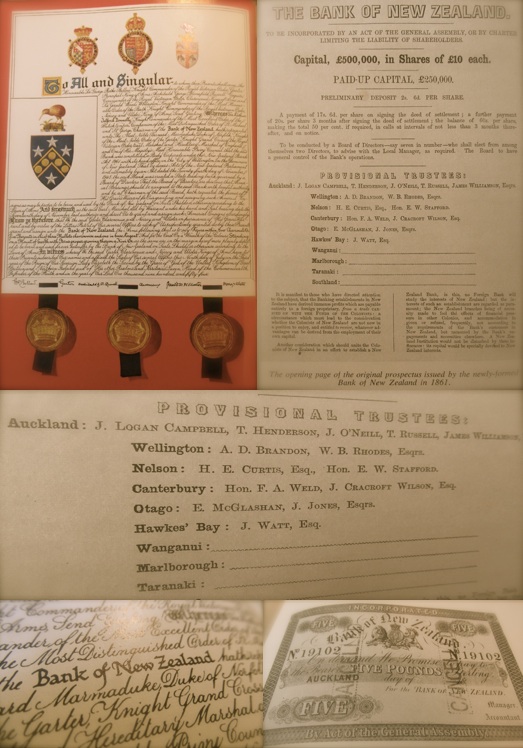
The ‘Limited Circle’ of Russell’s colonial cronies were well-connected players, as is evident in the roll of the bank’s original directors, investors and trustees. Thomas Russell’s ‘Limited Circle’ included: early investor Governor Bro. George Grey; Bro. Frederick Whitaker; three-times Premier Bro. Edward W. Stafford of Nelson; Wellington based land swindler Bro. William Barnard Rhodes; Bro. C. J. Taylor, Bro. Thomas Henderson, and Bro. A. de Bathe Brandon. The bank’s first president, James Williamson, conducted profitable business for the military commissariat department.
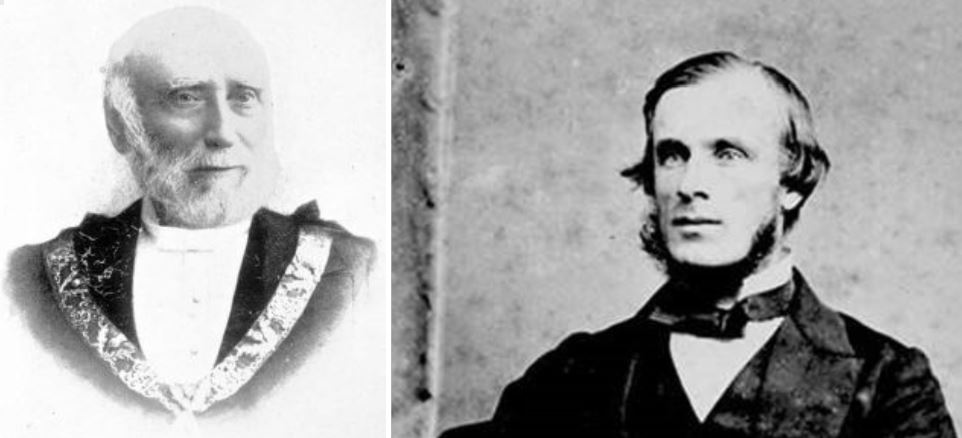
By occupying these key political positions prior to and during the Waikato War of 1863-64, the Bank of New Zealand’s primary founder Thomas Russell and his law firm partner, Freemason Bro. Frederick Whitaker, were able to drive the ‘wedge of war’ deeper with three more parliamentary acts. The Suppression of Rebellion Act of 1863 cast Māori as insurrectionists, while the New Zealand Settlement Act ‘legalized’ the establishment of military towns on confiscated land, and the New Zealand Loan Act authorized ‘borrowing’ of three million pounds from the Imperial Government to consolidate this far-flung colony of the British Masonic Empire for the Wicked Witch of the West, Queen Victoria.
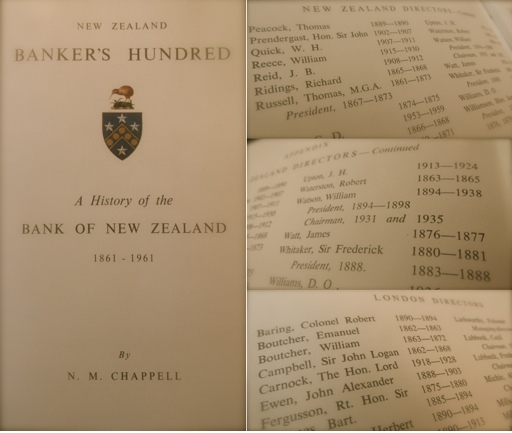
And when Thomas Russell became the Minister of Colonial Defence in 1863 while Freemason Bro. Frederick Whitaker was Premiere, New Zealand’s Colonial Parliament was like an executive branch of the Bank of New Zealand. No less than 28 shareholders and five directors of the Bank of New Zealand were in the Colonial Parliament with the founder.
Then in 1875, N. M. Rothschild loaned the New Zealand Government £4 million at 4.5% interest for Immigration and Public Works, as “A Century of Finance” recorded the London House of Rothschild’s financial vampirism — as compiled by Jules Ayer.
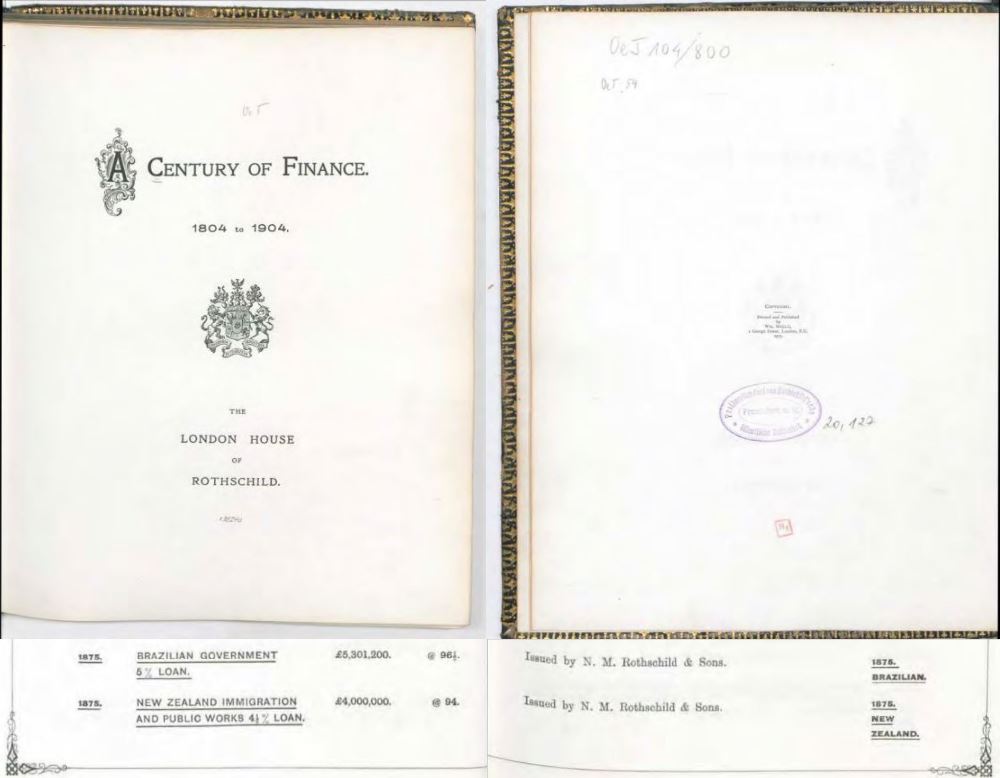
After the New Zealand Masonic Revolutionary War, Josiah Clifton Firth justified the colonists’ conspiratorial chess, saying:
“We had to conquer the country at a heavy cost of blood and treasure, but we’ve done it. We have filled the colony with villages, towns and cities.”
Firth was a director of Bank of New Zealand from 1877 to 1884.
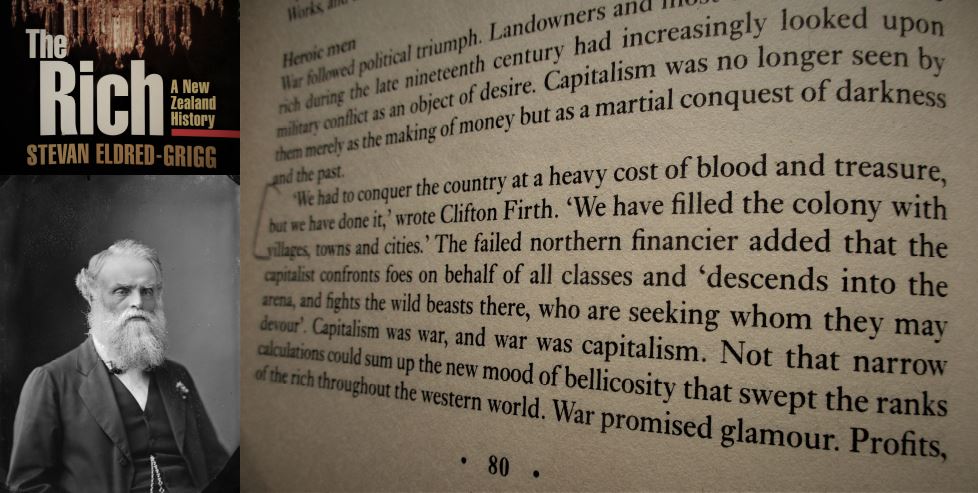
The Queen’s Royal Charter of November 16 1840 authorized the Governor to survey the whole colony of New Zealand so that it could be divided into districts, counties, boroughs, towns and parishes, with roads, bridges, schools, churches and hospitals. As Ranginui Walker noted in Struggle Without End, the Queen’s Charter of New Zealand also directed Governor Hobson to make grants of ‘waste land’ to corporate bodies for public use and or individuals for private use. Since the Charter declared all uncleared land and waste land to be Crown land, and this created a structural mechanism to pauperize Māori, since the uniform prices were abysmal.
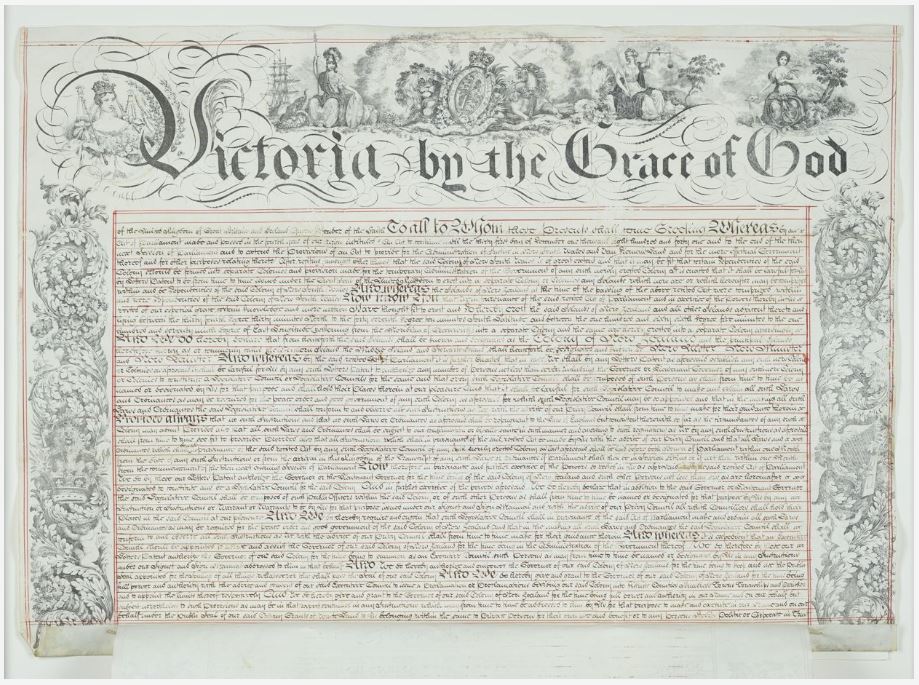
This classification of the Native Estate as ‘waste lands’ was consistent with the Terra Nullius element of the Discovery Doctrine, since it did not recognize Māori customary law which connected whakapapa (or genealogy) to the land, territorial agreements between hapū and a spiritual paradigm that did not match a monotheist religious cult that competed with the Vatican Empire’s monotheist religious cult. The Charter of 1840, and its derivative Royal Instructions of December 5th 1840 contained phrases stipulating that the rights of the indigenous inhabitants were to be upheld.
There is a Discovery Doctrine mindset present in these texts. The modus operandi to extinguish native title by taking lands deemed to be waste or uncleared and by making grants of such territories to corporate bodies or private persons, was foreshadowed in Lord Normanby’s Instructions, as well as by the 1840 Treaty of Waitangi. Therefore, such phrasing needs to be seen for the expedient purpose to expedite expropriation under the cloak of a humanitarian cover-story that helped the enterprise of empire pass the political hygiene test. Queen Victoria’s Royal Charter of November 16 1840 also authorized the establishment of a Legislative Council and an Executive Council.
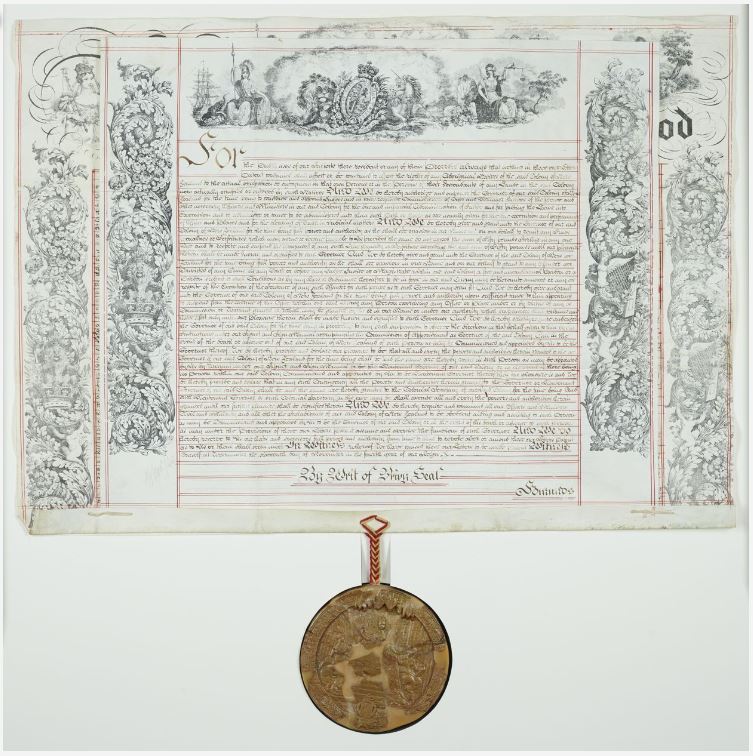
Therefore, as a compact between an imperial power and the aboriginal and indigenous peoples, one major key omission in the Waitangi Treaty were the secret mechanisms for authority, funding and design of development. The key omission, I contend, was through the secret brotherhood of Freemasonry that operated as the parallel political system, British Masonic Imperialism, to forge a British Masonic Colony with Masonic Provinces and Districts. This secret mechanism has everything to do with why officials at the Department of Internal Affairs scuttled the interplay of military history in New Zealand’s development in Ian Wards’ project in 1966.
As Ranginui Walker correctly observed in Struggle Without End, Governor George Grey was recalled for a second governorship to consolidate the colony at a time when the First Taranaki War of 1860-1861 had faltered for the colonists. Walker, however, was unaware of the hidden Masonic layer that underpinned what was, in fact, New Zealand Masonic Revolutionary War of 1860-72.
To convey a sense of the power of the Empire’s Masonic Brethren, Bro. George Grey was exalted with a crypt close to the tomb of the Duke of Wellington, in the Church of England’s St Paul’s Cathedral, which was designed by a key founder of English Freemasonry — Christopher Wren — the chief architect of London’s rebuild following the Great Fire of 1666.
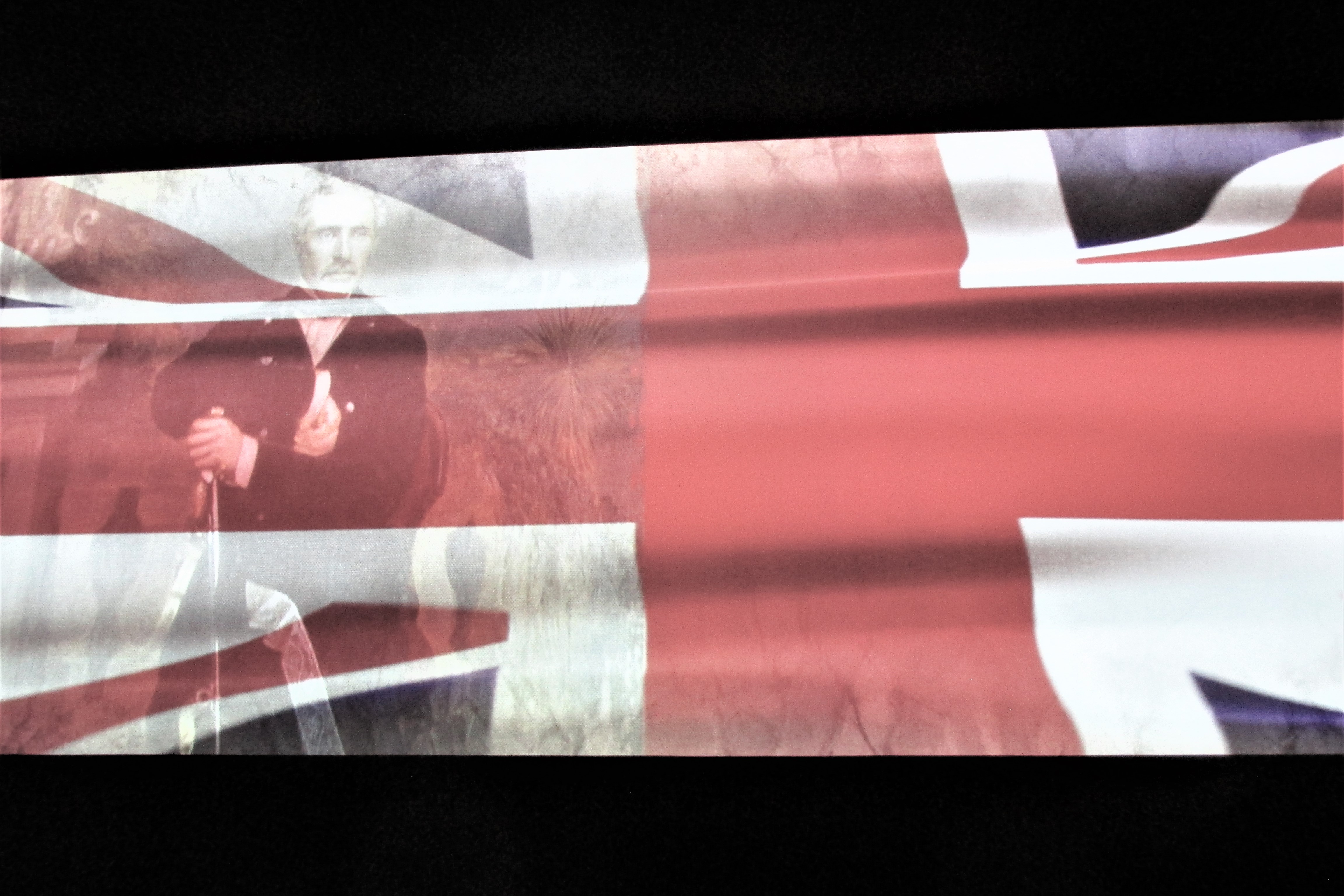
At the core of the New Zealand Masonic Revolutionary War of 1860-1872 was the establishment of a public debt-producing private banking monopoly in New Zealand that would hold the Colony to ransom, in the form of a debt enslavement system. First formalized in the ‘terrible two’ year-old Bank of New Zealand, this hidden system of public ‘borrowing’ from privately manufactured credit was run by the invisible hands of dynastic banking families of London’s Square Mile that owned the Bank of England between 1694 to 1946, and who made the ‘national debt’ the burden of the British citizens’ as ‘taxpayers’ as E. C Knuth’s 1944 book, The Empire of the City tells more generally.
The violent up-ending of the Māori social order required a destruction of the Māori communal economy, so that Māori would become increasingly landless, deprived of their capacity for free enterprise and communal trade, and coerced to work as labourers, servants and nurses, or as debt-enslaved Tax Herds like most British subjects — as the Snoopman showed in his illustrated essay, The Masonic New Zealand Wars: Freemasonry as a Secret Mechanism of Imperial Conquest During the ‘Native Troubles’.
Thus, the character ‘Dorothy’ from The Wizard of Oz was doubtless stuck in the kitchen of the Broadlands Estate mansion owned by Lord Palmerston, doing the dishes, since all historians know that every war boils down to one conflict: who will do the dishes?
After all, if there were a maid character ‘Dorothy’ in Lord Palmerston’s Broadlands mansion, she might have known too much to travel with the Treaty Cliqué. Lord Palmerston’s Broadlands family estate was the headquarters for the British Masonic Empire’s whose ‘black operations’ subverted rival powers, competing coalitions and aboriginal and indigenous peoples — as historian Anthony Chaitkin found in his epic study — Treason in America: From Aaron Burr to Averell Harriman, which track the machinations of a secret network of British-Swiss-Dutch-Venetian plotters from the American Revolution to World War II.
In light of these key omissions about the controls over ‘British Subjects’ at home, it was under the coercion of weaponized time, persuasive rhetoric and constricted context, that Māori would ‘voluntarily’ give up all the rights and powers of sovereignty — forever.
The perplexing conundrum of why exactly 39 Māori voluntarily and intelligently gave away sovereignty with full consciousness in the English language version, while 492 chiefs and 13 wahine of the total 544 signers retained their sovereignty in the Māori language version — Te Tiriti o Waitangi — have been revealed here as the result of a power crime perpetrated by the Treaty Cliqué with Queen Victoria wittingly positioning her colony-acquiring self at the apex.
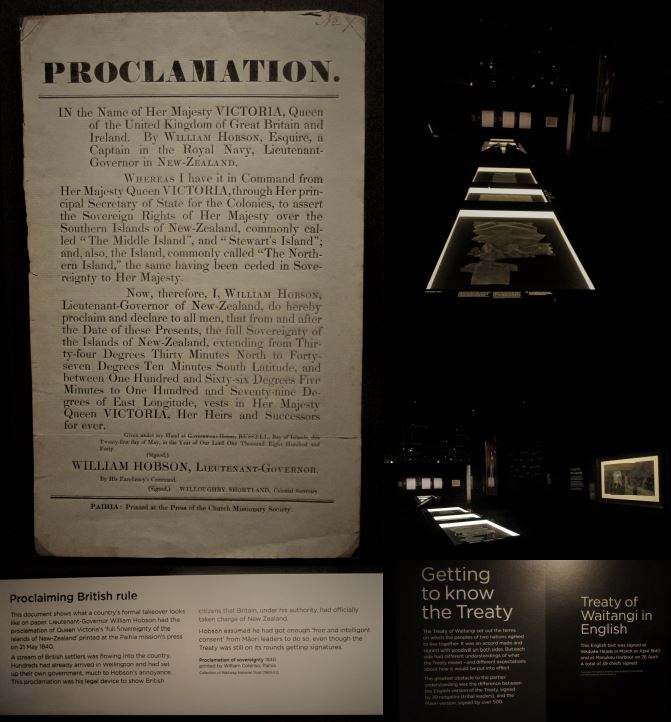
Betwixt the spiraling momentum of deception in the unfolding events of 1839 and 1840 — that were embedded with weaponized speed — the Treaty Cliqué raced toward the endgame by controlling time: capturing political space via the appearance of legitimately gaining the paper sovereignty payload.
“Ostriches … are not merely careless birds.”
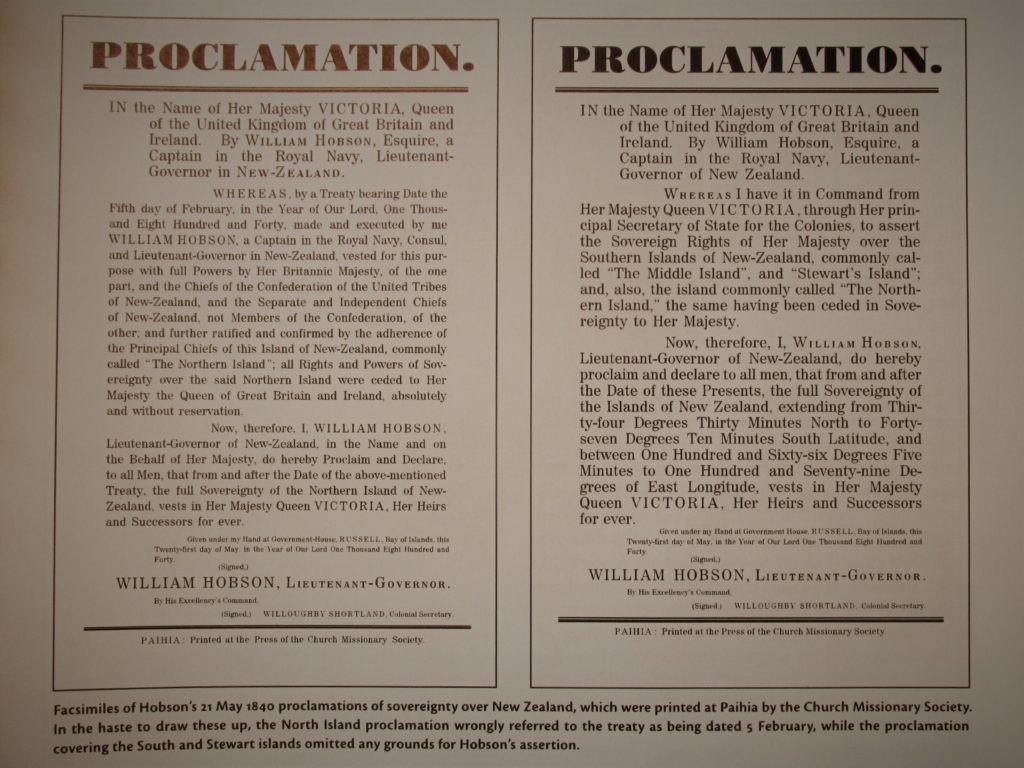
To sum up, the crime was ‘scripted’, ‘committed’ and ‘improvised’ by the hands, tongues and ‘sincere’ face-masks of the Treaty Cliqué. They failed to divulge that the 1840 Treaty and te Tiriti o Waitangi parchments were deceptive devices to advance the British Masonic Empire’s Doctrine of Discovery praxis.
The British Masonic Crown played a stealthy game of annexation to gain sovereign authority over New Zealand to seal its claims of ‘discovery’. By scheming, improvising and performing from a ‘tool-kit’ of measures and at every move deploying subterfuge, the British made in-roads to anchor new norms among a people considered uncivilized, barbarous and unworthy of full disclosure. The British Masonic Crown exploited the speed of unfolding events to win jurisdiction, thereby doubling-down to gain control over political space by weaponizing time. The British construed that its ‘Royal Hand’ has been ‘forced’ by the New Zealand Company’s outrageous move in sending three immigrant-laden ships in 1839 to gain ‘titles’ by swindle.
Yet, if the Victorian British Crown cared — as it pretended — about another aboriginal and indigenous culture being exploited, dispossessed and run roughshod over, it could have sent military ships to intervene. But, the British Crown did not send numerous military ships, partly because the Royal Navy ships were ‘needed’ elsewhere for coercion to maintain control or to gain more territory. Not insignificantly, the high priest of British Freemasonry, Lord Palmerston, was simultaneously ‘lining up his ducks’ to trigger the First Opium War as part of a long-game to consolidate footholds in China.
And also, because sending ships to protect Māori from other possible imperial contenders, as well as British subjects, would have signaled to all the other empires that the British Masonic Oligarchy’s appetite for imperial expansion had faltered at a time when Lord Palmerston was supposed to be the key plotter of the British Empire.
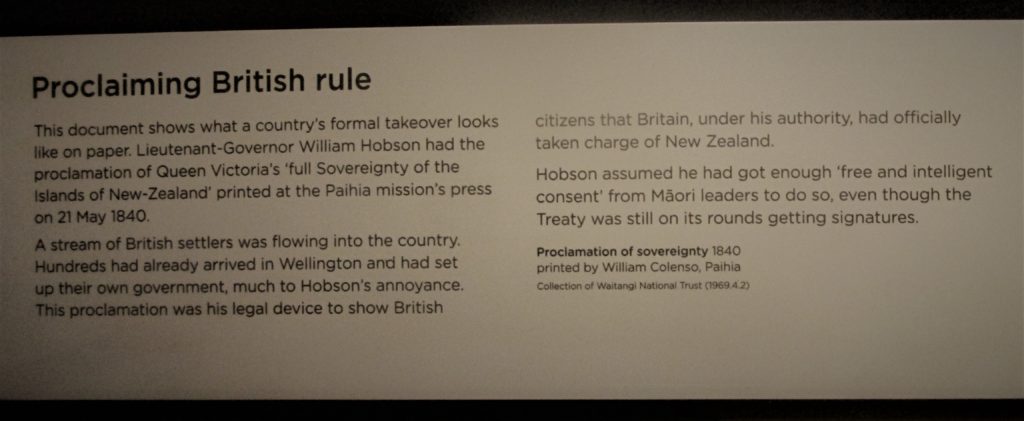
The Parchment Signing Rituals were a manifestation of the element of Preemption/European Title wherein speed was weaponized to gain jurisdictional space, despite the British Masonic Empire having no legitimate right to control Maoriland. In other words, the urgency to trick Māori into appearing to cede sovereignty in a compressed time was not only compelled by the ‘need’ to forestall the Second New Zealand Company’s foray into unregulated private land swindling, emigration and self-government, as well as possible moves by the rival French Empire to acquire sovereignty, given the presence of Bishop Pompallier. Those ‘needs’ for the Treaty Cliqué in London to instigate moves to acquire sovereignty was the endgame stage in 1839 of the Treaty Track that began to be laid in 1831 to 1833, from the time of James Busby’s lobbying and appointment as Britain’s first official to reside in New Zealand for the express purpose to make treaties with Māori.
Therefore, rather than the Waitangi Treaty affair being officially re-told as simply a series of mistakes, thoughtlessness and unfortunate callous individual agendas culminating in ‘translation errors’, such positively spun explanations disingenuously continue the clichéd tradition of a well-intended British cock-up, the endgame stage of the Treaty Track was actually the activation of long-game to takeover New Zealand by one means or another.
The clichéd tradition of a well-intended British cock-up, or of improvised duplicity in a far-flung land, in the re-telling of Waitangi history saves face for the sycophantic parasitic Pākehā and Māori élites in New Zealand, who comprise a nausea-inducing fan-base of the British Monarchy and British Establishment, and who perpetuate brainwashing narratives that belie a weird Aotearoan version of Stockholm Syndrome.
The layers of machinations underpinning the British takeover of New Zealand are still being obscured by Very Important Visitors, such as the November 2019 charm offensive of Heir Apparent to the British Throne, the Prince of Wales, or Charles of the Windsor Royal Family formally known as House of Saxe-Coburg and Gotha — with the pretense of humility, honesty and honourable highness.

Conclusions to Deep History of Waitangi: The Queen Victoria Connection
Key Finding: Queen Victoria authorized the British takeover of Aotearoa that occurred by two parallel tracks — a ‘Treaty Theatre Track’ and a ‘Colonial Law Track’ — which were innovative cunning tricks in statecraft to gain full sovereignty over an entire aboriginal and indigenous people that could never be repeated, lest the perfect crime became obvious. The decision to opt for a Treaty was pursued to save face for the Queen, by achieving the appearance of sovereignty cession to the Monarch.
The Treaty Cliqué exploited the varying aspirations of partnership with a new power, the uncertainty of the Treaty’s bearing, and the novelty of signing documents — to achieve the ruse of the Treaty Chiefs’ submission to Queen Victoria’s supreme authority.
The ‘Treaty Theatre Track’ was essentially laid from June 1831, when James Busby published a policy proposal for a British Official to make treaties with Māori in his “Memoir Relative to the Islands of New Zealand”, and was followed by the ‘Letter to King William IV of October 5 1831’ signed by 13 rangatira. This ‘Treaty Theatre Track’ was advanced by the appointment of James Busby as British Resident in 1833, and then by Busby gaining the participation of Māori to choose the Te Kara shipping flag in 1834 and by Busby conning Māori that the ‘Declaration of Independence’ in 1835 would be beneficial to the chiefs’ interests.
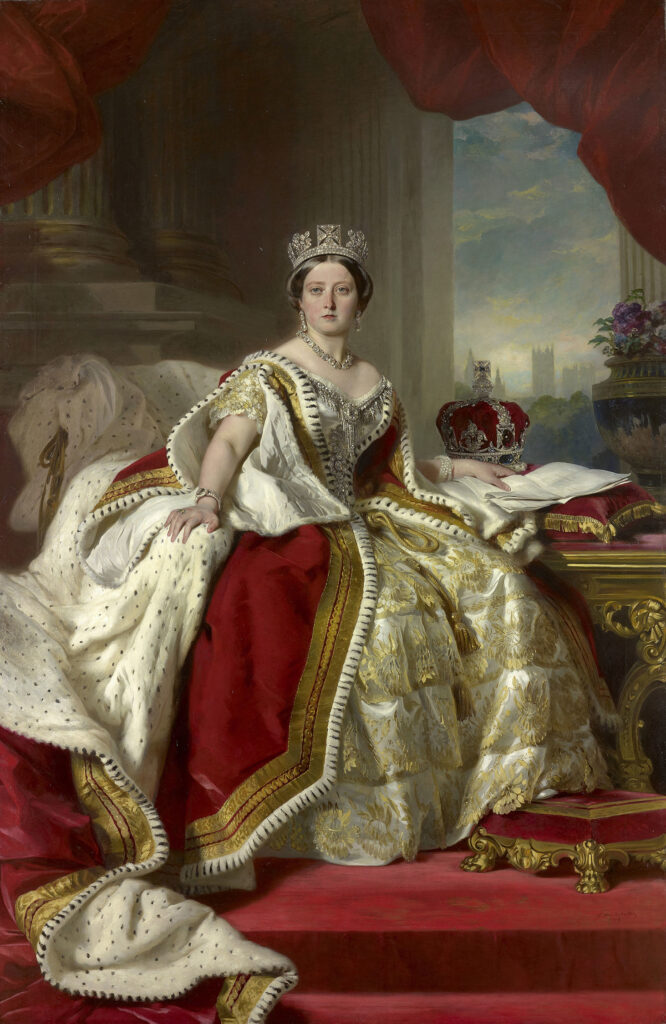
More Treaty track was laid by Captain Hobson’s Factory System plan of 1837 which proposed a treaty for settlements, and therefore marked the Royal Navy captain as an ideal candidate to treat with Māori. Then, in 1840, the Treaty Cliqué construed with the English language version, that the Treaty Chiefs had freely and consciously ceded full sovereignty to Britain.
Meanwhile, when Great Seal of the United Kingdom used to approve the Letters Patent of Boundary Extension, dated June 15 1839, the British Government brazenly expanded the jurisdiction of New South Wales to include New Zealand, and thereby initiated the final stage of the ‘Colonial Law Track’ as well as supplied the legal capacity to extend a Commission to make a compact with ‘Māori’. This Colonial Law Track had been set in motion by the King George III-sponsored Endeavour Voyage that resulted in Freemason Captain Bro. James Cook creating an incomplete annexed title, when he claimed possession of New Zealand in 1769 and 1770. Queen Victoria sealed the completion of the takeover of New Zealand when she signed the Royal Charter for Severance on 16th November 1840, thereby erecting N.Z. as a separate colony.
Some chiefs detected the game in play, even if they did not fully comprehend the dimensions of the ruse.
Chief Makoare Taonui — who had been aboard the Hokianga-built barque, Sir George Murray when it was seized at Port Jackson in 1830 — pointed out the incremental steps with which the British Crown had gradually solidified its position in New Zealand, when the Treaty Theater Tour reached Mangungu, Hokianga on 12 February 1840. Chief Taonui recounted the presence of the Protestant missionaries, followed by Busby’s initiative to entice the Māori chiefs to choose a national flag for Māori shipping in 1834, the pacification of Māori through gift-giving and then the arrival of Royal Navy Captain William Hobson to treat. What Chief Taonui couldn’t have known, however, was those new norms that had been anchored to draw the Māori chiefs incrementally into the British Empire’s jurisdiction, were in fact Discovery Doctrine rituals practiced by European nations, and the United States, to lay claim to aboriginal and indigenous territories in the ‘New World’.
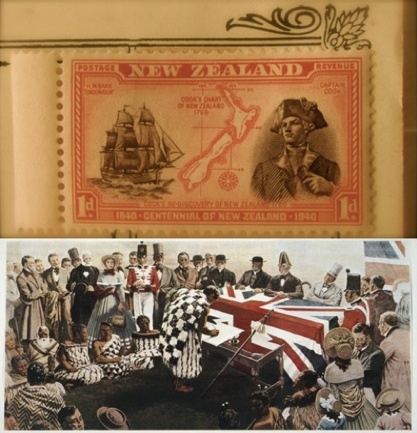
The Discovery Doctrine, which was ‘transported’ on both parallel tracks — the shorter ‘Treaty Theatre Track’ first laid in 1831 by James Busby and a ‘Colonial Law Track’ first laid in 1769-1770 by Captain Cook — actually ‘intersected’ at Waitangi and other signing places. Prior to, during and after the Treaty signings, the letters patents, proclamations, new commissions, and legislation acted like ‘switches’ to lay the Colonial Law ‘track’ that would enable Britain to gain supremacy without these tricks being comprehensible to Māori at the time — even if they learned of some of them.
At Waitangi, time had been weaponized to gain control over a new territorial-jurisdictional space for the British Masonic Empire. Therefore, the ‘Endeavour Voyage’ in 1769-1770 was New Zealand’s first travelling theatre and the Waitangi Treaty Theatre was the second major stage production conjured to distract, divide and defeat.
Like all criminal plots, not everything went according to plan.
The four clanker moments during Waitangi Treaty Theatre required improvizational theatre to mask the deceptions in play. Had any one those four clanker moments escalated into full disclosure, the ruse would have been up.
During the first clanker moment, Reverend Henry Williams blustered his way through translating the challenge of Chief Te Kemara who had complained that the Anglican missionary Williams family had swindled him out of his land. Ironically, Chief Te Kemara was of Ngāti Rāhiri hapū — whom were hosting the hui since the meeting was on their land that the Reverend’s fellow land-swindling friend, James Busby, exclusively claimed.

Chief Te Ruki Kawiti’s clanker touched upon the matter of sovereignty and he who told Hobson to leave, but his stance lacked support. Chiefs Hone Heke, Tamati Waka Nene, and his older brother, Patuone made favourable speeches to Hobson about becoming governor.
Royal Navy Captain William Hobson managed the third clanker moment by getting the Protestant missionaries to write the so-called Fourth Article of the Treaty, following French Catholic Mission, Bishop Jean Baptiste Pompallier, politically astute interjection to ask if there would be tolerance for diverse religious teachings under the treaty.
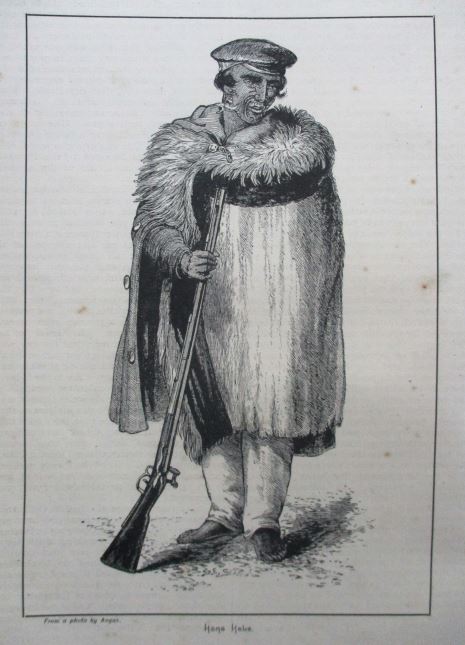
When Church Missionary Society (CMS) printer William Colenso interrupted the moment when Chief Hōne Heke Pōkai got up to sign, to ask Captain Hobson if the “Native chiefs” understood the treaty, this fourth clanker also failed to draw any major defections from the Treaty Cliqué. Because no-one — not even Colenso himself dared to sling a wrench in the gears of the Treaty Parchment Contraption Engine, the name of Imperial Elephant in the Waitangi Treaty Theater Tent remained unidentified by the Treaty Chiefs: Supreme Sovereign.
The refusal of paramount chief Mananui Te Heuheu Tūkino II, of the Ngāti Tūwharetoa Confederation in the central North Island to sign Te Tiriti o Waitangi, in part, demonstrates that had missionaries been as forthright as Anglican missionary Thomas Chapman — far less rangatira would likely have signed.
The innovative the trick of gaining full sovereignty on paper over an entire aboriginal and indigenous people — with language translation deceptions — could only work once. Because, if this innovative trick were ever repeated, the cover-story of a hastily-drafted treaty in a far-flung location amid pressure of immigrant-laden ships, land speculating syndicates, and the perennial French bogeyman showing up — would have blown up in the British Establishment’s properly-mannered volte-faces.
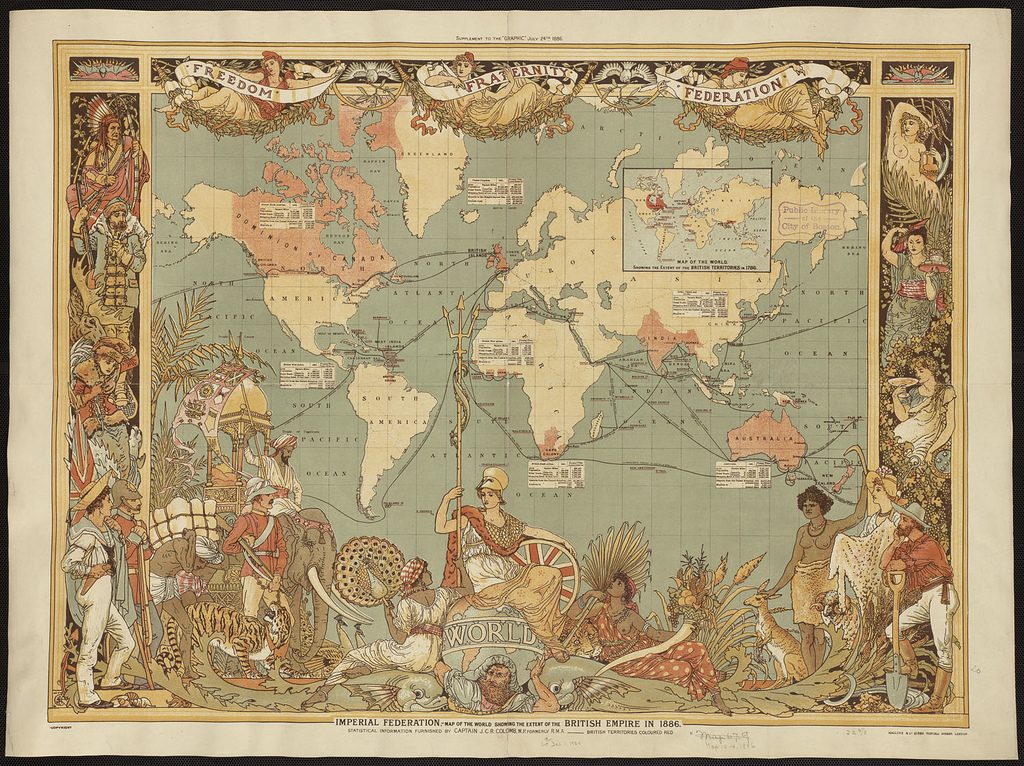
A calculated forbearance hid the fact that eventually the British Masonic Empire’s military resources would be required to transform the stealthy transference of paper sovereignty into substantive sovereignty of the soil. To mask over that inevitable eventually, the Treaty Cliqué talked up the benefits, downplayed the concerns and obscured the central deception of their mission to treat. If the ‘New Zealand Treaty Theater Company’ had fully disclosed to Māori that they sought to drastically diminish their mana, accumulate their hapū political structures into tribal units for later de-tribalization and transfer their rangatiratanga to Queen Victoria, that Treaty Cliqué would likely have lost their heads.
The Treaty signing rituals were a major visible step of a ‘long-game’ that would climax with casting unwitting Māori into wedges of war, where struggles over soil would be fought to transform paper sovereignty in substantive sovereignty.
To be more precise, the Treaty of Waitangi was a manifestation of the Doctrine of Discovery element of Preemption/European Title which was the crucial mechanism for the Crown to construe conscious consent to the British Crown for a monopoly over land purchases and superior land titles that could extinguish native title.
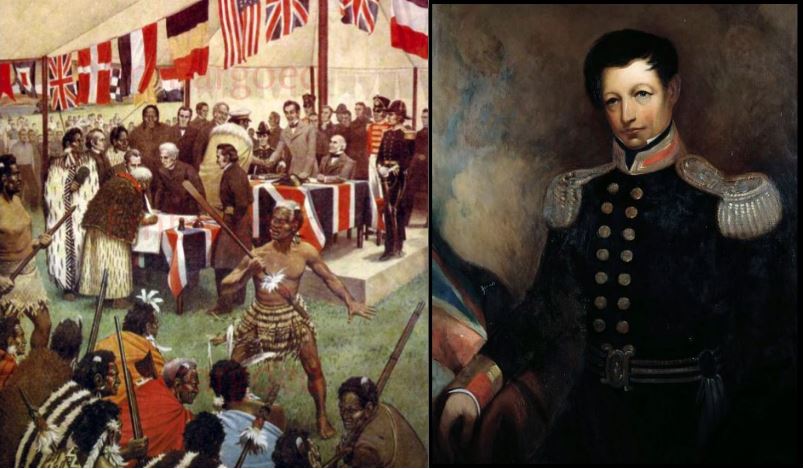
Whereas, British Resident James Busby’s flag for national shipping of 1834; his precedent-setting ritual humiliation of Chief Rete by burning his hapu’s huts, confiscating 130 acres and calling the place, Ingarani (the Māori transliteration for England); and his 1835 ‘Declaration of Independence’ were on the separate track in a continuum to the Treaty. In these ways, Busby’s activities anchored new norms to condition Māori chiefs to enter into political, legal and commercial arrangements with the British along the Treaty Track.
The setting at Waitangi on land Busby swindled in 1833 had become a potent concrete symbol by 1840. When combined with the propaganda of flags as graphic symbols, the duel of wits as active symbols of an historic day, and Captain Hobson’s performance of the line, “He iwi tahi tatou” (“We are all one people”), as a verbal symbol spoken with each signing emotionally hijack of rangatira, the potency to conform to the theater of optimism belies an Orientalist alchemy hiding the blueprint of its designs.
Since the flaggy scene took place at Busby’s Waitangi property where the Te Kaha flag had be selected in 1834 and the ‘Declaration of Independence’ was signed in 1835, the British Resident’s house had become a concrete symbol. Captain Hobson’s performance of the line, “He iwi tahi tatou” (“We are all one people”), after each signer had made a mark on the Treaty parchment, was a verbal symbol designed to emotionally hijack the rangatira into group-think submission.
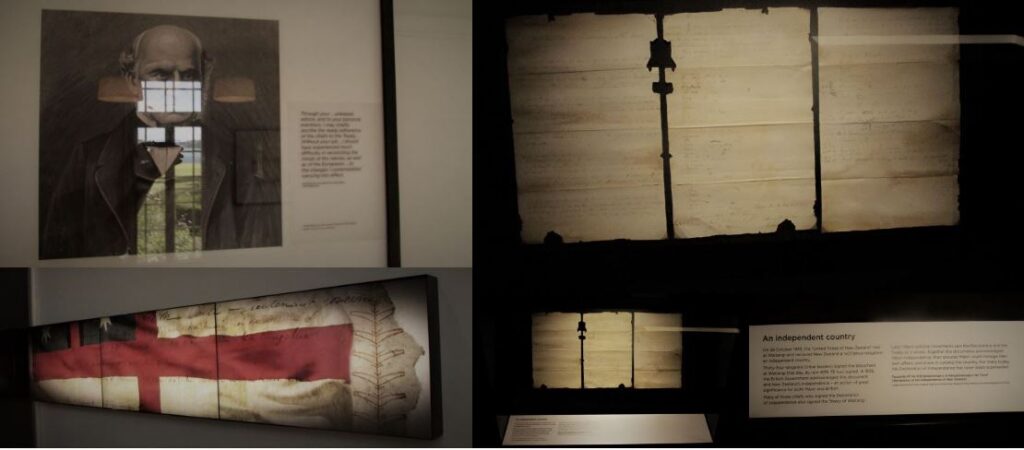
Thus, of the selection of Te Kaha flag in 1834 and the signing of the ‘Declaration of Independence’ on land. Moreover, despite the more colorful duel of words, gestures and facial expressions coming from Māori, their earnestness was mirrored by the volte-faced performances from the British side, and the reticence of the French Catholic missionaries and Americans present to spell out the true objective of the proceedings.
In spite of the clanker moments, the Treaty Cliqué’s improvised acting capitalized on the uneven playing field that underpinned the power relations between the two cultures. The act of the participants performing to the norms of their respective cultures rendered the clankers as moments where critical context was left unspoken, untranslated or unilluminated. They comprise one of the Treaty Clustered Events that reveal the subtext of the mission to swindle paper sovereignty. Those clustered events resulted in Māori being sucked into the whirlpool conjured from afar by Masonic Imperial alchemy and detected by Prophet Papahurihia after the Waitangi signings.
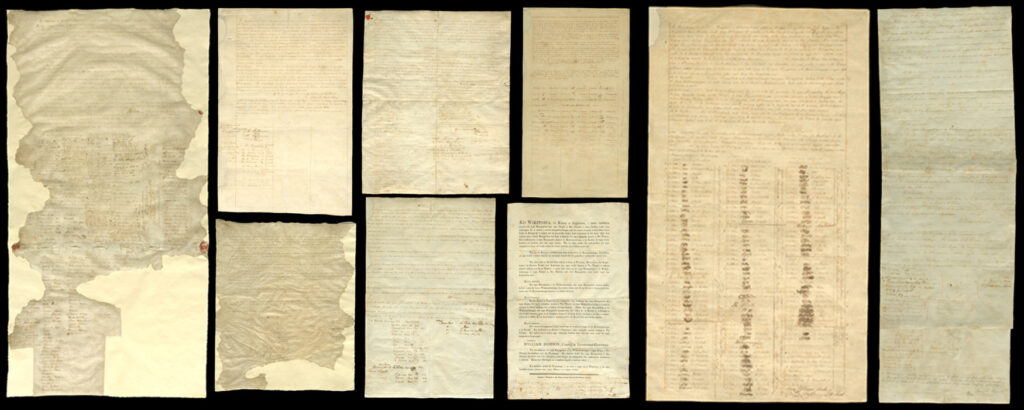
The 21-gun salute ordered by Captain Hobson on February 8th 1840 to mark the claimed cession by Treaty of northern New Zealand was another active symbol, and marked the assertion of European Title in accordance with the unspoken Discovery Doctrine.
In short, Busby manifested the path to the fiction of acquiring a colonial possession by cession, whereas Captain Cook manifested the Colonial Law Track by solidifying First Discovery. At Waitangi, and other signing places, the Discovery Doctrine paradigm intersected. Captain Hobson’s task was to draw the two tracks together, tie their hidden wiring into a Gordian Knot, and dispatch the paperwork back to England for the Queen to seal forever.
Therefore, the British takeover of New Zealand by two parallel tracks — a ‘Treaty Theatre Track’ and a ‘Colonial Law Track’ — were innovative cunning tricks in statecraft to gain full sovereignty over the entire aboriginal and indigenous peoples that had never been achieved and could never be repeated, lest the perfect crime became obvious. This truth has been concealed because the profundity of its impacts not only remains far-reaching, deep and brutal.
The 1840 Waitangi Treaty was engineered to be a literary device, which was construed to be an accurate translation of the Māori language version, te Tiriti o Waitangi. The touring Waitangi Theater production was designed to distract from the legal moves made along the Colonial Law Track. The 1840 compact was a red herring mechanism to sponsor logically fallacious arguments to divide and defeat. The intention was to lead its audience to a false conclusion, whom would not comprehend the Waitangi Treaty Theater was, in effect, a simulation produced to create a copy of reality to eventually forge subject race pacification.
This profound truth, which was the linchpin of the scheme, is also the Achilles Heel of the British Monarchy, since the plan to take possession and sovereignty via the Colonial Law Track compelled hatching a plot that embroiled the un-Smurf-like Queen Victoria in abetting a face-saving theater production designed to construe that the Aborigines of New Zealand had wittingly ceded all rights and powers of Sovereignty — forever
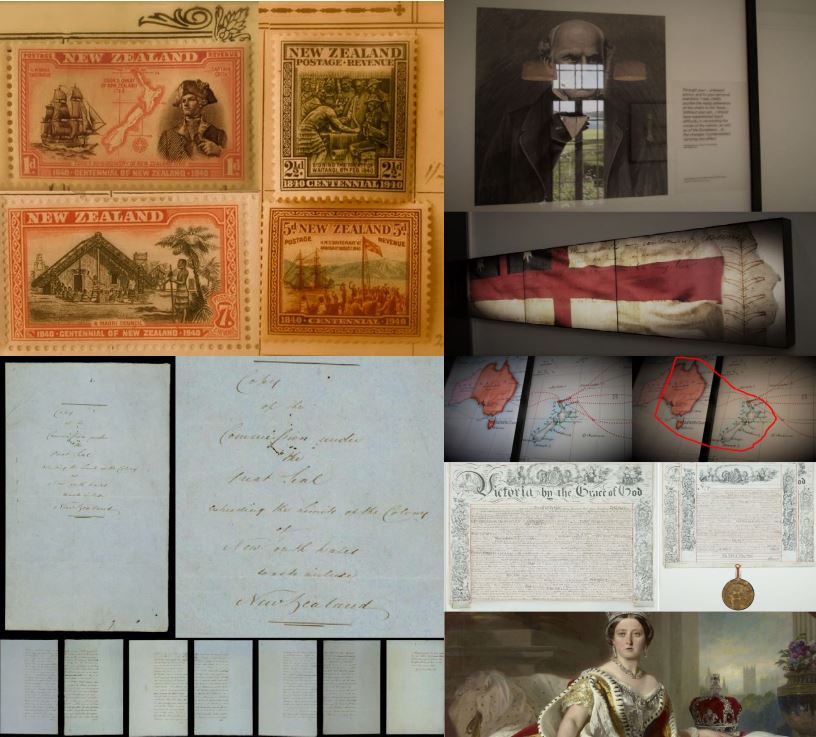
By weaponizing the one dimension that the British state could control — time — Britain’s masonic imperialists could circumvent the British Parliament by activating the Royal Prerogative Powers and thus avoid alerting other powers. The British Deep State had the advantage of coastal ship’s that could be deployed to get the Waitangi Treaty Tour done quickly, before too many Māori had time to realize the British were gaining paper sovereignty over the three dimensional space mapped by Freemason Captain Bro. James Cook.
Ironically, the scholarly report by the Ministry of Justice’s Waitangi Tribunal’s missed the significance of the linchpin document that not only authorized the theater to save face for the British Monarch. The Royal Charter of New Zealand, dated 16th November 1840, actually sealed the swift double-track route laid to gain paper sovereignty by a series of legal moves consistent with English Constitutional Law, along the Colonial Law Track. The irony becomes potent when the rhetoric about the Queen being written into the preamble to make the treaty more comprehendible to the rangatira, can be seen for it what it was: a cover-story.
The Queen was written into the Treaty because the Monarch had authorized the acquisition of New Zealand, effective June 15th 1839, as well as the cession by Treaty Theater with the Gipps’ and Hopbson’s commissions of July 30th 1839. The legal thrust of the compact that Colenso was alluding to, had everything to do with the circumvention of the British Parliament to annex the territory as a colony on the speedier Colonial Law Track. Because that course of action required the exercise of Royal Prerogative Powers under the Great Seal of the United Kingdom, the newly laid Colonial Law Track would need a Royal Charter at the completion of the Treaty Tour journey. The treaty theatrics were deemed politically hygienic to save face for the Monarch.
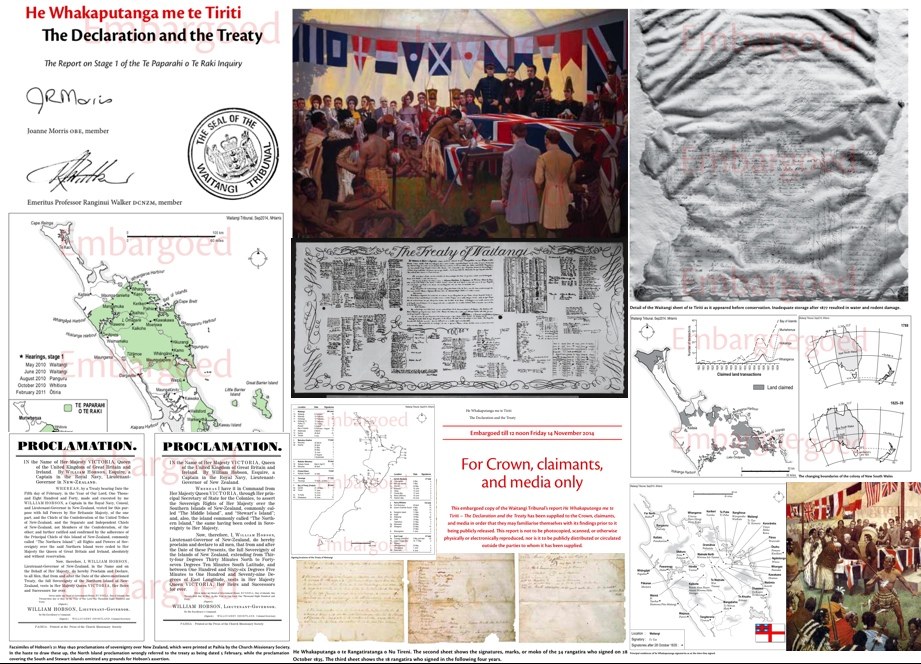
Ironically, the Chairman of the Waitangi Tribunal inquiry into the Declaration of Independence and the Treaty of Waitangi, Professor Ranginui Walker, also missed the deeper reason for Queen Victoria’s name in the preamble, and reference to Her Majesty is each article, given that he had previously recognized that the Charter of New Zealand gave the Governor powers to consolidate the ‘nominal’ sovereignty that appeared to be gained with the Treaty. But, perhaps Walker was still of the view that “the Treaty of Waitangi was the legitimate source of constitutional government in New Zealand”, as he wrote in Struggle Without End. Regardless, the Waitangi Tribunal’s inquiry missed discovery of how exactly the South Pacific archipelago had really been acquired as a colony of the British Masonic Empire.
As historian David Williams stated in 1985, the issuance of the Charter of New Zealand “was a bald assertion of power and authority.” It was also, therefore, ironic that Williams did not fully comprehend the calculus behind the machinery designed, operated and maintained by men that knew in what circumstances to apply which tools to switch tracks to erect a colony. However, the descendant of Reverend Henry Williams did sense the imperialist British Masonic State did whatever was necessary to accumulate territory or maintain the power it gained.
In 2010, David Williams presented in his paper, “The Pre-History of the English Laws Act 1858: McLiver v Macky (1856)”, that the day, 14 January 1840 had been fixed upon as the date the South Pacific archipelago became a dependent colony of the Empire. Although he did not know precisely why this date was chosen, it would appear it was fixed upon to be consistent with the Colonial Law Track, which drew on the Discovery Doctrine.
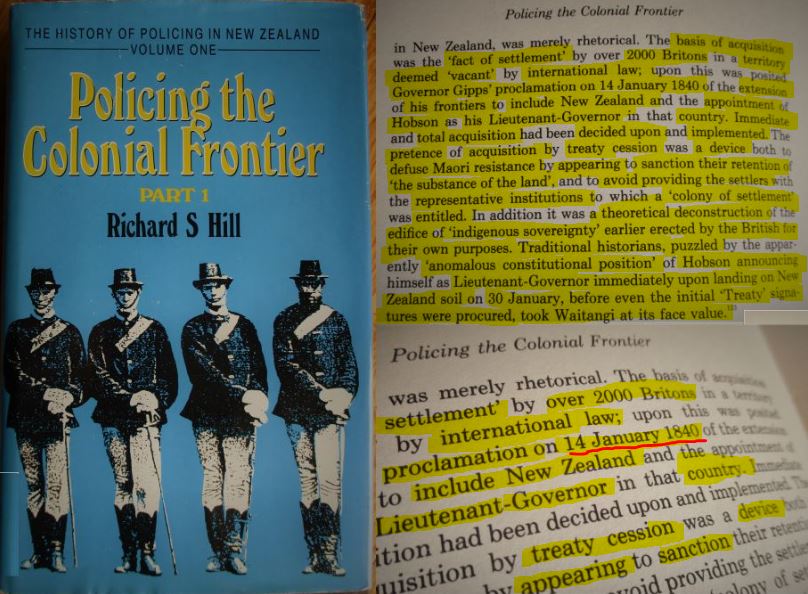
The fiction of setting date at 14 January 1840 meant the imperial voodoo performed on the Treaty Theater Track could be relegated to archives, where historians unfamiliar in the anatomy of power crimes could puzzle over why June 15 1839 was not chosen. Legislatures could point to the date that Governor Gipps issued his proclamations, rather than the date when the Great Seal of United Kingdom was used to annex New Zealand and lasso the South Pacific archipelago to New South Wales like the islands were a herd of untamed cows that had ranged too far and it was time for milking.
If historians were to draw upon scholarship in conspiracy case law, they might arrive at the view that when the British Monarch erected New Zealand as a separate colony on 16 November 1840 with the Royal Charter, it was the moment that Queen Victoria ratified the devious scheme committed to on June 15 1839. The Queen’s ratification was an unwitting misdeed of Her Majesty’s prior screening action when she authorized the device of Letters Patent on 30th July 1839 for Hobson’s Commission as Lieutenant Governor in territories already, or to be, acquired in New Zealand. The Royal Charter of New Zealand was also a screening action for more unwitting misdeeds, since this sovereign device feigned to care that Maori rights to lands were not infringed upon, while empowering Hobson as Governor to authorize the wholesale purchase of wastelands and uncleared lands for development.
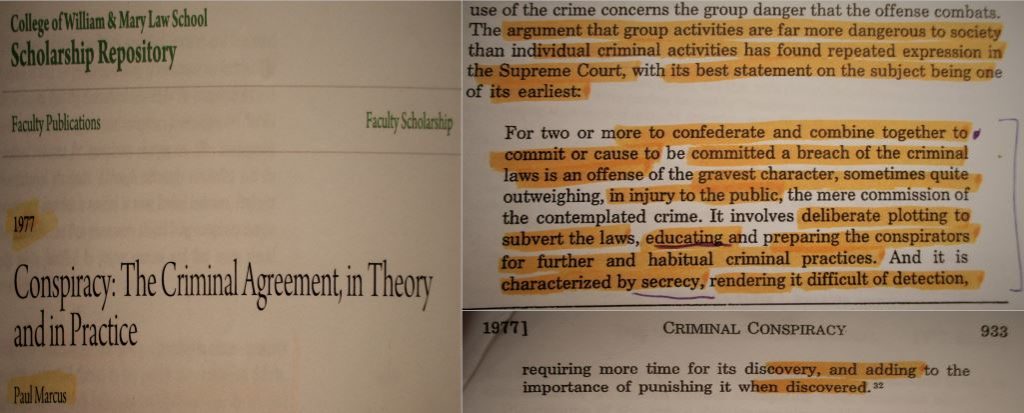
Such historians might also see a cast of principal characters performing a series of screening actions that would, in effect, author subsequent unwitting misdeeds.
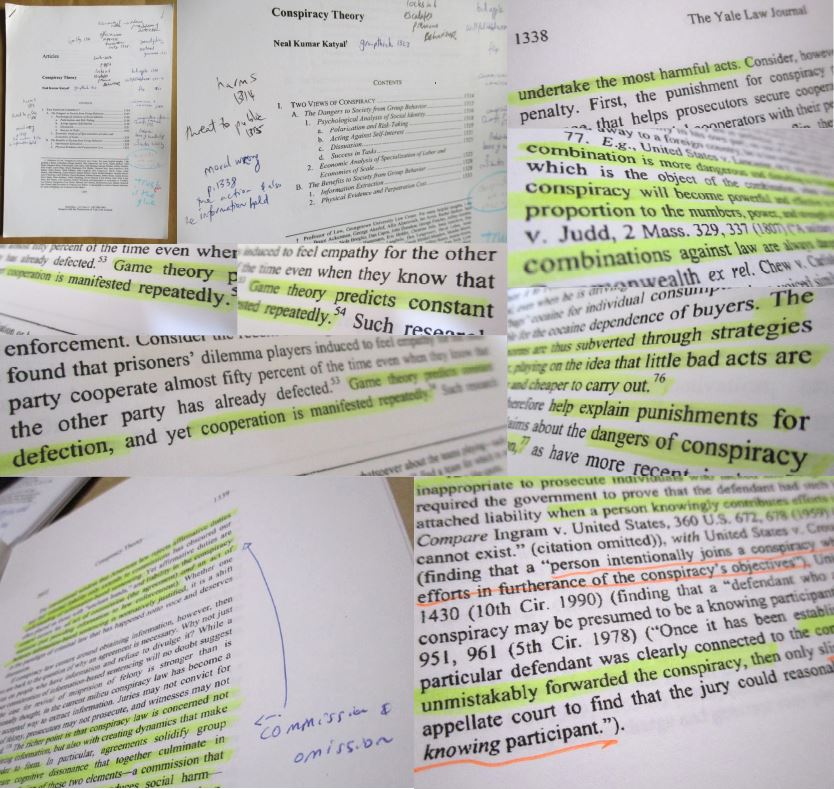
Law scholarship on political conspiracy models for how secret agreements can be made, who comprises a conspiracy and why unlikely actors collude to construct new areas of market dominance by illegal, fraudulent and repugnant means to out-compete their rival nation states, international syndicates and secret brotherhoods, or confederacies.
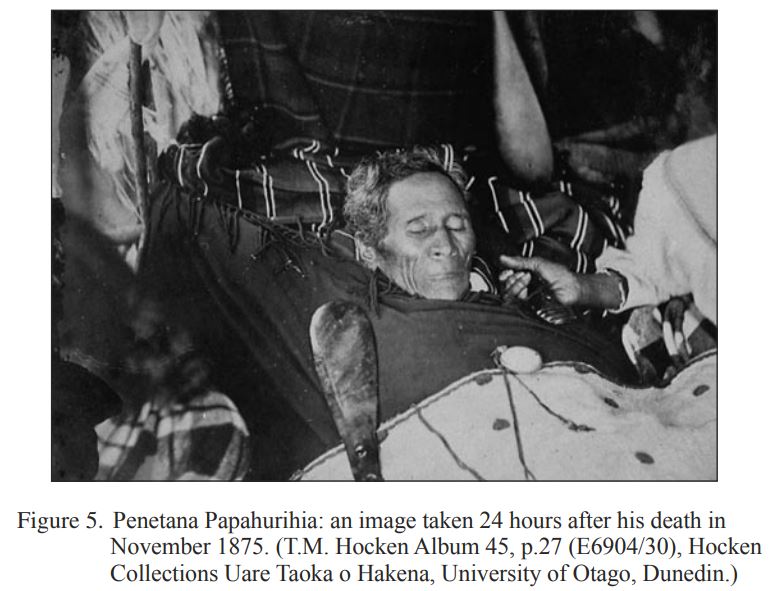
In the final analysis, the British Masonic Empire acquired the islands of Aotearoa New Zealand on the basis of occupation and wrested paper sovereignty by usurpation. With the callous trickery, an ingenious théâtre usurp d’état was orchestrated to switch between two parallel tracks, that involved a travelling Treaty Theatre Production, and which spun on a fulcrum of language translation differences, with cultural disparities between written and oral agreements.
The simulation of a sacred covenant was ‘marketed’ with the persuasive manipulation of Protestant missionaries, whose emotional hijacking acted as ‘powerful auxiliaries’ — as expected — to leverage Captain William Hobson’s direction of the Waitangi Treaty Cliqué.
This stealthy operation, authorized by Buckingham Palace, weaponized the physical dimension of time to wrest control of another territory on the grand chessboard.
But, in this instance, a perfect crime of statecraft was inflicted that could never be repeated: the novel twist of swindling full paper sovereignty from the entire aboriginal and indigenous peoples.
Absent impartial legal representation on English Constitutional Law, a neutral political strategist voice acquainted in the layered British Masonic Empire and a detached historian, whom could supply critical imperial context about the cannon powers — Māori as a tribal people were out-played. The aboriginal and indigenous peoples of New Zealand — including those that could sense machinations were afoot, and either signed with great reluctance, or point blank refused, or were never ‘consulted’ — were all drawn into an unfamiliar game of imperial chess that the British and their agents, allies and enemies had been innovating for centuries.
Thewhirlpool that Prophet Papahurihia sensed would keep Māori captured in its torgue for beyond 200 hundred years until a time when the truth would be commonly known and the legacy ofhidden tricks over-turned — has been tracked back to its occult source in ‘Emerald City’: London.
“Ostriches … are not merely careless birds.”

=======================
N.B. This version updates “Deep History Waitangi” published dated 21 January 2021.
See related: The Masonic New Zealand Wars: Freemasonry as a Secret Mechanism of Imperial Conquest During the ‘Native Troubles’
The New Zealand Masonic Revolutionary War of 1860-1872 was the consolidation stage of revolution set in motion on June 15 1839 with the Letters Patent of Boundary Extension, which established New Zealand as a dependent colony by acquisition mode of occupation.

Steve ‘Snoopman’ Edwards is a dissident journalist, who worked at indigenous broadcaster, Māori Television, for 14 years as an editor of news, current affairs and general programmes. He forged his ‘Thunk Evil Without Being Evil’ super-power while writing his ground-breaking thesis on the Global Financial Crisis (GFC), titled — “It’s the financial oligarchy, stupid”— to figure out the means, modus operandi and motives of the Anglo-American Oligarchy.
Editor’s Note: This essay is written with an awareness that there are whānau, hapū and iwi accounts, traditions and customs that may shed further light on the events re-examined here. Nevertheless, the author believes he has taken the subject of the British takeover of New Zealand in 1839-40 to the ‘next level’, from where deeper comprehension can be furnished. If we have made any errors, please contact our intern, Steve Edwards, with your counter-evidence. e: steveedwards108[at]protonmail.com
* From an English Constitutional Law perspective, the Royal Charter of New Zealand, dated 16 November 1840, would create an unchallengeable title because the British Crown’s reserve Royal Prerogative Powers were exercised. However, the wronged aboriginal and indigenous people and their ancestors could challenge the claim. If any among the Treaty Cliqué imagined Māori would ever challenge the matter in the Westminster Supreme Court, it was likely a source of mirth attended by the phrase, ‘perish the thought’.
** In the aftermath of the JFK Assassination, it became unfashionable for liberals to call-out conspiracies since so many liberal public figures feared to be seen as apologists if they called out the obvious scripting of a patsy assassin who was overtly cast as a communist with a misfit stereotype. Overtime, such liberals have become fake progressives overly caught up in identity politics that misses the sinister power relations of empire at play as New York University media professor, Mark Crispin Miller, has pointed out in 2018.
Source References:
[1] Anne Salmond. (2017). Tears of Rangi: Experiments Across Worlds, p.248. Auckland University Press.
[2] Vincent O’Malley. (2014). Beyond the Imperial Frontier: The Contest for Colonial New Zealand, p. 39.
[3] Samuel D Carpenter. (November 2009). Te Wiremu, Te Puhipi, He Wakaputanga Me Te Tiriti – Henry Williams, James Busby, A Declaration And The Treaty, p.16-17. Report commissioned by the Waitangi Tribunal. Retrieved from https://forms.justice.govt.nz/search/Documents/WT/wt_DOC_1734955/Wai%201040%2C%20A017.pdf
[4] Te Kawariki & Network Waitangi Whangarei. (2012). Ngāpuhi Speaks: He Whakaputanga o te Rangatiratanga o Nu Tireni and Te Tiriti o Waitangi. Ngāpuhi Nui Tonu Claim. Commissioned by Kuia and Kaumātua of Ngāpuhi.
[5] J. I. Hetherington. (1926). New Zealand: Its Political Connection with Great Britain, Volume I, p. 75. Dunedin: New Zealand: Coulls, Somerville Wilkie.
[6] Waitangi Tribunal. (October 2014). He Whakaputanga me te Tiriti: the Declaration and the Treaty. Retrieved from: www.waitangitribunal.govt.nz
[7] Salmond. (2017). Tears of Rangi: Experiments Across Worlds. p. 215-217.
[8] Manuka Henare, Dr Angela Middleton and Dr Adrienne Puckey. (21st February 2013). “He Rangi Mauroa Ao te Pö: Melodies Eternally New”. Te Aho Claims Alliance (TACA): Oral and Traditional History Project Number: 23161.001. Mira Szászy Research Centre, The University of Auckland Business School. Retrieved from https://forms.justice.govt.nz/search/Documents/WT/wt_DOC_50129548/Wai%201040,%20%23E67.pdf
[9] Václav Měřička. [1967]. Orders and Decorations. London: Paul Hamlyn.
[10] Salmond. (2017). Tears of Rangi: Experiments Across Worlds. p. 226-227.
[11] Hetherington. (1926). New Zealand: Its Political Connection with Great Britain, p. 75.
[12] Carpenter. (November 2009). Te Wiremu, Te Puhipi, He Wakaputanga Me Te Tiriti – Henry Williams, James Busby, A Declaration And The Treaty, p.16.
[13] Hetherington. (1926). New Zealand: Its Political Connection with Great Britain, p. 94.
[14] Salmond. (2017). Tears of Rangi: Experiments Across Worlds. p. 234.
[15] Hetherington. (1926). New Zealand: Its Political Connection with Great Britain, p. 94.
[16] Waitangi Tribunal. (October 2014). He Whakaputanga me te Tiriti: the Declaration and the Treaty, p. 129. Retrieved from: www.waitangitribunal.govt.nz
[17] Manuka Henare, Dr Angela Middleton and Dr Adrienne Puckey. (21st February 2013). “He Rangi Mauroa Ao te Pö: Melodies Eternally New”, p. 205. Mira Szászy Research Centre, The University of Auckland Business School. Retrieved from https://forms.justice.govt.nz/search/Documents/WT/wt_DOC_50129548/Wai%201040,%20%23E67.pdf
[18] Salmond. (2017). Tears of Rangi: Experiments Across Worlds, p. 234-235.
[19] Waitangi Tribunal. (October 2014). He Whakaputanga me te Tiriti, p. 131.
[20] Von Huegel Diaries quoted in: Waitangi Tribunal Report 2014, p. 131.
[21] Waitangi Tribunal Report 2014, p. 130.
[22] William Barrett Marshall. (1836). A Personal Narrative of Two Visits to New Zealand in His Majesty’s Ship, Alligator, A.D. 1834, p.107-111. London James Nisbet & Co. Retrieved fromhttp://www.enzb.auckland.ac.nz/document/?wid=402&page=0&action=null; J. H Wallace. (1890). The Early History of New Zealand: From the Earliest Times to 1840, p. 432-433.
[23] Salmond. (2017). Tears of Rangi: Experiments Across Worlds, p. 234-235.
[24] Salmond. (2017). Tears of Rangi: Experiments Across Worlds, p. 236.
[25] The Flemish force wore green crosses. See: Ottfried Neubecker. (1976). Heraldry: Sources, Symbols and Meaning. p. 66-67. Maidenhead, England: McCraw-Hill.
[26] Robert J. Miller. (2012). THE INTERNATIONAL LAW OF COLONIALISM: A COMPARATIVE ANALYSIS, p. 855-856. The Future of International Law in Indigenous Affairs: The Doctrine of Discovery, the United Nations, and the Organization of American States SYMPOSIUM. Lewis & Clark Law Review.
[27] Miller, Robert J. & Ruru, Jacinta. (2009). An Indigenous Lens into Comparative Law: The Doctrine of Discovery in the United States and New Zealand, Vol. 111, 849-918. West Virginia Law Review.
[28] Waitangi Tribunal. (October 2014). He Whakaputanga me te Tiriti, p.133.
[29] Vincent O’Malley. (2014). Beyond the Imperial Frontier, p. 41; Anne Salmond. (2017). Tears of Rangi, p. 239.
[30] Te Kawariki & Network Waitangi Whangarei. (2012). Ngāpuhi Speaks: He Whakaputanga o te Rangatiratanga o Nu Tireni and Te Tiriti o Waitangi. Ngāpuhi Nui Tonu Claim, p 59. Commissioned by Kuia and Kaumātua of Ngāpuhi.
[31] Waitangi Tribunal. (October 2014). He Whakaputanga me te Tiriti, p.136.
[32] Henare, Middleton and Puckey. (21st February 2013). “He Rangi Mauroa Ao te Pö: Melodies Eternally New”, p. 210.
[33] Te Kawariki & Network Waitangi Whangarei. (2012). Ngāpuhi Speaks, p. 59.
[34] Waitangi Tribunal. (October 2014). He Whakaputanga me te Tiriti, p. 168.
[35] Matthew S. R. Palmer. (2008). The Treaty of Waitangi in New Zealand’s Law and Constitution, p. 45. Wellington, New Zealand: Victoria University Press.
[36] Palmer. (2008). The Treaty of Waitangi in New Zealand’s Law and Constitution, p. 45.
[37] Carpenter. (November 2009). Te Wiremu, Te Puhipi, He Wakaputanga Me Te Tiriti – Henry Williams, James Busby, A Declaration And The Treaty, p.48.
[38] Salmond. (2017). Tears of Rangi, p.244
[39] Palmer. (2008). The Treaty of Waitangi in New Zealand’s Law and Constitution, p. 46. Wellington; NZ: Victoria University Press.
[40] Dom Felice Vaggioli. (2000 [1896]). History of New Zealand and its Inhabitants, Vol. II. Dunedin, NZ: University of Otago Press; Tony Simpson (1986). Te Riri Pakeha: The White Man’s Anger. Auckland, NZ: Hodder and Stoughton; James Belich (1998). The New Zealand Wars: And the Victorian View of Racial Conflict.
[41] Snoopman. [25 April 2017] The Masonic New Zealand Wars: Freemasonry as a Secret Mechanism of Imperial Conquest During the ‘Native Troubles’. Retrieved from https://snoopman.net.nz/2017/04/25/the-masonic-new-zealand-wars/
[42] Matthew Wright. (2019). Waitangi: A Living Treaty, p. 18.
[43] The English language version was wrongly registered in London on 15 October 1840 as a translation of the Māori language version. Claudia Orange. (1987). The Treaty of Waitangi, p. 85.
[44] Rev Henry Williams was well aware of the imperfections in the translation. “If Williams had used the terms ‘ko te kingitanga ko te mana’ (as he did in He Wakapūtanga) to translate ‘sovereignty’ in Ture 1 of te Tiriti, and asked the rangatira to cede these powers to the British Crown, it is almost certain that they would have been angry and affronted, and that the negotiations would have failed. Instead, he couched the cession to Queen Victoria as a tuku or release of ‘kāwanatanga”, stated Anne Salmond. Waitangi Tribunal. (October 2014). He Whakaputanga me te Tiriti: the Declaration and the Treaty, p. 464. Moreover, the comparative shortness of the First and Second Articles in the Māori version shows the inadequacy since Māori translations of English uses more words.
[45] Emily Blincoe. (2015). “The Myth of Cession: Public Law Textbooks and The Treaty of Waitangi”, p. 8-9. Faculty of Law, Victoria University. Retrieved from: http://researcharchive.vuw.ac.nz/xmlui/bitstream/handle/10063/5021/paper.pdf?sequence
[46] Keith C. Hooper and Kate Kearins. (November 1, 2003). “Substance but not form: capital taxation and public finance in New Zealand, 1840-1859”. Retrieved from https://doi.org/10.1177/103237320300800206
[47] Anne Salmond. In: Waitangi Tribunal. (October 2014). He Whakaputanga me te Tiriti.
[48] The Waitangi Tribunal’s findings are consistent with Ngāpuhi Speaks, published in 2012. See: Te Kawariki & Network Waitangi Whangarei. (2012). Ngāpuhi Speaks: He Whakaputanga o te Rangatiratanga o Nu Tireni and Te Tiriti o Waitangi. Ngāpuhi Nui Tonu Claim. Commissioned by Kuia and Kaumātua of Ngāpuhi.
[49] Claudia Orange. (1987). The Treaty of Waitangi, p. 81. Wellington, New Zealand: Allen & Unwin Port Nicholson Press.
[50] Mark Hickford. (2011). Lords of the Land: Indigenous Property Rights and the Jurisprudence of Empire, p. 102. Oxford University Press.
[51] Peter Low (2011). Bishop Pompallier and Te Tiriti. In: The French Place in the Bay of Islands, p. 122. Mātou Matauwhi.
[52] Anne Salmond (2017). Tears of Rangi, p. 205-206.
[53] Vincent O’Malley. (2014). Beyond the Imperial Frontier, p. 144, 146.
[54] Fletcher, Ned; Elias, Rt Hon Dame Sian — “A Collusive Suit to ‘Confound the Rights of Property Through the Length and Breadth of the Colony’?: Busby v White (1859)”. [2010] VUWLawRw 30; (2010) 41(3) Victoria University of Wellington Law Review 563. Retrieved from http://www.nzlii.org/nz/journals/VUWLawRw/2010/30.html
[55] The Snoopman. (December 3, 2019). Royal Landlord Possession Rituals. Snoopman News. Retrieved from https://snoopman.net.nz/2019/12/03/royal-landlord-possession-rituals/
[56] Richard S. Hill. (1986). Policing the Colonial Frontier: The Theory and Practice of Coercive Social and Racial Control in New Zealand, 1767-1867– Part One, p. 88-90. Wellington, New Zealand: Historical Publications Branch Department of Internal Affairs.
[57] A. Foden. (1938). Constitutional Development of New Zealand in the First Decade (1839-1849). Wellington, New Zealand: L. T. Watkins Ltd.
[58] J. I. Hetherington also stated in New Zealand: Its Political Connection with Great Britain Volume I, that in a Return of 20th February 1845, which listed colonies of the British Empire, New Zealand’s entry stated the country was “Acquired by Settlement , 1839”. p. 139.
[59] N. A. Foden.(1965). New Zealand Legal History (1642-1842). Wellington, New Zealand: Sweet & Maxwell (N.Z.) Ltd.
[60] Builders of Empire is a propagandist work that takes its audience down an identity politics sidetrack to show how Freemasons lived up to their cosmopolitan ideology when it came to inclusiveness, or otherwise, toward indigenous peoples and former slaves in the colonies, or in their exclusion of women and Catholics from Freemason lodges in the 130 year period of imperial expansionism examined.

